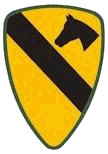 Attack of the Killer Bees: the return of the Air Cavalry
Attack of the Killer Bees: the return of the Air Cavalry
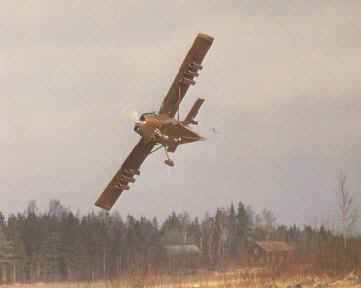
"The obstacles to any simplification may seem insurmountable, and the reasons for more complexity are many and powerful. But if we permit this Frankenstein of complexity to continue to work at its current plodding, insidious rate, it will slowly overwhelm us to impotency".
-Ed E. Heinemann, Famed Designer of the B-26 Invader, A-1 SkyRaider and A-4 SkyHawk, Douglas Aircraft Company
 youtube.com/my_playlists?p=04543D55154D78FC
youtube.com/my_playlists?p=04543D55154D78FC
 When you consider we had to stop the combat air patrols over American cities because the 24/7/365 toll was becoming too great on our overly complex nation-state war (NSW) fighter-bombers, you wonder why most of our simpler, fuel-efficient, long loiter time, armored A-10s are sitting in storage in the Davis-Monthan AFB desert while unarmored, thin-wing F-16s are trying to gunstrafe fleeting, Sub-National Conflict (SNC) rebels in Iraq and getting shot down or having their pilots fly them into the ground via target fixation? The day that weapons system complexity-for-doomsday-NSW-scenarios-that-MICC-TT-racketeers love would make us impotent has already arrived! What is needed in NSW is different than what is needed in SNCs; in the former you want to MAXIMIZE violence to get the opposing side's military to quit and the latter we want crime to not pay by SMOTHERING VIOLENCE so rebels will "get a life" and go back to constructive civilian occupations. Killing civilians with unbridled violence because we use too-large NSW platforms makes more rebels. A PROFESSIONAL U.S. military would understand this and resist the ego/$ cash bribes from the MICC-TT racketeers; a BUREAUCRACY would succumb to these corruptions.
When you consider we had to stop the combat air patrols over American cities because the 24/7/365 toll was becoming too great on our overly complex nation-state war (NSW) fighter-bombers, you wonder why most of our simpler, fuel-efficient, long loiter time, armored A-10s are sitting in storage in the Davis-Monthan AFB desert while unarmored, thin-wing F-16s are trying to gunstrafe fleeting, Sub-National Conflict (SNC) rebels in Iraq and getting shot down or having their pilots fly them into the ground via target fixation? The day that weapons system complexity-for-doomsday-NSW-scenarios-that-MICC-TT-racketeers love would make us impotent has already arrived! What is needed in NSW is different than what is needed in SNCs; in the former you want to MAXIMIZE violence to get the opposing side's military to quit and the latter we want crime to not pay by SMOTHERING VIOLENCE so rebels will "get a life" and go back to constructive civilian occupations. Killing civilians with unbridled violence because we use too-large NSW platforms makes more rebels. A PROFESSIONAL U.S. military would understand this and resist the ego/$ cash bribes from the MICC-TT racketeers; a BUREAUCRACY would succumb to these corruptions.
 youtube.com/watch?v=9ZKiuZkSHdI
youtube.com/watch?v=9ZKiuZkSHdI
Carlton Meyer in his superb "Pegasus Air Cavalry" concept using micro-helicopter gunships [g2mil.com/aircav.htm] hits on the essence of what we need for 21st century combat, where we have gone wrong and how we can maintain a simpler, more robust airmobile force to act as a CAVALRY ahead of the main body in NSW and to do the lion's share of the work in SNCs. When we first had helicopters like the Bell Model 47 (OH-13 in U.S. Army use, HTL-4s in USMC use) below in the Korean War, they were simple, small machines easily transported by trucks and large airplanes to the battlefield where they were embedded with ground units and did not need their own airfields.
How We Have Gone Wrong?
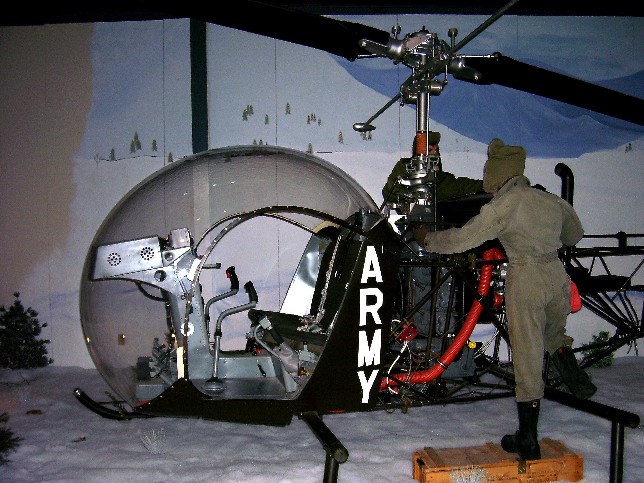
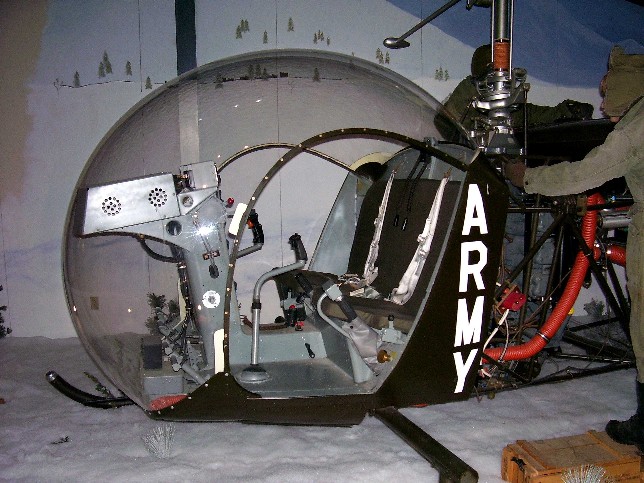
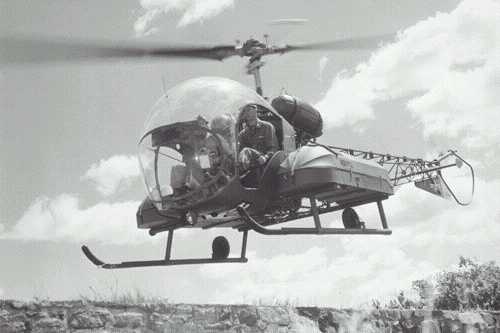
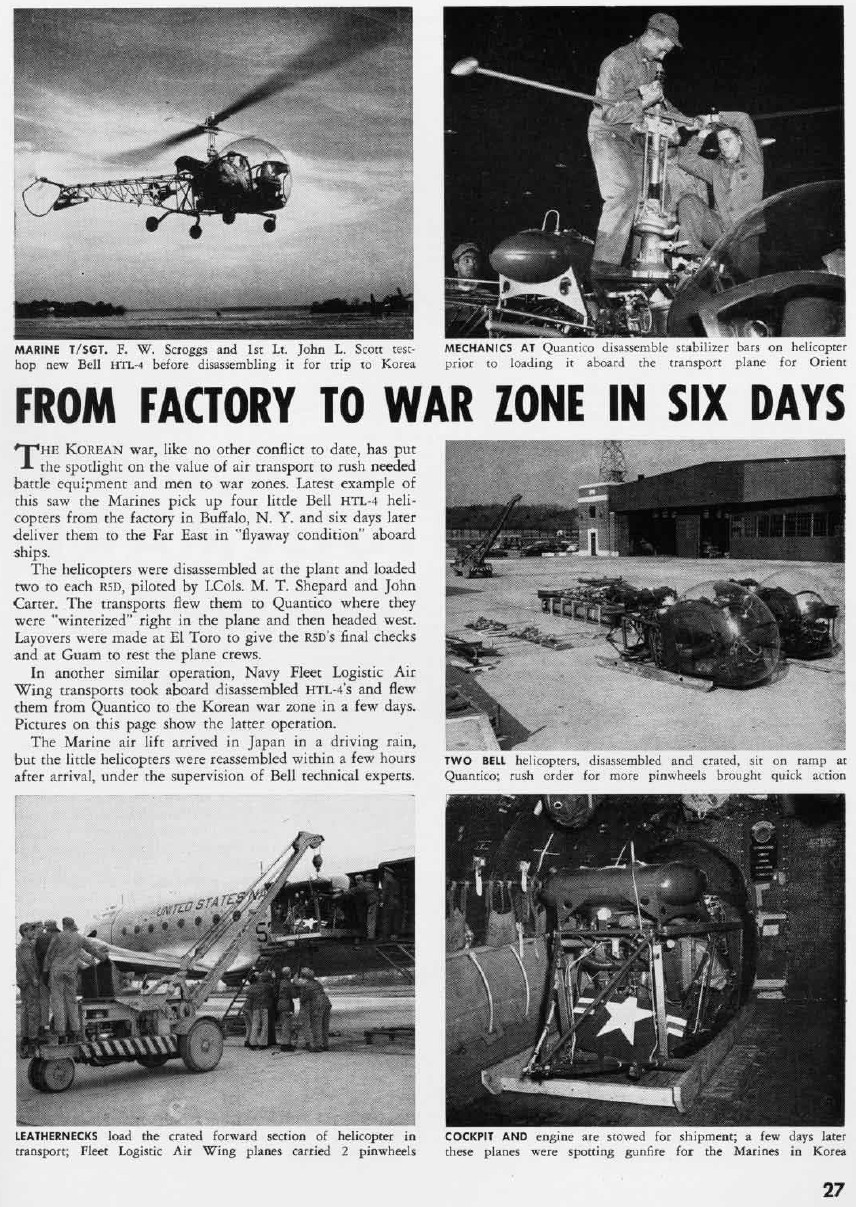
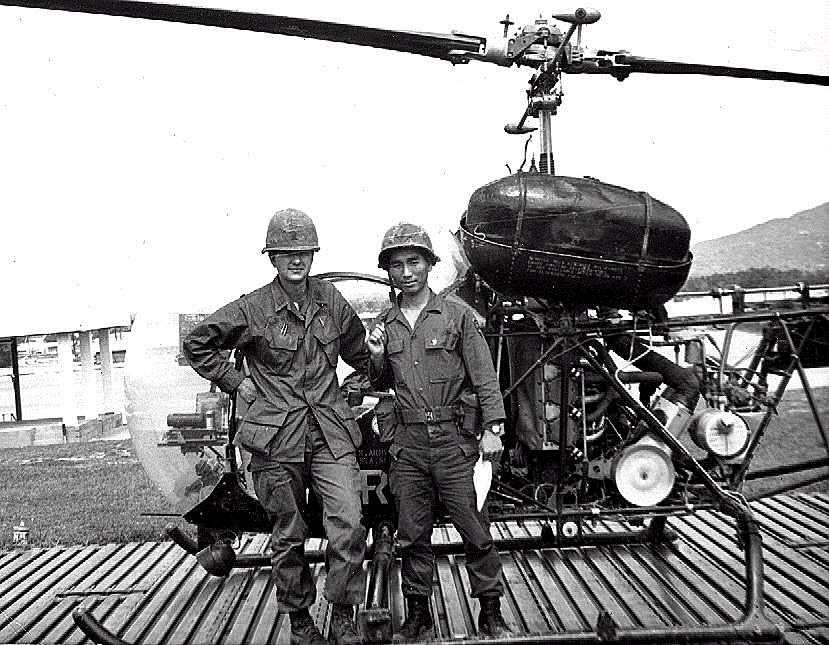
NEW VIDEO: Meet the Air Mobile 1st Cavalry Division!
Since WWII, the U.S. Army has not had a CAVALRY BRANCH to perpetuate by a powerful constituency general purpose mobile forces. To work around General Herr who didn't want to give up the animal horse, Armor Branch was created without a doctrinal foundation and has since drifted into exalted platform centricity instead of battlefield functionality. Armor branch with heavy, defensive 70-ton M1 tanks wants to joust with mirror images of itself. So while Carlton's concept of making the 1st Cavalry an Air Cavalry Division again is a vital idea, there is no one in the U.S. Army who will fight for it (no Cavalry Branch).
You might say, Aviation Branch would want a 1st Air Cav Division?
Not so.
Aviation Branch has also drifted into platform-centricity to exalt itself as a branch again without a clear battlefield doctrinal function. The best way to exalt the helicopter and their branch is to make it the largest, most budget-hogging platform possible that kills enemy tank platforms; ie: the AH-64 Apache helicopter. Because Aviation Branch will look at Meyer's proposal at the platform level instead of the battlefield functional level, they will oppose it because its "not enough helicopter" for them and their bureaucratic agenda, while citing exalted platform survivability technotactical issues. In other words, flying a micro-helicopter is "beneath" them and not "sexy" enough. However, all of the active protective measures that can be applied to large platform helicopters can be applied to micro-helicopters except equivalent heavy ballistic protection (armor) from small-arms fire since micro helicopters don't have large amounts of power/payload.
Of course, the Germans were the first to consider swarms of 1-man helicopters as a means to get infantry across the battlefield.
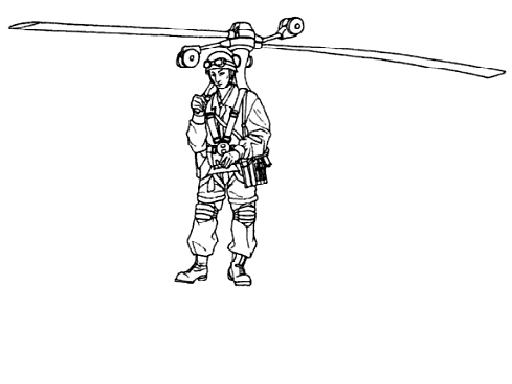
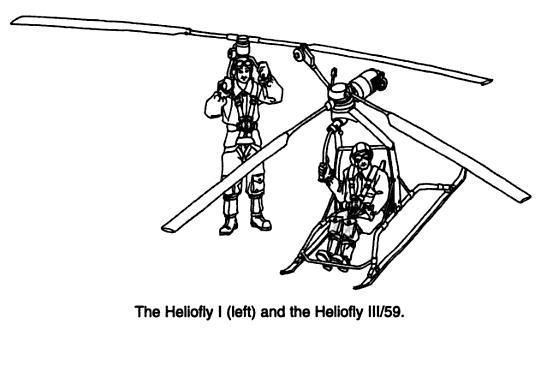
While the Germans were resource-strapped, after the war others with more time and thought were able to take the concept further.
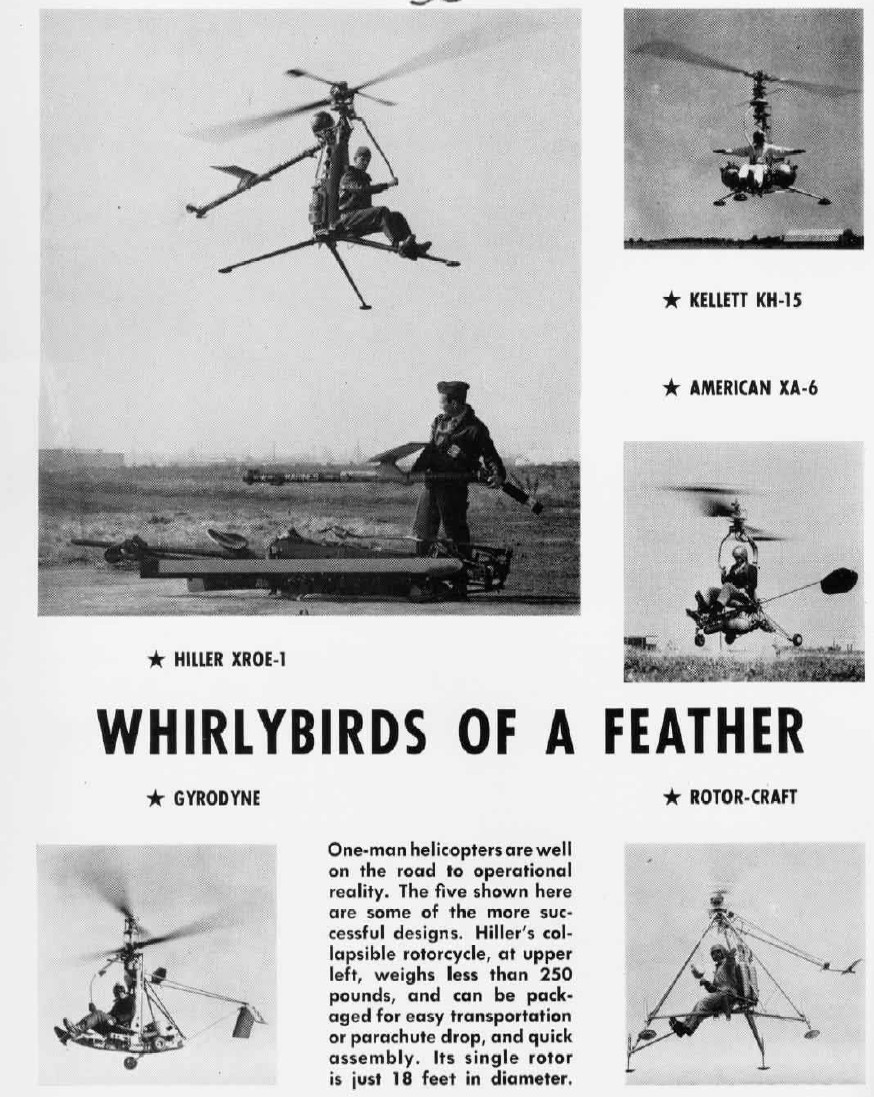
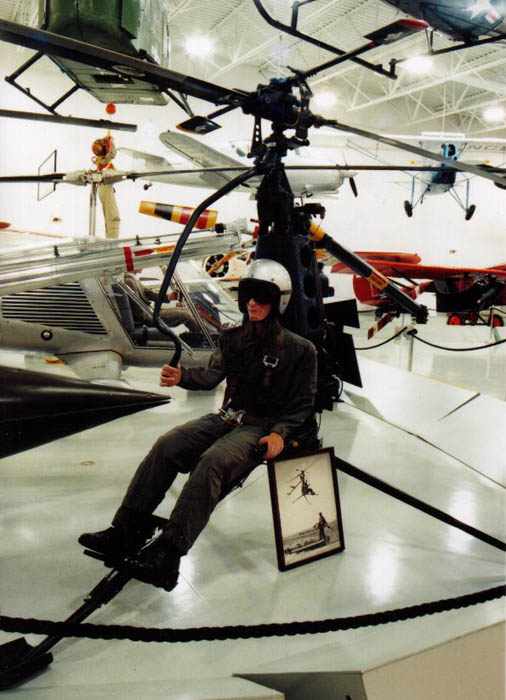
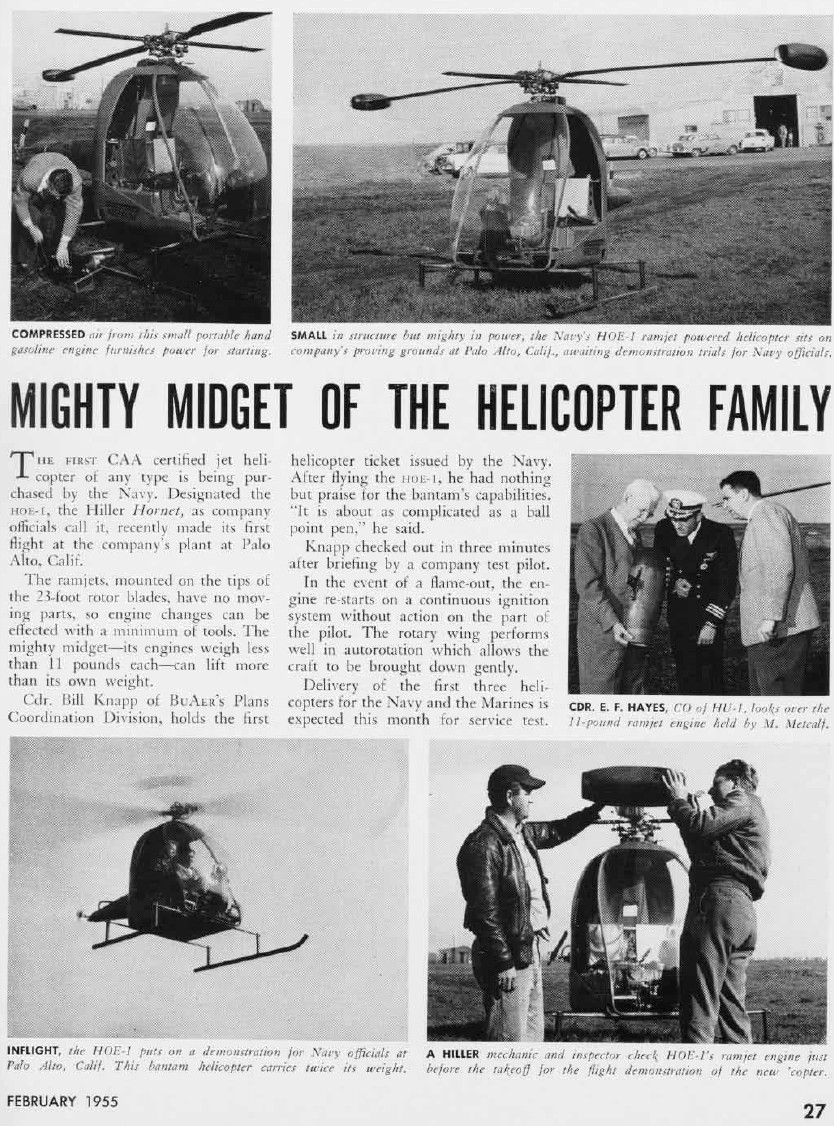
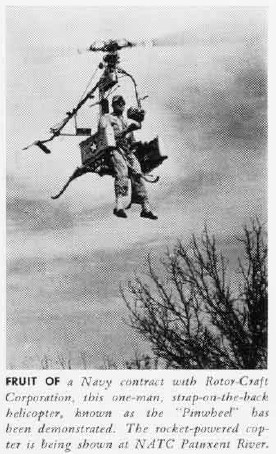
In the 1950s, the U.S. military considered a micro-helicopter "killer bee" scout concept only to choose the work-around-it larger Huey turbine helicopter. Helicopters got bigger and bigger and more complex.
usmc.mil/directiv.nsf/6c683984fd1e09cc85256c75006e6395/879f4a9e387e9d8c85257169006d69e0/$FILE/Marines%20and%20Helicopters%201946-1962%20%20PCN%2019000306900.pdf
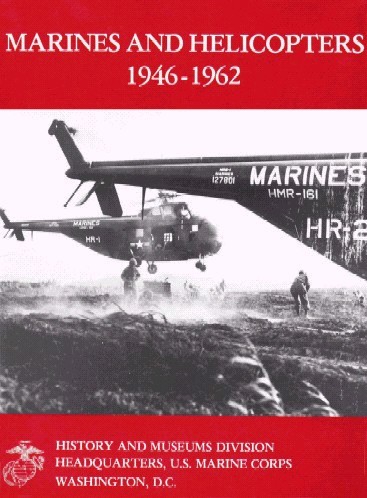
EXCERPTS:
One-Man Helicopters * [35]
Other projects, not as successful as those which have been mentioned, were subjected to lengthy and detailed evaluation. The marine corps sought a wide range of helicopters capable of fulfilling nearly every requirement of the ground commander. The smallest size helicopter to undergo marine corps evaluation was the one-man helicopter. It was this project the marine corps actively pursued for over an eight-year period and was seen originally as some sort of "pinwheel" which could be strapped to a man 's back and would be capable of transporting him short distances. The concept was translated in 1952 into an operational requirement (AO-17503), when the Commandant apprised the Chief of Naval Operations of the marine corps' need for a one-man helicopter.
General characteristics of this device were:
1. Capacity-One man with combat equipment (240 lbs )
2. Operating Range-10 to 15 miles
3. Weight-50 to 75 lbs (one man portable)
4. Endurance-15 minutes
5. Speed-30 mph
6. Capable of autorotative landings
7. Require minimum training by nonpilots
8. Inexpensive
9. Packaged in a one-man load and capable of being readied for flight by one man in not more than five minutes.* The contents of the following subsections were condensed and taken exclusively from a study on marine corps helicopter requirements prepared by the T&T Board, MCLFDC, Quantico, dated 2 May 1961.
35. MCLFDC, T&T Board Report : marine corps helicopter requirements, project #70-59-09, dtd 2 May61, App A-1 to F-9 (CCC, MCB, Quantico) .
In order to keep one-man helicopters from becoming an aircraft inventory item, in 1954 the CNO redesignated the one-man portable helicopter as an item of equipment, called the "Rotorcycle ." In 1956 the CNO published a revised Operational Requirement AO-17505 reflecting a few changes to the original requirement which subsequently became the basis for testing several other experimental air vehicles . Of the several types tested, none proved capable of satisfying the marine corps requirements. Two mandatory requirements were that it be light enough for one man to carry and simple to operate so that no specialized training for the "driver" would be necessary. The Gyrodyne RON-1 and the Hiller ROE-1 were the most promising models but they weighed in excess of 300 pounds empty, and were tricky " aircraft " which required the skills of an experienced helicopter pilot. Other models, such as Rotorcraft's "Pinwheel, "Kellet' s "Stable Mable," DeLackner' s "Aerocycle, " or Hiller's "Flying Platform, " while easy-to-fly and maintain,
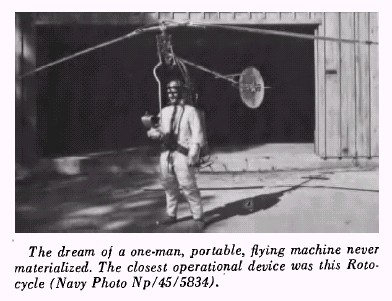
The dream of a one-man, portable, flying machine never materialized [So far]. The closest operational device was this Rotocycle (Navy Photo Np/45/5834) .
proved unacceptable because of size, a requirement for exotic fuel, or the inability to autorotate to a safe landing after an in-flight power failure. It appeared that while a valid requirement existed for some sort of small, inexpensive vehicle (not an aircraft) which would be available to the unit commander as his personal "jeep" and free him from the limitations of terrain-mobility, construction of such a vehicle would have to depend on some new technological development . Marine corps exploration in the field of simple, lightweight aerial vehicles was cancelled by the Commandant in October 1960 and the satisfaction of this unfilled requirement, therefore, would have to rely on overland transportation or the use of a utility-type helicopter.
The Selection of an Assault Support Helicopter (ASH)
At the same time the marine corps was working on the development of its heavy and medium helicopters, it also was attempting to obtain a replacement for its light helicopter fleet. A new forerunner in this category was the proposed Hiller Aircraft Company turbine-powered CAMEL (Collapsible Airborne Military Equipment Lifter).
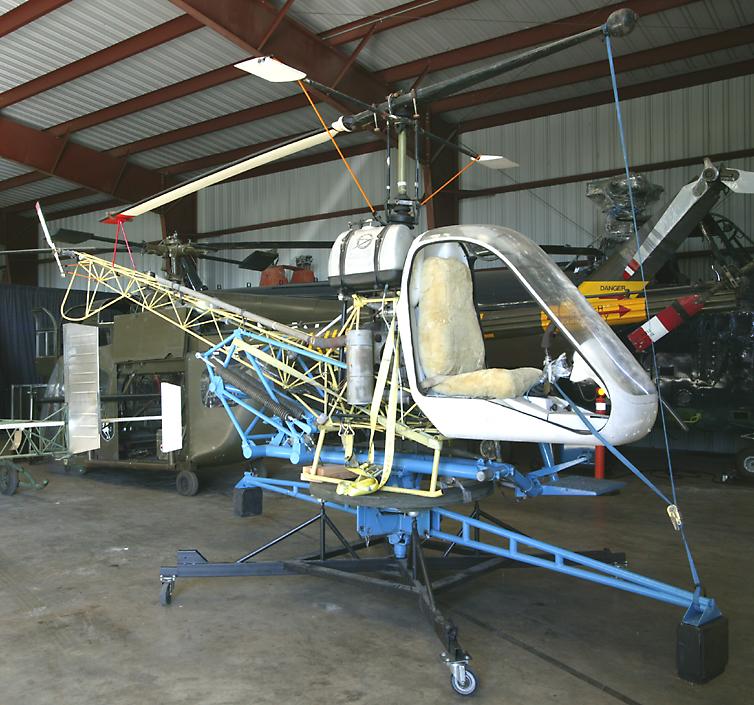
This type of light helicopter received considerable support from the Development Center and was seen as an essential element of strategic and tactical mobility during the later 1950s. It was to have the capability of being disassembled for transport by air or in any class of amphibious shipping to a combat area where it would be reassembled later and made ready for flight. It was not until 1960, though, that the marine corps began to see results of its efforts to obtain a replacement for its HOK and OE aircraft, both of which were to be completely phased out by 1965. In the past, vain attempts had been made to obtain funding for a single VTOL observation aircraft, or an ASH. It became apparent that to offset a forthcoming inventory shortage in these aircraft, immediate funding of a new program would be required. The Coordinator, marine corps landing force development activities (CMCLFDA), Lieutenant General Edward W. Snedeker, took a different view toward the headquarters proposal for the ASH. Snedeker, a veteran officer who had commanded both the 1st and 2nd marine Divisions and served as Assistant Chief of Staff, G-3 at HQMC, reiterated the position developed at Quantico. In November 1960, a proposed developmental characteristic had been sent to CMC specifying a helicopter with a 100-knot, 1,000 pound payload and 100-mile radius of action, which the Hiller's CAMEL was capable of meeting. The same specifications had been submitted earlier by the Development Center but it was now officially submitted as a proposed developmental characteristic since it was felt that AO-17503-3 (ASH) did not measure up to the requirements stated in either the marine corps landing force development center or HQMC research and development plans for that type of aircraft. A lengthy rebuttal to the concept of using one type aircraft as a replacement for the HOK and OE was also included. The letter pointed out that the Army's LOA requirement was within the framework of an aircraft "family " completely different than that envisioned for the marine corps. General Snedeker emphasized that the marine corps needed a separate replacement for each, a 100-knot ASH for the HOK and an STOL (short takeoff and landing) light attack-reconnaissance aircraft to replace and expand the mission of the OE aircraft. [20]
In March, the following year, the CNO suggested to BuWeps that a limited competition be conducted to select an aircraft to fulfill the marine corps ASH mission. He stated that once a satisfactory selection and model evaluation had been made, every effort would be expended to effect necessary programming of funds within the FY 1962 budget to permit the accelerated purchase of operational aircraft. Soon thereafter, BuWeps conducted a study of those helicopters under consideration for selection as an ASH. The results revealed that each prospective model failed to qualify because of one or more deficiencies in size, cost, capability, or simply lack of overall qualification. It became apparent that a compromise had to be made in regard to selection of an aircraft prototype [21].
Time was now an important factor since the HOKs were programmed for replacement in less than two years as they had been in the VMO squadrons continuously since May 1956. The Deputy CNO (Air), Vice Admiral Robert B. Pirie, had stated earlier that it would be in the best interest of the marine corps to accept the burden of increased size and cost of an operationally qualified model rather than gamble on a reduced capability or a possible protracted and costly developmental program such as the Hiller CAMEL or Army 's LOH. He mentioned that the potential of an existing trainer, or light utility aircraft, might well be considered by the marine corps planners as its ASH. The Deputy CNO also recommended to BuWeps that a request for proposal be issued as soon as possible with reasonable latitude in consideration of helicopter capability of performing the ASH mission. "The imperativeness, " Admiral Pirie said " of positive action leading to a selection of this increasingly critical subject cannot be overemphasized." [22]
BuWeps acted promptly to Admiral Pirie's directive. On 16 October 1961, requests for bids went to 10 helicopter manufacturers and by 27 November seven companies responded with their proposals." [24] After considering all the factors of each proposed design, BuWeps decided on 2 March 1962 that an existing Bell-manufactured helicopter, the Army-designated HU-1B, could fill the marine corps "ASH role."
A number of elements entered into the decision which led to the choice of the Bell HU-1B. The paramount consideration was the time factor. The Army's LOH was not programmed for production until 1965 where the marine corps ' ASH was needed by 1963. Additionally, the LOH was to be equipped with a smaller engine than the marine corps deemed necessary and provisions were not made in the LOH for carrying litters internally.
The marine corps version (UH-1E) differed from the standard Army HU-1B in that it was necessary to remove most of the Army communication and electronics and install standard USMC/USN equipment. Other changes included the incorporation of a rotor brake for shipboard operations, a rescue hoist, and replacement of magnesium skin with aluminum to reduce salt water corrosion problems [25]
Although the UH-1E utility helicopter was a fairly large and heavy aircraft, it met or exceeded the specifications of AO-17503-3 in all categories. The performance summary listed the empty weight at 4,734 pounds, maximum gross takeoff of 8,600 pounds, and the payload at approximately 1,300 pounds with a full fuel load. A combat radius of 100 miles was given along with a cruising speed near 100 knots and a maximum airspeed of 140 knots. The single-turbine engine, two-bladed helicopter had a rotor diameter of 44 feet and an over - all length of 53 feet. The cabin had large sliding doors on each side allowing straight-through loading. A total of three litters could be accommodated and they could be loaded from either side or from both sides simultaneously. Seats for five passengers were provided. Only one pilot was needed, although provisions were incorporated for a copilot.
USMC goes for bloated Helicopters after the Korean War
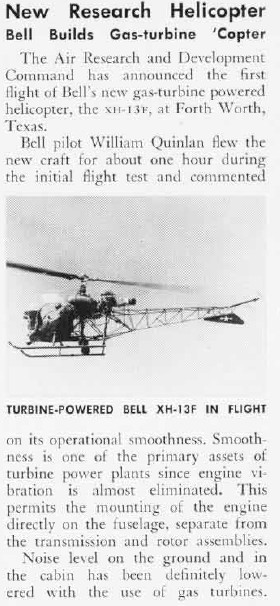
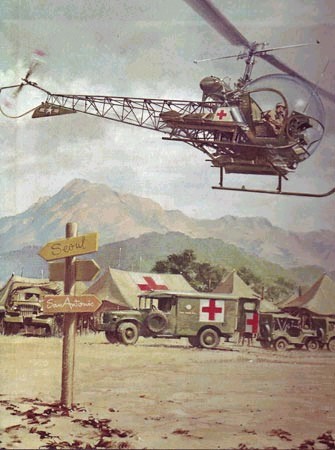
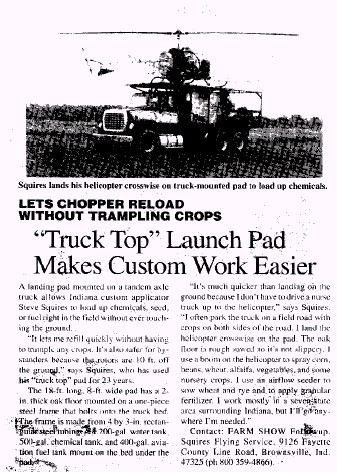
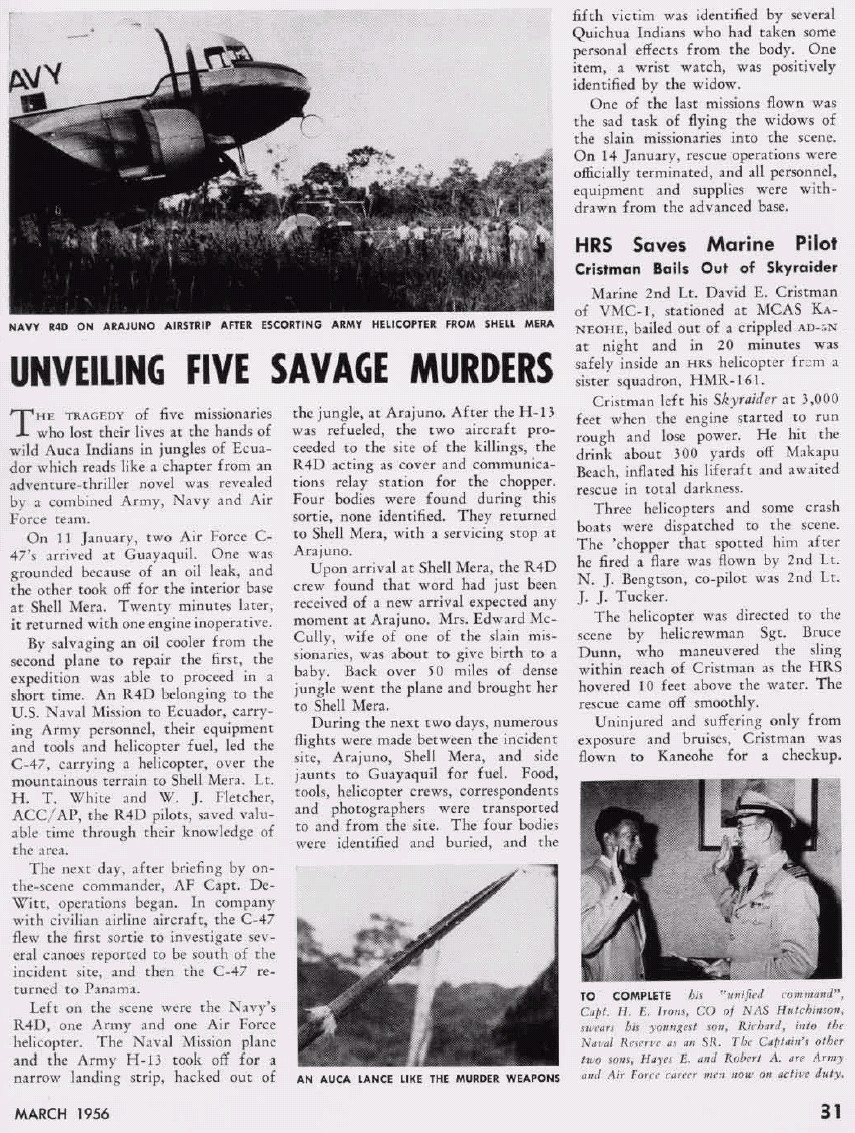
 youtube.com/watch?v=QQv9merynNI
youtube.com/watch?v=QQv9merynNI
Why they had not turbine-engined and improved their proven Bell Model 47s with armaments is a mystery. These small rotary-wing killer bees are easy to transport en masse to get a lot of killing platforms in the air. Instead they went with the HUK (piston-engined predecessor to the UH-43 Husky) and then the needs-an-airfield Huey.
The consequences of rejecting small 1-man observation/attack helicopters/flying units for the USMC is they have ever since had to live with a screwed-up pack-men-like-sardines-in-too-large "medium" helicopters mentality with the CH-46 which is really a CARGO helicopter and have had no real small scout helicopter ever since the 1950s since the Huey is too large and loud.
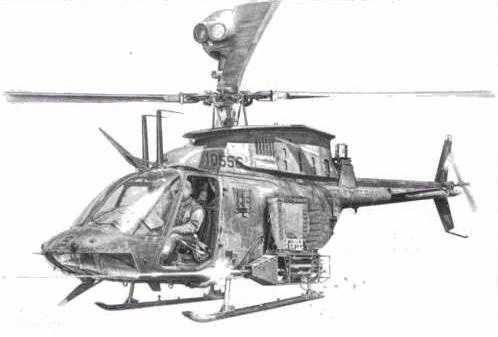
The U.S. Army, on the other hand while embracing the Huey employed it as an INFANTRY SQUAD carrier, a wise choice of a smaller target that saved many lives in Vietnam even though the Army had them painted in absurd dark green colors, a stupid practice continued to the present day. The Army knew that it needed smaller scout observation helicopters and kept Bell Model 47Gs on duty over Vietnam until its Light Observation Helicopter (LOH) or "Loach" program resulted in the fantastic Hughes 500 "Killer Eggs" now made by MD Helicopters in stealthy quiet no-tail rotor (NOTAR) forms though the idiotic Army continues to operate buy loud and snag-on-everything tail rotor designs.
NOTAR
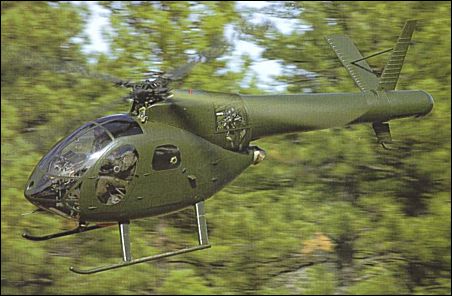
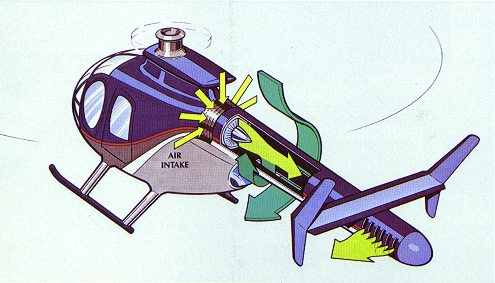
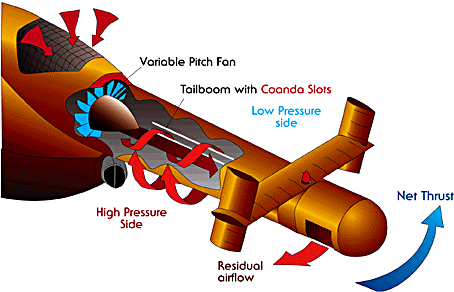
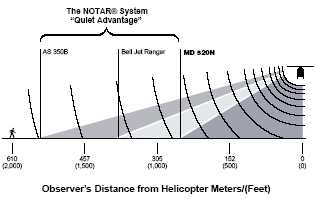
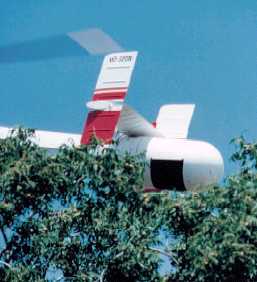
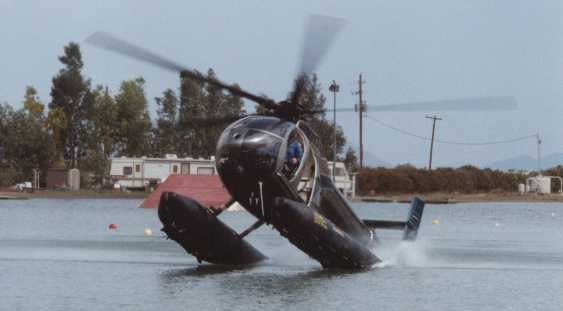
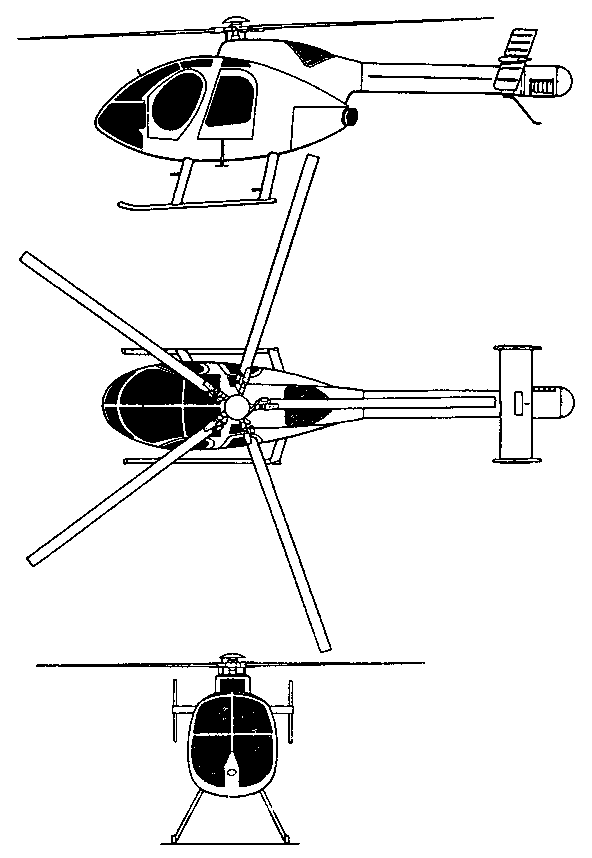
Bell complained about Hughes winning LOH and got themselves a contract to build Jet Rangers which have morphed into the current excellently armed and mast sensor-equipped but loud and slow OH-58D Kiowa Warriors. That the Army has recently bought more Long Jet Rangers without mast sensors instead of NOTAR helicopters shows that while they appreciate the need for scouting unlike the USMC, they lack the courage and imagination to make progress and improve observation/attack helicopters with either improved speed or stealth.
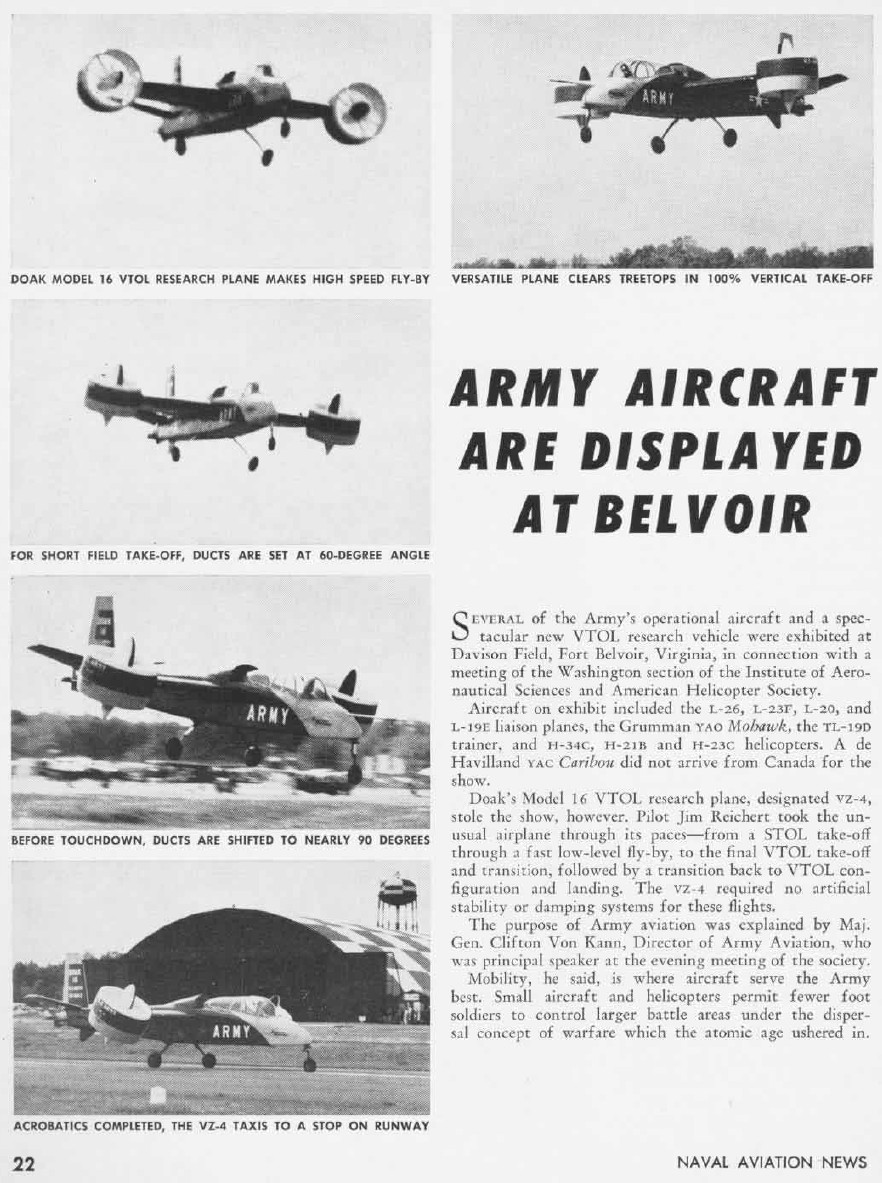
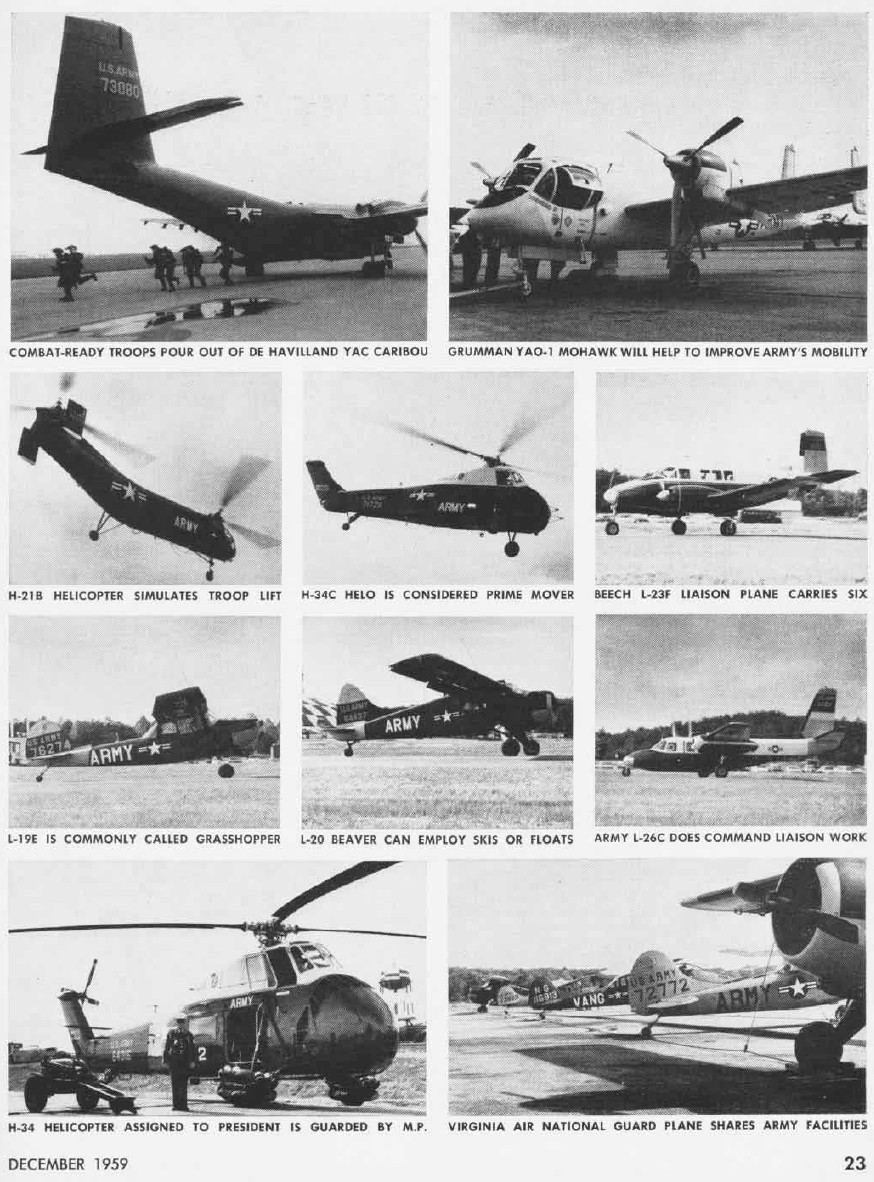
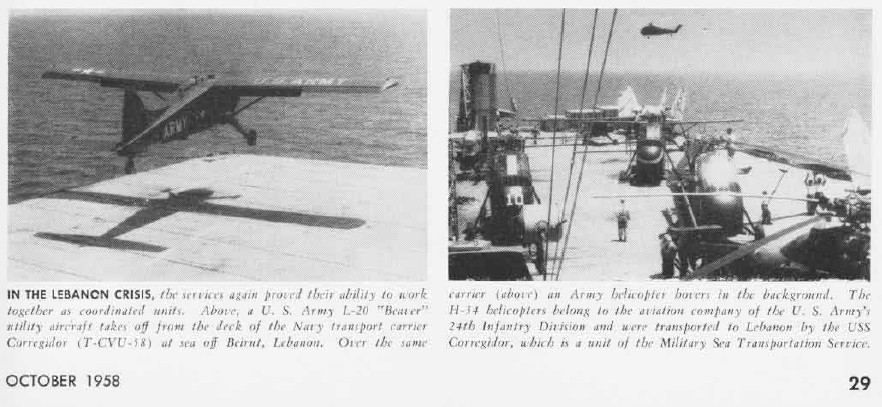
As far as speed goes, the Army at least knew at one time what right looks like by leading the way with fixed-wing short-take-off and landing (STOL) fixed-wing "grasshoppers" in the 1930s before WW2 began. Legendary U.S. Army General "Lightning Joe" Collins knew from Korean War experience where the power-hungry, too-fast, jets-for-everything USAF operating from long runways at rear air bases flying at 600 mph+ couldn't provide effective close air support and wanted fixed-wing STOL observation/attack planes.
http://usacac.army.mil/CAC/csi/RandP/airpower.pdf
KEY EXCERPT:
However, expansion of the Army's organic aviation and the Army's increasing use of the helicopter were to engender friction with the newly created Air Force and encounter obstructions from conservatives within the Army itself. [30] A key problem was that neither Executive Order 9877 nor the Key West Agreement had actually defined what constituted "organic" Army aviation.Also in the late 1940s, the Air Force and the Army held talks on the establishment of a system for the coordination of joint operations. These talks foundered because the Army insisted on a measure of operational control of its supporting air assets. This demand was especially unpalatable to the Air Force because it contravened the principle of the centralization of airpower assets along with the Air Force's insistence that all such assets should be under Air Force control. Army Chief of Staff, General J. Lawton Collins, reiterated his service's view early in the Korean War when he protested the coequal status of the Air Force and Army in close air support operations and called for the subordination of Air Force aircraft performing such operations to the army and corps commanders.
Furthermore, he suggested that the Air Force should provide each Army division serving overseas with its own dedicated fighter-bomber group. [32]
In Korea itself, in 1950, the Army got to experience the apparent benefits of marine tactical air doctrine at first hand when marine aircraft provided dedicated support to Army units during the defense of the Pusan perimeter and the Inchon landings, and Army officers liked what they saw. Drawing on this experience, General Edward M. Almond, commanding the Army's X Corps, recommended in December of 1950 and again in July of the following year, that a group of fighter-bombers be allotted to the operational control of each Army division. However, in August 1952, Army General Mark Clark forbade further Army requests for changes in the existing Air Force system on the grounds that it and the marine systems were designed for different circumstances and that adoption of the latter by the Army would be prohibitively expensive for any more than a handful of divisions in the field. [33]
Collins had even suggested that Army preferences should be taken into account in the development of future aircraft for the close air support role. This reflected another fundamental difference of opinion between the Army and the Air Force: this time over the nature of tactical aircraft. As we have seen, the Air Force held a broad definition of tactical air war which included air superiority and interdiction in addition to close air support. In order to retain the flexibility offered by centralization and also for budgetary considerations, the Air Force's preference throughout the 1950s and 1960s was to develop multi-role, high-performance aircraft that could seize air superiority and then be shifted between the different tactical air support missions. This inevitably meant jets, as they offered the additional benefit of increased survivability in the ground attack role as a direct result of their high speed.
However, the acquisition by the Air Force of such jet multi-role fighter-bombers also resulted in some problematic concomitant developments with regard to the Army's immediate aviation concern of close air support. The high speed of jet aircraft, which contributed to their survivability during a ground attack pass, also reduced the time available for the pilot to visually acquire the target, leading to a decline in the accuracy of the attack. Even if the pilot wished to fly slower, the relatively high stalling speed of such aircraft limited his ability to do so. Jet aircraft also tended to fly higher than the old piston-engine fighter-bombers in the interests of fuel economy. This also led to poorer target acquisition and, thus, lower accuracy. Fuel economy considerations also militated against the use of jet attack aircraft to perform standing patrols over the battlefield. It was much more fuel-efficient to hold such aircraft on runway alert from which they could be scrambled quickly at the request of the ground troops, and this, of course, was the way in which the Air Force had operated its close air support system since the Second World War.
Jet bases, however, had to be relatively distant from the battlefield because of the increasing length of the concrete runways required by the high-performance aircraft of the time. Unfortunately this also reduced reaction time and, according to the Army, was detrimental to the morale of ground troops who would not have the comfort of knowing that their air support was orbiting overhead. Finally, jet, multi-role aircraft were expensive, leading to a reduction in the overall number of aircraft available for tactical air support duties.
Consequently, the Army wanted the Air Force to develop specialized aircraft optimized for the close air support role. These dedicated "CAS" aircraft would have quite different attributes to those required for the air superiority and interdiction missions. They would be cheaper and they might not even be jets at all. Dedicated CAS aircraft would be slower and fly lower than their multi-role cousins for better target acquisition and bombing accuracy. They would have good, short take off and landing performance to enable them to operate from rough strips close to the front-line. This would produce good reaction times, but the lower overall performance of the aircraft would also result in greater fuel efficiency that would enable them to loiter over the battlefield for long periods, if necessary. [34]
As the photos above show, the Army of 1958 still was not taken over by too-slow, helicopters-for-everything rotorheads and operated STOL fixed-wing aircraft with great skill, integrating combat engineers to create small, dirt forward runways to operate from close to ground troops and even from small, "jeep" escort carriers (CVEs) as the aircraft above did for the 1958 Lebanon crisis. Earlier however, the October 28, 1955 Able Buster and Baker Buster tests offered a "Flying Tank Destroyer" concept using 2.75" rockets fired from fixed-wing observation/attack aircraft (F-4U Corsairs used as surrogates) very similar to the von Rosen Minicoins of the 1960s but Army Headquarters wimped out and continued work on arming Army helicopters instead so as to not confront the egomaniac USAF.
 youtube.com/watch?v=yu-gVaeZmE4
youtube.com/watch?v=yu-gVaeZmE4
The Army rejected the fixed-wing, Killer Bees CAS concept in 1955 that General Collins rightly pointed out they needed in favor of questionable use of slower, louder and more mechanically vulnerable helicopters as attack platforms. If these helicopters were kept simple and made stealthy with NOTAR and/or made to fly faster to their full 250 mph potential, a case could be made for them as en masse Killer Bees. However, as time wore on, even the turbine-engine Huey would need centralized maintenance at fixed air/fire forward operating bases in Vietnam and their size while much smaller than bloated USMC helos was still too large to be used as O/A means and the LOH helicopters were purchased but with inadequate speed and stealth. These large bases would drain troops away from combat operations in order to defend them and engendered rebellion from the local civilians for occupying their country.
The USMC tagged along with the Army lead and operated their own grasshoppers until just before Vietnam, then acted like the world's biggest "close air support" (CAS) hypocrites in the world by ditching prop plane A-1 SkyRaiders that can actually fly low and slow enough to do CAS in favor of sexier jet A-4 SkyHawks that go too fast and had no seat for an observer, though one was later added for training that enabled a "Fast FAC" capability but not as effective at finding the enemy as a slower aircraft is. When the Army in 1954 began the OV-1 Mohawk as the "ultimate grasshopper" with an attack capability, the USMC was along initially but then dropped out of the program in 1958. We speculate the Army nature of the OV-1 program bothered the USMC ego.
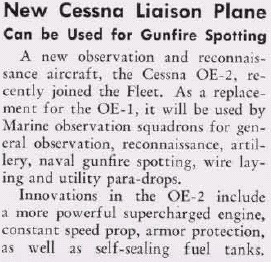
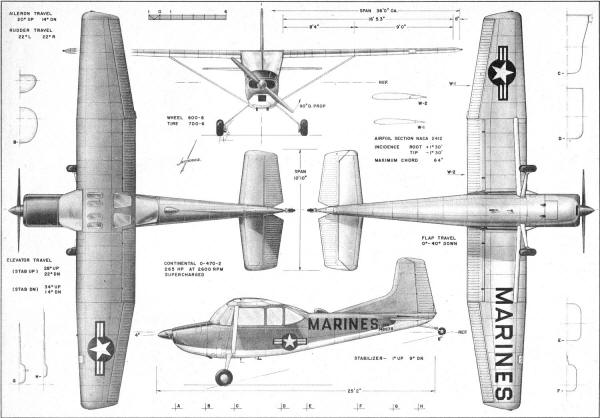
In 1956, HQMC did allocate funds for a small batch of improved O-1 Bird Dog II observation planes with a bigger gas engine, armor and self-sealing fuel tanks but further purchases were cut in favor of the "all helicopter" mentality that would damn many marines to die in Vietnam when it proved unworkable due to the corps buying bloated helicopters too large to operate in confined jungle landing zones. The gyrenes took to foot slogging at less than 1 mph from their FOBs while the enemy living from cached supplies from "home turf" ran circles around them at 4-7 mph. As Vietnam raged, the USMC was also without both scout helicopters and fixed-wing aircraft relying on the Army and the USAF to bail them out with their own pilots/observers in OV-1 Mohawk and O-1 Bird Dog aircraft spotting the VC/NVA to keep them from over-running marine forward operating bases. Smart marines K.P. Rice and Beckett saw this debacle coming and proposed in 1960 their "LARA" concept which became the OV-10 Bronco described in the next Killer Bees web page.
Nevertheless, when U.S. Army General Gavin created the Air Cavalry in the 1950s, it was with the smaller turbine-engined, simple helicopter called the HU-1 or "Huey" as its main troop assault carrier. General Gavin knew that the Army needed the efficiency and simplicity of fixed-wing transport planes that could land on grassy fields, and wanted a KIWI pod system to exploit it.
Testifying before Congress in 1958, General Gavin argued also that strict interpretation of the Wilson memorandum would be both inefficient and distort the manner in which the Army carried out its aviation roles. According to Gavin, even the limited airlift mission permitted the Army could not effectively be fulfilled with fixed-wing aircraft of less than 5,000 pounds empty weight. Therefore, these tasks would have to be performed by helicopters which were more complex and expensive than equivalent fixed-wing aircraft.
The USAF was not interested in helping the Army and didn't even try very hard to make the Fairchild XC-120 Packet plane work. The intention was to back VTOL helicopters with STOL OV-1 Mohawk fixed-wing observation/attack and CV-2 Caribou transport planes, the fatal flaw was not in fielding a smaller version of Gavin's brilliant AA/MPVF (M113) light tracked armored personnel carrier as the AR/AAV program intended to do to be helo-transportable by CH-47 or CH-54 heavy-lift helicopters so Air-Mobile infantry could fight the enemy from positions of superiority instead of M16 vs. AK47.
So by the beginning of the 1960s, the Army had simple turbine-equipped helicopters en masse to be an Air Cavalry, but not so simple that they could be operated with minimum maintenance like its fixed-wing grasshoppers. How we can maintain it? Is it worth it if they are easily shot down due to a lack of speed, stealth and fragility?
Early helicopters lacked the power to lift troops and heavy equipment until the advent of the turbine-engined UH-1 Huey. The Huey is a relatively simple, easy-to-maintain, full-sized helicopter but not a micro-helicopter comparable to the classic individual mobility mount, the horse. In fact, the Army consolidated ALL helicopter logistics into one organization, the 1st Aviation Brigade which at any given time never operated more than 500 helicopters. Maintenance was so difficult, in the south an entire former Navy seaplane tender was modified into a floating Army helicopter repair base.
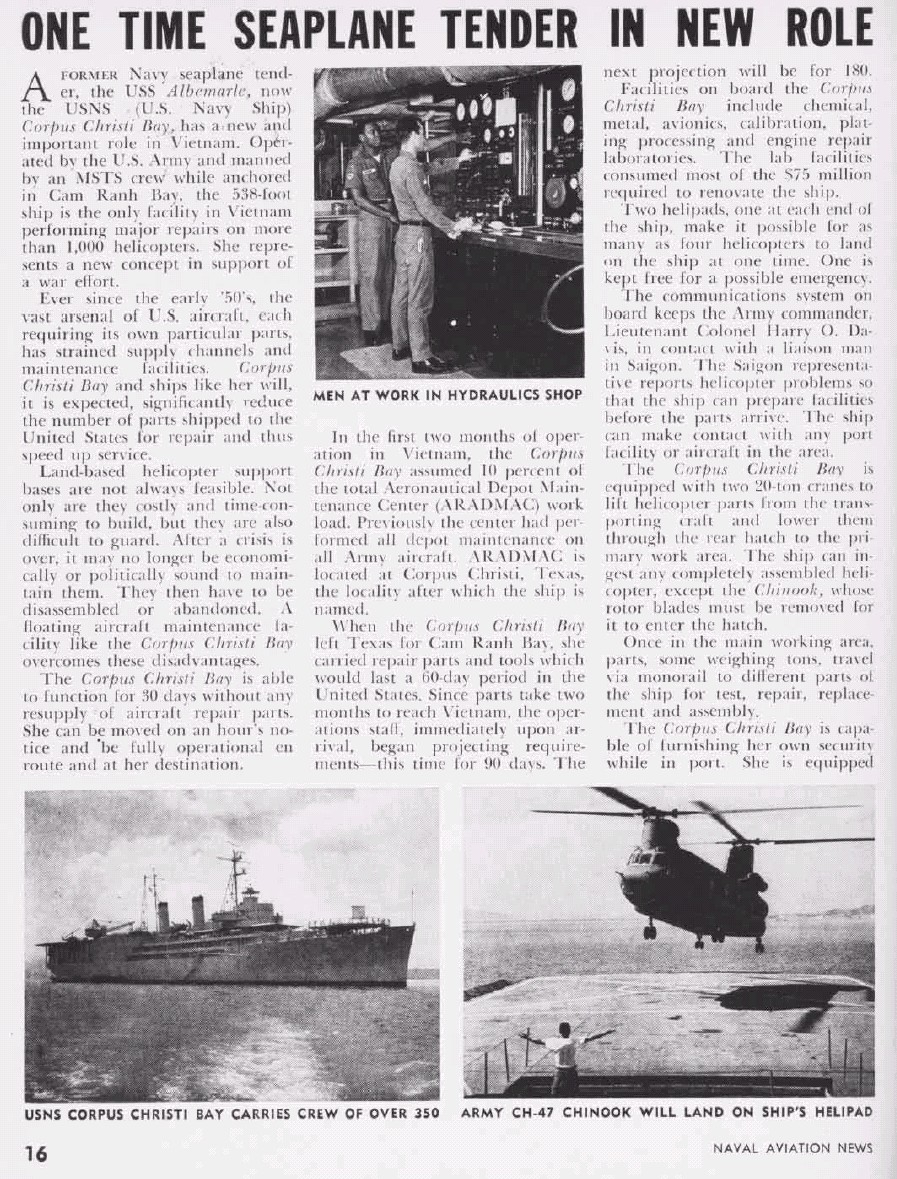

The Navy SeaWolves took the Army's idea of Hueys operating from shallow-draft ships (defacto helicopter carriers) to get them closer to the action by sailing them up river!
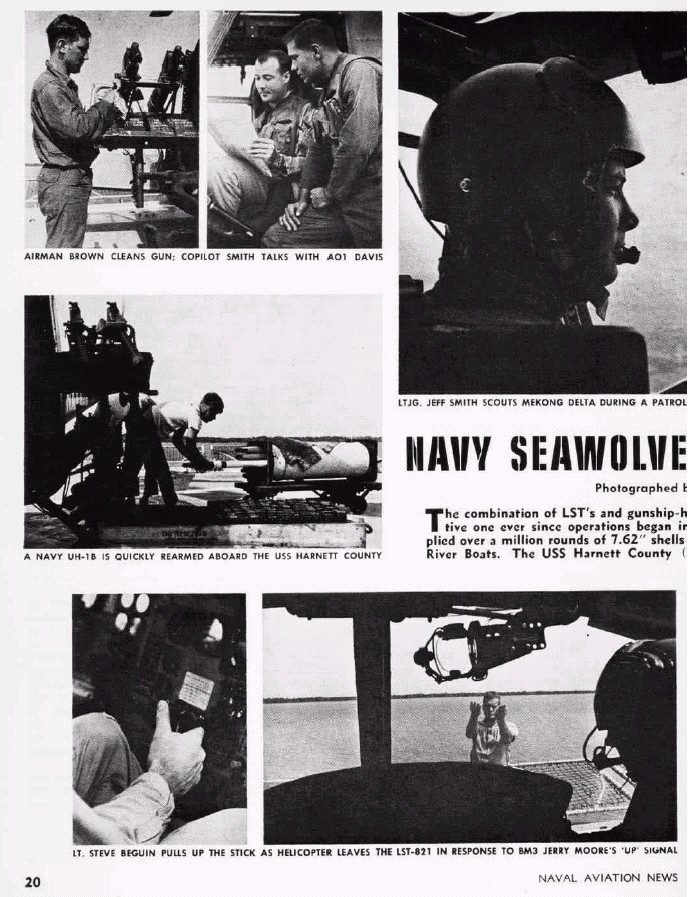
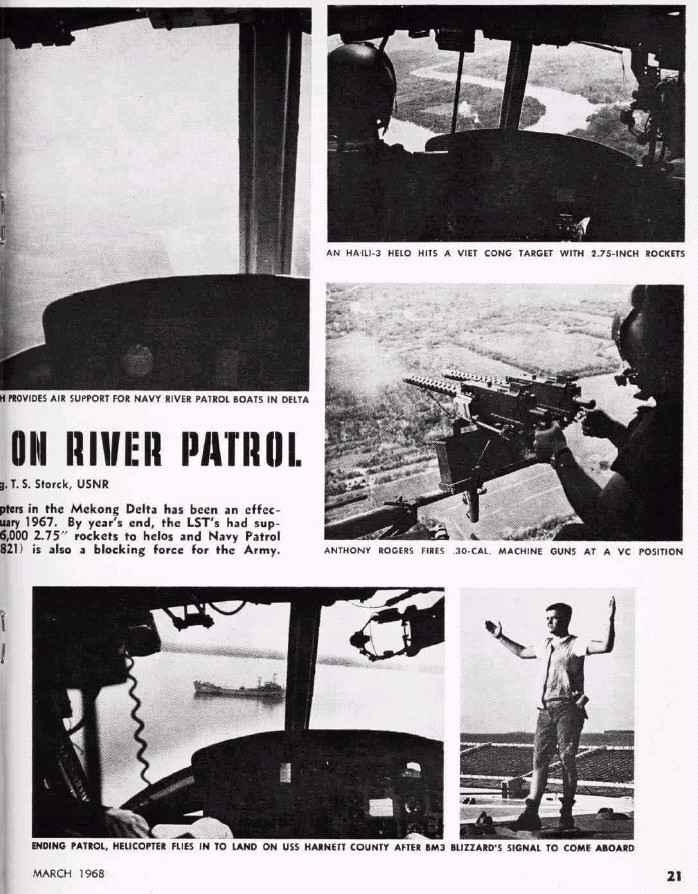
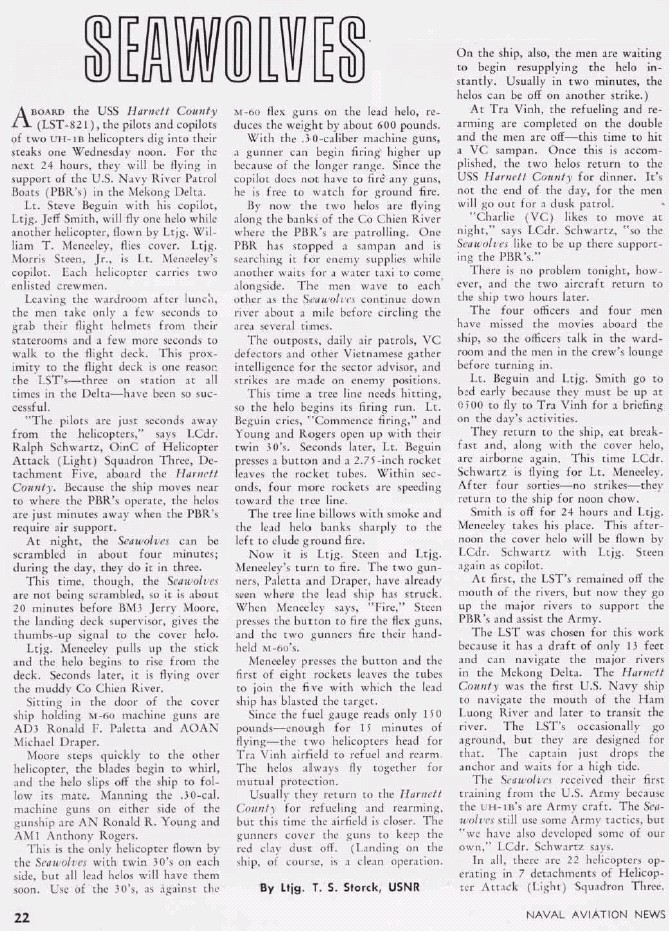
So even "relatively simple" single-turbine-engined Huey/HueyCobra helicopters were/are difficult to maintain so they were all centrally maintained by the 1st Aviation Brigade, all 422 to be exact but as a round figure 500 of them. Remember this number.
AT NO TIME DID THE ARMY OPERATE MORE THAN 500 HELICOPTERS IN VIETNAM.
From 1965 to 1973, that's 8 years; 1, 2, 3, 4, 5, 6, 7, 8, aka half of 1965, 1966, 1967, 1968, 1969, 1970, 1971, 1972, and half of 1973, we KNOW we lost 4, 000 helicopters over Vietnam. 2, 000 were crashes lost to TBATE and 2, 000 were shot down by TBAM. Not differentiating USMC helo losses to keep our ballpark grasp of the situation, this means WE LOST 500 HELICOPTERS EACH YEAR WE WERE IN VIETNAM.
We only operated at any given time 500 helicopters yet we LOST 500 helicopters each year.
That's a loss rate of 100%.
This means unless a particular helicopter was "lucky" EVERY DAMN HELICOPTER WE SENT TO VIETNAM WAS GOING TO--AND DID GET DESTROYED. We replaced all of the 500 1st Aviation Brigade helicopters 8 TIMES during the course of the war. If each cost $1, 000, 000 ($1M) each, this means each year we lost $500M (or half a BILLION $$$) in helicopters. 8 years of "Air-Mobile" warfare cost us $4 BILLION in just lost helicopters, great for Bell helicopter and Texans but bad for the dead and burned up Army Soldiers.
Yet WE PASSED ON A $500M/year helicopter firebase FOB style of warfare to the South Vietnamese who did not even have the $$ to pay for the fuel to fly these helicopters much less own/operate a Vietnamese version of Bell helicopter. So what did DoD think? That the American taxpayers were going to continue to pork subsidize Bell helicopter to prop up the South Vietnamse emulation (actually immolation) of our failed Air-Mobile foot-slogger tactics?
Now the Army's Aviators are clever liars and I'm tired of their lying shit which they use to sit on their asses and keep flying slow, loud and wrongly camouflaged crap complex helicopters. What they try to do is pad these horrific loss statistics with SORTIE crap to make it appear their helicopters are "doing a lot" before being crashed or shot down.
The Bonin CGSC paper states Army helicopters were lost 1 per every 5, 000 sorties.
The conventional helicopter is a 100 mph machine. So if it is flown from the FOB to somewhere 100 miles and back, that's 200 miles in 2 hours time. In an 8 hour flying shift that means a Huey could be flown 4 times a day, not getting exotic and flying at night and around the clock. This means if you flew every day of every month that would be 120 sorties per month for an annual total of 1, 444. To reach 5, 000 sorties before being shot down, would take 3 YEARS.
WE KNOW THIS IS A LYING PILE OF SHIITE BECAUSE 500 OUT OF 500 HELICOPTERS ARE BEING LOST EACH YEAR AND NOT AFTER 3 YEARS.
No, what this means is the Army Avia-Tors are lying ****s who are trying to make every 10 and 20 mile "milk run" into some kind of fucking "sortie" to cover their asses that their helicopters are somehow not the flimsy, slow and noisy piles of crap they are. If you don't go back and DO A REALITY CHECK and you take the 1 helicopter loss per 5, 000 SORTIE crap at face disvalue, you would be DECEIVED by the LYING ARMY AVIATORS into thinking a helicopter could fly for 3 years over Vietnam doing all kinds of dangerous air assaults when really they are doing a bunch of milk runs shuffling around people and materiel around sedate areas and counting these as "combat" sorties to cover up their actual atrocious combat losses flown into known enemy-held areas.
To "reality check" what I'm saying, take Lam Son 719, the U.S. flown incursion into Cambodia in 1970. 107 HELICOPTERS WERE LOST OUT OF 500 IN THAT OPERATION.
That's 1/5 of ALLLLLLLLLLLLLLLLLLLLLLLLLLLLL OUR **** HELICOPTERS IN VIETNAM WERE LOST DURING ONE LARGE OPERATION. 4 more "Lam Son 719s" and there wouldn't be any more helicopters to crash or get shot down. If it looks like an ass kicking by the enemy it is an ass kicking by the enemy. If you were a helicopter pilot/crew/troop onboard that means your chances of ending up as a burned up corpse was 1 out of every 5 or a 20% chance YOU WERE GOING TO D-I-E.
You might say "war is hell" or "c'est la guere".
No, THIS IS C'EST LA BULLSHIT.
This is c'est LA INCOMPETENCE AND FUCKED-UP STYLE OF WARFARE CAUSING THESE LOSSES.
You could say "we can easily replace these helicopter losses".
Can we?
Are we building 500 of ANY kind of military or civil aircraft today?
You could try to weasel out of this by saying "our Blackhawks are ooo so much more sturdier".
No, we are flying helicopters that are just as fucking slow and just as fucking loud as the Hueys but require even more maintenance to maintain--so they can't even get into the air (a great way to prevent being shot down is to not fly at all to pad your statistics) and the ENEMY THREAT IS FAR WORSE THAN IT WAS IN VIETNAM. This month, the rebels in Iraq have decided they want to start shooting our helicopters down and have bagged 6 so far. Out of how many? What? 100? 200? How many flying each day? I'd like to see the true helicopter use rate facts from Iraq.
The moral of this story is simple.
ANYONE that tries to tell you helicopter combat loss rates are AOK are lying the minute they move their lips. They THINK they are "protecting" Army Aviation by denying serious problems exist but really what they are doing is they are trying to prop up their weak egos that need to be kicked down to the ground and they are DAMNING Army Aviation to continued failures and one day Congress saying, "You know what, Mr. Army Chief of Staff? We are damn tired of our sons/daughters coming home as barbeque-in-a-bag and your excuses that say our pouring of BILLIONS of dollars down the drain for your helicopters is AOK. Its not A-O-K. Your budget is being cut. You better get off your tail and find a better way to get around the battlefield through the air."
For all the cost and hassle of maintaining even the Huey it was realized to be way too loud, slow and vulnerable from the get-go, yet the Army refused to attach pod-mounted engines to at least make them go as fast as they could to attain 240+ mph speeds.
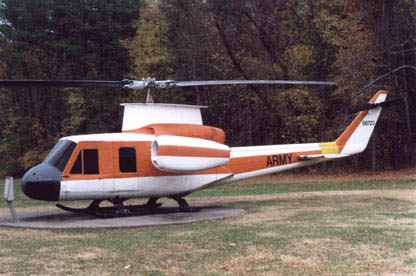
Speed and Stealth Rejected for Absurd Treetop Hovering Firing
As dishonest Army rotorheads began to clamor for their own separate aviation branch within the Army, they developed a pattern of lying about their failures using non-combat "sorties" to pad their mission statistics to try to excuse away their excessive shoot-downs and crashes totaling 4, 000 for just the 8 years of Vietnam from 1965 to 1973. This comes out to 500 Huey-type helicopters lost each year at about $1 million each and keeping the Texans at the Bell plants busy with steady work and income as mortuaries stayed busy burying the burned-up dead. It was a win-win situation for everyone except the Soldiers who died or were maimed in the flawed Air-Mobile CONcept of OperationS (CONOPS).
Despite the NVA placing 12.7mm heavy machine guns on tree tops to in effect be able to spot our loud Huey type helicopters for miles away and to open fire at 2 miles away before they could even reach the intended landing zone, and the advent of MANPADS SA-7 surface-to-air missiles causing horrific losses of 107 helicopters just during Lam Son 719 in 1970, the Army rotorhead liars used dishonest statistics to make excuses to deny there was any survivability problem while on the other side of their mouths asking Congress to fund more survivable helicopters. When the Army pleaded to be able to keep their necessary 250 mph Cheyenne compound attack helicopter, it was no surprise that Congress tired of being lied to by the Army told them no and funded heavily armored USAF A-10 fixed-wing attack planes instead. Rather than being honest and telling the truth that their helicopters flew too slow from the get-go, they tried to save face and their egos with fabricated lies and at the critical juncture in our history failed to get the fast compound attack helicopter we need to survive over future battlefields today. The legacy of this failure is the current too-slow AH-64 Apache helicopter. This problem can be fixed by adding wings and Piasecki thrust units to AH-64s, but as usual; the Army in denial there's a problem is dragging its feet as men and women die in their screwed-up helicopters.
To justify the AH-64, the Army came up with a tree-top hover firing tactic for European forested areas combined with TOW anti-tank guided missiles (ATGMs) to kill Soviet tank armies. The Army had been clamoring for an airborne tank killer since the 1950s and why they didn't simply arm their fixed-wing OV-1 Mohawks with HEAT 2.75 inch rockets which they knew would work from the Able Buster tests shows rotary-wing prejudice was in effect?
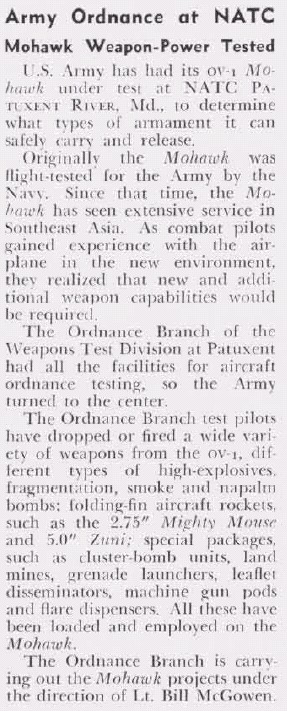
Instead of working around the weakness of a hovering helicopter using wire guidance, laser-guided ATGMs for the 300 mph Mohawk could have been fielded during the Vietnam war instead of two decades later with the current Hellfire family. In force-on-force tests against armored vehicles, the AH-1 HueyCobras were able to "kill" 13 ground vehicles for every helicopter lost and the Army rotorhead egomaniacs proclaimed this as some kind of great success. This hovering-to-fire ATGMs "Fulda Gap" mentality would have to be unlearned over Afghanistan the hard way and fortunately there was still one Vietnam helicopter pilot on active duty to teach the current generation what right looked like to effect running rocket and gun runs. The AH-64 was built in a few hundreds and has been since then crashing and being shot down through small war combats and crashes as Boeing has made $BILLIONS gadgetizing them with more electronics as physically their power and speed decreases and their numbers shrink. If we fought an attrition war like we did in Vietnam with current out-of-production, AH-64s, it would not be long before we would have no more AH-64s. For details on the rise of the absurd Army Attack helicopter mentality read the Bonin CGSC thesis:
webcitation.org/5JNK2QuIv
http://cgsc.cdmhost.com/cgi-bin/showfile.exe?CISOROOT=/p4013coll11&CISOPTR=356
"Toward the Third Dimension Combined Arms: the Evolution of Armed Helicopters into Air Maneuver Units in Vietnam, 1965-1973"
Major John Bonin, U.S. Army, 22 April 1986, U.S. Army Command and General Staff College, Fort Leavenworth, Kansas
What has also happened since the Huey, is that by platform centricity, the Huey's replacements have gotten bigger and more complex so they are no longer simple to maintain/fly. We are at the point now, where the AH-64D LongBow Apache is so complicated that we are often unable to fly them due to maintenance woes as the aircraft's electronics smother the physical robustness of the basic though large flying machine itself. So Army Aviation with the RAH-66 Comanche is putting itself out of the flying business by over-complexifying itself, (the marine corps V-22 hybrid debacle is even worse) "killing the goose that lays the golden egg", exactly what legendary designer Ed Heinemann warned us about! The first battle you have to win is against the earth itself (TBATE) to stay flying! The "gremlins" of WW2 have taken roost in our overly complex aircraft and getting the better of us!
Merry Melodies - Falling Hare (1943) with/Bugs Bunny

 youtube.com/watch?v=ZpjzTqwtFf0
youtube.com/watch?v=ZpjzTqwtFf0
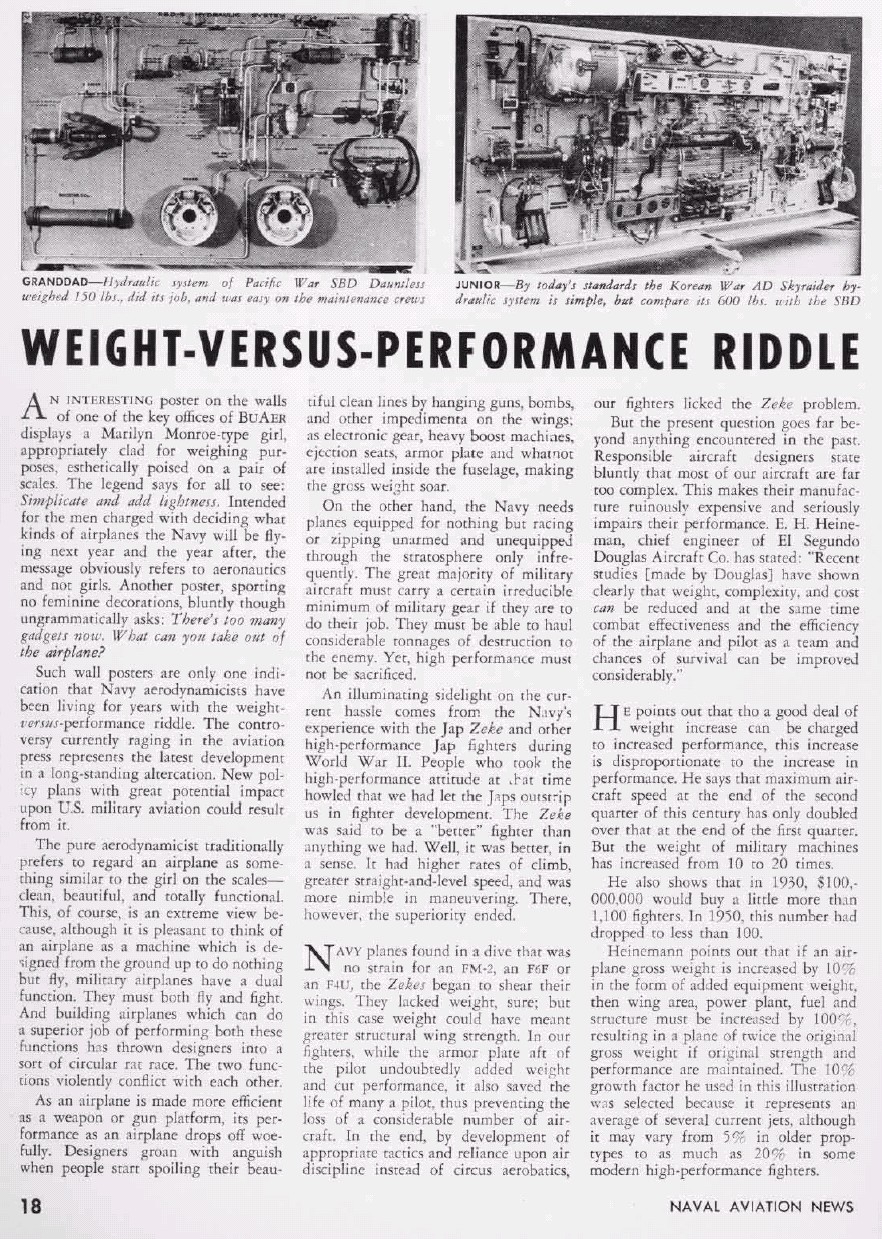

The "golden egg" of the helicopter is air mobility; you lose that nothing else follows, no digitalization of the battlefield, no missiles, no troop lifts etc. The Army's helicopters are so big now, that they cannot fly efficiently inside USAF fixed-wing transport aircraft to get them to the battlefield in the first place, so most sit on the sidelines for rapid-reaction missions like in Grenada, Panama, Haiti and Desert Shield until they can with time be delivered by fixed-wing aircraft and sealift. Once on the scene like the 101st Air Assault Division in Afghanistan, the Army's helicopters are very useful providing 3D maneuver and Close Air Support in a conservative way. Because there are too few large helicopters and fixed-wing USAF A-10s flying in support of a large number of ground troops, there are no "Killer Bee" swarms Air Cavalry effect that can cover large areas of the earth to hunt down the enemy as we used to be able to do in Vietnam with simpler helicopters we could field in larger numbers. We even had Aerial Rocket Artillery (ARA) helicopters each carrying 48 x 2.75 inch (70mm) rockets in formation as entire units flown by Army Artillery Branch Aviators to lay down withering rocket fire which saved the day on numerous occasions in Vietnam, particularly the battle for LZ X-Ray in the Ia Drang valley in 1965. With the advent of Army Aviation Branch the full exploitation of helicopters as artillery platforms was lost.
What Meyer wants to do is already realized and in use by our NATO allies; the Germans and the French who use small, almost "micro" attack helicopters firing Anti-Tank Guided Missiles (ATGMs) in swarms in concert with light ground vehicles like the Wiesel and BV-206S light tracked AFVs also firing ATGMs and autocannon, to in effect be an Air/Ground Cavalry even if the word "Cavalry" is not technoelegant enough today for some though its battlefield FUNCTION is timeless. The point is that the Europeans have realized they must keep it simple, stupid (KISS) and keep their platforms flying in great numbers to have significant effects or nothing else will follow. Note that the goal is to have a BATTLEFIELD EFFECT not to be ego-centric and make platforms that individuals will find appealing to their personal survival/style goals. This lies at the heart of why U.S. Army Aviation except for the 160th SOAR A/MH-6 and OH-58D Kiowa Warrior communities is not willing to go to smaller, simpler helicopters to gain strategic mobility inside USAF fixed-wing aircraft and gain Air Cavalry battlefield effects. If the U.S. Army had a Cavalry Branch, it could have the long-lasting institutional power and personnel believing in mobile, general purpose warfare to create and improve an Air/Ground 1st Cavalry Division using smaller, more physically robust helicopters. In other words, we need people who think about and build Cavalry "Killer Bee" formations within the organizational Army.
Attack of the Rotary-Wing "Killer Bees"
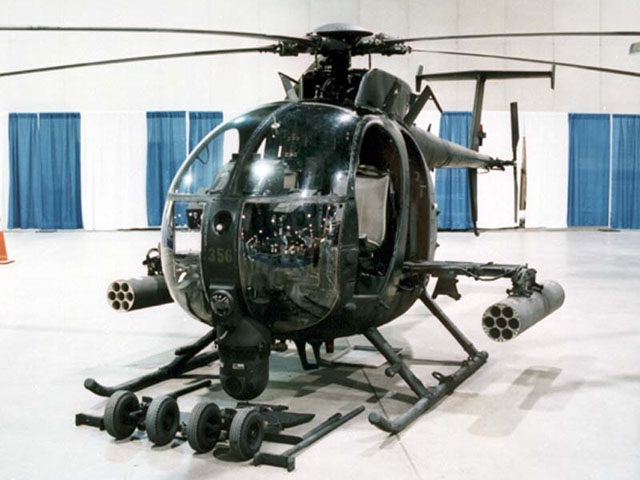
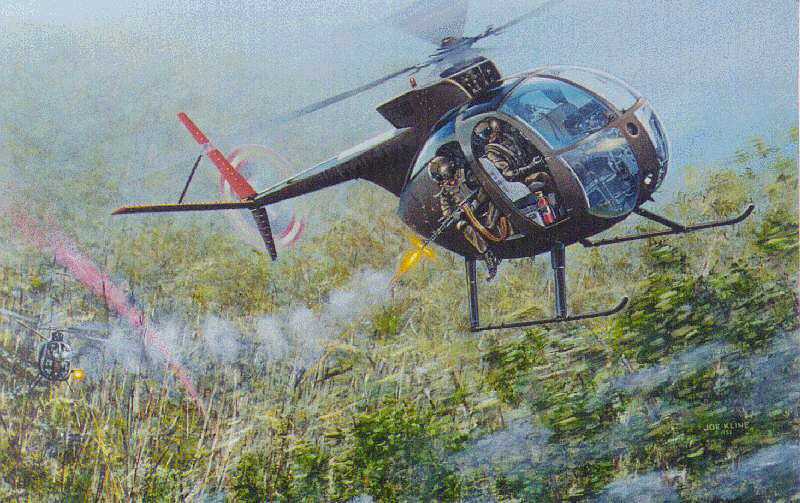
 youtube.com/watch?v=bgCGMfFYg9o
youtube.com/watch?v=bgCGMfFYg9o
LongRanger (Cancelled)
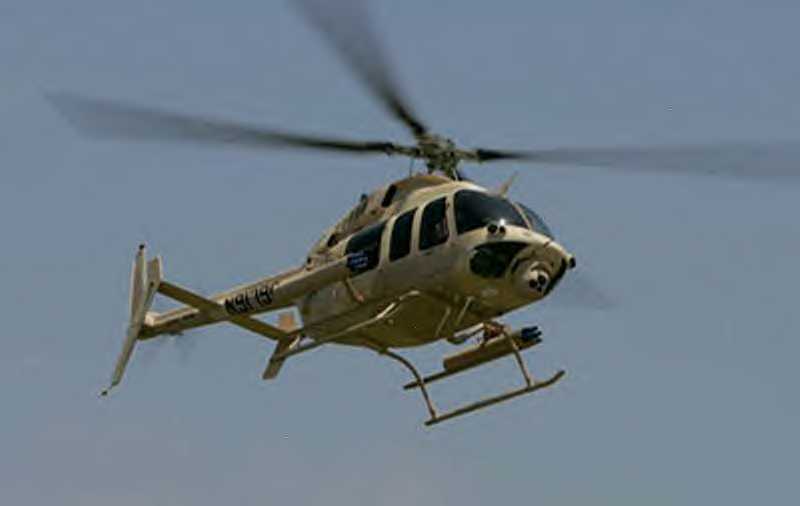
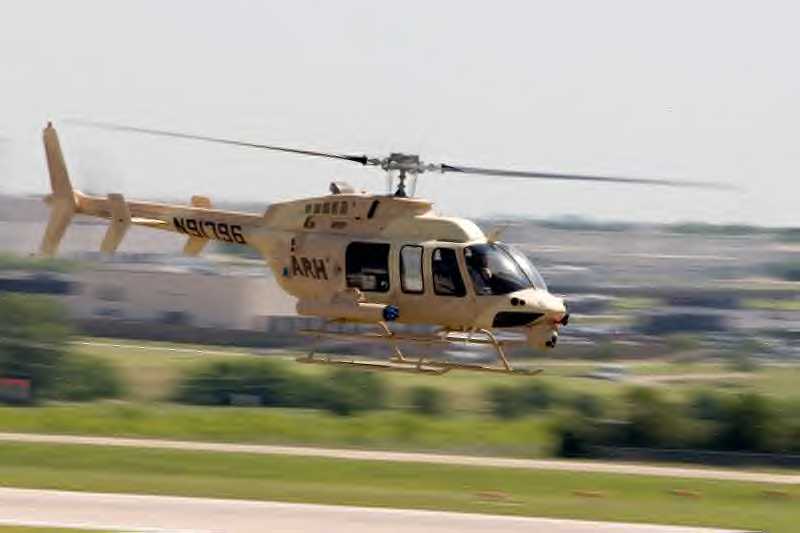
NEW VIDEO! OV-1 Mohawks in Action during the Cold War, Vietnam and Iraq! Small Scout Helicopters, too!
The Rhodesian Army realized the power of rotary-wing Killer Bees using French Alouette turbine-engined helicopters who still hold the records for high altitude performance and are the staple of Indian Army operations...
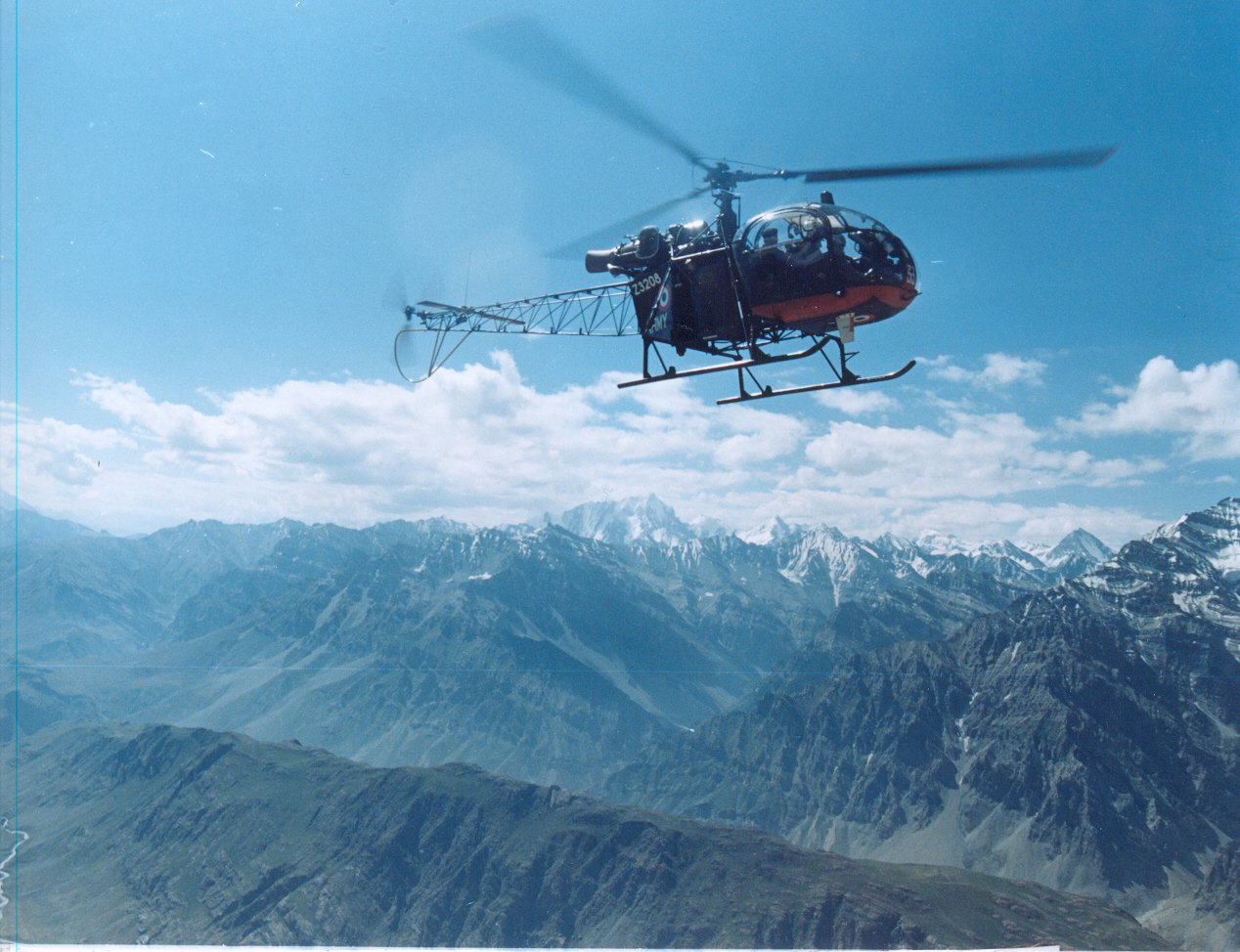
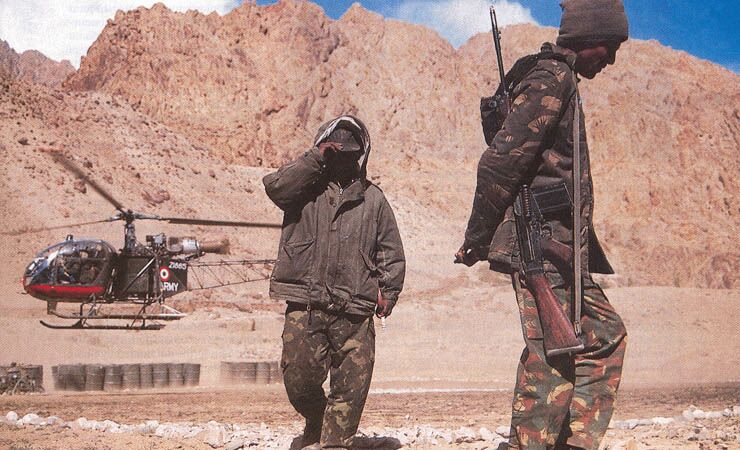
British Army also has something the U.S. Army and marines do not have: simple light (less than 2 tons) turbine-engined helicopters that are CO-LOCATED with ground maneuver units. We do not like the Army's recent mistake of selecting the inferior flight performance and noisy tail-rotor Bell 407 LongRanger for its cancel RAH-66 Comanche "consolation prize" ARH helicopter, but there's no excuse why these small light turbine helicopters cannot be co-located with ground maneuver units via trailers and/or XM1108 Gavin tracked prime movers.
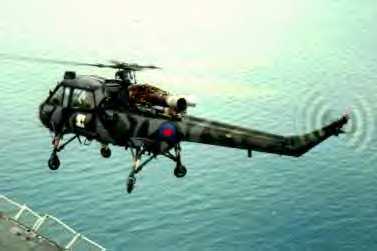
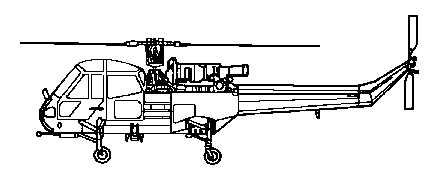
 VIDEO! French Gazelle scout observation/liaison helicopters in action!
VIDEO! French Gazelle scout observation/liaison helicopters in action!
 youtube.com/v/SXiL297PUvY
youtube.com/v/SXiL297PUvY
Studying the British experience in the Falklands War in 1982, you discover that their small Gazelle and Wasp/Scout helicopters are acting as liaison aircraft like the fixed-wing grasshoppers of WW2/Korea;
a. Observation for directing field artillery and naval gunfire
b. Insertion/extraction of recon teams
c. Armed escort of troop carrying helicopters
d. Armed attack of enemy targets of opportunity
e. Resupply of forward units in contact with the enemy
f. On return trip MEDEVAC of wounded men
A former British Army Soldier and defense expert writes:
"The Gazelles and Scouts operated from the ships in the bay, including Canberra, and the LSLs. Most were based on shore, (once the task force had landed) as where the SeaKings of the COMMANDO Squadron. If you buy a copy of Falklands Commando, by Hugh McManners (also a good friend of mine) you'll see Gazelles operating from the LSLs."
So here is a question.....WHY is it AOK for an "UAV" to be ground-mobile like the MMIST CQ-10A "Snow Goose" in U.S. military service (NSN 1550-01-505-3010) for resupply but not a MANNED aircraft?
UAV...AOK...
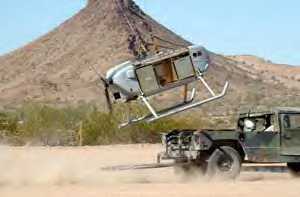
SAYS WHO?
The NOTAR MD-900 which hopefully will win the Army's LUH competition is a very COMPACT (compare to long tail-boom tail-rotor helicopters) and stealthy helicopter that could be easily ground mobile on a trailer or in a BATTLEBOXaircraftTM.
 youtube.com/my_playlists?p=5A4B010DC154A1F8
youtube.com/my_playlists?p=5A4B010DC154A1F8
Its got two powerful engines to counter the whining of narrow-minded rotorheads that NOTAR means loss of power. Getting shot down in flames because you are in a noisy helicopter is the "loss of power" (being DEAD) you should be worrying about.
MD-900 Explorer AS U.S. ARMY'S LIGHT UTILITY HELICOPTER (LUH) IN FORWARD-DEPLOYED SCENARIOS
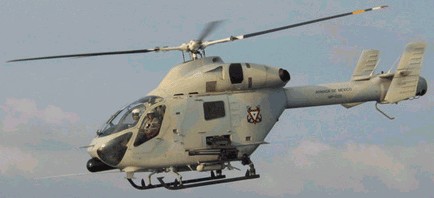
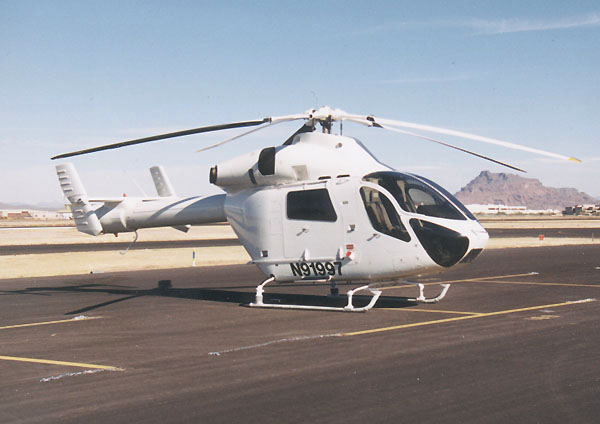
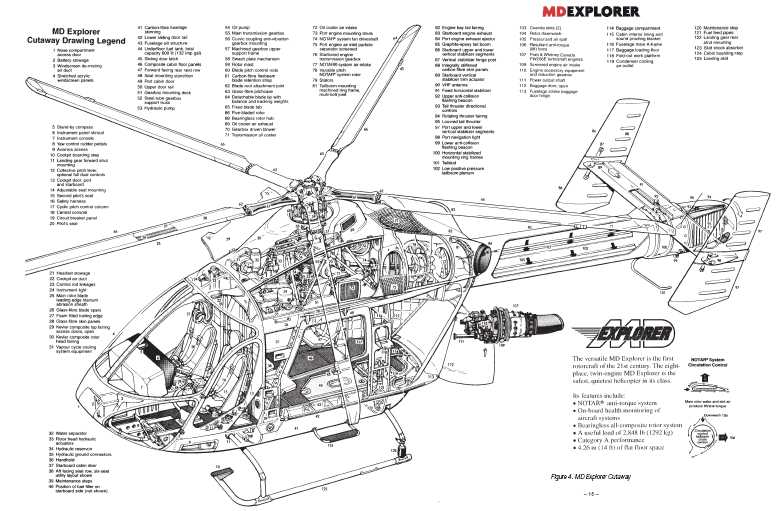
GROUND-MOBILE BY TRAILER TOWED BY OR ON TOP OF XM1108 GAVIN TRACKED AFV
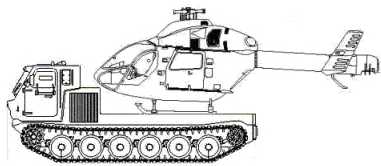
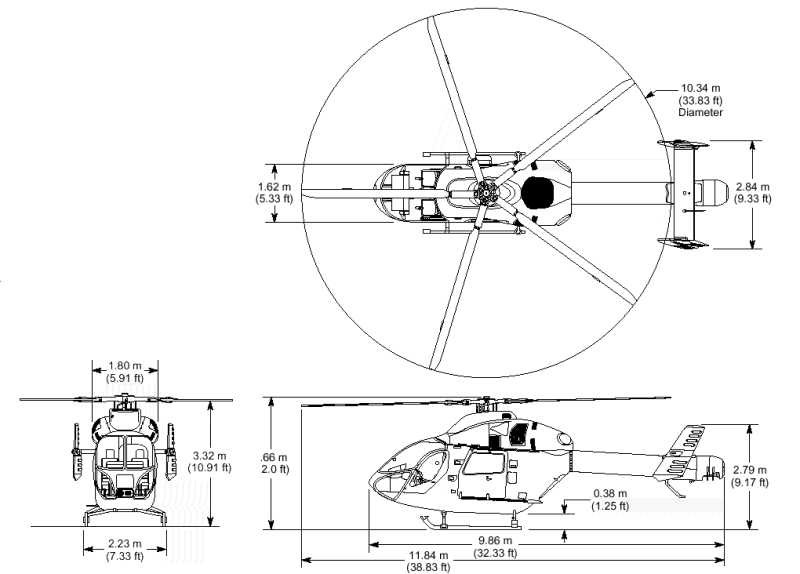
To be close to ground troops to be more responsive to their needs, as well as conserve fuel and flight time before maintenance, the MD-900 can be transported on the ground to forward operating locations (FOLs). Options to move Explorers include being moved on the back of XM1108 Gavin armored tracks (see drawing above) or on flat bed trailer:

To protect the MD-900 while on the ground, it can be partially covered
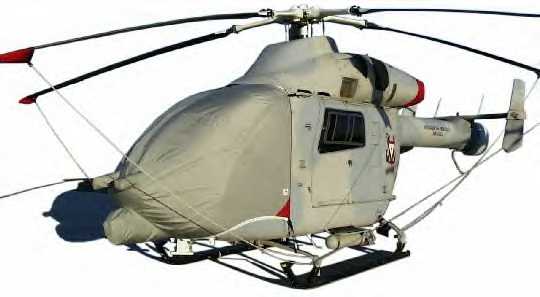
...or fully covered (as U.S. Coast Guard MD90s are on ships)
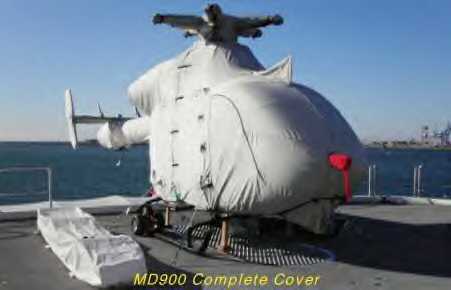
by Bruce Perch's Aircraft Covers
aircraftcovers.com/techsheets/md900.html
aircraftcovers.com/mil.html
bruce@aircraftcovers.com
(800) 777-6405
(408) 738-3959
FAX: -2729
GROUND MOBILE BY ISO CONTAINER "BATTLEBOXes" ON MOBILIZER DOLLY SET WHEELS OR ON A TRAILER PULLED BY A TRUCK OR TRACK

Another, more protected and covert mobility option is to use ISO shipping containers. MD-900 LUHs can be transported inside a custom-made 40-foot long ISO shipping containers that would be higher (about 11 feet 6 inches) to fit the 10.91 foot high MD-900 helicopter with rotors removed. This shipping container would enable Explorers to be shipped overseas discreetly by container ship. Once at the port, mobilizer wheels can enable M113 Gavins and other ground vehicles to tow the MD-900 Killer Bee into action alongside maneuvering units.
 youtube.com/watch?v=ziWmoEBI8mU
youtube.com/watch?v=ziWmoEBI8mU
 youtube.com/watch?v=O49DIrHuoGA
youtube.com/watch?v=O49DIrHuoGA
The 40-foot special "BATTLEBOXaircraft" for the MD-900 can be insulated, have air conditioning, heat, water and electricity from wind, solar, pedal, batteries, fossil fuel generator, or a power grid hook-up and have fold-down bunks for Soldier air and ground crews to live inside.
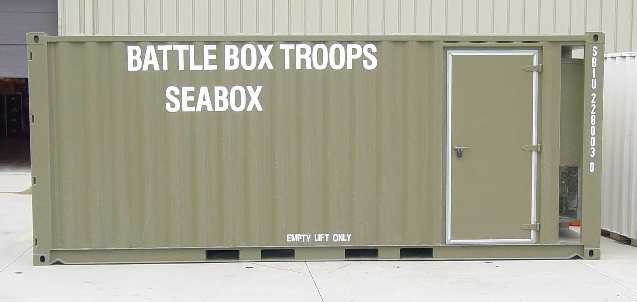
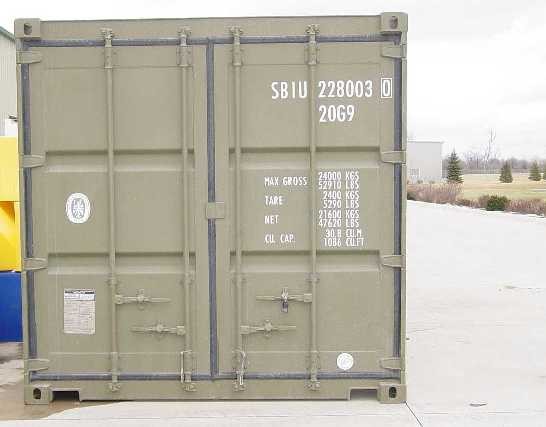
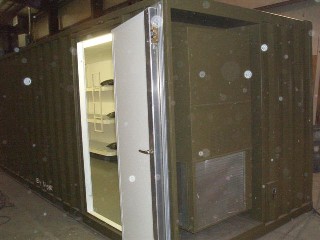
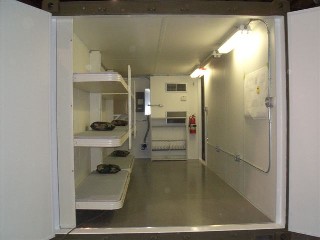
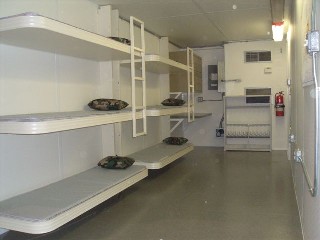
Another 20 or 40 foot long ISO container could carry an entire repair shop with tools and parts using expanding walls so MD-900s can be repaired inside out of the dirt, sand, heat, cold and wind.
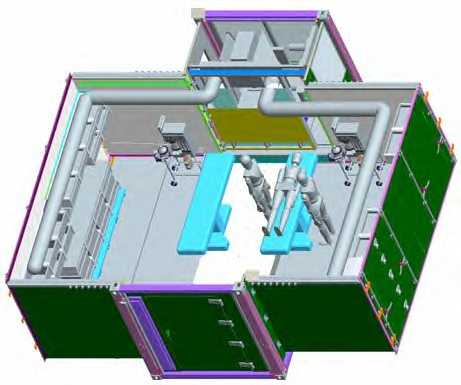
UH-72: Not As Good As MD900 NOTAR But Could be Made BATTLEBOX Ground-Mobile
 scribd.com/doc/124764104/UH72A-Light-Utility-Helicopter-July-2007
scribd.com/doc/124764104/UH72A-Light-Utility-Helicopter-July-2007
BATTLEBOXes come with outer wall sections for dirt to be filled inside to make them protected against roadside bombs, RPGs, bullets, rockets and mortar attacks.
Jet pod for Survival Speeds
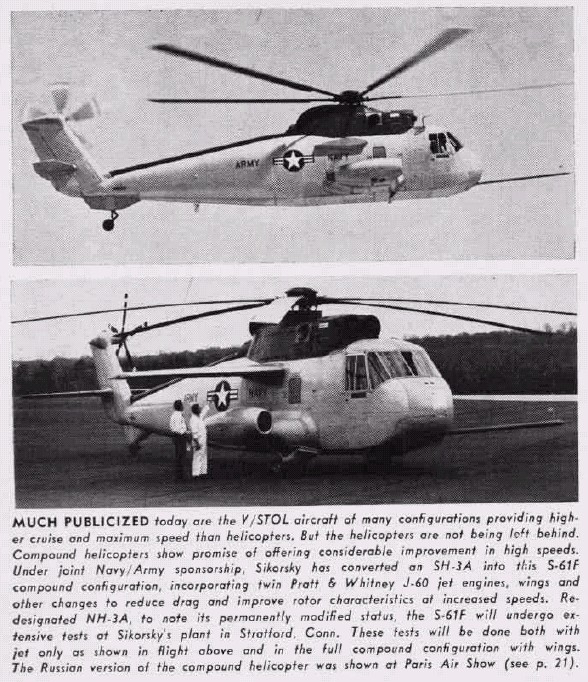
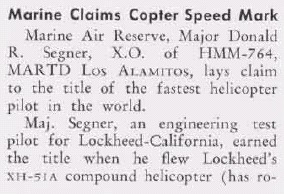

 youtube.com/watch?v=uErDMSr9LVw
youtube.com/watch?v=uErDMSr9LVw
Another revelation is we've known since the 1960s we can simply attach a jet engine to even just one side of a helicopter to boost its forward thrust to get 240+ mph speeds. Yet what's sickening is we did not do it for VIETNAM WAGING AT THE TIME we STILL HAVE NOT DONE IT TODAY. MEN ARE DYING NEEDLESSLY because our loser mentality U.S. military dominated by fly boy egomaniacs refuse to admit to ANY problems in their approaches to military aviation.
1. Bad dark green camouflage
2. Slow helicopter
3. Loud helicopter
4. Probably no or inadequate IRCMs
= ANOTHER AVOIDABLE TRAGEDY
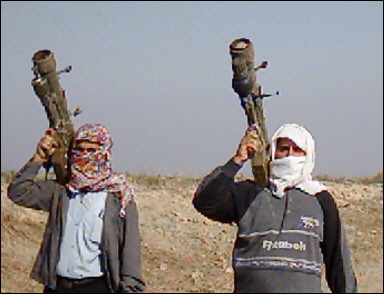
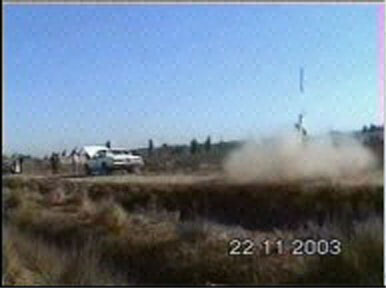
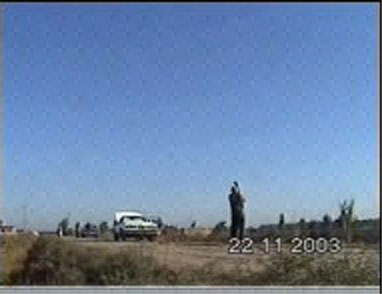
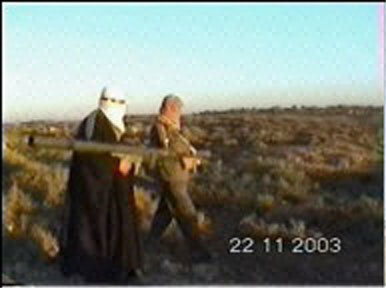
U.S. military refuses to make our helicopters fly faster with jet pods or Piasecki wings and vectored thrust units or quieter with NOTAR or even paint them in the right light gray camouflage color (U.S. Army's sin) www.combatreform.org/camie.htm to prevent them from being so easily shot down. Recent studies show the majority of U.S. helicopter losses took place during the DAYTIME. Imagine that.
The V-22 is a mechanical monstrosity that cannot take-off and land quick enough to avoid shoot-downs--lest it lose lift on one side and flips over. V-22s headed to Iraq will crash simply from being mechanically overcomplex and resultingly unreliable. In Iraq/Afghanistan the heavy work is done by U.S. Army CH-47D/Fs and UH-60s as the V-22s are nowhere to be found.
The simple improvements we could make to existing helicopters to improve their survivability, the U.S. military refuses to do.
New York Daily News
January 23, 2007
Pg. 16Missile May Have Downed Copter
By News Wire Services
WASHINGTON - There is evidence that an Army helicopter was shot down in Iraq by a shoulder-fired missile, a senior military official said yesterday.
Searchers at the scene found a tube that could be part of a shoulder-fired weapon that may have been used to shoot down the aircraft, said the official, who requested anonymity because the investigation was still continuing.
A dozen U.S. Soldiers died when the Black Hawk helicopter crashed Saturday in the province of Diyala north of Baghdad.
Col. David Sutherland, commander of U.S. forces in the Iraqi province of Diyala, has said the crash is still under investigation.
An Al Qaeda-linked coalition of Iraqi Sunni insurgents calling itself the Islamic State in Iraq claimed yesterday that its fighters shot down the helicopter.
The posting's authenticity could not be independently verified, but it appeared on a Web site used as a clearing house for militant statements. The Islamic State in Iraq is believed to be the political wing of Al Qaeda in Iraq.
Also disturbing was the news over the weekend that insurgents were waved through checkpoints and allowed inside a provincial headquarters because they were wearing Iraqi and American uniforms and had American ID cards.
Five Americans died in the subsequent firefight Saturday.
The gunmen arrived in a convoy of seven white GMC Suburbans, a vehicle favored by Americans. After breezing through checkpoints, the force stopped at the police directorate in Karbala and took weapons but gave no reason, said police spokesman Capt. Muthana Ahmed in Babel province.
The light infantry narcissists want to ride around in helicopters instead of the armored tracks of the "mech pussies" and look sexy and look what it got them.
The damn helicopters are painted in idiotic dark green, they are too loud and too slow...and we're damn tired of hearing Army Aviator excuses why they SAY they are doing the best they can.
You strap a jet engine and you don't even need wings and you can get up to 242 mph as the Lockheed XH-51 proved in 1964.
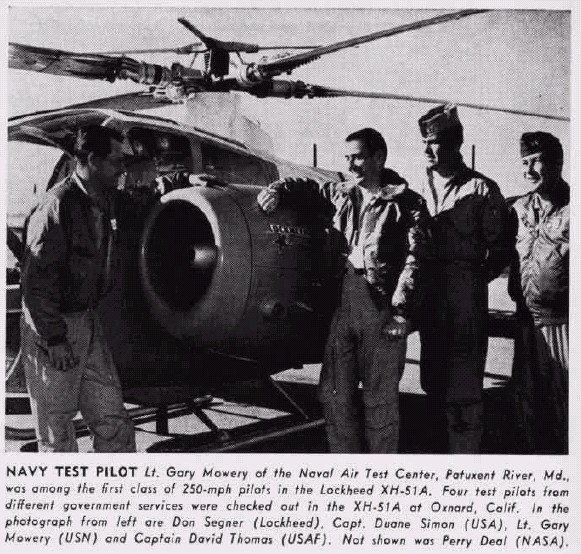
How about having less people in each chopper and those that are inside wearing bail-out parachutes so if they get a missile warning they can bail out before being blown up?
WHY were these poor USMC people on board the CH-46 not wearing parachutes so they could bail-out? They appear to be at least at 1, 000 feet at 100 mph which would give them plenty of air flow and height for their parachutes to open.
The Russians wore parachutes in their helicopters over Afghanistan.
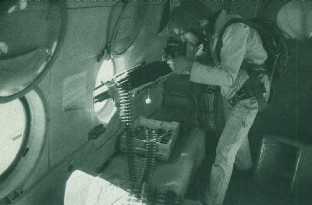
Again, typical U.S. military live-in-denial and make believe there is no problem as the article at the end shows they are even denying the marine CH-46 was shot down!
msnbc.msn.com/id/17071631/
Insurgent video claims to show copter downing Smoking object appears to hit Sea Knight in Iraq; flames
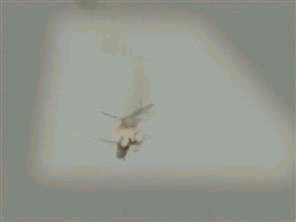
Updated: 7:55 p.m. ET Feb 9, 2007
BAGHDAD, Iraq - An insurgent group linked to al-Qaida posted a Web video Friday showing what it said was the downing of a U.S. military helicopter this week. Seven Americans [marines] were killed in the crash. The U.S. military has said it did not believe the CH-46 Sea Knight helicopter was shot down in the crash Wednesday northwest of Baghdad.
But a U.S. official, who was not authorized to address the topic publicly and spoke on condition of anonymity, said "the video appears to be legitimate" - meaning that it shows a Sea Knight crashing.
The two-minute video - which says it shows the "downing of U.S. aircraft on Feb. 7" - shows a helicopter that appears to be a Sea Knight flying. An object trailing smoke is seen in the sky nearby, and then the craft bursts into orange and red flames, with a spray of debris emerging from it.
It is not clear whether the object is a rocket, and it cannot be clearly seen connecting with the craft. In the footage, the helicopter heads downward, but appears to be at least partially in control, though smoke and bright flames are trailing from it. The helicopter then disappears behind a line of trees as it hits the ground.
The video was issued by the Islamic State in Iraq, an umbrella group of Iraqi insurgent groups that includes al-Qaida in Iraq. The group on Wednesday issued a written claim of responsibility for the craft's downing and had promised a video would follow.
The video, titled "the Hell of Christians and Apostates in Iraq," was posted on a Web forum where the group and other Islamic militants often post messages.
The Islamic State in Iraq has also claimed responsibility for downing two other U.S. helicopters - a BlackHawk which crashed northeast of Baghdad on Jan. 20, killing 12 Americans, and an Apache shot down Feb. 12, in which two U.S. Soldiers died.
At least six U.S. helicopters have crashed or been forced down under hostile fire since Jan. 20. In the wake of the recent crashes, U.S. officials have said they were reviewing flight operations and tactics but maintain there is no evidence of sophisticated new weapons used in any of the latest attacks.
The authenticity of Friday's claim could not be independently confirmed.
U.S. Lt. Gen. Douglas Lute, chief operations officer for the Joint Staff, suggested the claim may not be authentic.
"This enemy is very astute in the use of the media. He has in the past had a pattern of posting things on the Web sites and claiming responsibility for attacks that did or did not occur," Lute said at a Pentagon news conference. "I'd be very cautious about drawing conclusions from things that are posted on the Internet."
As to what caused the crash, Lute said "there are some eyewitness accounts that cause professional aviation officers to believe it was most likely ... mechanical."
The question is how many more have to die before they wake up and change?
And yes, stopping flights does not count as adapting. Adapting means meeting the problem head-on and SOLVING it not hiding from it hoping it goes away so you can go back to business-as-usual.
Los Angeles Times
January 26, 2007Iraq Crash Killed Key U.S. Officers
The copter went down last weekend. A missile strike is suspected.
By Associated Press
BAGHDAD
Two colonels, a lieutenant colonel and two command sergeants major were among the 12 U.S. Soldiers killed last weekend in the crash of a Black Hawk helicopter northeast of Baghdad, the Pentagon said.
It appeared to be the largest number of key officers and command sergeants killed in a single incident since the Iraq war started nearly four years ago.
The helicopter went down Saturday in Diyala province, one of the volatile regions in the Iraq conflict.
The Army has said the cause of the crash is under investigation. But a Pentagon official has said debris indicates the helicopter was hit by a surface-to-air missile.
Ten of the dead were members of the National Guard, making the crash the deadliest single combat incident for the Guard since at least the Korean War, said Mark Allen, a National Guard Bureau spokesman.
A Pentagon statement Wednesday said the victims included Col. Brian D. Allgood, 46, the top Army surgeon in Iraq, and Col. Paul M. Kelly, 45, assigned to the Joint Force Headquarters of the Virginia Army National Guard in Blackstone, Va.
Also killed were Command Sgt. Maj. Marilyn L. Gabbard, assigned to the Iowa National Guard, and Command Sgt. Maj. Roger W. Haller of the Maryland National Guard.
Command sergeant major is one of the Army's highest enlisted ranks.
The other victims were Lt. Col. David C. Canegata of the Virgin Islands National Guard; Maj. Michael V. Taylor of the Arkansas National Guard; Capt. Sean E. Lyerly of the Texas National Guard; 1st Sgt. William T. Warren of the Arkansas National Guard; Staff Sgt. Darryl D. Booker of the Virginia National Guard; Sgt. 1st Class John Brown of the Arkansas National Guard; Staff Sgt. Floyd E. Lake of the Virgin Islands National Guard; and Cpl. Victor Langarica of the 86th Signal Battalion, Ft. Huachuca, Ariz.
HIGH-SPEED MD-900 LUH CARGO DELIVERY SYSTEM
There are no "safe", "rear" areas on today's non-linear battlefields. The MD-900 Explorer with its super-quiet stealth NOTAR control system eliminates tail rotor noise to be silent until right on top of anyone in the area. The compact size of the MD90 and its lack of a tail rotor to possibly snag of power lines, trees ands other obstacles enable it to put down where other copters can't--on today's rapidly urbanizing world this means more locations where the Explorer can get supplies in and wounded Soldiers out...
The stealthy, all-gray U.S. Army MD-900 Explorer LUH [mdhelicopters.com] silently crosses the sky blending in with its gray-blue colors then swoops down to the forward maneuver unit, not revealing its presence to the enemy due to its NOTAR stealth....
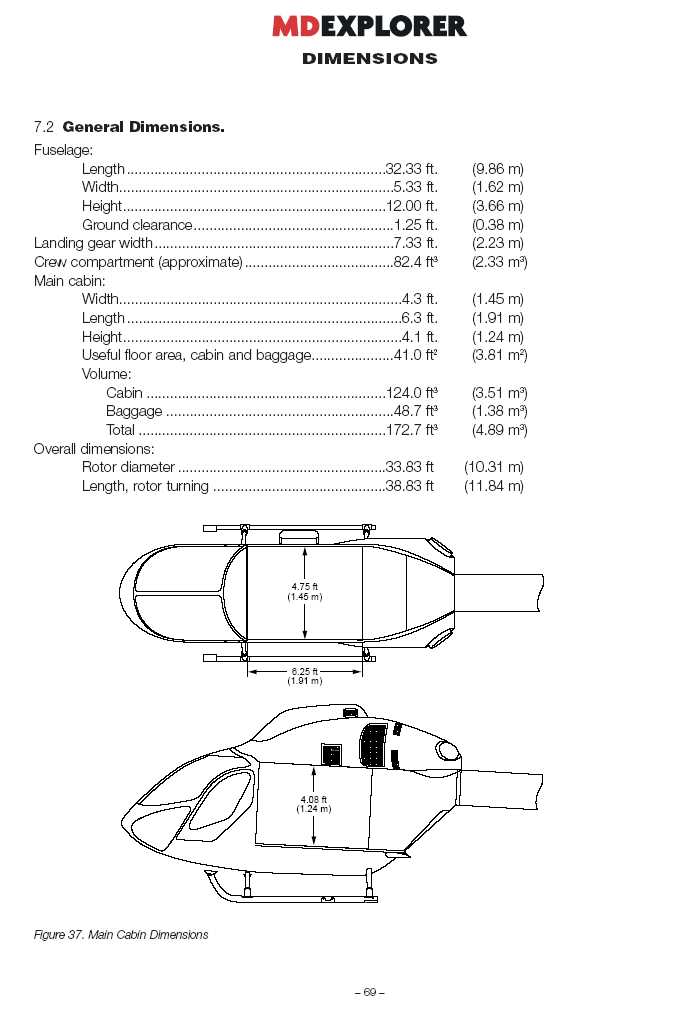
As the MD900 hovers a foot off the ground or taxies forward via ground handling wheels attached, bundles of ammo, food and water cargo on 3' L x 2' W x 2' H SKEDCO plastic sheets are pushed out by a crew chief out the rear compartment where the hatch was removed....they drop to the ground as the pilot gently moves slowly forward...
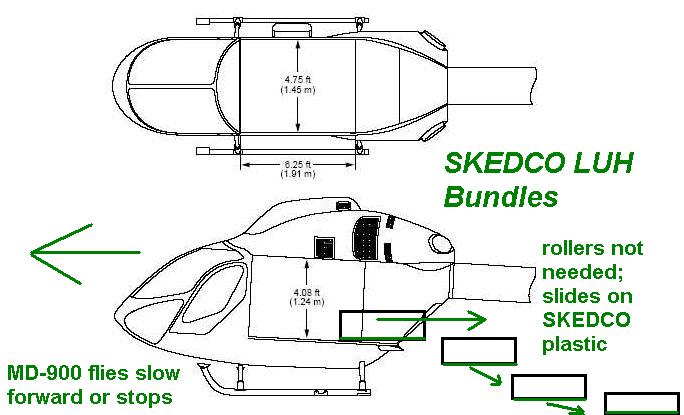
Another crew chief mans on the right side a M240B 7.62mm medium machine gun....
The MD-900 Explorer LUH lifts off and the "kicker" grabs his 7.62mm x 51mm M16A5 and points it out the left side of the LUH...soon the NOTAR chopper is gone....the whole operation is over in less than 1 minute...and the troops in need have the supplies to win the fight...the troops can drag the SKEDCO bundles to safety and distribute supplies out of danger...
In 1995, U.S. Naval Institute PROCEEDINGS magazine accepted an article by 1st Tactical Studies Group (Airborne) Director Mike Sparks proposing small OH-58D Kiowa Warrior "killer bees" be located on the Navy's new Patrol Coastal (PC) ships via adding a small helipad to give the SEALS an air insertion & attack capability.
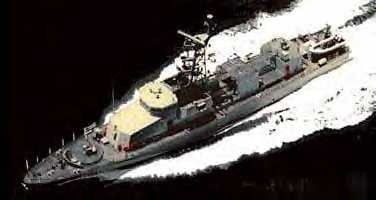
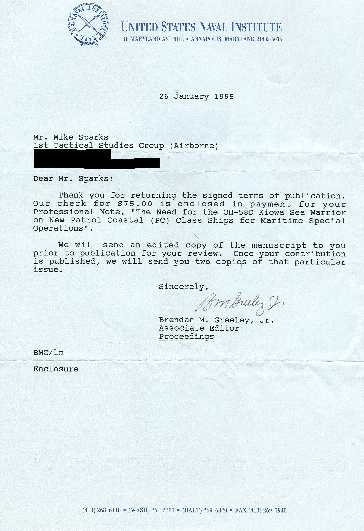
They paid him for the article, but never printed it. Did someone scare them off? Would it "rock-the-boat" (pardon the pun) too much?
globalsecurity.org/military/systems/ship/pc-1.htm
Its ironic, since according to John Pike of GlobalSecurity the Navy discovered the PCs were too large for coastal inshore work ie; get close enough to deliver SEAL teams by small RIB boat. Pike says:
"They have limited endurance for their size, and their combat systems and ammunition allowance do not compare well with similar ships in most other navies. They are about ten times the size of their predecessors but carry about the same payload. It was belatedly discovered that they are too large for the close inshore work for which they were intended."
Maybe if they had printed Sparks' article and added helicopter pads for small helicopters back in '95 the Navy wouldn't be getting rid of the PCs and giving them to the Coast Guard? Here's proof that A/MH-6 Little Birds were used during the 1983 invasion of Grenada to evacuate casualties onto Navy ship decks. Ironic that at the time, DoD and the Army denied that "Killer Egg" A/MH-6s were used in the operation despite amateur video going public showing the "black helicopters" in action. Here, 23 years after the fact, is a picture from DoD of a Little Bird during Grenada delivering a wounded Soldier to a Navy deck.
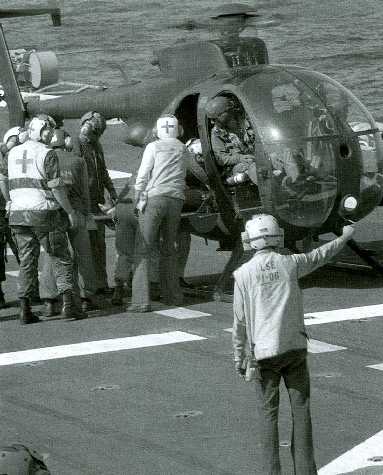
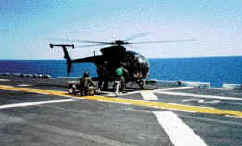
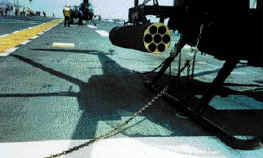
The irony is that at one time the U.S. Army operated shallow draft coastal and riverine watercraft and had no trouble providing a small helipad in the back (stern). Maybe we should do the same today if the Navy isn't interested?
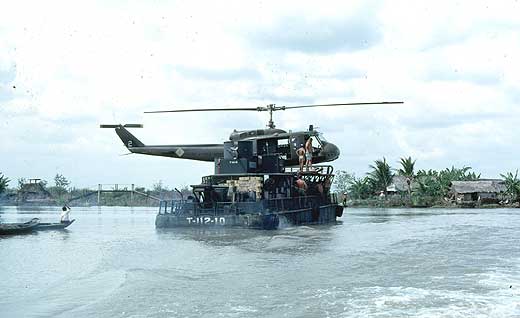
Another option is to have civilian mercenaries like Blackwater operate small coastal patrol ships since they are smart enough to operate small rotary-wing Killer Bees to board pirate held ships etc.
http://hamptonroads.com/node/329441
Blackwater showing off new training ship at Nauticus
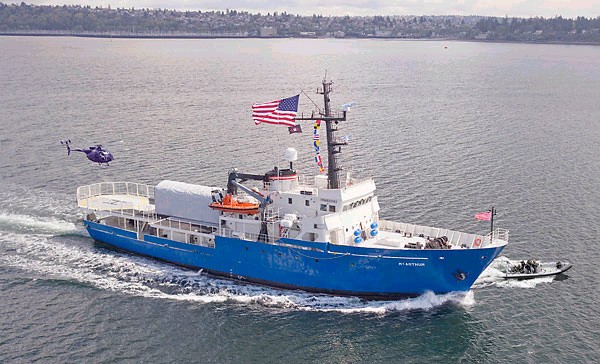
The McArthur, at Nauticus in Norfolk on Tuesday afternoon, is owned by Blackwater and has been outfitted for disaster response and training. (Bill Tiernan/The Virginian-Pilot)
By Bill Sizemore
The Virginian-Pilot
NORFOLK
As it tries to weather a worldwide storm of negative publicity, Blackwater USA is hoping to find a little love this week on the Norfolk waterfront.
The Moyock, N.C.-based private military company is hosting an invitation-only open house today and Thursday on board the McArthur, a training vessel recently acquired by its new maritime division. The ship is docked adjacent to the decommissioned battleship [USS] Wisconsin at Nauticus, the city-owned maritime science museum.
The two-day event is not open to the public or media. It was planned well before the fatal shooting Sunday of at least 11 Iraqis by Blackwater security contractors in Baghdad, which triggered a flood of protests and calls for the company's ouster from Iraq. Whether or not the Iraqi government succeeds in expelling Blackwater, the event at Nauticus signals that the company is actively seeking out new markets. According to a press release issued by Nauticus, Blackwater's maritime division will operate vessels suitable for training, disaster response, law enforcement, surveillance and security, including anti-terrorism and anti-piracy activities. "Nauticus is proud to showcase new maritime technology," Richard Conti, executive director of Nauticus, was quoted as saying.
"Blackwater has a proven record of success in preparing Americans for entering hostile environments."
The company has trained thousands of sailors and other U.S. military personnel at its 7,000-acre Moyock compound. Asked about Blackwater's presence at Nauticus, Mayor Paul Fraim said Tuesday it should not be construed as an endorsement by the city.
"We don't endorse anyone in the context of how they do their business," he said. As far as he knows, Fraim said, Blackwater is paying the normal docking fees for use of the city pier.
According to the Nauticus press release, the McArthur is equipped with state-of-the-art navigation and communication systems, command and control labs, medical capabilities and a helicopter deck.
Blackwater did not respond Tuesday to inquiries about its maritime expansion plans. But the company's Web site says it will soon offer security training services "aboard fully operational maritime platforms."
According to Coast Guard records, the McArthur was decommissioned by the National Oceanic and Atmospheric Administration in 2003 after nearly 40 years as a research vessel. Built in 1966 by Norfolk Shipbuilding & Drydock Co., now BAE Systems Norfolk Ship Repair, the 153-foot ship will be home-ported in Norfolk.
Blackwater also appears to be expanding its air operations. Several aviation-related Web sites have reported that the company, which already owns more than 20 aircraft, is seeking to acquire a Super Tucano light combat plane from the Brazilian manufacturer Embraer.
The propeller-driven planes, which can be outfitted with up to 1-1/2 tons of machine guns, bombs and missiles, are used by Brazil and Colombia to battle insurgents and drug smugglers. Blackwater is buying a two-seat model to be used for pilot training, the Web reports said.
Meanwhile, Blackwater has developed a remotely piloted airship, equipped with state-of-the-art surveillance and communications gear, and is marketing it for use in combat, coastal patrol, and port and border security. It also has an armored personnel carrier in production.
Staff writer Harry Minium contributed to this report.
Bill Sizemore, (757) 446-2276, bill.sizemore@pilotonline.com
By Air...
How did the Little Birds get to Grenada? They were flown INSIDE USAF C-130 STOL transport planes two-at-a-time and airlanded at nearby Barbados.
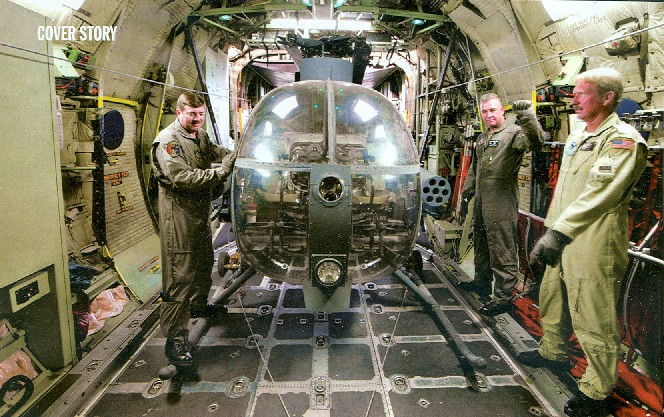
As a matter of fact, small O/A helicopters can be carried inside USAF transport planes carrying Paratroopers who can first jump in to secure the drop zone, which then becomes an "assault (landing) zone" for the helicopters to be airlanded shortly afterwards, as the photos below prove. The OH-58D has special kneeling landing gear to be carried inside C-130s.
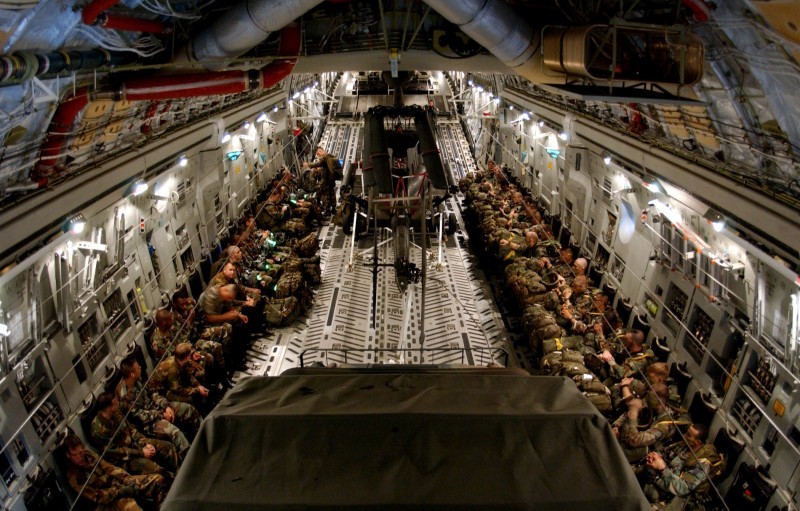
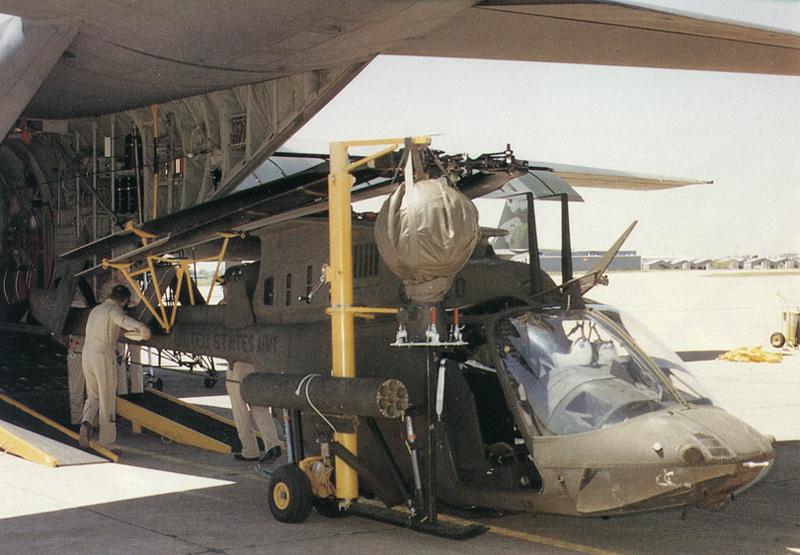
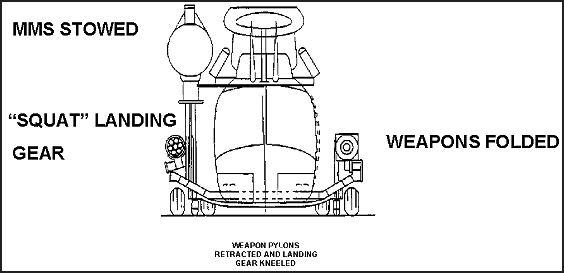
Its an inside shot of a C-17 Globemaster III with Paratroopers rigged for a static-line parachute jump, while IN THE SAME AIRCRAFT is an OH-58D Kiowa Warrior O/A helicopter and a BS Humvee truck. Obviously there is enough space inside a C-17 to parachute troops and have center-loaded cargo which doesn't have to be a vulnerable, unarmored Humvee truck victim but should be a M113 Gavin armored track victor.
Little Birds can also hover insert/extract troops by FRIES if they cannot land. Pics of this are rare, here's the best one we've seen showing the FRIES set up on the A/MH-6:
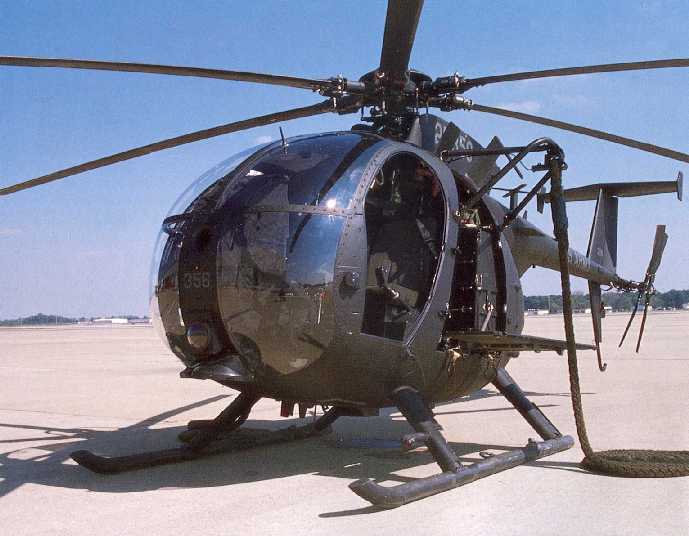
Here are some 1:18 scale models and action figures of a MH-6 insertion of SFOD-D operators onto a rooftop by thesoldiersplace.com
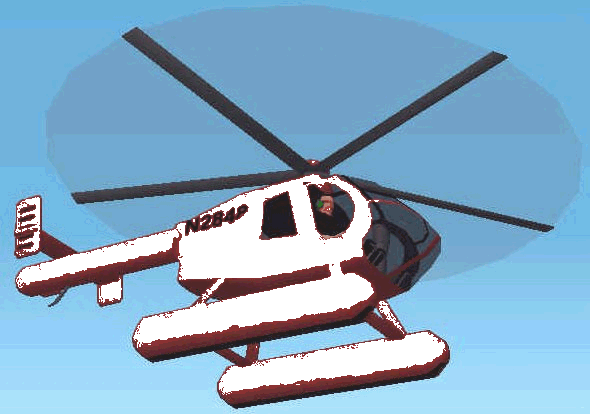
These naval helicopters could be fitted with permanent or pop-out floats to land on the water for SEAL team insertion/extraction. If the Navy SPECWAR people are smart--which they are--they will develop a waterproof container to fit to their new SpecOps nuclear submarines to carry some "Killer Bees", perhaps NOTAR Little Birds or MD-900s to transport 1 to 3 SEAL "platoons" of 7 men by air with stealth, making them defacto "Submarine Aircraft Carriers".
Why be content with just the floats being inflated? Why not the ENTIRE airplane? An option would be to develop INFLATABLE FIXED-WING SEAPLANES for SEALs to deploy from their new SSGN spec ops submarines.
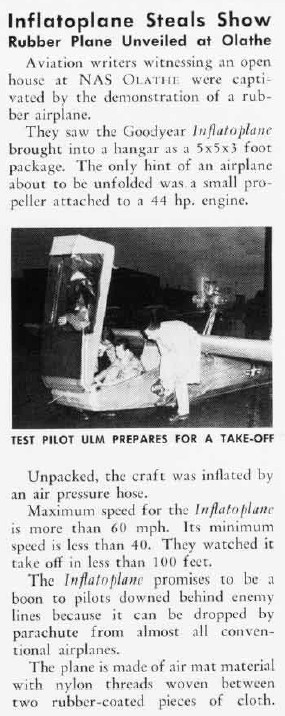
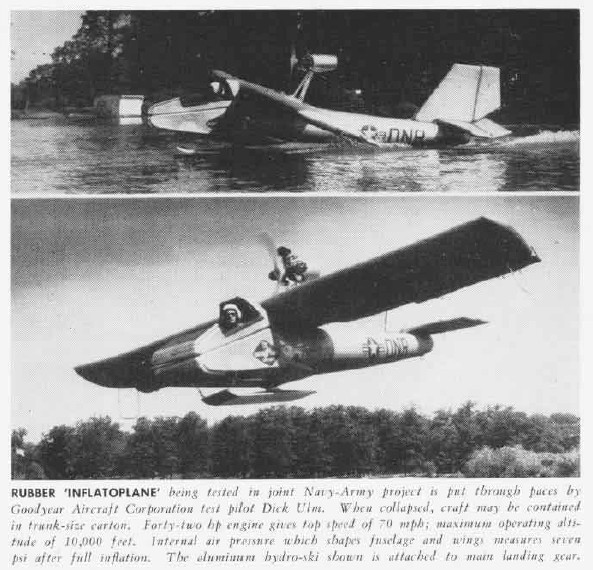
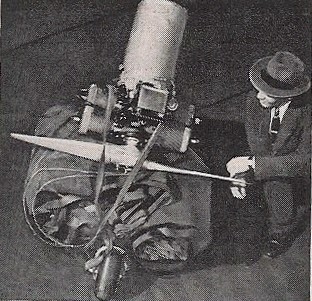
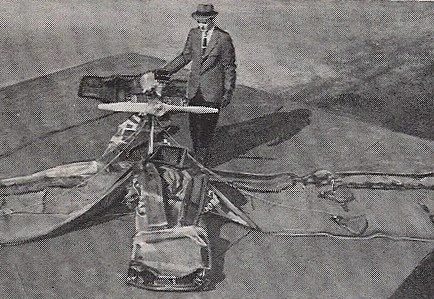
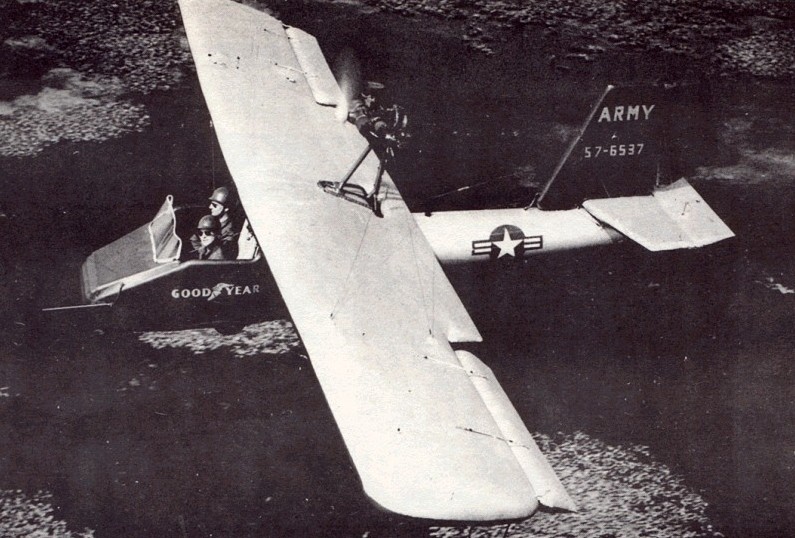
SEALs use inflated rubber boats for compact storage, why not faster and longer ranged seaplanes?
So, Carlton Meyer is right all along wanting a "Pegasus Cavalry" composed of swarms of "Killer Bees" ie; simple piston-engined helicopters. He writes:
"Another advantage is that airborne radar only tracks fast-moving objects. AWACS ignores anything slower than 70 mph, otherwise the screen would be cluttered with fast automobiles. Yet what if a group of small helos cruised up to an airbase at 60 mph? The USAF would be caught with its pants down and $250 million F-22s on the ground.
Those now produced are F-22s, they have no ground attack capability at all. The USAF hopes to find funding in a few years to develop a ground attack F/A-22. They current use the false F/A-22 designation to BS everyone."
However, in the U.S. Army/marines we have lost air/ground interface by first getting rid of fixed-wing observation/attack/liaison aircraft in the late 1960s in favor of the mid-sized turbine helicopter as the panacea for this mission as well as a replacement for mechanized maneuver in light tracked AFVs and parachute delivery by fixed-wing transports.
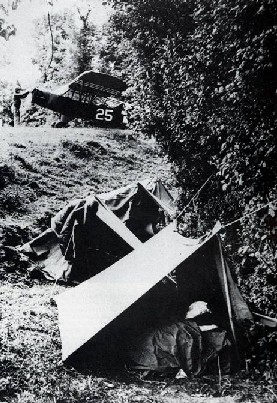
 youtube.com/watch?v=1f5qK-HwbTc
youtube.com/watch?v=1f5qK-HwbTc
In wars previous, we had "grasshopper" STOL fixed-wing observation/attack aircraft that were co-located at all times with ground maneuver units by being owned and operated by FIELD ARTILLERY units to act as their spotters. The Henry Fonda 1965 film, "The Battle of the Bulge" showcases how manned grasshopper aircraft were critical to our success in WW2 despite us having inferior medium tanks compared to German heavy tanks. In Vietnam, to try to compensate for the foot troops after helicopter insertion having little firepower, we created artillery firebases that could drop shells so long as the air-mobile infantry always stayed within range of the guns. We passed on this American style of warfare to the South Vietnamese who did not have the industrial base nor could afford to keep even simple Huey type helicopters flying. The North Vietnamese then obtained longer-ranging M46 130mm artillery and crept into range of the firebases and began to smash them, one-by-one until the entire ARVN Army collapsed. Instead of learning from this, in the aftermath of Vietnam, we Americans took the already too large 4-ton medium Hueys and HueyCobras and replaced them with even larger, heavy 7-ton UH-60 Blackhawk transport and AH-64 Apache helicopters as Army Aviation became its own branch and wanted its own perennial "cash cows" to soak up funding and prestige from Congress. While the Blackhawks/Apaches are more battle-hardened, they are maintenance pampered and off in their own world far away from the ground troops, contributing less to their requirements; ie they offer LESS capabilities for MORE money. This tale of bureaucracies making their platforms heavier and more costly allegedly to "take care of the troops" via heavier protection also takes place in the ground maneuver units where 10.5 ton M113 Gavin light tracks were attempted to be replaced by medium-heavy and overly complex and poorly designed (fuel tank in center of the vehicle!) 33-ton M2 Bradleys. Now we have a heavy part of the Army that can fight in open terrains but cannot move through closed terrains and over swamp, rice paddy lakes and rivers. The light part of our Army full of walking infantry hubris hasn't realized yet its mission should be 3D maneuver via light tracked AFV mobility through difficult terrain types, so what a light tank can do gets lost in the shuffle of two camps trying to validate their extremes of fighting all on foot or all in vehicles.
The point of all of this is that SIMPLER AND MORE EFFECTIVE VIA LESS COSTLY HAS NO CONSTITUENCY WITH MILITARY BUREAUCRACIES that want things to be costly, and I accuse do not really want to fight when you get down to brass tacks due to Dixonian psychological reasons, because our all volunteer military draws on and is filled by weak co-dependents and narcissistic egomaniacs who are in the service for self.
Looking at things clearly, its not that the UH-60, AH-64 and the enduring CH-47 as large helicopters have no mission on the battlefield, its just that their scaling up has consequences on planet earth that harm their ability to contribute to the fight continuously as smaller helicopters and fixed-wing planes can. There are ALWAYS two battles going on, a battle against the earth itself to exist PLUS the fight against other humans. In the American military mind this reality is not understood due to our faulty understanding of the laws of physics and human war. If you use your larger size to be more armored and better armed against humans, its going to likely harm your resiliency against the battle against the earth to stay functional and fly. If you "supersize" your helicopters its difficult to tow them on trailers so they can be a part of the maneuver force instead of working around them, but it is possible so there is no excuse for Army and marine aviators doing their current junior "flyboy" air base imitation of the USAF.
If however, you keep your helicopters small and simple, they can sip fuel instead of guzzle it, they can sublimate themselves so they can be CO-LOCATED with ground maneuver forces to be there in continuous ways the larger helicopters cannot. Sometimes LESS IS MORE. The same thing applies to the M113 Gavin light track that can by virtue of its lightweight can be EVERYWHERE and be used by EVERYBODY since it essentially is a 5-ton cargo capacity truck engine in an armored box on all-terrain tracks. Everyone that can handle operating a 5-ton wheeled truck can and should be in a M113 Gavin track that can be fully armored to prevail on the non-linear battlefield dominated by high explosives.
What we propose is that the U.S. Army follow the lead of the British Army and obtain some small, simple light observation/attack helicopters to be ORGANIC to ALL of its ground maneuver units not be a part of Army Aviation Branch's empire of stand alone and afar units. We propose that both fixed and rotary-wing "Killer Bees" be in EVERY U.S. Army Infantry/Armor Brigade either in the new RSTA Squadron or the Fires (artillery unit). For details on the fixed-wing "Killer Bees" needed go to this web page:
reocities.com/usarmyaviationdigest/fighterinabox.htm
In this presentation, we take the minimalist approach for helicopters and outline the simple to maintain, fuel-efficient A/MH-6 Little Bird (MD520N) as the "rotary-wing killer bee". Most people know Little Birds can carry 4 men on external planks and be armed with 2.75" Hydra 70mm rockets, 7.62mm miniguns, 30mm autocannon and Hellfire ATGMs. Our Rotary-Wing Killer Bees would be even better because they have the following new features:
1. MD520 with NOTAR for stealth
2. 15% bigger engine to stop Army aviators whining about NOTAR power loss by 15% (beats getting shot down, huh?); a jet engine on a pod for 250+ mph speeds to avoid being shot down
3. Be painted in ALL GRAY camouflage so it blends into the sky unlike absurd Fulda Gap green
4. A lighting system to light up the Little Bird during the day time to blend in with the sky
5. Has 4 x very wide rubber tires based on Dave Hansen's trackwheels design so it can make rolling take-offs from small stretches or road or dirt strips sealed with Rhino Snot to carry greater payloads and when not flying be easily towed and rolled onto trailers (into ISO containers) and XM1108 Gavin logistics tracks for GROUND MOBILITY If its not needed to fly, we conserve fuel by ground mobility. Tires may be big enough to enable floatation in water for landings there. No more of the skids and attaching small wheels and expensive roller platforms non-sense.
Steve Cook writes: "You could probably permanently attach ground handling wheels directly to the landing skids, that way ground crews don't have to fu*k with installing/removing them."
6. Has a recovery parachute (RP) system in the tail boom so this shot down, you die perception of helicopters stigma is erased
7. Armament includes AIM-9X Sidewinder and AMRAAM air-to-air missiles so it can shoot down faster moving aircraft in event of an aerial meeting engagement. Its high time we wake up to the fact that anything that flies can be shot down and anything that flies with an all-aspect AAM can be the victor not the victim when this happens. In the Falklands a Scout helicopter was shot down by an Argentine Pucara turboprop fixed-wing aircraft due to being slower and less armed.
8. Has a specialized ISO container "Battle Box" and SOA Butch Walker ANT-ISO trailer/MHE for concealment, and weather-protected maintenance.
9. Has trailer than doubles as a landing pad
Here are some strange landing pad/roller combinations in use to move around skid helicopters:
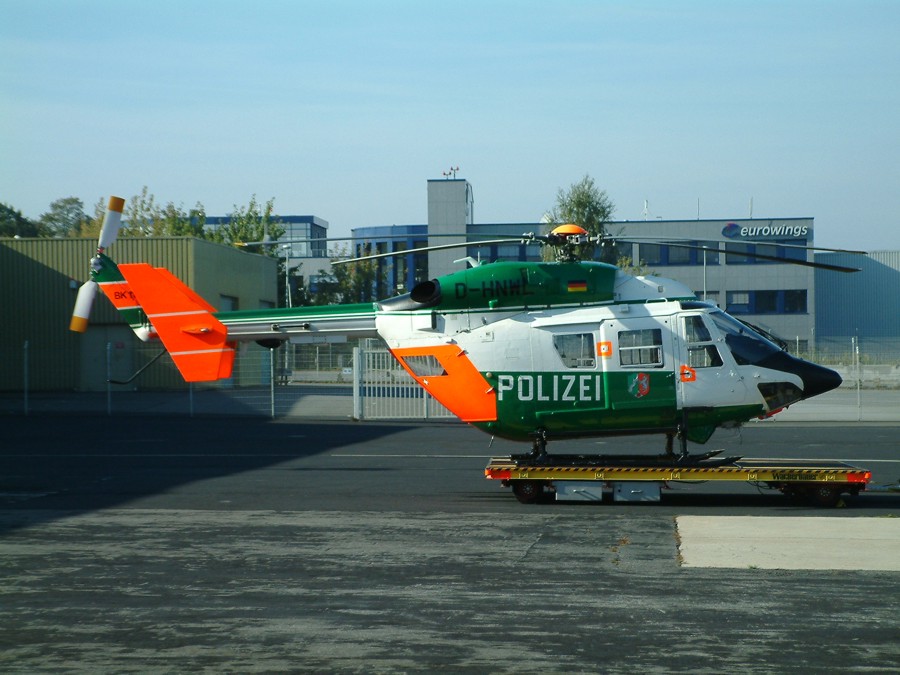
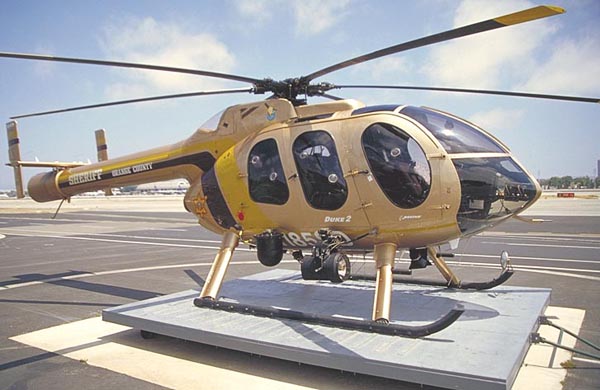
Ralph Zumbro writes: "Mike. the bird doesn't need ground mobility out in the hills, just on the pad. so combine the transport truck with the landing pad...when the bird comes in, the ground crew NCO just drives out onto the pad, the bird lands on the built in transport/maintenance pad on the back of the truck and the driver pulls it off the pad to the maintenance area??? If there's a runway, the truck can also provide forward speed for take off...maybe."
A great idea Ralph! The trailer IS the landing pad = reduces dust kick up that creates BROWN-OUT...
YET ANOTHER REASON
why we need helicopters to be trailer-mobile.....
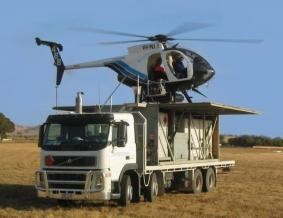
SIDEBAR: Aussies prove our ground-mobile helicopter concept: Mobile helicopter landing and maintenance facility, when is the U.S. Army going to do the same?
gizmag.com/go/4745
October 15, 2005 Australia's vast distances, harsh climate and isolated communities present major challenges for companies delivering vital services like electricity. To help in this environment, Brisbane-based Aeropower has developed a Volvo 380hp FM9 truck into a mobile helicopter landing and maintenance facility. Aeropower's Volvo-based mobile facilities for its fleet of Hughes MD500 helicopters plays an essential role in the aerial survey and maintenance of high voltage power transmission lines by providing not only a safer, elevated landing platform for its helicopter crew, but also fuel, water and maintenance provisions to maximize operating efficiency in the field.The portable helicopter landing and service unit is actually constructed from a standard 20ft shipping container fitted with a 4,000 litre fuel tank and a 7,000 litre water storage, all topped by a fold out landing pad. This allows safer refueling and landing for the helicopter while delivering fuel and maintenance closer to the areas where the Aeropower team is operating, reducing transit time between refuels.
Often traversing roads that are little more than dirt tracks the Volvo FM9 has proven its dependability in the toughest conditions ensuring it is always able to establish a mobile operations base close to where the helicopter is working. With its assistance Aeropower is able to move down the power line without the need to enter farmers' properties, eliminating the need to drive across and damage valuable crops.
Aeropower's Steve Jones believes it was the first company in the world to develop and operate mobile helicopter landing platforms. "We started using mobile landing platforms in 1992, but the original vehicle we used was not up to the task. We found that we could not fully load the unit as it would have been overweight on the front axle."
The problem led Aeropower to search for a replacement truck, a task that was made easier by Volvo's proactive attitude according to Steve, "We're not a trucking company, so we knew very little about specifying a truck and that is where Volvo really excelled."
"Volvo Trucks however came and met with us and used their Weight Information System (WIS) and Performance (Perf) programs to match our requirements with the appropriate specification truck," he added. "It was that sort of pre-sale service, combined with very competitive pricing, that led us to choose the Volvo."
The twin-steer Volvo FM9 has allowed Aeropower to fully utilize the potential of its helicopter landing and service unit now able to run with the tanks fully laden. The 4,000 litres of Jet Fuel - A1 and 7,000 liters of de-mineralized water means the fluids alone tip the scales at 10 tonnes and when fully loaded the Volvo FM9 comes in a tonne under its 28 ton GVM.
The need to tackle rough country to be close to helicopter operations was another essential element for Aeropower and this meant the 8x4 chassis was the perfect choice. The FM9 comes standard with cross locks in each rear axle, and disc brakes with ABS/EBS added to the attraction and has resulted in tangible savings in terms of tyre wear. Steve attributes this to the way the Volvo FM9 puts its power to the ground and its smooth effective braking.
The Volvo FM9's specification enables Aeropower to utilize the truck through a diverse range of terrain from urban areas to rural bush tracks and to even some of the remotest parts of the Continent. Coupled to the D9A 380hp Volvo engine is the V2214, 14-speed split and range change transmission, which has the capability for high average cruising speeds - making it ideal for those long transport legs such as across Australia's Nullabor Plain.
The truck not only provides vital refueling and replenishment in isolated areas, but also delivers a safer and better landing facility for the Hughes MD500 Helicopters used by Aeropower. The level elevated landing platform three meters off the ground, keeps the helicopter clear of dust, which can be extremely damaging to jet engines. The platform also ensures the aircraft is clear of people on the ground improving the safety of operations and has allowed ground crews to get into areas they could not even contemplate in the past, further cutting transport time for the helicopter crews.
"Our operations are spread over a vast range of terrain and locations all over the country," said Steve. "We are currently operating in Western Australia, but soon we will be back on the east coast working in Far North Queensland, which gives you some idea of the sort of territory the Volvo FM9 has to tackle."
10. As soon as possible a Piasecki ducted thrust unit and wings would be added to Little Birds or new-technology autogyros for 200+ mph speeds: retired U.S. Army LTC Chuck Jarnot's visions:
 youtube.com/watch?v=xBHP_8mycgc
youtube.com/watch?v=xBHP_8mycgc
1. Mustang "Viper" 1-seat Hover-Gyro
* 1200 lb max take off weight
* 100% Hover capability
* 180 hp DeltaHawk diesel engine
* 120 knots Cruise speed (Cessna 172 = 115 knot Cruise)
* 135 Knot Dash Speed
* 4 hours fuel at Cruise speed
* Cost about $60k (Cessna 150 $100k)...before avionics
2. Mustang "Colt" 2-seat Hover-Gyro
* 1500 lb max take off weight
* 100% Hover capability
* 180 hp DeltaHawk diesel engine
* 120 knots Cruise speed (Cessna 172 = 115 knot Cruise)
* 135 Knot Dash Speed
* 4 hours fuel at Cruise speed
* Cost about $90k (Cessna 172 $120k)...before avionics
3. Mustang "Pony" 5-Seat Hover Gyro
* 3,500 lb Max Take Off weight (Bell Jet Ranger)
* 100% Hover capability
* 450 hp DeltaHawk diesel engine
* 135 knot Cruise (Jet Ranger 95 knots)
* 155 Knots Dash Speed (Jet Ranger 120 knots)
* 4 hours fuel (Jet Ranger 2.5 hrs)
* Cost $250k ($600k for Jet Ranger)
4. Mustang "Stallion" 10 Seats (Sikorsky S-76)
* 8,000 lb Max Take off weight
* 100 % Hover capability
* Two 450 hp DeltaHawk diesel engines (900 hp)
* 170 Knots Cruise Speed (S-76 145 knots)
* 210 Knot Dash Speed (S-76 160 knots)
* 4 hours fuel (S-76 3 hours)
* Cost $750k (S-76 $3 Million)
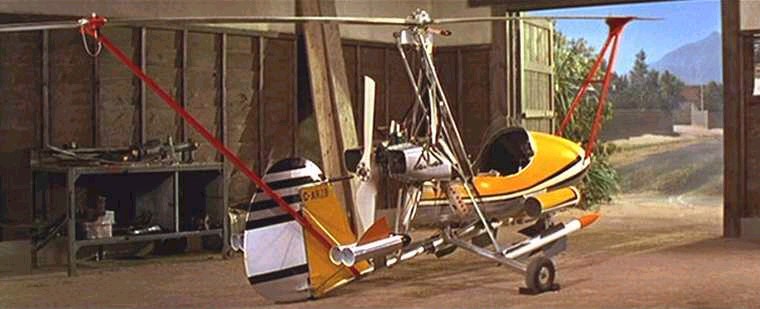
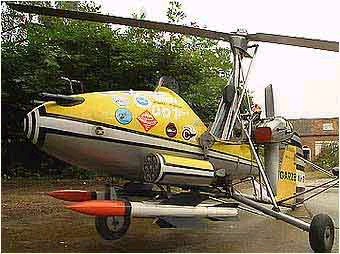
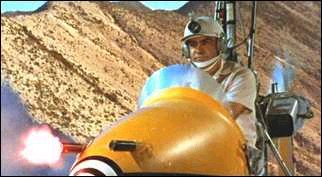
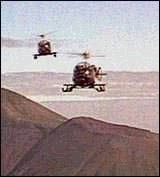
In the 007 movie, "You Only Live Twice" Sean Connery flies the autogyro "Little Nellie" against Bell Model 47s in air combat! Art imitates life? Or the other way around?




Time to Return to the Mosquito fighter-bomber at very low-level concept: in praise of wood
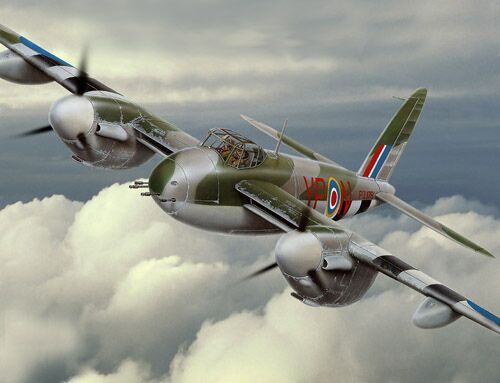
Superb illustration by Lance Russwurm
Mike Kemble writes: the Mosquito was an exceptionally streamlined design. The fuselage was made in left and right halves, which were shaped in concrete rigs and then joined. They were made of balsa wood between two layers of cedar plywood. The rest of the airframe was primarily made of spruce, with plywood covering. The wing was built in one piece, and attached to the lower side of the fuselage structure. The bomb bay was below it. The Merlin engines were put in steel-tube mountings in under-wing nacelles, which also contained the main landing gear. The radiators were housed in the extended leading edges of the wing center section, with inlets in the leading edge and outlets under the wing. This was an arrangement which reduced drag and even contributed positive thrust. The cockpit, over the wing leading edge, had seats for the pilot and the navigator. The bomber and reconnaissance models had a transparent nose. The first production version was the PR Ski reconnaissance aircraft, powered by Merlin 21s, which arrived in the summer of 1941. Only a few of these were built, before production was switched to the B.IV bomber. The first Mk.IVs were converted Mk.Is, but from November 1941 on wards the production B.IVs arrived. Originally they carried four 250 lb bombs, but later a switch was made to four 500lb bombs with shortened tail fins. The PR.IV was a reconnaissance conversion of the B.IV. The T.III trainer appeared in early 1942, but was built in relatively small numbers.
The Mosquito was designed as an unarmed, high-speed bomber. By dispensing with defensive armament the size, weight and drag of the aircraft could be greatly reduced. It was assumed that the resulting small, fast aircraft bomber would be almost impossible to intercept. The de Havilland design team lead by R.E. Bishop, R.M. Clarkson and C.T. Wilkins proposed the design of a twin-engined bomber, able to carry 1000 pounds (454kg) of bombs over 2400km, and able to reach a speed of 655km/h. The staff officers of the RAF and the officials of the Air Ministry where highly skeptical. They had earlier seen how some fast bombers had fallen short of the promised performance, or had been overtaken by progress in fighter designs, and became highly vulnerable. Also, de Havilland proposed a wooden construction, which is generally heavier than a metal one, but could be given a very smooth finish. However, a wooden structure was certain to deteriorate in a tropical climate, an important consideration for the RAF.
The project proceeded hesitantly, and would probably have been cancelled without the support of Sir Patrick Hennesy. Finally, a small series was ordered, as reconnaissance aircraft. The prototype was built in great secrecy in Salisbury Hall, and made its first flight on 25 November 1940. The D.H.98 handled well and reached 632 km/h, faster than the fighters in production. From the start, high priority was allocated to a heavy fighter version, and the initial contract was amended so that half the order became fighters. They emerged as NF.II night fighters, with four 20mm cannon, four .303 machine guns, and AI Mk.IV radar. The NF.II became operational in May 1942, somewhat delayed by a shortage of Merlin engines and the end of the German night bomber offensive. Later night fighter models had AI Mk.VIII or Mk.X radar. The installation of the radar dish in the nose required the deletion of the machine guns.
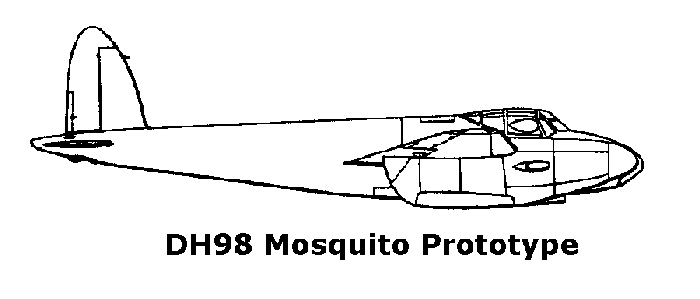
In June 1942 the FB.VI fighter-bomber model flew, and this was to become the most built Mosquito. It had the 4 x .303 guns and 4 x 20mm cannon of the night fighter, but could also carry two 500lb bombs internally, and from 1944 on wards they were equipped to carry four rockets or a 500lb bomb under each wing.
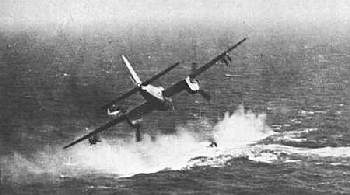
A variation was the FB.XVIII, sometimes called "Tse Tse", in which the 4 x 20mm cannon were replaced by a single 57mm Molins cannon, which weighed 715kg and fired 6lb shells. Only 2 x .303 guns retained, and additional armour was installed. These were originally intended as anti-tank aircraft, but because the 57mm cannon was obsolete in this role they were directed to Coastal Command.
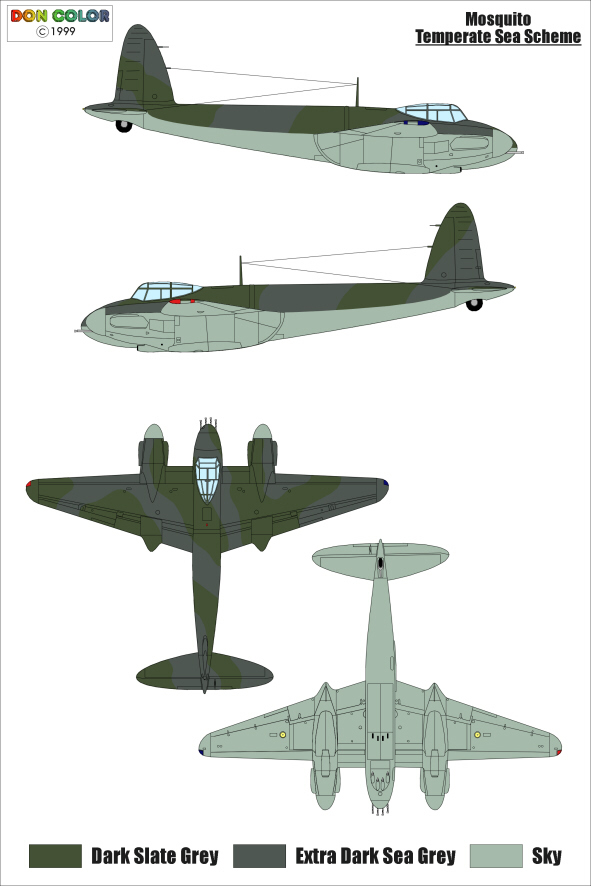
The high-altitude performance of all models was greatly increased by the installation of Merlins with two-stage compressors, as installed in the PR.VIII, B.IX, or NF.XXX. The B.XVI introduced further refinement, with "handed" engines to eliminate torque, and a pressure cabin. Some were fitted with bulged bomb bay doors, and could carry a single 4000lb (1814kg) bomb.
Mosquitoes Save the day and rescue French Resistance Fighters from Execution!

The raid on Amiens Prison is probably the single most famous raid undertaken by the Mosquito. The idea was to precisely bomb only certain buildings in the complex in order for many hundreds of prisoners to escape the clutches of the Gestapo. This took place on February 18th 1944. Members of the French Resistance were being held there, awaiting execution. The weather was bad. They were not supposed to fly, but if the Mosquito pilots don't fly the mission the resistance fighters will die. They decide to go anyway.
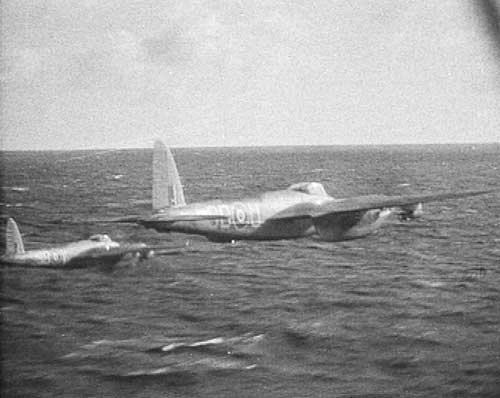
18 Mosquitoes took part, flying just a few feet over the top of the water, at low-level to sneak in under German radar, then swooping down at well in excess of 300 miles an hour to a height of about 60 feet from the ground in order to precisely blow holes in the prison walls for the resistance fighters to escape.
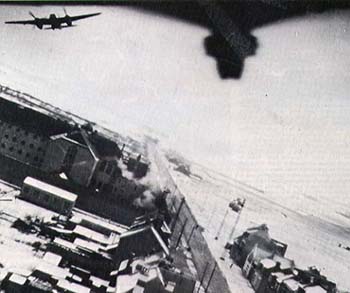
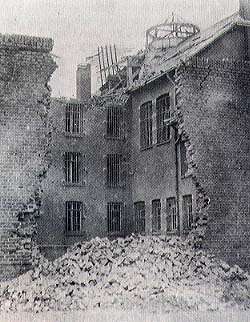
Other targets were the guard sleeping quarters and eating areas to kill the German torturers and guards.
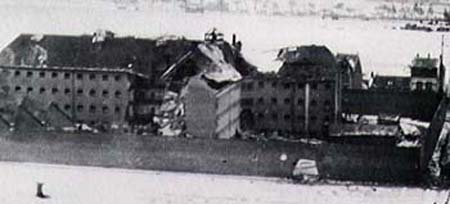
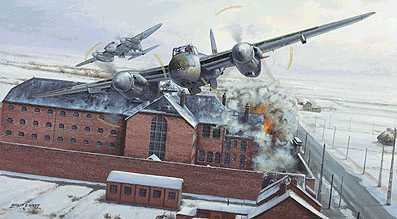 Prisoners escape!
Prisoners escape!
Here is another painting of when the mighty Mosquito pilots smashed Gestapo Headquarters!
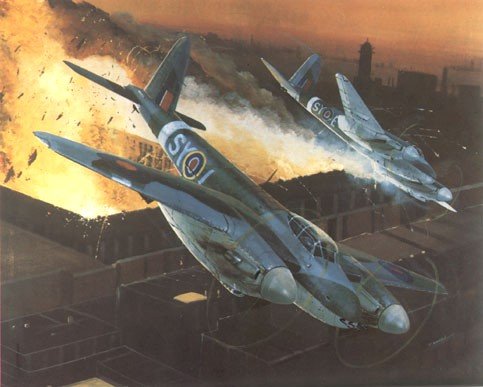
Made of wood to conserve on wartime metal supplies, the Mosquito (affectionately known as "Mossie") performed a variety of tasks for the Royal Air Force. It saw use as a bomber, night-fighter, recon aircraft, and was well respected in all roles. This tremendously successful aircraft also enjoyed the lowest loss rate of any Bomber Command aircraft. The scene in this painting takes place of 11 April 1944, when six Mosquitoes of 613 Squadron came in fast and low over Holland to attack the Gestapo headquarters across from the Peace Palace at The Hague. Here we see two of those six Mosquitoes just after they have neatly bounced a pair of bombs through the front door of the Gestapo building.
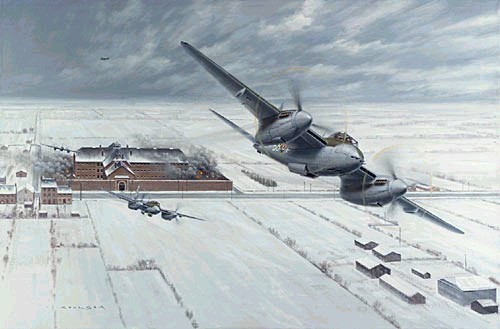
Its no secret the costs and complexity of today's aircraft even unmanned ones has resulted in us going out of the air operations business ie; we have no aircraft readily available or overhead. We are killing the whole point of aviation with our greed. We must fight this not embrace this or else we will continue to be "grounded" by our own stupidity. They say "necessity is the mother of invention", well its high time we start re-inventing military aviation into something that works and is available. Let's begin with what we make aircraft out of.
Building aircraft out of metal or exotic composites is simply too expensive and demands highly skilled people. The good news here is we have a role model of a nation under extreme necessity inventing not only a solution but something amazingly better; the British Mosquito fighter-bomber which was made of WOOD. By making the Mosquito out of lightweight wood, the Brits were able to get absolute maximum power-to- weight ratios for 400+ mph speeds and these mass produced fighter-bombers were able to swarm all over Europe during WW2 to interdict supply trucks, panzers, troops and even locate and destroy the elusive V-1 and V-2 mobile launchers. "Quantity has a quality all its own" is about the only true thing the mass murderer Joseph Stalin ever said. If we are going to prevail over mobile enemy missile launchers we are going to need swarms of MANNED aircraft flying constantly overhead the battlespace to find them and destroy them. We are not going to get this with $56M F-18 jets at 600+ mph. The first fixed-wing "Killer Bee" was the British Mosquitoes in WW2. So where are they now if they were so good?
There remains only 1 flyable Mosquito in the world today because after a few years the glue holding them together began to deteriorate. Enter the jet age, and the Mosquito is all but forgotten except to those aviation wonks who might catch a History channel TV show on how the Mosquitoes kicked ass in WW2 conducting low-level precision bombing raids on Gestapo prison walls to enable French resistance fighters to escape execution. Years before Notre Dame football coach, Knute Rockne was killed when his Ford Tri-Motor's wooden wing spar snapped in flight. All of these wood stinks events are the result of early limited know-how (technology) failing, and people throwing then the baby out with the bathwater. Today, we have the technology to not only seal wood completely from rotting, we can bond it so well that it will not come undone. We can cover wooden structures with fire-proof and ballistic materials so well that we will not even miss metal. Howard Hughes' amazing wooden H4 Hercules seaplane transport would work amazingly well if it had today's high power-to-weight turboprop engines instead of the piston engines he had to lift his "spruce goose". The point is that its high time we return to WOOD as an aircraft construction material.
Benefits of Wood:
1. Low Cost
2. Lightweight
3. Easy to work with even by untrained people
4. Wood absorbs/dampens vibration
5. Stealthy to radar
America's Low-Level Steel Mosquitoes: Pappy Gunn and Kenney's B-25/A-20s in the Southwest Pacific
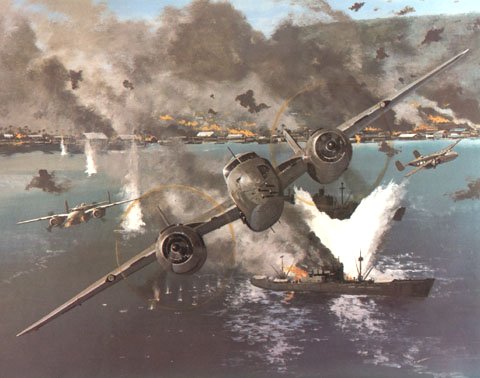
Chuck Myers writes:
"Once upon a time while serving as Dir Air Warfare in OSD, I discovered that when I was speaking as an advocate for low altitude attack tactics I was not being understood. Most pilots and others were thinking that 'low altitude' meant flying at 300 to 500 feet. This discovery led me to write a paper which I titled: 'Minimum Altitude Attack' which reflected my experience as a pilot in the Fifth AF, Pacific Theater. Our experience was flying attack versions of B-25s and A-20s where our PRIMARY weapon was either eight or twelve 50cal guns firing forward.
The (A-26) B-26 Invader: WW2, Korea, Cuba, Congo, Vietnam: the ultimate low-level "Steel Mosquito"
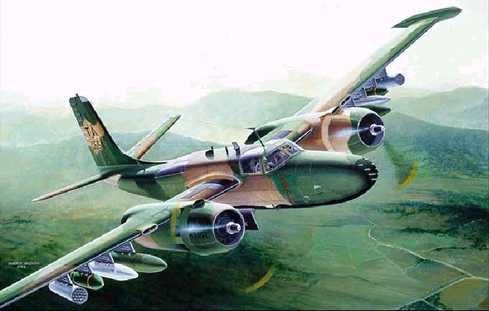
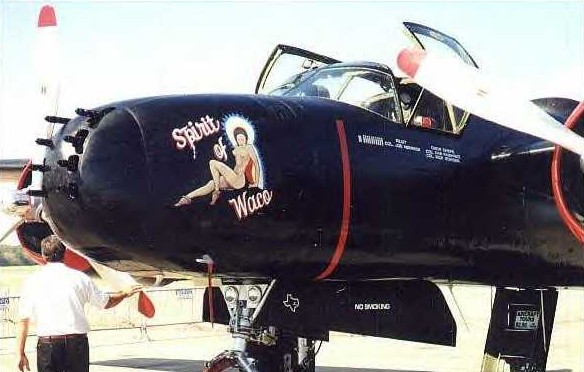
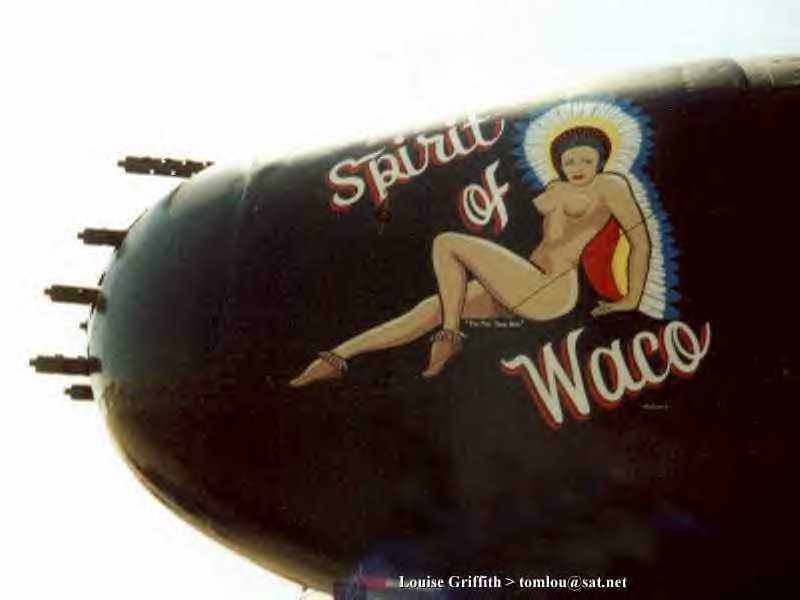
 scribd.com/doc/125458343/B-26B-Invader-WW2-Korea-Bay-of-Pigs-Vietnam-Africa
scribd.com/doc/125458343/B-26B-Invader-WW2-Korea-Bay-of-Pigs-Vietnam-Africa
The B-25 Mitchell: scourge of Japanese shipping!
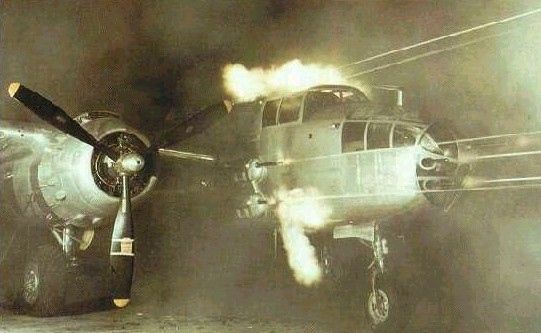

No gun sight necessary; fly until the target fills the windscreen and then hold down the firing button (oh yes, we also dispensed small bombs with 8-10 sec delay or streams of parafrags which gave us time to move forward beyond the blast. Meanwhile, our rear gunner was leaving a wake of 50cal behind. Re altitude: I never crossed a target much above fifty feet and if it was a ship: mast head height. The operations officer was adamant: 'DO NOT hit the target with the airplane; if you do, I'll ground your ass!!' This tactic was not a contest in 'bravado'; it evolved as the best way to avoid being hit by flak and small arms (of which there was a lot). It also solved today's problem of "gross errors" in dispensing ordnance. I have never been great at bombing, especially with fighters (can't hit my ass with both hands) but I will testify that with 'minimum altitude attack,' I have NEVER missed an intended target, even though, at the time I had less than a thousand hours of flying time. Have I ever been hit by enemy fire? Yes!! That used to be accepted as part of the job environment; its just that our airplanes seemed to be able to tolerate a few holes here and there. Also, it was accepted that beating the crap out of the enemy in support of the war was worth the risk of a first lieutenant. By the way, if you are into suicide, try flying over a contested zone/battle field at 300 to 500 feet; I can assure you a short tour (regardless of how fast you fly). Keep this number in mind: 50. Maximum Survivability Altitudes: Below 50' or above 50,000'. What is my favorite airspeed (considering our purpose is to be effective vice just survival): 250 to 300 kts. in an agile, tough aircraft. Re ALTITUDE: fly in the terrain mask. Ordnance Characteristics: weapons that do not force the pilot to remain above the mask for periods in excess of 10-12 seconds for delivery/application. The only existing weapon that really satisfies this criteria is a gun (unless we revive some of the old stuff that we could stream behind from WWII, Korea and SEA).
PARAMOUNT RULE: you do not indulge in these tactics now and then; has to be a full time occupation or forget it. Sporadic attempts will be fruitless and disastrous. I know that the USAF/USN/USMC aviation 'managers' will not permit and, considering that their aircraft are inappropriate for such use, I agree with them. Ergo: without a major change in equipment, we are unlikely to see the kind of maneuver air support (MAS) our grunts need.
Masking at 300-500 feet AGL: zero masking and its an altitude that suits the defenses just fine.
You reminded me of my first ever combat mission: attacking a Japanese airfield in the Celebes with waves of B-25s. My impression was: this must have been like the charge of the light brigade. We flew with the windows open thus inhaling the dust and smell of cordite from the exploding ordnance, the roar and smell from of our own guns and re altitude, I felt like I was riding a TALL FAST HORSE (maybe 200 mph at 30 feet). As we crossed the beach outbound, looking back while turning, I saw a B-25 at about a hundred fifty feet AGL streaming heavy smoke and slowly rolling inverted and into the target area (quite a sight!). When we returned home at the debrief, I remember the veterans (I was a 19 year old new kid) commenting that ol' whatshisname (the casualty) was flying too high 'again.'
I got the message.
I can remember in New Guinea, coming home with Kuni grass in the antennas beneath the fuselage (of course, that grass grows at least ten feet tall)."
Noah & the Ark and Killer Doves
Problem: exposed ground forces in flimsy wheeled trucks and vulnerable tents have no air observation/attack since aircraft need air bases and the egomaniacs operating them are working for themselves and always have myriad ready-made excuses for not flying for someone else
Solution: Noah & the Ark and Killer Doves
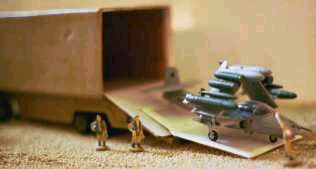
The Ark
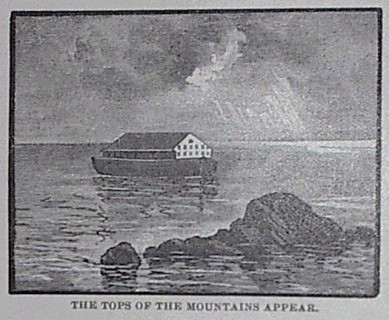
All Army maneuver units are in tracked armored vehicles and ISO container BATTLEBOXes that can collect their own energy and distill water from air humidity and from the sea or ground. Everything fights and everything works. Ideally, they are hydrogen powered and can create their own fuel from collected water, so only food and ammo manufactured previously need be supplied. If hydrocarbon fueled, the arks can collect fuel captured from the enemy. These are our mini "arks" and insures we are self-contained with everything we need to fight at all times and the non-collectible supplies needed for at least 1 year's time to survive a "flood" (war).
Noah

Brigade commander, Colonel Noah commands his "family" (brigade combat team) while on the move (offensive operations in a "sea" of earth/human combats) or at a stop (he has the high ground position on a mountain of Ararat for defensive operations). He has his own "hip pocket air force" of "birds" which he can launch to do reconnaissance, attack and resupply/medevac.
Killer Doves
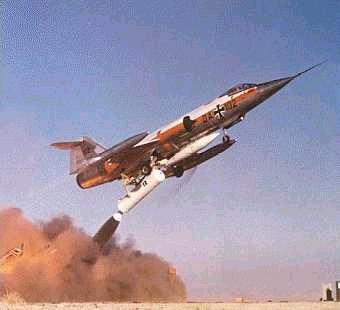
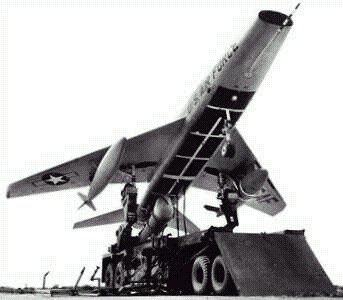
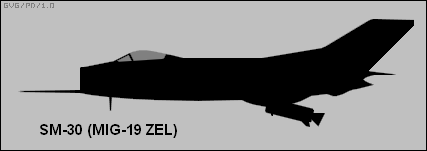
Inside 4 of his 40-foot long BATTLEBOXarks are 4 x Killer Doves on catapult/ZEL launch rails that in a brief stop can be erected and launched with two trusted "LT. Shem (pilot) and LT. Japtheth" (observer/AFAC) sons aboard. SGT Hams (driver/crew chief mechanics) drive the armored track towing the BATTLEBOXarks that hold the Killer Doves. These are fast (500 mph dash speed) but long loiter time, low altitude agile, armored, contraprop with emergency back-up turbofan engine in tail LARA 2 observation/attack planes with a cargo capacity of 5, 000 pounds or a 4-man recon team deliverable by parachute or STOL airland.
After their mission is complete, the Killer Doves return with an "olive branch" of information from observation and/or a recovered recon team by STOL landing onto a short stretch of road on the wheels of their ski/wheels or a dirt or grassy field or a river or lake or even the ocean using the ski part of their ski/wheels. To slow down stall speed and landing roll, boundary layer control blown flaps, a drogue parachute and reverse thrust applied to the contraprops enables the Killer Doves to land nearly anywhere impromptu in less than 300 feet (one football field or about 200 cubits). SGT Hams reloads the Killer Doves back into their BATTLEBOXarks' erector launch rails and refuel/rearm them with all or some of the crews taking off again to effect continuous 24/7/365 coverage or waiting on alert status to launch on request for immediate maneuver air support. When not flying, LT Shems and Japtheths are sleeping in their BATTLEBOXes on fold-down bunks.
Killer Dove: A-4 SkyHawk-in-a-Box or on a trailer!
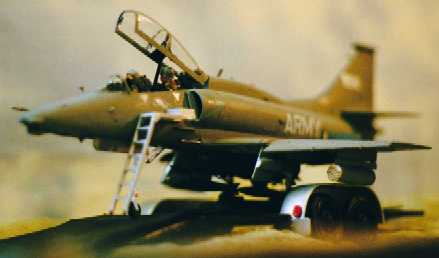
BATTLEBOXaircraft ZEL Transporter-Erector Launchers (TEL) = Aircraft launched instantly like mobile SCUD missiles from constantly position-changing, cross-country mobile, hard-to-detect, camouflaged launchers = Aircraft that don't congregate on obvious open danger area runways/air bases = aircraft that will not get destroyed on the ground
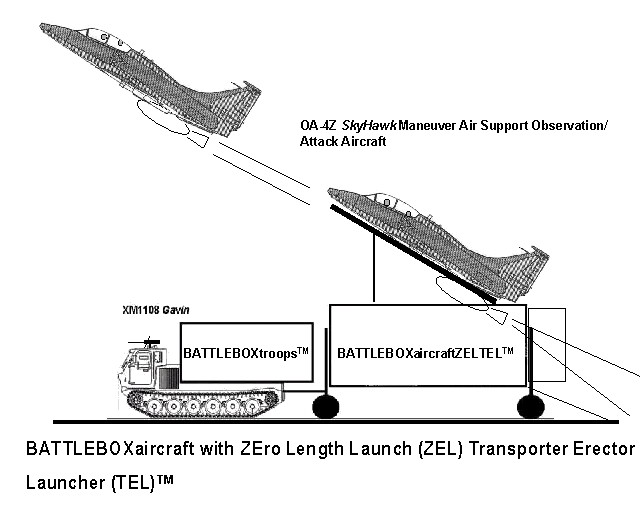
The sad reality is that most aircraft are on the ground at any one time. Today's heavier-than-air jets are too complicated and costly to keep in the air 24/7/365. You can have a few on "scramble" alert status at the end of the runway to take-off and TRY to defend your air base, but the facts are that Welsh & Taylor in today's P-40s are not going to be any more successful at stopping a "Pearl Harbor" counter-air strike than they were on 1941. If you don't have EARLY WARNING and have plenty of time to get your planes loaded with pilots and warmed up, your aircraft are going to get caught on the ground and destroyed IDF 6-day war style. Having LTA blimps and Aerostats that can stay aloft 24/7/365 via air buoyancy can achieve this, but it must not be just radar based defense since radar can be evaded by low-level flights and stealthy constructed aircraft. The video below details how painfully long it takes to check a HTA plane, warm it up, taxi down to the runway which is nothing more than a huge bottleneck denying your aircraft to take off.
 youtube.com/watch?v=FI7fWfavB3M
youtube.com/watch?v=FI7fWfavB3M
Here you see the OV-10 take forever to get airborne like most aircraft. One option air forces do is to place their aircraft in hardened shelters or even in the sides of mountains like the Swiss, Swedes and Red Chinese do. The problem with hardened shelters is their runways give their presence away and eventually enough high explosives directed accurately should blast at least their doors enough to jam the aircraft behind them inside.
What we gather from this video is we need to DISPERSE AND CAMOUFLAGE aircraft so they are not even detected at all and to be able to launch them without runways using vertical launchers in BATTLEBOXes which open up and the MAS plane inside's wings unfold, crew chief does his checks, engines revved up to max thrust and ZIPPP! it takes off right on the spot. This is essentially a "Sink-the-Air Force" concept not unlike what we need to do with the Navy's aircraft via submarine aircraft carriers.
SIDEBAR: Also his choice of music sucks. The Top Gun opening music is perfect and under-stated for the warm-ups and taxiing and he should have stuck with it because it transitions into some up-tempo beat, but instead he abruptly cuts to the Kenny Loggins "Danger Zone" music which does not match looking around at the inside of a cockpit that's not moving. "Danger Zone" music only works if its external shots of fast moving aircraft skimming the ground, water or something that shows the feeling of speed/danger but in any case its so over-used as music I turn the volume down whenever I hear it.
BATTLEBOXaircraftZELTELs would enable tactical-sized FIGHTER-IN-a-BOX aircraft to be always on the go, so even if they were to be spotted by enemy surveillance means they would be long gone by the time attack means were brought to bear. Furthermore, the FIBs could be dug into the ground itself and camouflaged yet the pilots/observers would be nearby in an adjacent BATTLEBOXtroops ready to enter the aircraft, do flight checks, open the top, erect the launcher rail and launch instantly, then lower back down, close the box top and restore camouflage.
Recovering FIB aircraft would be a challenge but if they are LARA 2 seaplane types that can land on water if a lake or river were nearby leaving no tracks or trace and then be picked-up by a prime mover to be taken back to their BATTLEBOXaircraftZELTEL. If the FIB were a LARA 2 type landplane with skis/low ground pressure wheels or event tracks, they could recover on an open grassy field and be picked up and brought back to their BATTLEBOXaircraftZELTELs by a prime mover whose own tracks should be covered by a special track covering vehicle. If the FIB aircraft was a STOVL capable type like the F-35B JSF, they could come to a hover near their BATTLEBOXaircraftZELTEL and land vertically to be returned to inside with minimal track trace on the nearby grass/ground. Air Force are going to have to start thinking like artillerymen who today go to great lengths to avoid counter-battery fire. And in essence, tactical aircraft except when observing or transporting are nothing more than either air defense or ground bombardment artillery, anyway. Strike aircraft are indeed artillery that flies by aerodynamic lift instead of ballistic projection.
Paul Czysz' "Killer Wasp" Concept
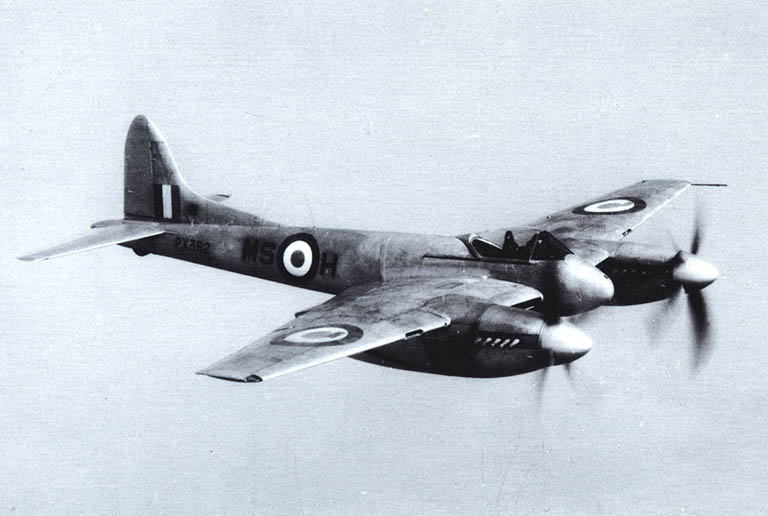
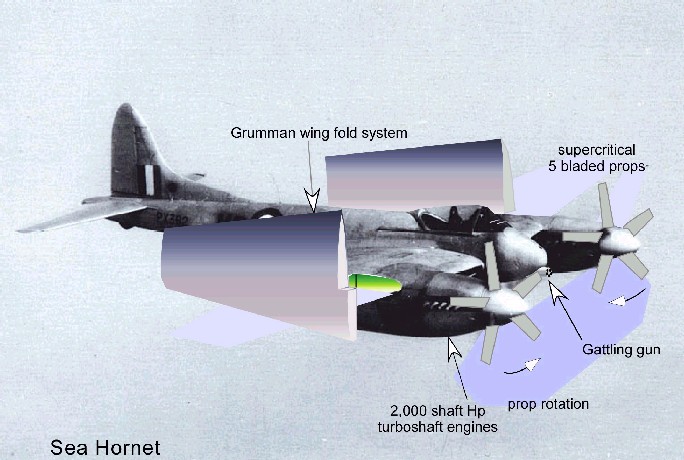
He writes:
"I prefer South American wasps they have a 2 inch wing span and are lethal within 20 minutes,. BECAUSE you need thousands of bees but only a few wasps. I keep seeing references that the target was so close you did not need a sight!! Remember what Sir Richard Steele said in 1613, "For the British Soldier no Sword is too short." That's OK when there are no SAMs around. Chuck Myers is on the right track with an ARMY integrated tactical air arm that includes armor. But that air arm should be lethal outside the range of the SA-11's and 13's and use synthetic vision to see and hit at that range. These little bees are fanciful ideas that they can be employed in an area outside the southern Sudan. A larger size and faster aircraft (it can slow down to attack) can give combat damage survivability as well as the ability to generate combat damage. Marine Corsairs and AD's [SkyRaiders] put the bombs, napalm, etc. on target just a 100 feet in front of the marines at Chosin Reservoir. They were the last army group that operated with their indigenous tactical air. The Russian FRONT organization has its own airforce and would be a bear to combat (Ask the Germans). I keep using Russians for an example because as Genghis Khan taught them an army MUST be a killing machine. We don't have that today as we apologize every time we kill a person in what is called Iraq.Someone has to abrogate the Key West Agreement and give the Army back its tactical air power. The trouble with autogyros is that they have a rotor head. They can and do takeoff and land very short but their payoad and speed are limited. They used to build Kellets in southeast Missouri before WW II and used to watch them fly regularly. My dad was in WW I and was always attached to aircraft.
I agree you need some ARMY killer bees, not USAF. Trucano, T-6, and Pilatus are all neat aircraft but I think you need a twin with good forward visibility and eyeballs aided by superimposed synthetic IR and mm radar vision. The twin gives a good location for a high speed forward firing cannon somewhere between a 0.50 (12.5 mm) and 25 mm gatling gun. You also need a fire and forget guided missile beyond visual range weapon.
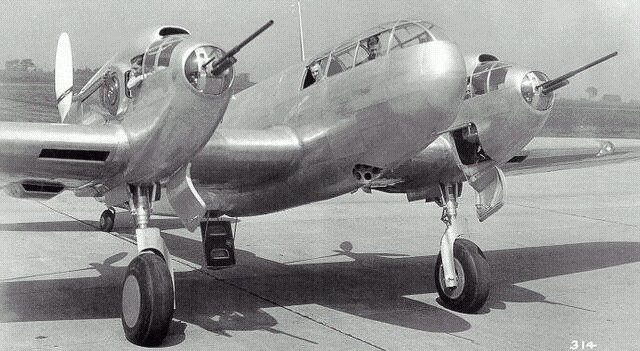
I think the Mosquito or Westland twin is something like the size you need, except a turboprop with opposite hand engines. If you want the prop diameter smaller for the shaft horsepower available then counter-rotating props. If you use the GE double counter-rotating turbines you can eliminate the gearbox. One is an old pre-WWII design by Bell, I think the Airacuda. It had pusher props and a gunner in each engine nacelle. Not needed now but the pusher is an interesting idea.
Ralph Zumbo, TANK SERGEANT author writes:
"In January 1968, we found out, in Vietnam, that armor and air are inherently compatible. Pleiku Airbase was getting penetrated and its fighter rivetments blown on almost a nightly basis....Securing a perimiter around a one mile strip is a bear. They asked the army for manpower and some genius sent US, a platoon of M48A3 tanks. We not only solved the problem with IR searchlights and cannister/flechette ammo, but we quickly found out that our tanks could be repaired in their shops, and the supplies (tracks, ammo, crats, etc) flown directly to the tanks, and we once retracked the platoon right out of the C-124s. When TET hit, some of our crew were airmen. This has possibilities. You could, for instance, base a battalion of Mech Infantry with a tank company in a forward LZ with TacAir and choppers. Comment?"
So where do we start?
Enter Chuck Jarnot's Viper Autogyro fighter-bomber for Maneuver Air Support
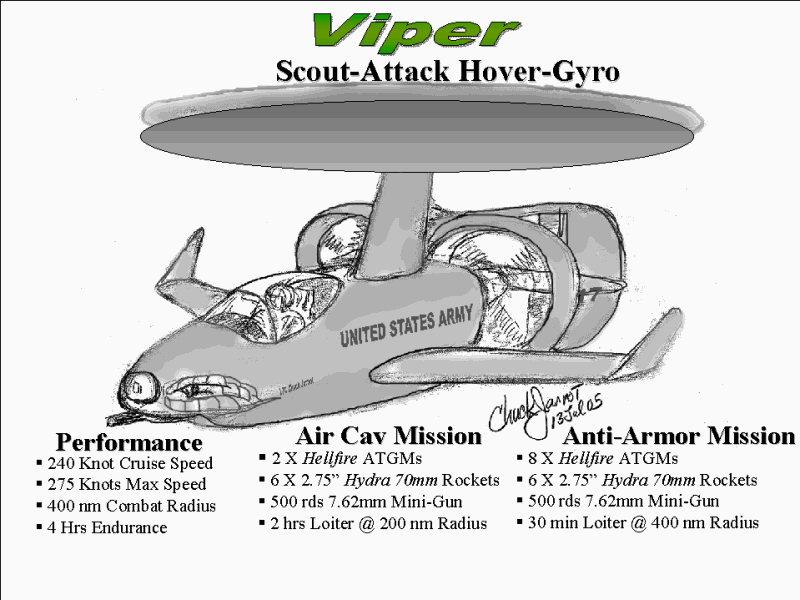
The thing the U.S. Army and marines lack is a trailer-mobile liaison aircraft that can be CO-LOCATED with ground maneuver troops to observe and attack the enemy for them by remaining constantly overhead. As good as the A/MH-6 Little Bird is, even in NOTAR form, its a metal helicopter that requires specialized people to maintain and fly them at great costs. When all is said and done they are owned and operated by military egotists in their own little club and they do not even get around to being used as small unit recon team insertion/extraction, MEDEVAC and resupply means like the British Army's Scout/Gazelle helicopters do, and our fixed-wing "grasshopper" STOL airplanes did in WW2, Korea and Vietnam. What we need is a 2, 000 pound or less WOODEN "Killer Bee" observation/attack/liaison aircraft that is simple and inexpensive to operate that is OWNED AND OPERATED BY THE GROUND MANEUVER UNITS THEMSELVES. If they cannot be flown due to weather etc., they are on a trailer or in an ISO container and sublimate themselves with the rest of the ground forces vehicles. Vipers will get to the battlefield in ISO sea/air/land containers. There will be no air bases, no special facilities, no comfy barracks, no special fuel trucks, the wooden "Viper" will sip the same diesel or JP-8 that the rest of the ground forces use. However, unlike a small helicopter the Viper will be very fast like the Mosquitoes of WW2 and travel in excess of 200+ mph to avoid being shot down. Retired LTC Chuck Jarnot proposes a simple autogyro made of wood with fixed wings and pushed by very powerful DeltaHawk diesel piston engines. It would be armed with guns, rockets and missiles and would indeed become a real killer that Hollywood fantasized with Sean Connery in the 007 movie, "You Only Live Twice" where an armed Barnes autogyro delivered in suitcases shot down a squadron of enemy conventional Bell Model 47 helicopters in air-to-air combat.
By being made of wood, the Viper would be radar invisible like the AN-2 Colt biplane and by using piston engines give off little heat signatures compared to turboprop engines while also not being so vulnerable to dirt/sand/dust ingestion problems. A compartment in the back would accept either a pair of scouts or 1 wounded Soldier on a stretcher or 1, 000 pounds of vital supplies. Being an autogyro, the Viper could take-off vertically by a kick start of engine power but not hover. LTC Jarnot writes:
"The Viper, like other modified autogyros, can pre-rotate the rotor on the ground with a simple hydraulic motor, then literally "jump" into the air and can land vertically with no ground roll....but they can not execute sustained hover."
This is ok since all the rotors do is spin to enable V/TOL and agile flight without the mechanical cost and complexity of powered and directed helicopter rotors. If you are too costly to exist and too complex to fly you are just as grounded as if an enemy shot you down.
Some will say, "Great! Let's build a wooden autogyro UAV/UCAV to do this". No can do. UAV/UCAVs cannot see and find the enemy like humans in an aircraft can. We must not continue this wimping out that is taking place throughout DoD so they can work around over inflated pilot egos just to get SOMETHING in the air under THEIR DIRECT CONTROL. Man must be in the loop for the Viper "killer bees" to work. UAV/UCAVs can be "worker bees" to add more quantitative numbers to the "swarm" but the force must begin with a BRAIN, a queen bee and Soldier bees. DoD is trying to create swarms of bees with UAVs/UCAVs and there is no control nor guiding vision on the scene to direct them to where the enemy really is at, which can only be determined by active human investigation if the enemy is alert and employing C3D2 means.
What we need for 21st Century Combat?

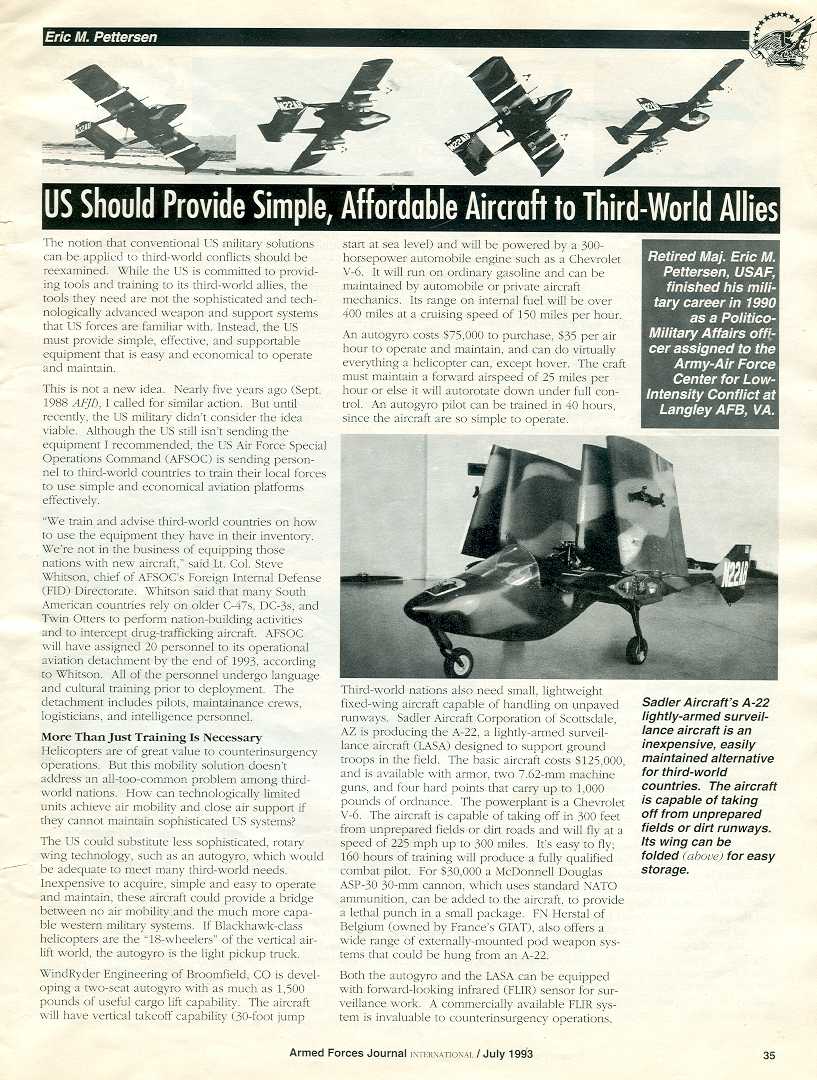
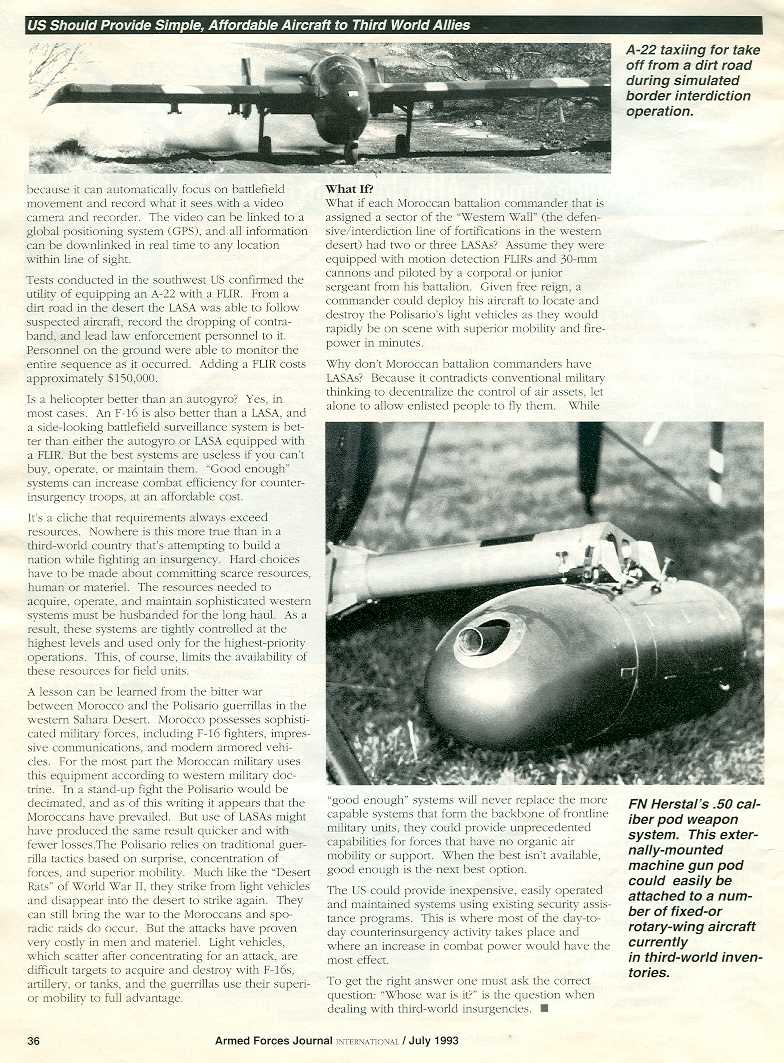
Armed Forces Journal July 1993, pages 35-36
U.S. Should, Provide Simple, Affordable Aircraft to Third-World Allies
By Eric M. Pettersen

Retired Major Eric M. Petterson, USAF finished his military career in 1990 as a Politico-Military Affairs officer assigned to the Army-Air Force Center for Low Intensity Conflict at Langley AFB, Virginia
The notion that conventional U.S. military solutions can be applied to third-world conflicts should be reexamined. While the U.S. is committed to providing tools and training to its third-world allies, the tools they need are not the sophisticated and technologically advanced weapon and support systems that U.S. forces are familiar with. Instead, the U.S. must provide simple, effective, and supportable equipment that is easy and economical to operate and maintain.
This is not a new idea. Nearly five years ago (Sept. 1988 AFJI), I called for similar action. But until recently, the U.S. military didn't consider the idea viable. Although the U.S. still isn't sending the equipment I recommended, the U.S. Air Force Special Operations Command (AFSOC) is sending personnel to third-world countries to train their local forces to use simple and economical aviation platforms effectively.
"We train and advise third-world countries on how to use the equipment they have in their inventory. We're not in the business of equipping those nations with new aircraft," said Lt. Col. Steve Whitson, chief of AFSOC's Foreign Internal Defense (FID) Directorate, Whitson said that many South American countries rely on older C-47s, DC-3s, and Twin Otters to perform nation-building activities and to intercept drug-trafficking aircraft. AFSOC will have assigned 20 personnel to its operational aviation detachment by the end of 1993, according to Whitson. All of the personnel undergo language and cultural training prior to deployment. The detachment includes pilots, maintenance crews, logisticians, and intelligence personnel.
More Than Just Training Is Necessary Helicopters are of great value to counterinsurgency operations. But this mobility solution doesn't address an all-too-common problem among third world nations. How can technologically limited units achieve air mobility and close air support if they cannot maintain sophisticated U.S. systems?
The U.S. could substitute less sophisticated, rotary wing technology, such as an autogyro, which would --be adequate to meet many third-world needs. Inexpensive to acquire, simple and easy to operate and maintain, tl1ese aircraft could provide a bridge between no air mobility and the much more capable western military systems. If Blackhawk-class helicopters are the "18-wheelers" of the vertical airlift world, the autogyro is the light pickup truck.
WindRyder Engineering of Broomfield, CO is developing a two-seat autogyro with as much as 1,500 pounds of useful cargo lift capability. The aircraft will have vertical takeoff capability (30-foot jump start at sea level) and will be powered by a 300 horsepower automobile engine such as a Chevrolet V-6. It will run on ordinary gasoline and can be maintained by automobile or private aircraft mechanics. Its range on internal fuel will be over 400 miles at a cruising speed of 150 miles per hour.
An autogyro costs $75,000 to purchase, $35 per air hour to operate and maintain, and can do virtually everything a helicopter can, except hover. The craft must maintain a forward airspeed of 25 miles per hour or else it will autorotate down under full control. An autogyro pilot can be trained in 40 hours, since the aircraft are so simple to operate.
Third-world nations also need small, lightweight fixed-wing aircraft capable of handling on unpaved runways. Sadler Aircraft Corporation of Scottsdale, AZ is producing the A-22, a lightly-armed surveillance aircraft (LASA) designed to support ground troops in the field. The basic aircraft costs $125,000, and is available with armor, two 7.62mm [medium] machine guns, and four hard points that carry up to 1,000 pounds of ordnance. The powerplant is a Chevrolet V-6. The aircraft is capable of taking off in 300 feet from unprepared fields or dirt roads and will fly at a speed of 225 mph up to 300 miles. It's easy to fly; 160 hours of training will produce a fully qualified combat pilot. For $30,000 a McDonnell Douglas ASP-30 30mm cannon, which uses standard NATO ammunition, can be added to the aircraft, to provide a lethal punch in a small package. FN Herstal of Belgium (owned by France's GIAT), also offers a wide range of externally-mounted pod weapon systems that could be hung from an A-22.
Both the autogyro and the LASA can be equipped with forward-looking infrared (FLIR) sensor for surveillance work. A commercially available FLIR system is invaluable to counterinsurgency operations,
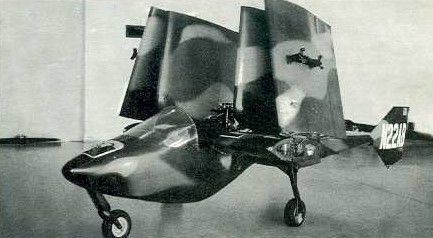
Sadler Aircraft's A-22 lightly-armed surveillance aircraft is an inexpensive, easily maintained alternative for third-world countries. The aircraft is capable of taking off from unprepared fields or dirt runways. Its wing can be folded (above) for easy storage.Page 35
because it can automatically focus on battlefield movement and record what it sees with a video camera and recorder. The video can be linked to a global positioning system (GPS), and all information can be downlinked in real time to any location within line-of-sight.
Tests conducted in the southwest U.S. confirmed the utility of equipping an A-22 with a FLIR. From a dirt road in the desert the LASA was able to follow suspected aircraft, record the dropping of contraband, and lead law enforcement personnel to it. Personnel on the ground were able to monitor the entire sequence as it occurred. Adding a FLIR costs approximately $150,000.
Is a helicopter better than an autogyro? Yes, in most cases. An F-16 is also better than a LASA, and a side-looking battlefield surveillance system is better than either the auto gyro or LASA equipped with a FUR. But the best systems are useless if you can't buy, operate, or maintain them. "Good enough" systems can increase combat efficiency for counterinsurgency troops, at an affordable cost.
It's a cliche' that requirements always exceed resources. Nowhere is this more true than in a third-world country that's attempting to build a nation while fighting an in emergency. Hard choices have to be made about committing scarce resources, human or materiel. The resources needed to acquire, operate, and maintain sophisticated western systems must be husbanded for the long haul. As a result, these systems are tightly controlled at the highest levels and used only for the highest-priority operations. This, of course, limits the availability of these resources for field units.
A lesson can be learned from the bitter war between Morocco and the Polisario guerrillas in the western Sahara Desert. Morocco possesses sophisticated military forces, including F-16 fighters, impressive communications, and modern armored vehicles. For the most part the Moroccan military uses this equipment according to western military doctrine. In a stand-up fight the Polisario would be decimated, and as of this writing it appears that the Moroccans have prevailed. But use of LASAs might have produced the same result quicker and with fewer losses. The Polisario relies on traditional guerrilla tactics based on surprise, concentration of forces, and superior mobility. Much like the "Desert Rats" of World War II, they strike from light vehicles and disappear into the desert to strike again. They can still bring the war to the Moroccans and sporadic raids do occur. But the attacks have proven very costly in men and materiel. Light vehicles, which scatter after concentrating for an attack, are difficult targets to acquire and destroy with F-16s, artillery, or tanks, and the guerrillas use their superior mobility to full advantage.
What If?
What if each Moroccan battalion commander that is assigned a sector of the "Western Wall" (the defensive/interdiction line of fortifications in the western desert) had two or three LASAs? Assume they were equipped with motion detection FLIRs and 30-mm cannons and piloted by a corporal or junior sergeant from his battalion. Given free reign, a commander could deploy his aircraft to locate and destroy the Polisario's light vehicles as they would rapidly be on scene with superior mobility and firepower in minutes.
Why don't Moroccan battalion commanders have LASAs? Because it contradicts conventional [bureaucratic, non-professional] military thinking to decentralize the control of air assets, let alone to allow enlisted people to fly them. While

A-22 taxiing for take-off from a dirt road during simulated border interdiction operation."good enough" systems will never replace the more capable systems that form the backbone of front-line military units, they could provide unprecedented capabilities for forces that have no organic air mobility or support. When the best isn't available, good enough is the next best option.
The U.S. could provide inexpensive, easily operated and maintained systems using existing security assistance programs. This is where most of the day-today counterinsurgency activity takes place and where an increase in combat power would have the most effect.
To get the right answer one must ask the correct question: "Whose war is it?" is the question when dealing with third-world insurgencies.
Page 36
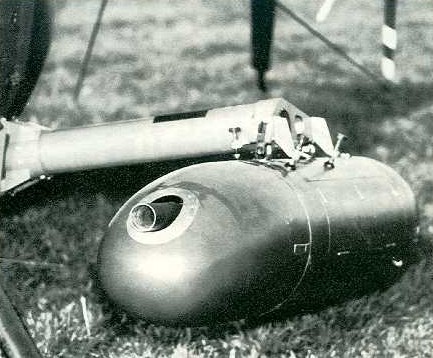
FN Herstal's .50 caliber pod weapon system. This externally-mounted machine gun pod could easily be attached to a number of fixed-or rotary-wing aircraft currently in third-world inventories.
 scribd.com/doc/124678528/Sadler-Piranha-Manual
scribd.com/doc/124678528/Sadler-Piranha-Manual
Fixed-Wing Killer Bees with Tracked Landing Gear?
Another aspect of improving short-take-off and landing (SOL) capabilities for our grasshopper O/A aircraft might be attaching TRACKED landing gear to lower ground pressures and enable operations from uneven dirt and grass strips. Here's a Cessna 152 with Matttracks tracked landing gear.
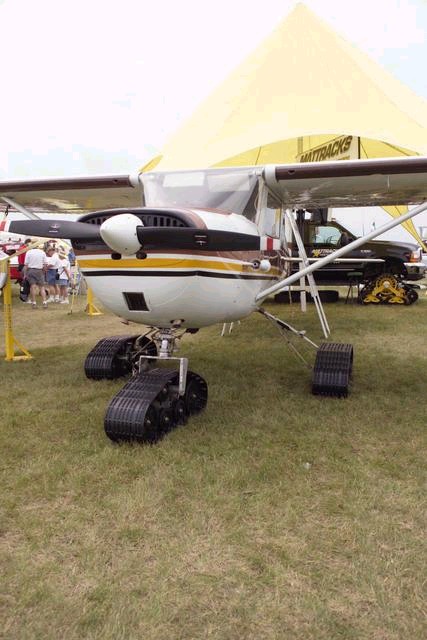
If the aerodynamic and weight penalties of tracked landing gear are not too great or better yet they can be made to retract---the whole paradigm of what we think fixed-wing aircraft need to land and take-off from can be improved....even for large troop transports as LTG Gavin proposed!
The final fall-back position of the large complex, platform-centric helicopter community will be the platform inferiority complex complaints they will level against the micro-helicopter/autogyro or fixed-wing aircraft using the "boogie man" of enemy air defense platforms/systems without being in a modern battlefield Air Cavalry "Killer Bee" context. Sometimes MORE is not better. The smallness of UAVs means often they cannot even be detected to be targeted. We can get this same smallness effect by manned O/A aircraft, too. Its a what if Superman fought Batman? type argument, not admitting that both super heroes are on the same team in the first place. The Army's large helicopters can and should be made to fly faster and farther using Piasecki VTDP to self-deploy themselves without needing internal USAF fixed-wing transport to get to global battlefields. Fine. But as stated before once in the area, large helicopters will need large amounts of logistics to operate and will never be able to be fielded in the swarms of "Killer Bees" to cover large areas that an Air Cav needs to locate and destroy sub-national groups and key elements of a nation-state surveillance strike system (SSC) employing C3D2. Admit this reality and let's move on. Large Army helicopters will be on the battlefield to do 3D Air-Mech-Strike movements delivering main-force infantry in light tracked AFVs.
But what Carlton is proposing in his latest work is that we simplify the current Army's smallest attack/transport helicopter, the A/MH-6 Little Bird to an even lower level of maintenance so that the micro-helicopter can be equivalent to a personal, individual mobility mount, ie; a horse. The micro Air Cavalry will operate in conjunction with ground armored Ground Cavalry troops in M113A3 Gavin ACAV light tracked AFVs on-the-spot as "Hip-Pocket" Air Cavalry for ground maneuver units so if an Air Cav Trooper is shot down, he will not be far away from rescue. In combat, his micro-helicopter will be expendable. This is achieved by using easy-to-maintain, burns-less-fuel, diesel piston engines in microlight helicopters, autogyros and/or fixed-wing aircraft so swarms of Air Cavalry "Killer Bees" can take flight and with the lightweight of modern weaponry, 30mm autocannon, 2.75" Hydra 70mm rockets and Hellfire/Javelin ATGMs their multiple "stings" will be lethal as their many eyes are looking out across the battlefield in search of the enemy. The "many eyes, many stings" concept is what the questionable current UAV/UCAV movement is trying to create remotely with narrow field-of-view sensors on piston-engined, fixed-wing robot aircraft when its already been successfully done with manned pilots using piston-engined OH-13 (Bell Model 47) Scout helicopters albeit with less lethal weaponry and no sensor help. All Carlton is doing is noting that the technology is here today to make the OH-13 piston-engined scout/attack micro-helicopter significantly more lethal and omniscient.
A piston-engined micro scout helicopter is far more robust if hit in its engine than a fragile turbine engine and though it flies with less power, we are not asking it to lift too much so that it doesn't need a Saudi oil refinery nearby to keep swarms of them in the air. To get swarms of micro scout/attack helicopters into the sky, we need to break the only officers-can-fly egotistical rank-hath-its-privileges paradigm and have enlisted pilots. Because the helicopters are simple (VFR and NVGs at night, no instruments) and robust flight training will not have to be as laborious as with current larger helicopters.
Legendary inventor James McDonnell of Missouri tried to interest the U.S. military in simpler and faster flying compound helicopters like the XV-1 which could go over 200 mph but the FDR-initiated slow conventional helicopter which was originally a great idea for ASW and CSAR work from aircraft carriers became ensconced in the liberal Democrat controlled northeast and blocked progress towards better helicopter capabilities because of selfish pork concerns. Combine this with a new class of military pilot narcissist, the "rotor-head" who thinks he can do every military task (and when he can't is full of c'est la guerre excuses so he doesn't have to change) and you have the too-slow and too-fast ego clubs that have put us into the current mess we are in today.
 scribd.com/doc/124585321/MAC-Helicopters-No-Torque
scribd.com/doc/124585321/MAC-Helicopters-No-Torque
However, the simple piston-engined or turbine-engined helicopter even simpler as an AUTOGYRO opens the door to British Army General Richard Simpkin's Air/Ground vehicles: its possible to create scout vehicles that can fly then land and drive around using the 4-wheel-drive All-Terrain Vehicle (ATV) as the baseline chassis. Instead of two separate vehicles, one for the air and another for ground mobility, one air/ground vehicle could change instantly from one battlespace to the other and become for the first time in history, an air fighting machine that can stay and contribute to the fight indefinitely and not have to fly away to a "safe" base.
Soldier AeroSLED: everyone flies, everyone fights
Recently the Discovery Channel Cable TV show "MythBusters"
dsc.discovery.com/fansites/mythbusters/mythbusters.html
tried to see if an average citizen could make from-scratch an individual backpack VTOL "Superman" flying machine using a powerful gas-powered motor driving two ducted fans but after $10K and 4 weeks of work couldn't get into the air. They often "bust myths" so you could call Jamie/Adam the "Wrong Brothers" but they did point out Hiller's flying platform using ducted fans which opens up an entire world of options that succeeded. This history shows "right" men like Stanley Hiller starting starting in 1944 with LESS items available than today and creating ENTIRELY NEW AIRCRAFT that worked just like the original "Wright" brothers in 1903. With the RIGHT IDEA any one of us could fly with today's materials. Hiller's minimalist helicopters and Cierva's autogyros show us the way if we look at the problem afresh.
Why aren't we flying now?
Let's face it.
You and I are not flying like the "Jetsons" or Fred Flintstone/Barney Rubble and their "BarneyCopter".


The Earth wins.
Our 150-200 pound bipedal movement bodies are designed to "maneuver" on the earth and reside there comfortably with shelter, water and food--in that order--with effort that should keep us out of a lot of trouble with other humans. Against gravity, this 200 pound dead weight with only 1/2 a horsepower of muscle power cannot fly at will using wing air pressure differential, but it can glide if it gets altitude or a boost of lift over large enough wings. To get more power, you need engines and using the current maximalist approach requires lots of money. You can say, just get the money---human beneficial behavior certificates--I get, you get or igy-gets and you can fly. Not really. In its generic sense it means you can only fly RARELY and only if a LOT OF HUMANS ARE WORKING VERY HARD TO MAKE YOU FLY. So the fact is, that even billionaires cannot fly at will because even all the money in the world (igy-gets) cannot overcome the basic fact that the maximalist approach is all wrong.
The powered parachute, ultralight and autogyro sport flyers understand this, and realize the key is to GET THAT BODY INTO THE AIR WITH THE LEAST AMOUNT OF EQUIPMENT AND COST. The problem with their minimalist approaches is that they too are expensive, do not have much utility and are unsafe.
We Need Superman, where is he?
Recent military aviation theorists had the right idea: Christie, Cierva, Simpkin, Fletcher, McDonnell, Hiller, Piasecki, Rice, Myers, Jarnot, Sparks, Czysz and Dyer; they all want a minimalist aircraft that is cheap enough so military men can fly like "Superman" to save the day against evil men who are not content to obtain shelter, water, food and other things peaceably. Robert Heinlein in his 1958 masterpiece, "Starship Troopers" advocates every Soldier in an aerospacetroop drop pod and when on the ground a fighting power suit that can fly for short periods of time. You could rightly conclude, all the military has to do is pick the best ultralight aircraft, buy it en masse and we'd have our "Sky Cavalry" or "Killer Bees" to flood the skies with military effects 24/7/365 wherever we want it. The problem is the U.S. military is a snobby, narcissistic outfit. It does not want to empower just any old infantry/dogface Soldier for flight, only officers/gentlemen, so to try to work around the 200-pound egomaniac, the model unmanned airplane vehicle (UAV) with video imagery is being tried to get Killer Bee swarm effects but it only works when the enemy is forced out of C3D2 hiding due to ground maneuver pressure---usually in a major nation-state war---and simply flying against the earth UAVs have a notorious 50% crash rate making us lose any monies we thought we were saving. Next, even if you could get a non-snobby military official to accept the fact that we need lots of Soldiers in aircraft in the air all the time to find the enemy and pressure him---just don't put an "S" on their chests---they will object because of the big platform vs. little platform this-is-war, damnit mentality described next.
I need this, I need that, I need a lot of it---lest I get Killed
Even though Hiller had a simple, minimalist rotary-wing helicopter the Army was even using to test all kinds of weapons to include recoilless rifles (!) the unimaginative Army brass opted for a large cash cow.
http://avia.russian.ee/helicopters_eng/hiller_yh-32a-r.html
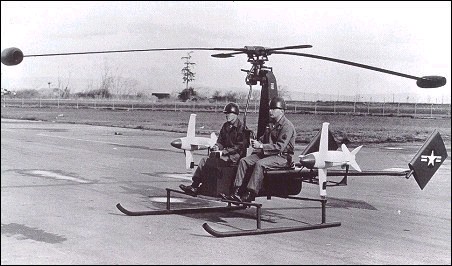
Hiller YH-32A ULV
1955
-----------------------------------------------------------------
A mini-gunship version of the Hornet would mark a major milestone in the rebirth of Army aviation. With Key West constraints on that service's aerial capabilities easing, Hiller in 1955 received the first U.S. contract ever issued for an armed military helicopter. Today largely forgotten, this rotorcraft - a last incarnation of the HOE/H-32 "Hornet" series - was the Hiller YH-32A ULV.Because it was "stripped to the bare essentials", the ULV (ultralight vehicle) was nicknamed Sally Rand after the fan dancer whose nude performances had enlivened Chicago's Century of Progress Exhibition in 1933. Three YH-32As were built and tested in 1957 at Fort Rucker, Alabama, where they successfully carried and employed combinations of rockets, wire-guided missiles, a 75mm recoilless cannon, land mine detectors, and other equipment. The new craft featured twin tails to accommodate the recoilless cannons, which discharge gases rearward to counteract recoil. Simplicity dictated a return to canted rudders instead of a tail rotor. This helicopter was intended to travel with Army troops in a tarpaulin-covered trailer that housed spare parts, refueling equipment, and ordnance. With its side panels folded down, the trailer also served as the ULV's launch platform.
Under a separate contract, a modified Sally Rand was tested at an abandoned airstrip in central California to determine its vulnerability to enemy action. Although diminutive dimensions made it a difficult target to hit, the craft's size and limited range clearly rendered it unsuitable for operational use. As a proof-of-concept vehicle, however, the YH-32A ULV was successful; it laid groundwork for the U.S. Army's heavy commitment to helicopter firepower during the Vietnam War.
J.P.Spencer, Whirlybirds: A History of the U.S. Helicopter Pioneers, 1998
However, the new-air-force-in-army-green decided to bank on the gas turbine engine and maximalist approach in 1960 which today looks elegant and minimal compared to today's helicopters just to show how far we've drifted into overly complex machines that can't even fly, beaten by the earth, bringing us back to square 1 on 1903.
Large Platforms for Large Egos; who needs to get results when we look so sexy?
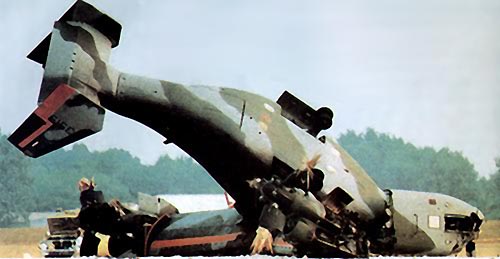
21st Century Hubris Aviation: can't even defeat the forces of the earth to take flight let alone fight human foes, but everybody involved is rich and ego satisfied
The incredibly over-complex V-22 tilting rotor is the poster child for man deciding not to fly but maximizing the amounts of igy-gets for the maximum number people to do shelter/food/drink/drugs/toys/partying in nearly every state in the USA. The egocentric military mind can only accept one large platform getting all the attention; if smaller platforms are employed even as COMPLIMENTS they threaten the ego feelings of the large platform and the igy-get cash flow from Congress to the MICC-TTs. This is why little platforms like cargo ship aircraft carriers, seaplanes, light tanks, blimps and ultra-light aircraft VTOL/STOL/ESTOL "grasshoppers" that can do things large platforms can't do are ignored to our peril since we now lack massed military effects. Not enough ego or money in them compared to the bigger platforms.
The functional excuse given is that if you go with a minimal aircraft YOU WILL NOT HAVE ENOUGH POWER/PAYLOAD TO WORK WITH to get armor, firepower, mobility fuel and sensory aids. So the maximalists in 1960 said give them a gas turbine engine helicopter in an utilitarian box (Huey) and we'll just carry ourselves as-is but on a diet all over the battlefield, accepting the huge FUEL AND MAINTENANCE COSTS to overcome a lot of gravity and complexity fighting us to fly in the first place. It was a fatally flawed "Air Mobility" concept in South Vietnam, that we passed on to the ARVN but they couldn't afford it nor had the skills to maintain turbine-powered complex helicopters and THEY PAID FOR IT BY LOSING THEIR COUNTRY IN A MILITARY DEFEAT VIA HOSTILE TAKE-OVER BY THE NORTH WHO HAD A SMARTER WAR FORMULA. So don't "pooh-pooh" this as a nice-to-have; not being able to fly because you cannot even overcome the basic forces of earth gravity can be a cause of STRATEGIC DEFEAT.
Why Less is More when trying to make lots of People Fly
In war, you are not superman even if you can fly. The larger you are, the easier bullets can be directed to hit you, and they don't bounce off if you unless you are armored which adds even more weight on top of your 200 pound body to lift. The Huey helicopter is simply too large of an opaque object moving too slowly in the sky to avoid being hit on top of it needing an army of people slaving over them to keep them flying bribed by lots of igy-gets for their troubles. The failure of the minimalist military aircraft proponents has been that they did not "close the deal" and make their manned aircraft the absolutely minimal opaque objectness in the sky to get the "UAV effect" constantly bragged upon by the model airplane makers as to why they will not get shot down, though they still do. The maximalist will say the minimalist killer bee will not offer enough protection and its pilot will die so embrace their large aircraft that can have some protection but will certainly be hit and some men will certainly die in it, as seldom as it does fly. Through in the egomaniacs operating the maximalist aircraft and guess what? YOU AIN'T FLYING!!! You have to go beg them "mother may I?" to give you a lift and they are miles away from you, not co-located and they have lots of ready-made excuses to not fly ("aircraft needs its oil drained for scheduled maintenance" blah blah blah) so in disgust you return to your position and ask where the fucking UAVs are and take your ineffectiveness lumps.
Its time we fix this by closing the deal and making a military optimized SoldierAeroSled (SAS). SAS would be an autogyro with a 100 horsepower diesel engine that burns the same JP-8 or even safer cooking oil because this is the SIMPLEST way to get a lot of near vertical lift to overcome the dead weight of the living man. Any competent truck mechanic can keep a diesel compression engine running and they are tough to keep functioning if hit by enemy fire and QUIET so the enemy might not even hear the SAS flying overhead in the first place. To reduce the frontal surface area (drag) and overall surface area (target) of the SAS, the Soldier-pilot would lie flat on his stomach to fly the machine. On the bottom would be the fuel which if nitrogen inerted and/or foam lined acts as ARMOR if bullets hit as proven in a MythBusters TV show and is old institutional knowledge from U.S. Navy WW2 experiences.
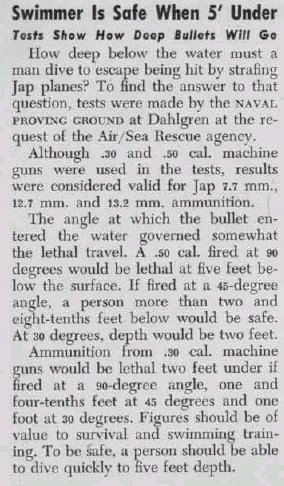
The entire SAS would be CLEAR (this includes the rotors and rear prop) so light passes through it so it blends into the sky and is not easily detectable by the enemy. The schematic below outlines how the SAS would be configured.
Soldier AeroSLED Fixed-Wing plane or AutoGyro "GyroSLED"
Side view
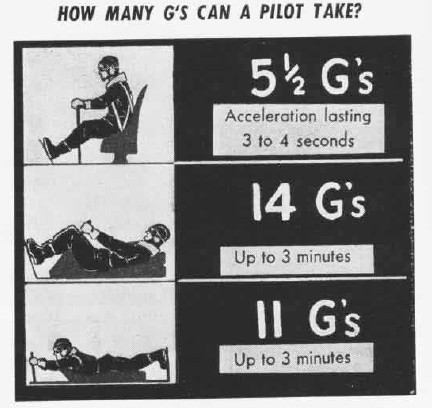
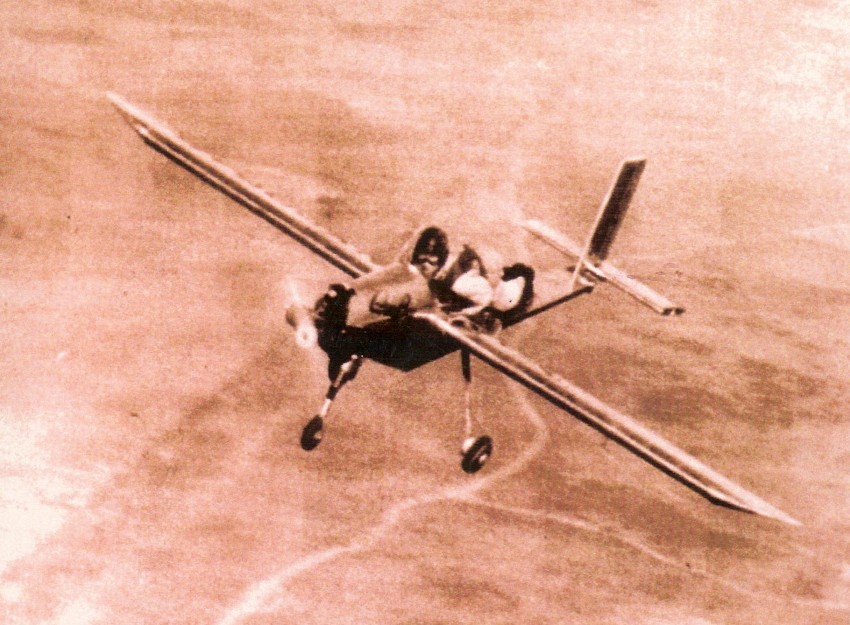
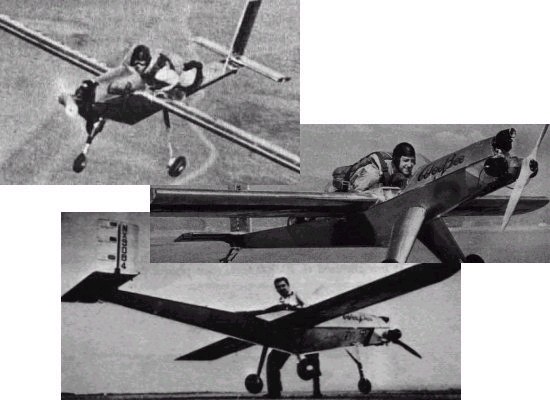
Bill Chana is the pilot in the picture, The aircraft weighed 172 pound powered by a 20 hp engine. If we silenced the engine and prop, made everything clear or light gray, would such Killer Bees scouting for the enemy 1, 000-2, 000 feet (AKM 7.62mm effective range is 300 meters or about 1, 000 feet) over a desert/urban terrain like Iraq be at risk from an infared MANPADS SAM like a SA-7/SA-16?
 scribd.com/doc/124292074/CRI-CRI-World-s-Smallest-Fixed-Wing-Aircraft
scribd.com/doc/124292074/CRI-CRI-World-s-Smallest-Fixed-Wing-Aircraft
With Rotors
=====================
[ ]
______________________________| |_ clear rear prop
/ O-------------------------< / | |
\ __fuel---Engine--fuel_/ | |
| ......................|
O..................... O
The Martin "Mighty Midget"
In 1952, the Martin Company produced a design for a single-seat ground attack plane. Check that... a single "couch" ground attack plane. It didn't have a seat, as the pilot lay prone. The result was a plane of remarkably small frontal section... and remarkably small overall dimensions. The Mighty Midget was designed to be a small, tough, cheap proto-A-10, able to dish out a truckload of industrial strength whoopass; small, fast and nimble enough to evade enemy fire; and tough enough to take whatever did hit it.
A modernized version could very well do great service in today's wars. The marines and the Army would almost certainly love to have such a plane (although the Army would tick off the Air Force if they actually went ahead and bought something like this).
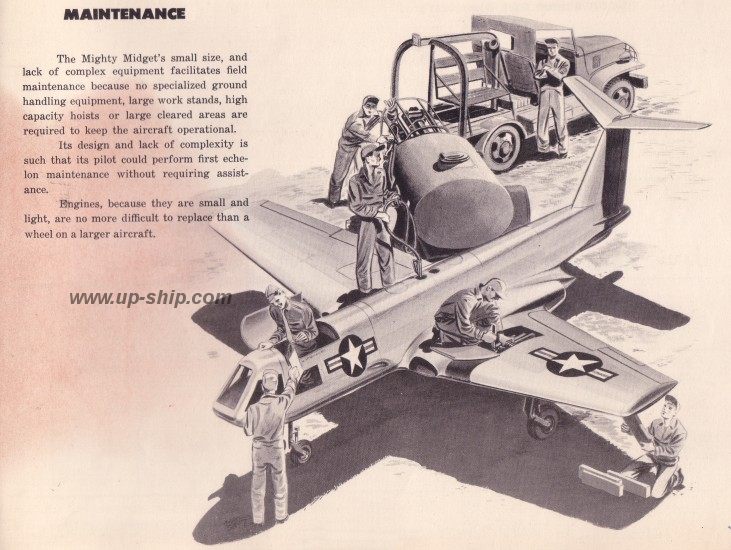
secretprojects.co.uk/forum/index.php/topic,2419.0.html
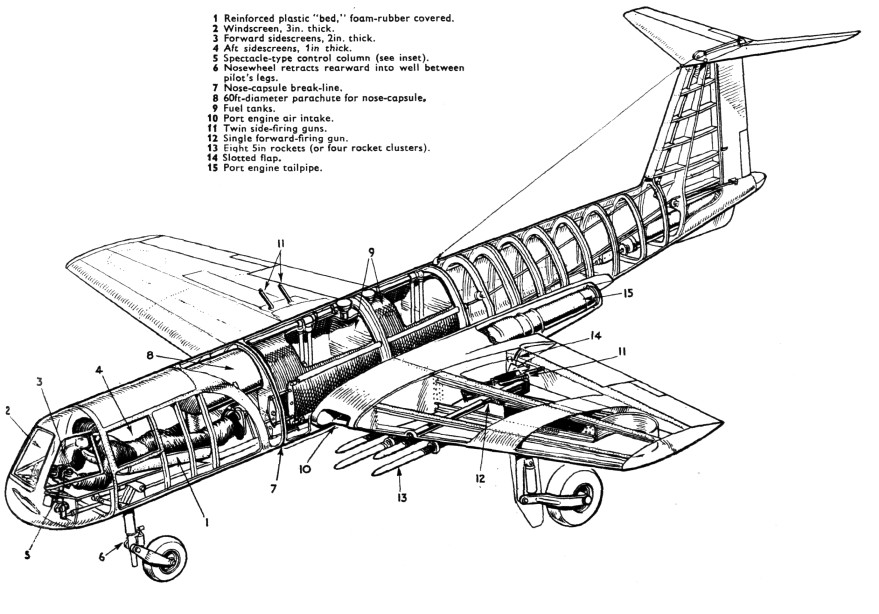
Martin proposed an interesting concept for Close Air Support in 1952. The twin-engined jet aircraft was designed for simplicity, short field performance, low vulnerability, high maneuverability and provision for a wide variety of different weapons, including side firing guns, as later introduced in the AC-47 . The pilot was housed in prone position in a heavily armoured cockpit section, which in the case of an emergency, could be jettisoned.
Aviation Week November 1954
Prone Pilot Experiments
http://en.wikipedia.org/wiki/Gloster_Meteor_F8_%22Prone_Pilot%22
Scott Lowther's Amazing Web Site
www.up-ship.com/drawndoc/drawndocair.htm Martin "Mighty Midget" Brochure
A full-color 47-page PDF brochure from the Martin company dated July, 1952, describing the "Mighty Midget" ground attack aircraft. This would have been somewhat like a small (very small) A-10 Warthog... heavily armored, heavily armed, twin-jet single pilot plan meant to do one thing: trash ground targets. Brochure includes drawings, artwork, dimension, weight and performance data.

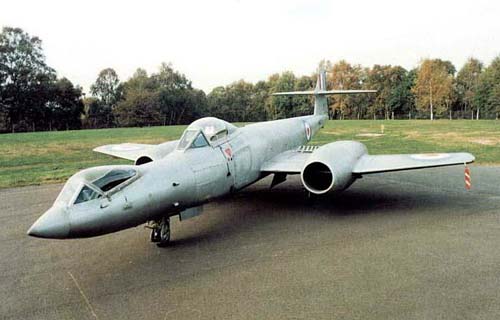 http://en.wikipedia.org/wiki/Reid_and_Sigrist_R.S.3
http://en.wikipedia.org/wiki/Reid_and_Sigrist_R.S.3
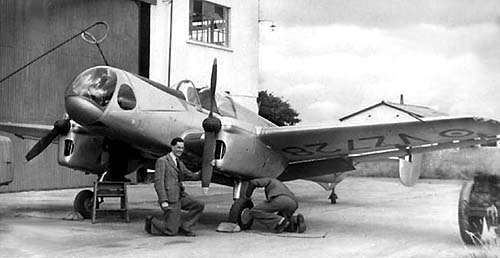
Arado Mini-Fighter
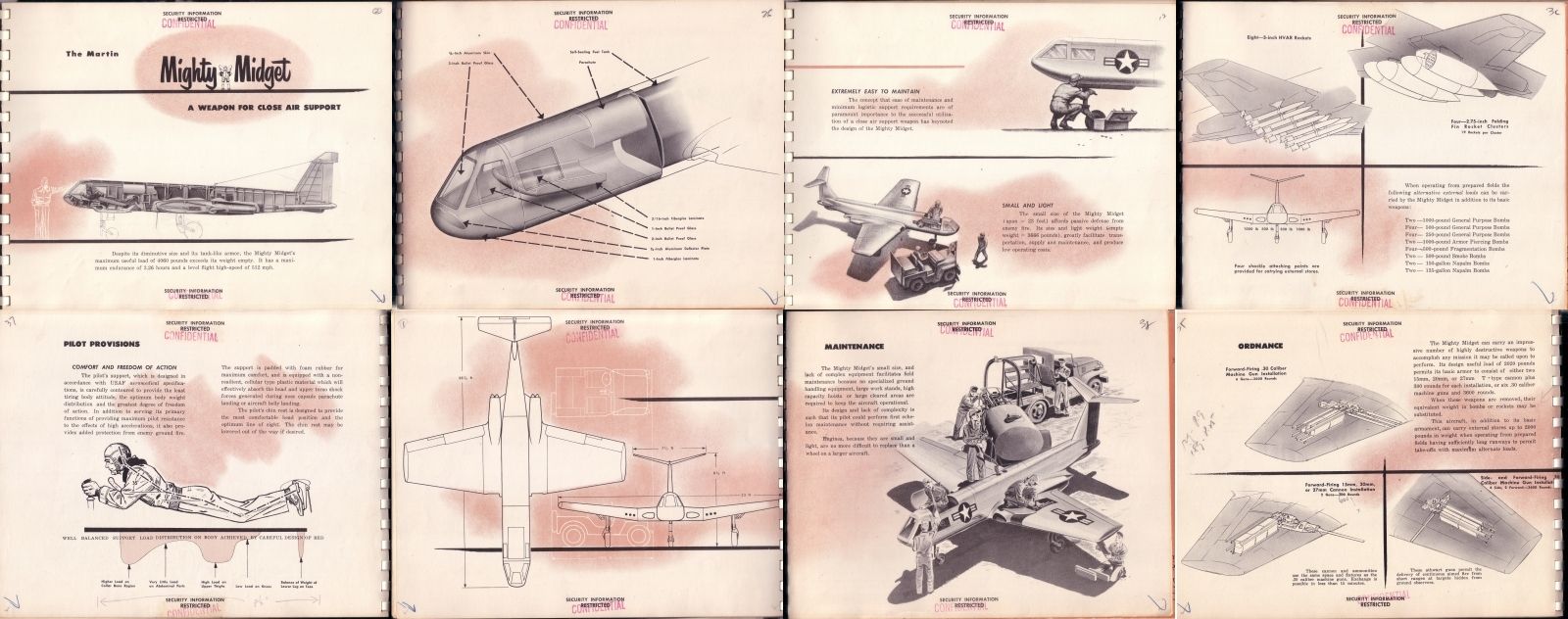
fiddlersgreen.net/models/aircraft/Arado-Minifighter.html
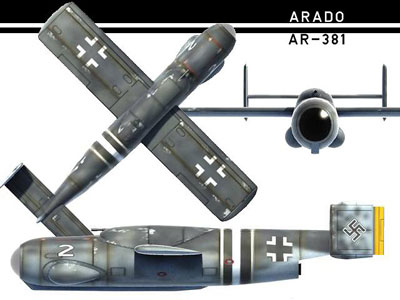
In the summer of 1944, the Ar-E.381 was designed to be carried under the fuselage of an Ar-234 C-3 jet bomber. Due to insufficient ground clearance, Arado was forced to adopt a prone position for the pilot. Because of the cramped arrangement, the pilot was unable to leave the cockpit once the Ar-E.381 was attached to the Ar-234's fuselage.

Above: Günter Sengfelder's large scale model of the Ar-E 381 midget rocket interceptor attached to the underbelly of the Ar-234 C-3 jet bomber, illustrates the central landing skid as well as the location of the single MK 108 cannon above and to the rear of the prone pilot.
The wing of this midget fighter possessed constant chord and thickness and rounded wing tips .There was no space in the narrow fuselage for the standard armament of two MK 108s, six RZ 73 Rauchzylinder (smoke cylinder), but rather an improved air-to-air rocket developed from the earlier RZ 65 was to be carried, and two MG iSis installed in the fuselage were thought to be feasible. In 1945, this armament proposal was canceled in favor of a single [30mm] MK 108 mounted behind the pilot's cockpit and containing forty-five rounds of ammunition.
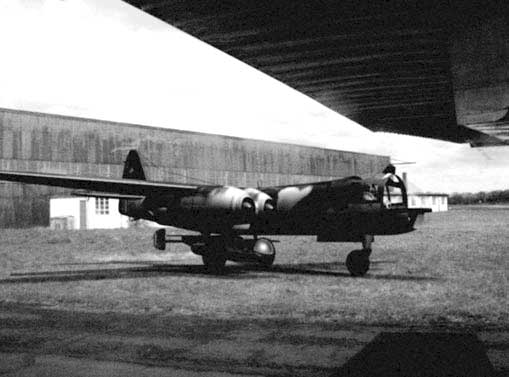
Arado Ar-E.381
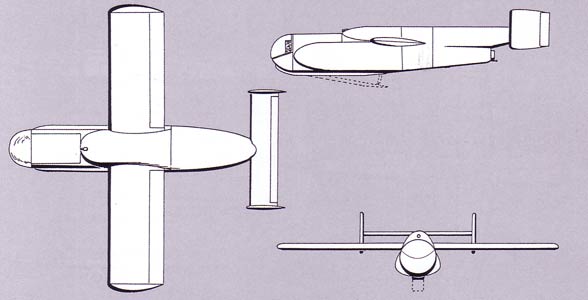
After climbing to 19,685 ft , within eight minutes or less, the carrier Ar-234 would release the midget fighter. The Ar-E.381's pilot then dove toward his target igniting the HWK 509 B-1 rocket motor, and accelerated to a speed of about 560 mph. After a high-speed approach to its target, the attack would be made at close range, ensuring a higher degree of success.
Having completed his mission, the pilot had to either land the aircraft on its fuselage-mounted skid, or bail out if the aircraft had been damaged by enemy fire; although the heavily armored and small size of the Ar-E 381 would have made it a difficult target. The first Ar-E.381 design proposals had shortcomings, that required complete re-design of the fuselage. In particular, the cockpit entry hatch was moved from the fuselage top to the side. The HWK 509B-1 rocket motor that was mounted on the wooden tail was replaced by the HWK 509C-1 with two separate combustion chambers. the total take-off weight was only 2,545 lbs.!!
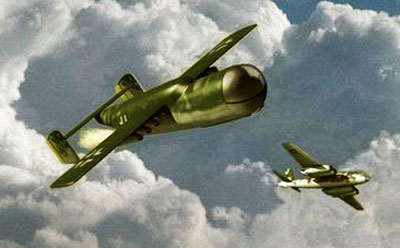
The E 381.02 proposal lay in the Bordjager category, whereby a self take-off was not intended from the outset. Such types, also known as parasite aircraft, were to have been attached to and air-launched from another aircraft in flight prior to reaching the target. The Ar-F.381.02 was to have been attached to the ventral fuselage of an Ar-234 C or D in place of the bomb load. Due to the low ground clearance, it had twin end-plate fins and rudders and housed the pilot in the prone position. Variants were drawn up, all featuring the same basic configuration. Armament consisted of a single [30mm] MK 108 cannon housed in the raised dorsal fuselage aft of the cockpit and provision was made for a number of rocket projectiles fired from within the wing. Power plant was a 350kp thrust FMK 109-509 B liquid-propellant rocket motor. Landing was to have been on an extensible skid and a brake parachute was provided, the full-span ailerons assisting as landing flaps. The cockpit had 6mm thick armor plating, with auxiliary protection provided by a 20mm swiveling armor shield which had a clear vision panel for target aiming. Calculated performance data are not available, save that a speed of around 900km/h was expected to be attained in a dive.
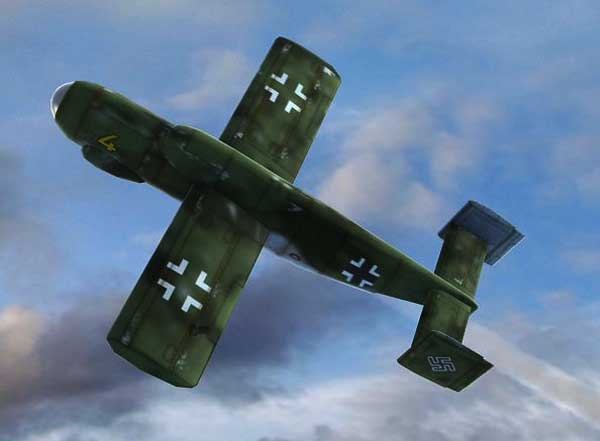
The first version had a circular cross-section fuselage, with a small round window in the nose for the pilot's vision. Overall, the entire fuselage was protected by a 5mm armored shell. The pilot lay in a prone position, and the cockpit was very cramped. A removable 140mm (5.5 inch) armored glass screen was mounted in front of the pilot. Two small bulges were located on the fuselage sides for the pilot's elbows. Alongside the pilot's legs were two C-Stoff (one component of the rocket fuel) fuel tanks and by his feet a single T-Stoff fuel tank. The wings were straight and mounted mid fuselage, with a stepped bulge above the wings which held the single MK 108 30mm cannon with 60 rounds. The rocket engine exhausted beneath the tail unit which featured a twin fin and rudder setup. A retractable skid could be lowered for landing and a drag parachute (ejected from a hatch on the top rear fuselage) was also to be used upon landing. The aircraft could only be entered from a hatch above the cockpit, so the pilot had to enter the E.381 before the aircraft could be attached to the carrier Ar-234C-2 and had no way to escape in case of emergency.
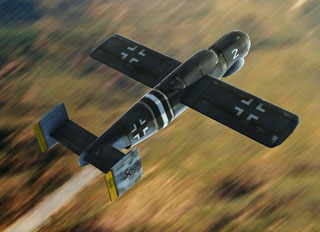
The second version was very similar to the first version of the Ar-E.381. The overall dimensions were enlarged slightly, but the basic layout remained the same. The front canopy was enlarged, giving the prone lying pilot better vision out of the still cramped cockpit. A slight step still remained aft of the entry hatch atop of the forward fuselage, and a single MK 108 30mm cannon (45 rounds) was still mounted here, firing over the cockpit. The tail unit was similar, with the fins being slightly smaller and rounder. Landing was accomplished by means of a built-in landing skid and the same drag parachute, and the same means of entering and exiting the second version of the E.381 (via a hatch on top of the fuselage) remained from the first version.
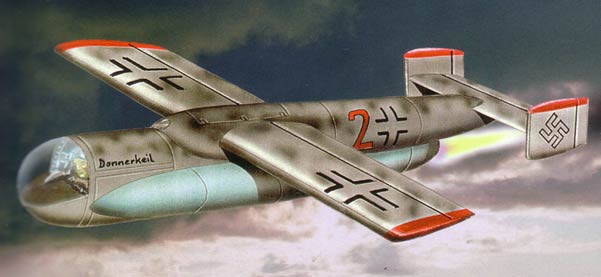
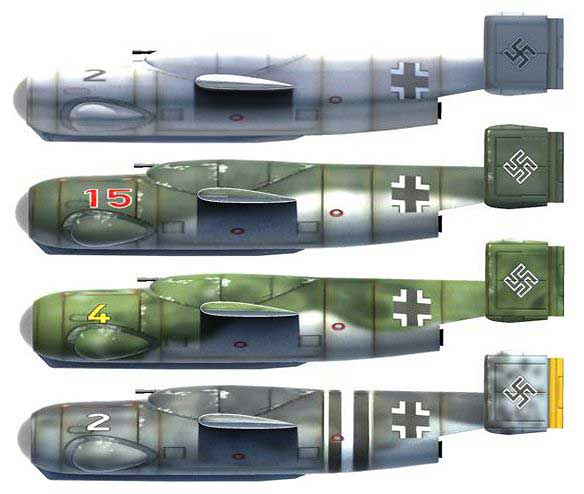
Ar-E381 Mini Fighter cross-section

Specifications
Length: 18.70 ft
Width:16.57 ft
Height: 4.95 ft
Engine(s): 1 x Walter HWK
509B rocket motor
Performance
Max Speed: 556 mph
Service Ceiling: 3,281 ft
Armament
Guns:
1 x 30mm cannon
Rockets:
6 x RZ65 OR 73 spin-stabilized air-to-air rockets
Arado Ar-E381.02 version
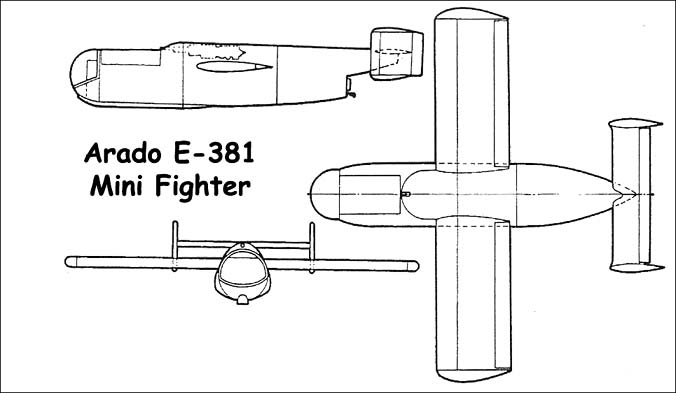
FINAB: Blitzfighter Would Be Right--If We Had the $$$
It's tragic that at the time, the Military Reformer Boydians didn't stress that their Mudfighters, Blitzfighters etc. by virtue of their SMALL SIZE could be operated away from huge and vulnerable to enemy attack air bases from mobile shipping containers AKA "BattleBoxes". Had they offered their low-cost "Stukas" in combination with Fighter-IN-A-Box (FINAB) deployment means--like mobile boxes like depicted in the opening scene of the James Bond movie, Octopussy--they could have found a niche role that the big USAF bureaucracy couldn't reject with their bloated fighter-bomber mentality.
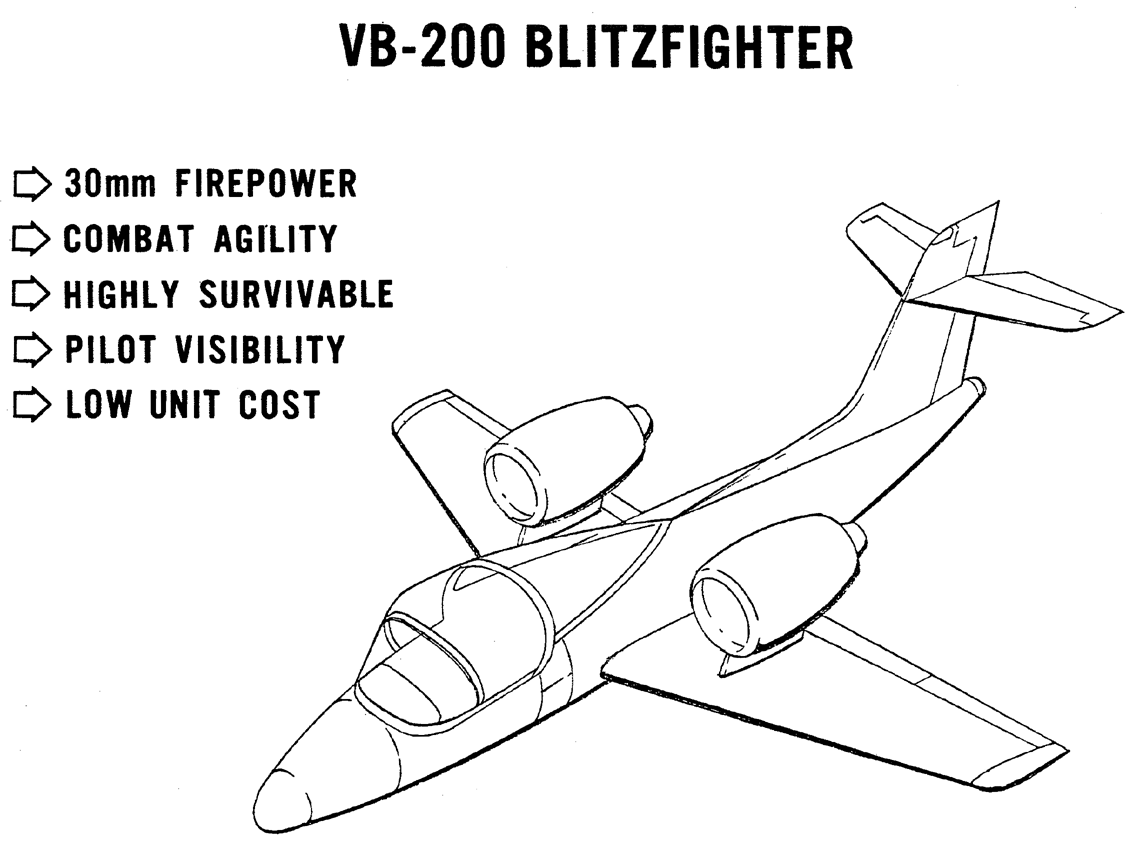
 youtube.com/watch?v=I5SV1wuemhM
youtube.com/watch?v=I5SV1wuemhM
combatreform.org/fighterinabox.htm
Alas, today America is bankrupt thanks to the MILOCRACY's 10+ year garrison outposting of Iraq/Afghanistan to racketeer maximum money from WE THE TAXPAYERS through Congress for their max inefficiency BS. Now it looks like the only thing that will make the USMIL bureaucracy change for the better is if it's poor imitation of WW2 gets it's ass kicked definitively (so they can't lie about it via mouse-clicks) in a future war. Maybe not even then...
However hope springs eternal....maybe then--we will start building actual effective KILLER BEES manned by humans and stop having to make-do with UAVs/UCAVs. Burt Rutan's Ares with 25mm Gatling cannon actually exists and would make a great blitzfighter.
Special thanks to YOUTUBE Military Reformer, BLACKTAILFA for finding this info on the Blitzfighter!
Colonel James G. Burton USAF, on the Blitzfighter
The Pentagon Wars: Reformers Challenge the Old Guard
Pages 57-61

Meanwhile, the intelligence community was claiming that the Soviets had adopted the German blitzkrieg tactics from World War II and would swiftly and easily "blitz" western Europe if war broke out. (It is no coincidence that the intelligence community began using the term blitzkrieg after Boyd's briefing became popular.) The Soviets, according to intelligence reports, had a tremendous advantage in numbers of tanks and infantrymen at their disposal. When these superior numbers were combined with blitzkrieg tactics, the Soviets were portrayed as being almost unbeatable. Exaggerating a threat to justify new wonder weapons was, and still is, a common practice.
[EDITOR: watch the Soviet General Played by Steven Berkhof in the 1983 James Bond movie, "Octopussy" for an excellent visual depiction of this alleged threat]
The Air Force's answer to this bloated Soviet threat was a new fighter-bomber called the Enhanced Tactical Fighter [ETF], a proposed night all-weather interdiction aircraft. In the view of the Air Force, the word enhanced referred to the new technologies planned for the plane. In my view, it referred to the costs. This plane was being designed to destroy Soviet tanks deep behind enemy lines and destroy them before they could get to the front and exploit any breakthroughs that would occur (night, all-weather interdiction). The price was a mere $50 million per airplane.
As it happened, I was putting together my proposal for a new airplane at that time (March 1978). My proposal was exactly the opposite of the $50 million plane. I prepared an advocacy briefing that called for the development of a small, simple, lethal, and relatively cheap airplane that would be designed solely for close support of the ground troops who would be engaged with Soviet tanks and armor. Because the intelligence community was making such a big deal about how difficult it would be to stop the Soviet blitzkrieg, I named this airplane the "Blitzfighter". Rather catchy, I thought.
Everything about my proposal, including the plane that would be used, was diametrically opposed to the prevailing philosophy relating to the new wonder weapons of the Air Force [bureaucracy]. I wanted an airplane in the 5,000- to10,000-pound class (one-tenth the weight of the Enhanced Tactical Fighter), one smaller than any combat airplane in the inventory (one-fourth the size of the A-10), and one that cost less than $2 million. At this price, we could flood the battlefield with swarms of airplanes [AKA Killer Bees].
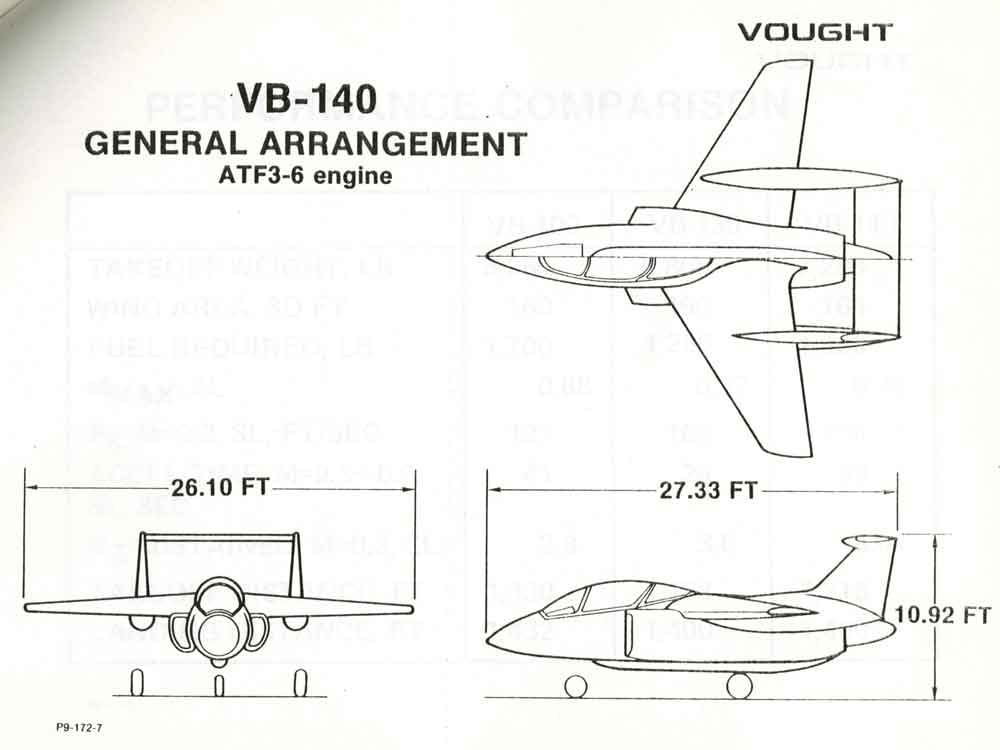
The airplane would be designed around a four-barrel version of the same [30mm] cannon that was in production on the A-10, which used a seven-barreled cannon that fired shells costing only $13 apiece. This was a far cry from the guided missiles on the Enhanced Tactical Fighter that cost several hundred thousand apiece. The Blitzfighter would have no high-tech bells and whistles and no wonder weapons. Essentially, it would contain the engine (an existing commercial one), a pilot, a titanium-armored bathtub for the pilot to sit in, a few flight instruments, a radio for the pilot to talk to the ground troops, and a cannon for killing tanks. Nothing more - no radars, infrared sensors, guided missiles, or any of that high-priced junk being installed on every other airplane - was needed.
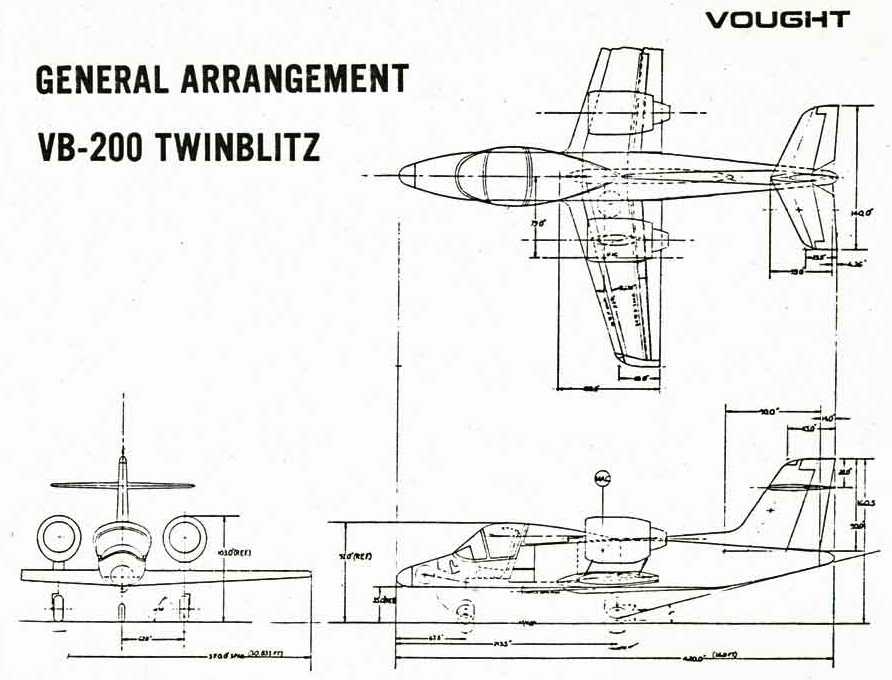
With the ability to operate from grass fields, the Blitzfighter did not demand fixed, expensive airfields that would probably cease to exist ten minutes after a war started
. Squadrons of Blitzfighters would pack up, move from pasture-to-pasture overnight and follow the flow of battle. [Just like WW2 grasshopper planes!] Pilots would receive only verbal orders that identified the main points of their effort and left the details of execution to them, a notion that was consistent with Boyd's theories. The plan was in direct contrast to the standard practice of using excruciatingly detailed orders published by higher headquarters [bureaucrats] for each mission. The orders dictated how much fuel went on board, which weapons were loaded on which wing, the exact route that would be flown to the exact target that had been assigned, and even when the pilot would be allowed to relieve himself. Such rigid orders did not always match up to what was happening in a fast-moving situation.
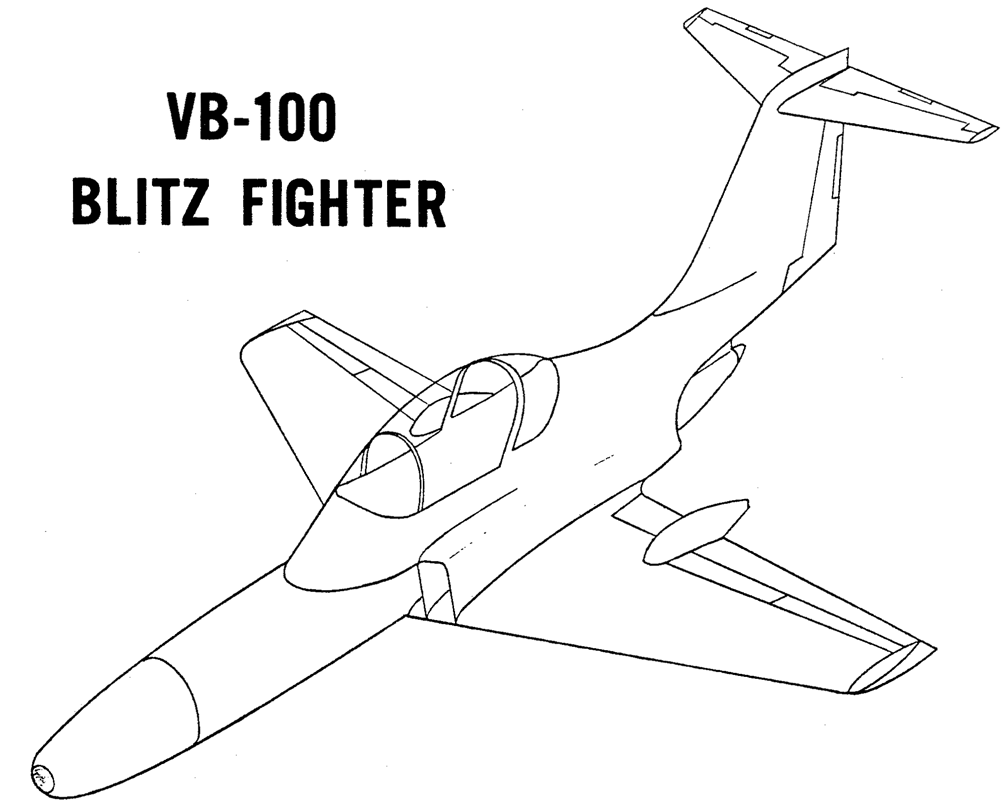
Finally, the Blitzfighter would be operated at treetop level so that pilots could use their eyeballs to find tanks that were trying to hide. To survive at this level, the plane had to be extremely agile and dart, twist, turn, accelerate, and decelerate far better than any airplane we had.
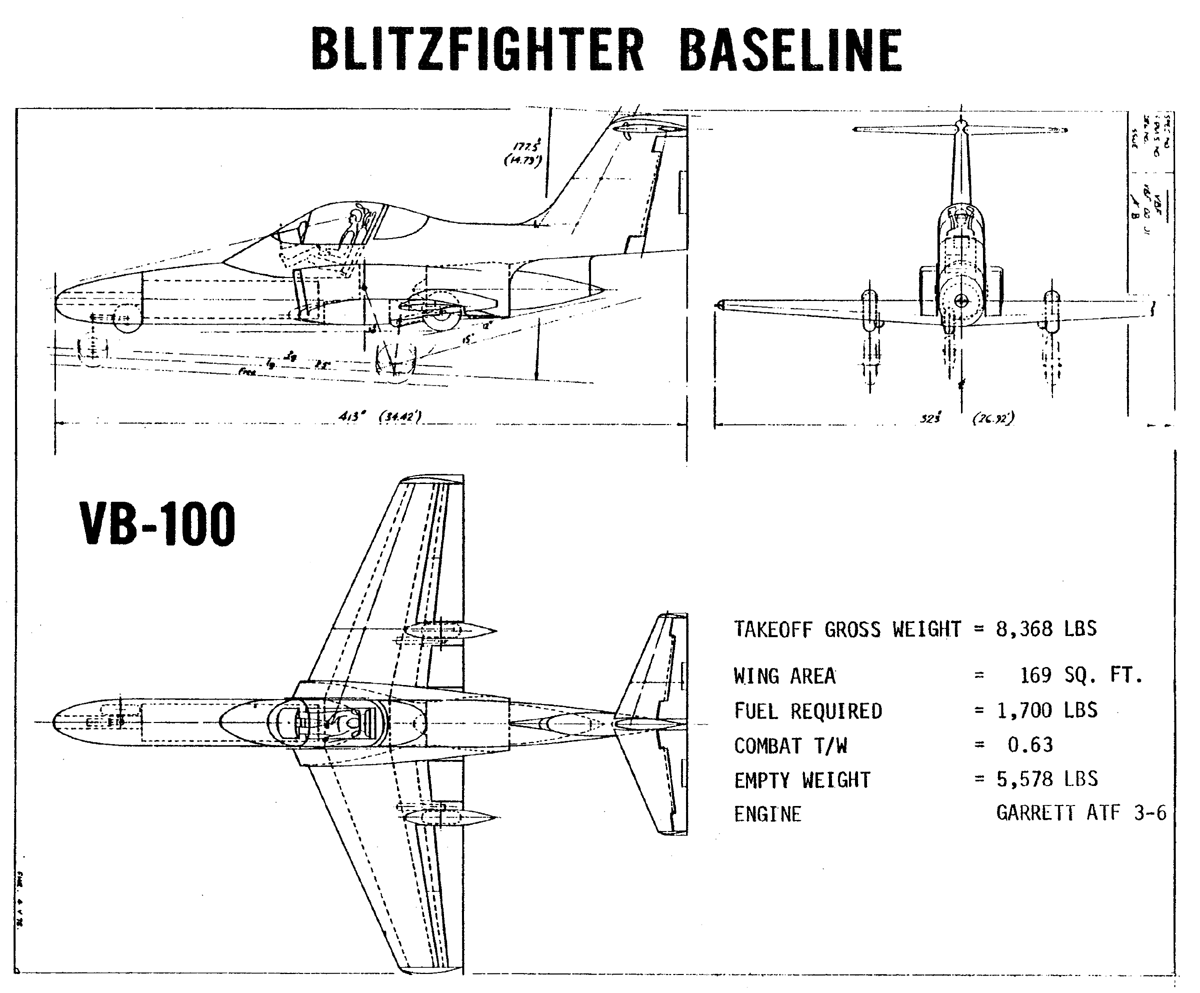
I presented this advocacy to General Toomay and asked his permission to make a formal request to our design bureau at Wright Patterson Air Force Base for design studies. He nearly gagged. [boo-hoo!] He was a high-tech advocate. Everything I was proposing was anti-high-tech. Naturally, we got into an argument.
He said, "You have to put a radar on the plane; you can't find tanks without a radar."
I responded, "You can't find tanks with radars; radars can't see through trees, over hills, and when you do see something, you can't tell whether the blob on the scope is a friendly tank, an enemy tank, or a Volkswagen full of refugees; no sir, you can't find tanks with radars."
He said, "Yes you can."
I said, "No, you can't," my voice rising.
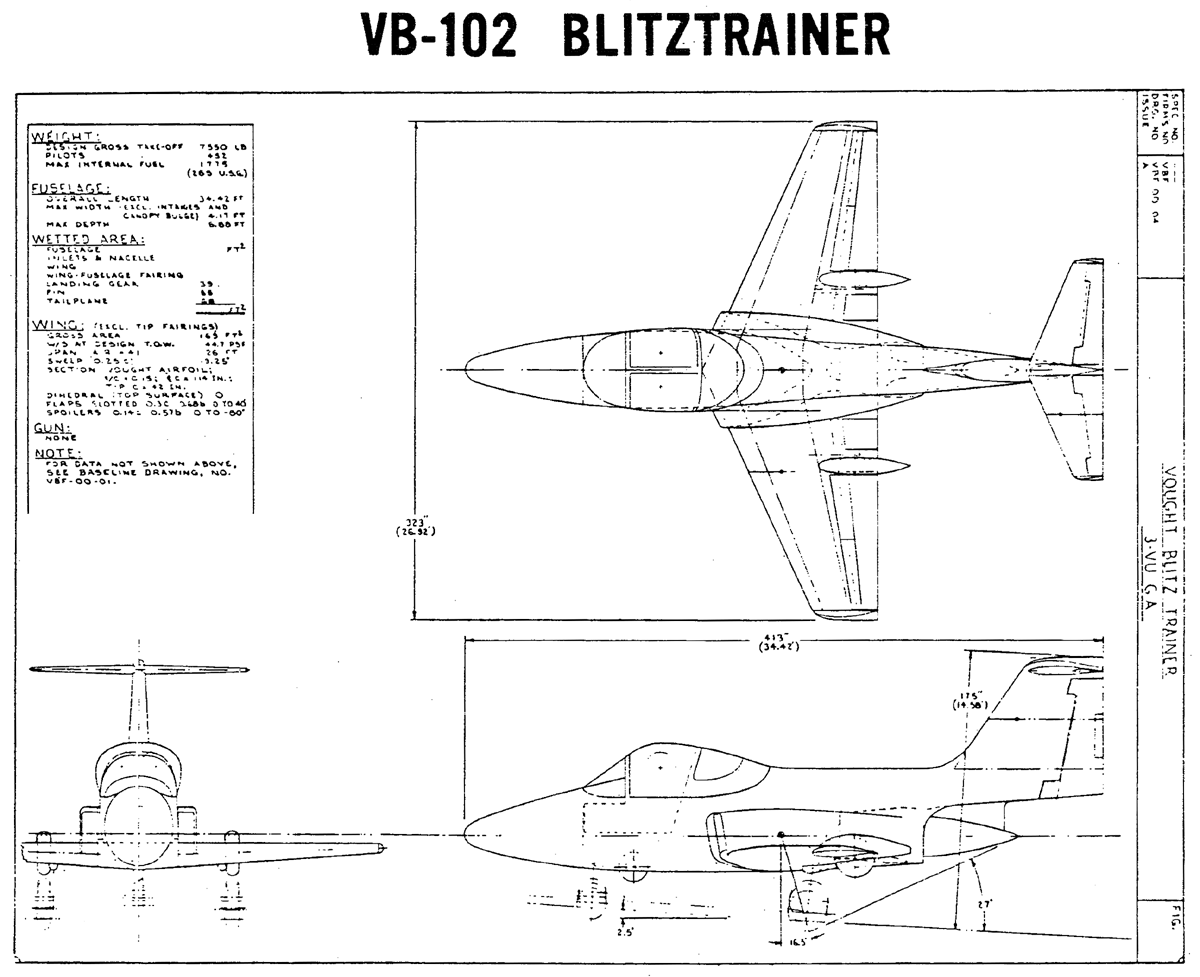
Then, standing up, he raised his voice, "Yes you can." General Toomay was a large man, over 6 feet 8 inches tall (His son, Pat Toomay, who took after his father, was a defensive end for the Dallas Cowboys at the time.) At this point, the argument was over. We had been through this routine many times.
Even though he disagreed with me, General Toomay permitted me to proceed without making any changes. He knew my proposal was going to stir up a hornet's nest once the word got out, and he really enjoyed making the system react to unconventional ideas.
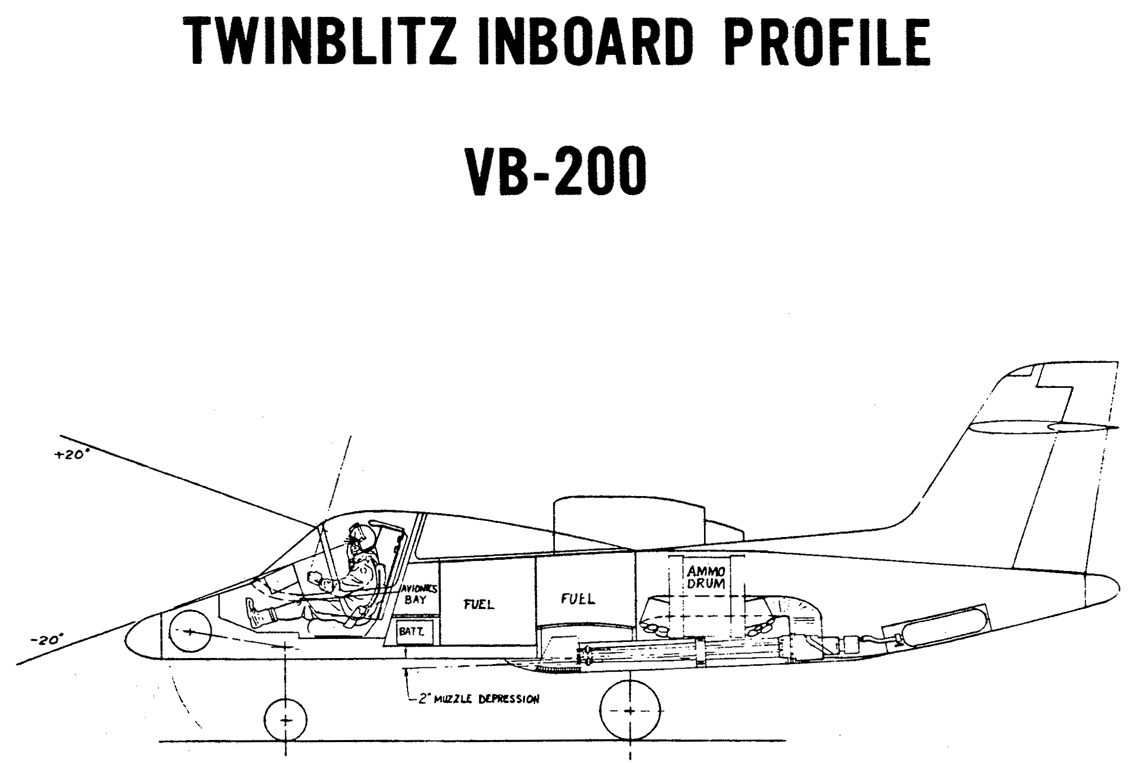
I immediately fired off a teletype to John Chuprin, chief of our design bureau at Wright Patterson. John and I performed thousands of design trade-off studies on the lightweight fighters for Boyd a few years before. He and his staff went to work and, within a month, reported back to me that it was entirely feasible to build the airplane I wanted - like I wanted it. He then gave me the preliminary designed for three possible configurations.
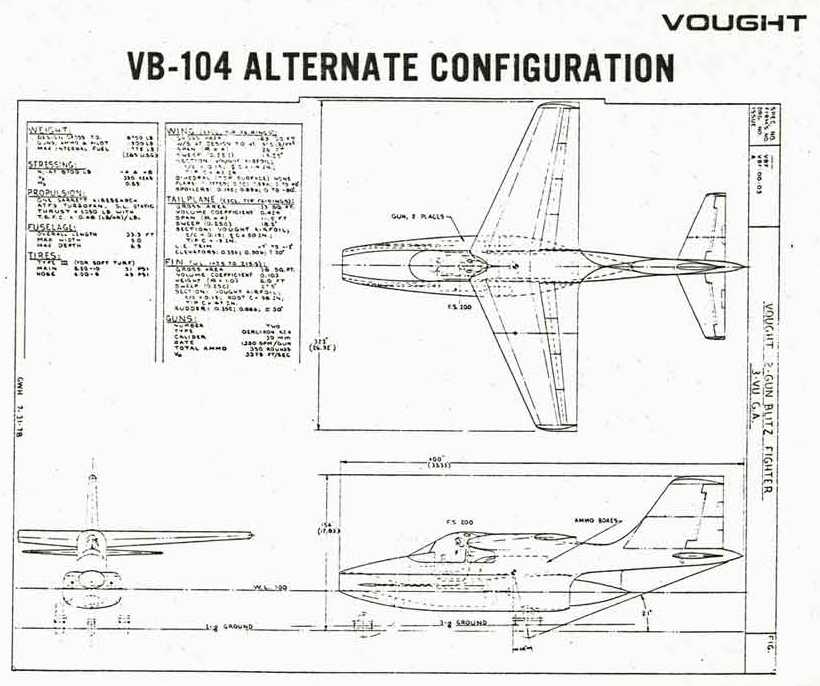
Armed with this information, I hit the briefing trail. My intent was to quietly build a network of support at various key agencies within the Air Force and within the Office of the Secretary of Defense before the establishment could react and kill the idea - much the same way the lightweight fighter had been ushered in.
One of the first places I went with my briefing was the A-10 program office at Wright Patterson, where Boyd arranged for me to meet Col. Bob Dilger. Dilger was in charge of producing the 30mm cannon and the ammunition used on the A-10. Because that equipment was such a key part of my proposal, I was anxious to get his reaction.
Dilger was an eccentric character. He was a fighter pilot in Vietnam and was credited with one MIG kill. After firing his radar-guided missiles at his opponent and watching them all miss, he literally ran his opponent into the ground. Bob can be quite aggressive, and he loves a good fight. I liked his style. We quickly became friends. We would join forces a few years later, to discomfort the army.
Dilger was very excited about my proposal and pledged his support. While I was there, he also briefed me on an unusual program he was running. The normal way to test ammunition coming off the production line was to select samples at random and fire them in a laboratory environment to measure muzzle velocity, trajectory, and other factors to determine if they meet the specifications of the contract.
Dilger did it differently. He put some realism into the tests. He scrounged up a bunch of old army tanks and about a half dozen Soviet [medium] Tanks (T-55s and T-62s), loaded them up with fuel and live ammunition as though they were in combat, and deployed them in typical Soviet tank formations on the Nevada desert. He then talked operational A-10 fighter units into attacking the tanks. Using their combat tactics, they fired Dilger's production line samples of ammunition.
These tests gave pilots valuable training experience. They also revealed, for the first time, major inconsistencies in the computer models that were used to predict the lethality of U.S. weapons. It seems that the test results differed by a factor of two from the model predictions on the lethality of the ammunition. The Soviet tanks were easier to kill than predicted, and the old U.S. tanks were more difficult to kill than predicted. The models were not only off by a factor of two, but they were off in two different directions. This really caught my attention, and I would pursue this subject with great vigor in the years to come.
I next slipped into the Pentagon, and quietly briefed Boyd, Spinney, Christie, and the other rebels in the TAC air shop. It was like preaching to the choir, for this whole crowd had become disenchanted with the direction things were headed in the tactical air forces of all three services.
Boyd arranged for me to meet and brief Pierre Sprey. I heard much about Pierre and was anxious to meet him. He became extremely excited over the Blitzfighter concept, not just the airplane itself but the whole philosophy and concept of operation. He offered suggestions to improve my briefing and put more bite into it. Pierre is very good with the editing pen, as I would learn in the years to come. He would become my chief editor during my running battle with the army over the Bradley. His pens are shaped like fangs, and his finished product drips with blood, usually Army blood.
Christie then ushered me into a secret meeting with Russell "Russ" Murray II, director of Program Analysis & Evaluation (PA&E). Murray was the defense secretary's chief analyst. Over the years, this position has been one of great power and influence - one that the secretary has turned to for advice on what weapons systems to buy. That advice, in the past, was usually contrary to the wishes of the services and led to a long-standing adversarial relationship between the director and the various services. In my view, that relationship was healthy, for it sharpened the debate over the appropriate choice of weapons. Under the Reagan administration, unfortunately, the position was completely neutered so that it was no longer a force to be reckoned with.
Russ Murray was receptive and pledged his support if my Blitzfighter proposal ever officially got to his level, but he doubted that would ever happen. In his view, the Air Force senior leaders would kill the idea as soon as they heard about it. "The airplane doesn't cost enough," he said. "They might buy it if you jack the price up two or three times." It turned out that he was correct.
[This is explained by RACKET THEORY: combatreform.org/RACKETTHEORYv6.0.htm]
My career suddenly took on a new life. For some strange reason the Air Force promoted my to full colonel after passing me for two straight years. Historically, the chances of being passed over twice is less than 3 percent. General Toomay surprised me one night when he called my home to give me the news. This promotion meant that I would be able to stay in the Air Force for many years to come, rather than leave the service within he next year. (This is known as the "up or out" policy. Any officer who is passed over three times must leave the service.)
Another promotion was important to my future. My favorite three-star, General Infamous, who had so kindly asked me to leave the Pentagon three years earlier, was promoted to four stars. You guessed it - he was immediately assigned to Air Force Systems Command Headquarters at Andrews. He would again become my boss and General Toomay's. I will never forget the day he arrived. He came to Toomay's office to greet us. In front of the staff, he actually wrapped his arms around me and greeted me like a long-lost brother. I thought to myself, "What's wrong with this picture?" I soon found out - Within weeks, I was shipped out again.
Meanwhile, Pierre was busy spreading the Blitzfighter story throughout the defense industry and on Capitol Hill. The concept was stirring up a lot of excitement in the design bureaus of various companies. Early in June 1978, a large group of designers met in a hotel conference room in Springfield, Virginia, about 10 miles south of the Pentagon, to explore the concept in some detail and trade ideas on design approaches. Unfortunately, the press was also there.
Aviation Week ran a two-page story about the conference and treated the Blitzfighter like it was an officially sanctioned Air Force program. The story cited the design studies that I had asked Wright Patterson to do and even showed sketches of the designs. The Air Force senior leaders were shocked and horrified. The story broke about two weeks after my favorite four-star, General Infamous, had arrived on the scene, and he went ballistic.
Undoubtedly, he got many calls from his fellow four-stars. Like many of them, he was an Enhanced Tactical Fighter advocate, and he was not going to let this Blitzfighter nonsense continue. He directed that I stop briefing. I was not even allowed to show him the briefing or explain the concept to him in any fashion. His closed mind had all the answers, and the Blitzfighter was not one of them. He pronounced to the world that the Blitzfighter idea was dead, by fiat, and then he arranged for me to be transferred out of his hair - again.
But the Blitzfighter was not dead. It would raise it's ugly head numerous times during the next few years as one of several symbols of the Reform Movement. Each time it surfaced, the senior leadership went berserk.
Pages 67-69
My first attempt to "Make them work for it" came shortly after I returned to the Pentagon in June 1978 as military assistant to Air Force Assistant Secretary for Research, Development, and Logistics Dr. Jack Martin. By law, the Air Force cannot negotiate and sign a contract to produce or develop a weapon system unless it has it's civilian master's signature on a document that permits it to do so. Called a Sectarian Determination & Finding (D&F), that document represents the instrument of control over the military's plans to buy new weapons - no signature, no program.
Dr. Martin, as the acquisition executive for the Air Force, would sign literally hundreds of D&Fs a year. My job was to make sure he knew the implications of what he was signing. Once he had signed, he became an equal partner to the venture (or crime).
I shall never forget that Summer day in 1978 when Brig. Gen. Richard "Dick" Phillips and his team of briefers marched into the Dr. Martin's office to seek his signature on the D&F for the Air Force's new fighter, the Enhanced Tactical Fighter. The rationale for developing this new airplane was so full of holes and the arguments presented by Phillips were so misleading that I could not remain silent, as I was expected to do. I must admit that as a newcomer in this arena, I was apprehensive about speaking up, but I did. In the middle of the briefing, I interrupted Phillips and blurted out three questions.
"What is the mission of this airplane?"
"Night, all-weather deep interdiction," the answer came back.
"General, would you give me an example or two from history where deep interdiction has actually influenced the outcome of a battle or campaign?"
The silence was deafening. Phillips scowled at me, but there was no other answer. So I quickly moved on to my last question.
"Is this airplane going to cost $2 million apiece, or $50 million?"
Answer: "Well, we don't really know because we haven't gotten that far in the program yet."
I knew this was untrue, because I had talked to the cost analysts at Wright Patterson air force base the day before the meeting. The $2 million figure was a subtle reference to the Blitzfighter, which was at the other end of the spectrum in both cost and mission.
The meeting broke up in disarray. Dr. Martin asked me to remain as the others filed out. He asked me what was going on since this was the first time I had become an active participant in one of his meetings. I explained to him that the Air Force was intentionally misleading him [It's called LYING] on this proposed program, and I gave him names and telephone numbers he could call to confirm if he had any doubt.
Dr. Martin picked up the phone, called Vice Chief of Staff Gen. James Hill, and asked for an immediate private meeting. He then walked next door and handed the unsigned D&F to the Vice Chief, and told him to forget about the program. Who says there is no justice in this world? The mighty Enhanced Tactical Fighter had been shot down in flames by the Blitzfighter. (During the Reagan administration, the Enhanced Tactical Fighter had been resurrected and put into production.)
Needless to say, General Phillips was not happy with me. I was soon braced up against the wall of the "E" ring. With his forefinger pounding my breastbone like a jackhammer, and his nose about one inch from mine, he let me know that I was dog meat and that several other generals would have a feast when I came back into the "blue suit" Air Force.
Then, the paranoia surfaced: "You're not going to ram that F___ing Blitzfighter down our throats like your friends did the F-16!" They were still smarting over that coup.
Pages 99-100
Although the Blitzfighter never got off the drawing board, either as a weapon system or a concept, it continually haunted the Air Force senior leadership. As a symbol of the Reform Movement, it would not go away no matter what the generals did. Every time the Blitzfighter surfaced, the generals went to "red alert".
Someone on the OSD staff (whose identity is still a mystery to me) had inserted into the Air Force's Fiscal Year 1980 budget the funds and directions for the purchase of 400 F-5E fighters. The F-5 is a small, low-cost fighter version of the T-38 trainer, the plane in which U.S. Air Force pilots learn how to fly. Thousands of F-5s have been sold to Third World countries because they are relatively inexpensive. The U.S. Air Force, however, considered it a second-rate fighter; it was beneath the dignity of the Air Force to have the plane in it's own inventory. This is the same fighter that had embarrassed the Air Force and Navy in the in mock combat tests in 1977, when it fought the vaunted F-15 and F-14 to a virtual draw.
When the Air Force leaders saw the F-5E entry in the budget plan, they came unglued. The vice chief of staff called a special meeting with the secretary of the Air Force and all of the civilian and military leaders. (I attended the meeting. The conversations of the participants below are related below in accordance with the best of my memory.)
At the meeting, the vice chief explained to Secretary of the Air Force Dr. Hans Mark that the OSD action was a ruse and that the money was secretly going to pay for the Blitzfighter, not F-5Es. The vice chief added that this evil act was being perpetrated by the reformers and it had to be stopped.
Dr. Mark asked, "Who are these Reformers?"
Gen. Jasper Welch, the No.2 man in charge of research and development on the Air Staff, gave a long speech about this gang of rebels and mavericks that gathered every afternoon in the TAC Air Shop. He quickly reviewed the reformers' philosophy and their preference for simple, low-cost weapons instead of the more technically advanced weapons the Air Force prefers. The other generals began their customary round of snide remarks aimed at the reformers and openly chuckled and laughed at the stupidity of the reformers' ideas.
As General Welch began to reel off the names of John Boyd, Pierre Sprey, Chuck Spinney, Chuck Meyers and the other reformers, Br. Mark interrupted him: "Wait a minute, I know these guys, and they are very smart people. Maybe we should listen to them."
This was not what the generals wanted to hear. Suddenly, they were no longer interested in getting Dr. Mark involved in stamping out the secret Blitzfighter raid on their budget. Dr. Mark was a strong-willed, hands-on secretary. When he became involved, things were done his way. Before coming to the Air Force, he had been director of one of NASA's laboratories.
Pages 101-102
It turns out the generals were all excited over a tempest in a teapot. The reformers had nothing to do with the F-5 showing up in the Air Force's budget. In fact, they were more surprised than the generals. Someone else in OSD placed it there as a lark, simply to make the Air Force mad - which it certainly did. The next time the Blitzfighter surfaced was for real.
The National Guard is a vital part of the overall defense of the nation. The peacetime relationship between National Guard units, who work for the president, is somewhat fuzzy. National Guard units receive their equipment from the regular forces, that is, the units do not buy their own airplanes. When the Air Force buys new airplanes, it puts them into the active force and sends it's older airplanes to either the National Guard units or the boneyard at Tucson. Whether the boneyard or the National Guard gets the better deal is not clear. Therein lies the rub.
In early 1982, a committee of Army and Air National Guard officers, mostly generals, published a report titled VISTA 1999. This report, which had a definite flavor of "Alsatian cuisine," called for two unprecedented actions. First, because the Air Force had, in essence, turned it's back on the concept of close air support, the National Guard wanted to assume the responsibility for that mission for the Department of Defense. Second, the National Guard did not want any more worn-out, hand-me-down aircraft from the Air Force. The repair costs for these old planes were much too high. The National Guard wanted Congress to give it permission and the funds to buy it's own airplanes - and the airplanes it wanted were Blitzfighters!
This was an act of open rebellion. The National Guard was asking for it's own budget, and permission to spend the money as it saw fit. Charles Mohr, in an article for the New York Times, stated, "The report angered and stunned many regular officers and Pentagon officials because of the degree to which the committee accepted major arguments of the 'military reformers'."
When Vice Chief Mathis learned of VISTA 1999, he virtually exploded. The National Guard Bureau, located on the second floor of the Pentagon, was the headquarters of all the guard units. The bureau was run by a two-star National Guard general. According to an aide, when Mathis saw a copy of VISTA 1999, he jumped up from his desk and shouted, "I'm going down there [to the bureau] and punch that general's lights out." He had to be physically restrained by his aides. The battle lines were drawn.
Even though they had old, tired equipment, the Air National Guard units always performed better than the regular Air Force units. At every turn, the National Guard units and their individual pilots were winning fighter competitions against the regular forces. Of course, such victories stuck in the Air Force's collective craw. These victories also added ammunition for the reformers, who publicly argued that pilots' and mechanics' skills were more important than the technological sophistication of a weapons system. With motivated and skilled people, the National Guard units produced superior performance, even though their equipment came from local Air Force thrift shops. Imagine what they could do with equipment of their own choosing.
When the National Guard stood up and said it was tired of being treated like a poor country cousin, Congress had to listen. Hearings were called. The Air Force scrambled to call in all of it's markers to fight off this unusual and unprecedented request by the National Guard to buy it's own airplane. After a heated debate on Capitol Hill, the Air Force prevailed.
The National Guard, however, did produce some good results through it's efforts. The Air Force began to send the National Guard better equipment, including F-16s and A-10s, instead of worn-out F-4s that were difficult to maintain. Of course, senior Air Force leaders were glad to be rid of what they considered low-end-of-the-spectrum systems. They felt they were "purifying" the regular force because of the reformers' favoritism for the F-16s and A-10s.
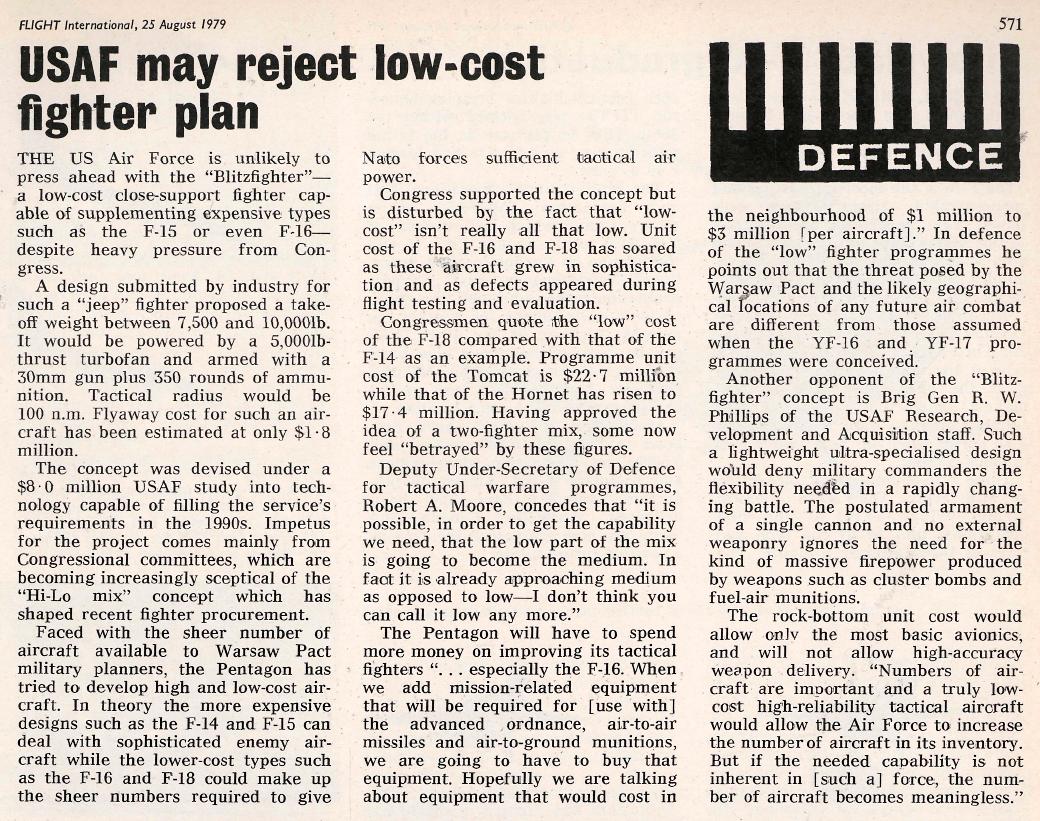
USAF may reject low-cost fighter plan
Flight International
25 August 1979
Page 571
The U.S. Air Force is unlikely to press ahead with the "Blitzfighter" - a low-cost close-support fighter capable of supplementing expensive types such as the F-15 or even F-16 - despite heavy pressure from Congress.
A design submitted by industry for such a "jeep" fighter proposed a take-off weight of between 7,500 and 10,000lb. It would be powered by a 5,000lb-thrust turbofan and be armed with a 30mm gun plus 350 rounds of ammunition. Tactical radius would be 100 n.m. Flyaway cost for such an aircraft has been estimated at only $1.8 million.
The concept was devised under a $8.0 million USAF study into the technology capable of fulfilling the service's requirements into the 1990s. Impetus for the project came mainly from Congressional committees, which are becoming increasingly skeptical of the "Hi-Lo mix" concept which has shaped recent fighter procurement.
Faced with the sheer number of aircraft available to Warsaw Pact military planners, the Pentagon has tried to develop high and low-cost aircraft. In theory the more expensive designs such as the F-14 and F-15 can deal with sophisticated enemy aircraft while the lower-cost types such as the F-16 and F-18 could make-up the sheer numbers required to give NATO forces tactical air power.
Congress supported that concept but is disturbed that the "low-cost" isn't really all that low. Unit cost of the F-16 and F-18 has soared as these aircraft grew in sophistication and as defects appeared during flight testing and evaluation.
Congressmen quote the "low" cost of the F-18 compared to that of the F-14 as an example. Programme unit cost of the F-14 Tomcat is $22.7 million while that of the Hornet has risen to $17.4 million. Having approved the idea of a two-fighter mix, some now feel "betrayed" by these figures.
Deputy Under-Secretary of Defence for tactical warfare programmes, Robert A. Moore, concedes that "it is possible, in order to get the capability we need, that the low part of the mix is going to become medium. In fact, it is already approaching medium as opposed to low - I don't think you can call it low any more."
The Pentagon will have to spend a lot more money on improving it's tactical fighters "...especially the F-16. When we add mission-related equipment that will be required fur [use with] the advanced ordnance, air-to-air missiles and air-to-ground munitions, we are going to have to buy that equipment. Hopefully we are talking about equipment that would cost in the neighborhood of $1 million to $3 million [per aircraft]." In defence of the "low" fighter programmes he points out that the threat posed by the Warsaw Pact and the likely geographical locations of any future air combat are different from those assumed when the YF-16 and YF-17 programmes were conceived.
Another opponent of the "Blitzfighter" is Brig Gen R. W. Phillips of the USAF Research, Development and Acquisition staff. Such a lightweight ultra-specialized design would deny military commanders the flexibility needed in a rapidly-changing battle. The postulated armament of a single cannon and no external weaponry ignores the need for the kind of massive firepower produced by weapons such as cluster bombs and fuel-air munitions.
The rock-bottom unit cost would only allow the most basic avionics, and will not allow high-accuracy weapon delivery. "Numbers of aircraft are important and a truly low-cost high-reliability aircraft would allow the Air Force to increase the number of aircraft in it's inventory. But if the needed capability is not inherent in [such a] force, the number of aircraft is meaningless."
REVELATION! Hip-Pocket MAS for grunts: Motorcycle/Autogyro Air/Ground Vehicle Already Exists: Larry Neal's SuperSkyCycle
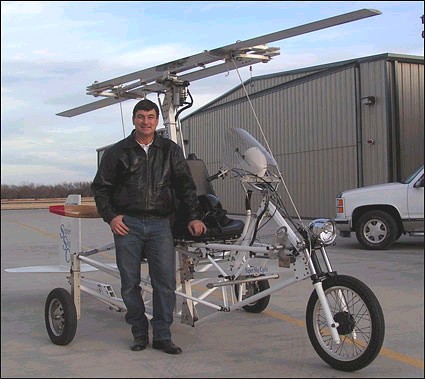
Video
 youtube.com/watch?v=-fzUPMpsLl4
youtube.com/watch?v=-fzUPMpsLl4
The Butterfly, LLC
P.O. Box 467
109 East Main Street
Carter, Oklahoma 73627-0467
Phone: (940) 627-9887
Email: larry@thebutterflyllc.com
jointstrikegyro.com new military domain name TBA
Larry Neal's new fly-drive vehicle is capable of flying as slow as 20 mph, cruises at 50 mph using half throttle, and tops out at 65 mph--which is perfectly fine for patrolling friendly held MSRs and border security fence lines with friendly troops on the ground below. It has been designed to land in about 20 feet and when folded will fit in a standard garage. It just needs a 100-130 hp diesel to operate using low-volatility JP-8 fuels for military use. He will even have a recovery parachute to bring the SSC down in event of malfunctions etc.
This is exactly what we propose as you know except for a mountain bike in a more minimalist fashion for military recon uses like patrolling MSRs with BATTLEBOX picket forts below. Notice how the rotors when folded are not a pain-in-the-ass! Larry Neal is a genius!
New Zealand Enclosed Flying Car Autogyro
 youtube.com/watch?v=CajAq6ndJYE
youtube.com/watch?v=CajAq6ndJYE
AeroSLED and GyroSLED FEATURES
* Defacto VTOL; doesn't need runways
* Excellent visibility
* Fuel and engine protects Soldier-pilot from bullets
* Clear construction makes it hard to see by enemy in first place

* Small frontal area reducing drag makes it fly fast: 200+ mph
* 3/4-wheel (clear) rubber solid tires easy to land on rough terrain and not tip-over
* Low-cost to buy in large numbers
* Easy-to-fly; enlisted pilots
* Wheels/landing gear retract up so can be loaded onto cargo bed of trailer or XM1108 Gavin track to be co-located with ground maneuver units in armored M113 Gavin tracks or defensive FOBs and MSR pickets in BATTLEBOXTM shipping containers
* Can be armed with light guns/rockets/missiles
With hundreds of Soldier-pilots in AeroSLEDs or GyroSLEDs scouring the skies looking for the enemies below, 24/7/365, we get the decisive smothering effects UAV proponents dream of but cannot achieve in an affordable way except one time during nation-state war only if they have lots of expendable UAVs on hand. This "Sky Cavalry" can find the enemy and hold him by observation & fire for the main maneuver body to finish them off with kill/capture.
Not to make you think I watch too much of the Discovery Channel, the History Channel recently exposed the reasons why the U.S. Army when fighting the plains Indians/Native Americans suffered numerous defeats. Essentially, the Indians fought non-linear, 2D mobile maneuver warfare using the horse and their legs to cover large distances and to get into dominating terrain to place U.S. forces into a situational disadvantage (Battle against the Earth); in one battle even though they had just bows and arrows, they beat the Americans with firearms because at short ranges (less than 50 meters) their arrows could hit and be fired faster at a rate of 8 per minute compared to the Cavalry's single-cartridge-at-a-time .45 caliber rifle which also played a dubious role in Custer's annihilation at the later Battle of Little Big Horn. If you drool over the late USAF Colonel John Boyd as the catch-all fount of all military wisdom, you can observe the Indians interrupted the American Army commander's decision-making cycle or "OODA loop" when they placed us into disadvantageous situations. The Americans wanting to fight linear foes based on the European and American Civil War CONOPS, relied on longer ranged rifle firepower after they dismounted from their horses and coughed up 1 man for every 4 holding the horses to form skirmish lines. The Indians would disrupt our firepower stand-off (sound familiar?) and ride into and get amongst our foot troops to exploit their shorter-ranged but faster firing lever-action Henry repeating rifles, bows/arrows and tomahawks for a close-range fight. At Little Big Horn, egomaniac Custer under-estimated the Indian enemy's quality (they had rifles, stupid) and quantity (even if they didn't if they lure you into a terrain trap they could absorb your fire and overwhelm you at close range) and got much of his split up 7th Cavalry force annihilated. Rather than LEARN from this incompetence, the Army excused it away by glorifying "Custer's Last (heroic) Stand" mythology (sound familiar?) even though forensic evidence matching the bullets and cartridges and human remains shows there was not much fight back when the Indians had such overwhelming firepower superiority.
The U.S. Army finally adapted and overcame when a smart general realized to beat the Indians with his own hired Indian scouts from a rival tribe, pitting one internal faction against the other and giving his horse-mobile forces a chance to see their enemies first and then carefully inch up on them to surround them and open fire at maximum effective ranges. The point here is that today's Army/marines are still unprofessional and egotistical refusing to admit to mistaken CONOPS and to adapt cleverly and rapidly, resulting in needless Soldier deaths/maimings. They do not want to be immersed in thinking how to fight wars better, they want a canned formula so at the end of the duty day they can goof off. The need for a CAVALRY that can be SIGNIFICANTLY MORE MOBILE AND SCOUT AHEAD OF THE MAIN BODY IS KEY to preventing it from slamming into a close-range meeting engagement melee where the outcome may not favor us. The first step towards reforming our Army so it can win no matter what be it close, be it far be it after 3D or 2D maneuver would be to get ourselves an Indian-like sky cavalry with INDIVIDUAL MOBILITY MOUNTS. The plains Indians even opted for SMALLER MUSTANG HORSES to do their mobile scouting and fighting---again choosing by thoughtful reflection on combat experience the smaller platform to maximize their desired CONOPS. The American Indians realized back in the 19th century that in the face of long-range firepower that they must use the TERRAIN for situational advantage, cover from bullet effects and concealment from the enemy to include high levels of camouflage, and a highly trained eye to track signs of the enemy in order to find him first far superior to what can be ascertained by a video digital feed to a remote control station--just like we propose with the AeroSLED.
But what of making the main body able to fly to effect 3D maneuver, too?
Option A: Meet the AeroTANK: Killer Bees that kill without getting themselves killed
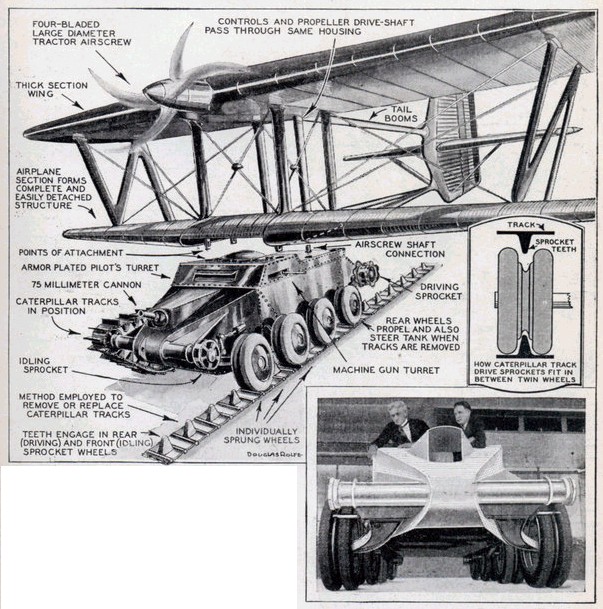
First off, praise be to legendary inventor Walter Christie who in the 1930s already figured out tracks are superior to wheels and that a basic bullet armor protection tank could be made to fly by exploiting its powered ground motion and engine power to a rear prop could generate enough lift over biplane wings to fly. Details:
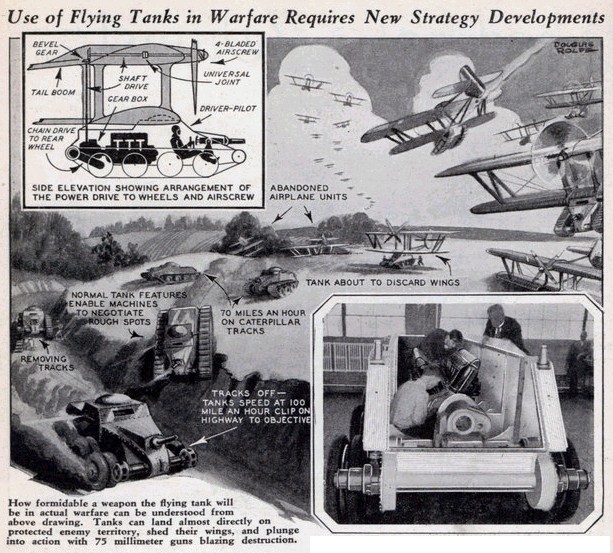
reocities.com/air_mech_strike/aircraftphotos.htm
In addition to the typical U.S. military narcissism and lack of imagination to prevail in wars, the latter not being a handicap of the Axis German civilian inventors, Christie didn't have all the helping technologies we have today. First, we have the world's greatest tracked AFV (TAFV) of all time, ever the M113 Gavin that as-is protects against 7.62mm x 51mm AP bullets and HE blast near misses while offering outstanding closed terrain cross-country and amphibious mobility at a weight cost of only 10.5 tons thanks to aluminum alloy armor. This TAFV can be shrunk to be a "Mini-Gavin" to be about 7 tons empty powered by a gas turbine engine and electric drive for 60 mph speeds and stealth movement capability for 600 miles on just 100 gallons of JP-8.
If you are going to go for the "maximalist" approach for 3D maneuver over and through closed terrain, then damn it, do it like the 70-ton Abrams heavy tank does for open terrain, 2D maneuver. Obviously, we should be already "air-meching" Gavins in C-130s and larger USAF fixed-wing aircraft and Mini-Gavins from inside Army CH-47 helicopters to get decisive, 3D maneuver to get fleeting sub-national foes like Bin Laden hiding in closed terrains and to nab nation-state despots running away from our regime change 2D maneuver pushes. However, notice we ain't doing air-mech. One reason is the narcissism of the light infantry to not admit they need armor protection and mobility more than what they can provide with their own legs and the fact they have been bad-mouthing the heavy unit Soldiers as "mech pussies" for decades and they don't want to be seen in tracks and have to eat some humble pie even if it will kick the enemy's ass, win the war America expects us to win and bring them home alive to sleep with all the women who idolize them instead of the lights going out as a flag-draped coffin and death statistic excused away by the living as not as bad as Vietnam, Korea or WW2. The next reason we ain't doing air-mech is because we need the egomaniac aviators to give us a lift in their overly complex maximalist aircraft so they are full of their self-generated excuses. As a testament to Christie's genius, he foresaw this aviator can't-do-this crap just as it began but found out the hard way that the light infantry narcissists want tanks to FOLLOW THEM at their pace and not the other way around. The Russians actually prepared their entire army to invade Germany with Christie-style offensive track-wheel tanks to include actually test-flying a glider-towed version of his flying tank.
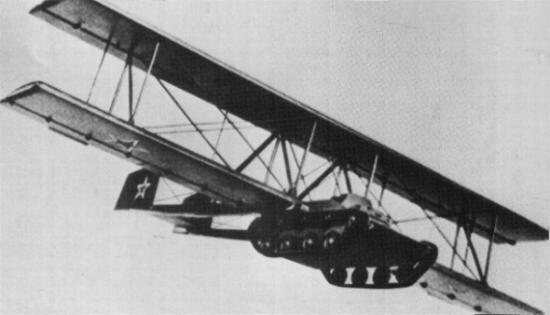
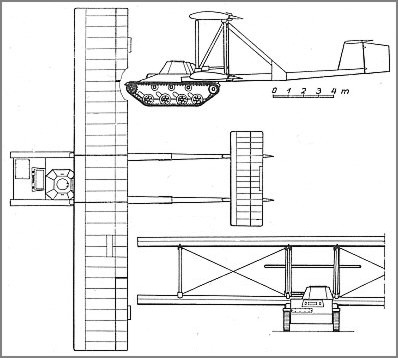

damninteresting.com/?p=374
Posted by Greg Bjerg on February 10th, 2006 at 5:10 pmSergei Anokin must have been one of the bravest men in the Soviet Army of World War 2. He is the only pilot to ever fly, or drive, the Antonov KT-40 Flying Tank.
The KT-40 was a Soviet T-60 light tank fitted with cheap wood and fabric wings. It was designed to glide into fields behind enemy lines. The KT kryl'ya tanka, (Tank Wings) was designed by the Antonov Bureau in 1940 and amazingly one working prototype was completed.
The twin boomed biplane wings were attached to the tank turning it into an armored glider. Heavy bombers would tow the tank to its destination and then release it as a nasty surprise for German troops. Supposedly elevating the gun for elevator control and rotating the turret for roll control maneuvered the KT-40. It had a crew of two, a tank commander and a driver/pilot.
In its only flight, the weight and drag of the tank caused it's TB-3 tow plane's engines to overheat very badly and the glider had to be released earlier than planned. Anokin flew the tank over a small, rough field and started the engine. He then engaged the drive mechanism and sped up the tracks before making a smooth landing. He detached the flying surfaces and drove back to base where he gave the KT-40 an enthusiastic review.
But despite the technical success of the test, the flying tank was not to go into production. The Soviets lacked a plane up to the task of towing the heavy KT-40.
Having the Mini-Gavin FLY ITSELF as its own AeroTANK would bypass the aviators who don't want to fly and the light or heavy ground narcissists who don't want to effectively 3D maneuver fight. Today's aerospace engineers can easily figure out the required wing lift needed to take-off a 7-ton Mini-Gavin and sustain it in flight by a lightweight transmission from its turbine engine to a rear propeller unit just as Christie envisioned it, perhaps not needing biplane wings to simplify things further. Fly-by-wire computer flight controls would be used to drive the hybrid-electric drive Mini-Gavin anyway, so having the software needed to control the wing's flaps, ailerons, prop unit and the tail unit's stabilizers, rudders would be easy and not cost any weight as a mechanical control linkage handicapped Christie in the 1930s. The AeroTANK would indeed really be a "flying tank" with armor protection for the crew and infantry inside from most enemy weapons effects. Most importantly, the AeroTANK Soldiers can execute 3D air-mech operational/tactical maneuvers ON THEIR OWN AS NEEDED WITHOUT BUREAUCRACY or "MOTHER MAY I?" of up to 200 miles.
Upon landing, the AeroTANK sheds its wings and tail unit which would have to be recovered for re-use not unlike cargo parachutes after a heavy drop, though they could be discarded/burned if in a pressing nation-state war situation. Now the say sayers might weigh in on the ground functional side of the AeroTANK whining that the Mini-Gavin is not armored enough yadda yadda. The first reality is, DO YOU WANT TO MOVE WITH ANY ARMOR PROTECTION IN CLOSED TERRAIN OR NOT? Increase weight to over 20 tons medium and you are increasingly unable to move through closed terrain and can't swim anymore short of oversizing the hull (USMC amtrack mentality) making yourself a huge target easy to hit in a vicious cycle of size needing more and more armoring than the engine/suspension can't handle. Next, once on the ground, dirt can be filled into pockets that attach to the outsides of the Mini-Gavin making it RPG, ATGM and landmine proof against most threats--certainly good enough protection for a situation where ANY armored cross-country mobility beats not having ANY which is how the easily ambushed light infantry wheeled truck road/trail and foot sloggers are getting creamed now in Iraq/Afghanistan.
AeroTANK
Artist's Rendition
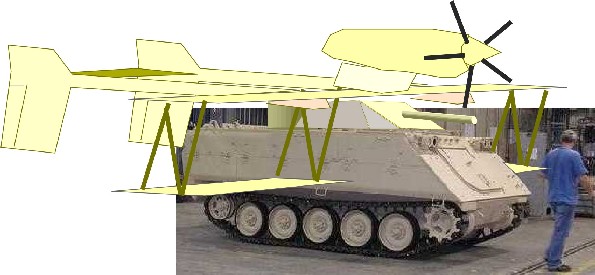
Side view
Wing/prop============|
_________[_]_______
/------------------------------ |
| _________________|
\_O_O_O _ O_ O_O_/
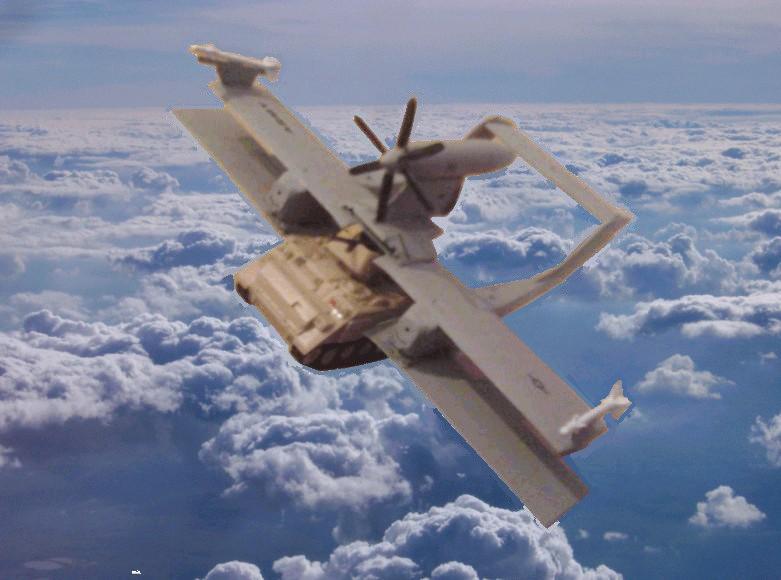
 youtube.com/watch?v=24Rr03hqDec
youtube.com/watch?v=24Rr03hqDec
Air Force-Owned Transports
One of the bureaucratic and cultural problems standing in the way of progress towards airmechanized, 3D maneuver warfare is having to get a group of outsiders to fly the mechanized force--even if its very light and interfaces easily with the delivery aircraft. The Germans in WW2 instilled air/ground teamwork by making their Army Paratroopers a part of their Air Force (Luftwaffe). However, by the time their aircraft payloads had been improved to where they could air-mech light tanks with the Me321 glider and powered version Me323 Gigant STOL transport, they were on the strategic defensive. In contrast, the Allies kept their Army Paratroopers separate from their Air Forces which kept a bureaucratic schism that cost us men's lives: en route to Sicily 37 x C-47 transport planes were shot down by jittery Navy gunners below and cost us battles--Arnhem where the Airborne couldn't convince the transport planes to deliver them where they wanted to be or enough of them to prevail. Today, separate Air Force bureaucracies want to operate like pampered airlines with routine schedules flying from airfield runway to airfield runway and not get shot at or too dirty in the process. What gets lost in this is fixed-wing aircraft payload efficiency required to strategically, operationally or tactically maneuver even the light (under 20 tons) tanks of an air-mech defacto cavalry force.
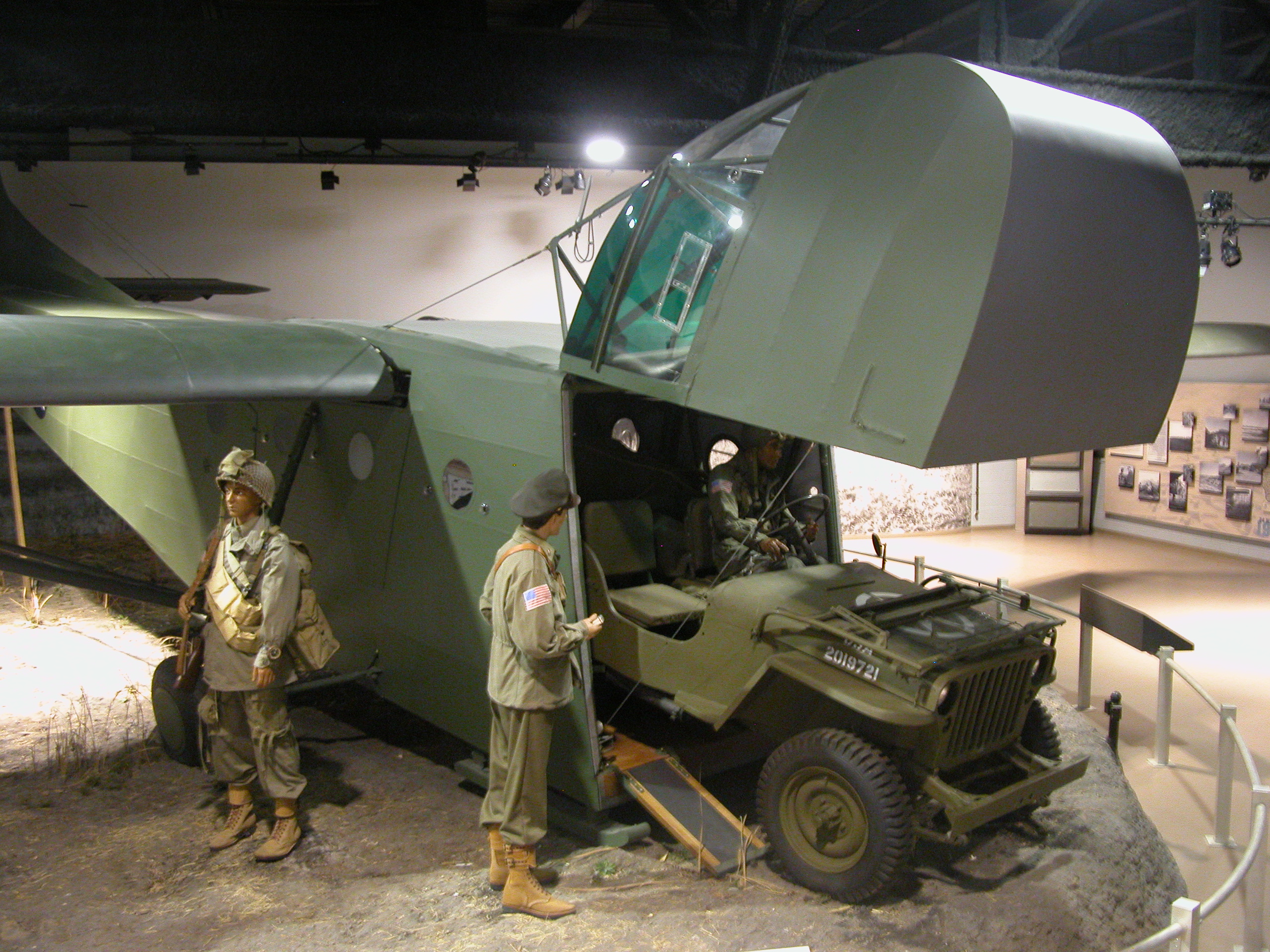
In WW2 to get the necessary crash-landing, one-way of vital supplies to spots where there was no runway/airfield, fixed-wing gliders were towed by [army] air force transport planes and then cut loose to be landed by ARMY pilots. The ARMY owned and operated the gliders and this is a critical distinction: they didn't mind if they got destroyed in the process of airlanding so this facilitated an aggressive use of where they were delivered that an air force bureaucracy with powered planes even STOL ones would simply not go. The British 6th Airborne Division used giant Hamilcar gliders on D-Day and the Rhine river crossings to deliver light tanks with great effect and won important battles with them. The British 1st Airborne Division refused to repeat light tank delivery at Arnhem and lost the battle. The American Airborne didn't even try to deliver light tanks and suffered heavy casualties in all operations throughout the war.
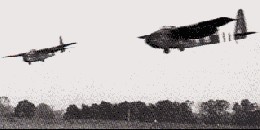
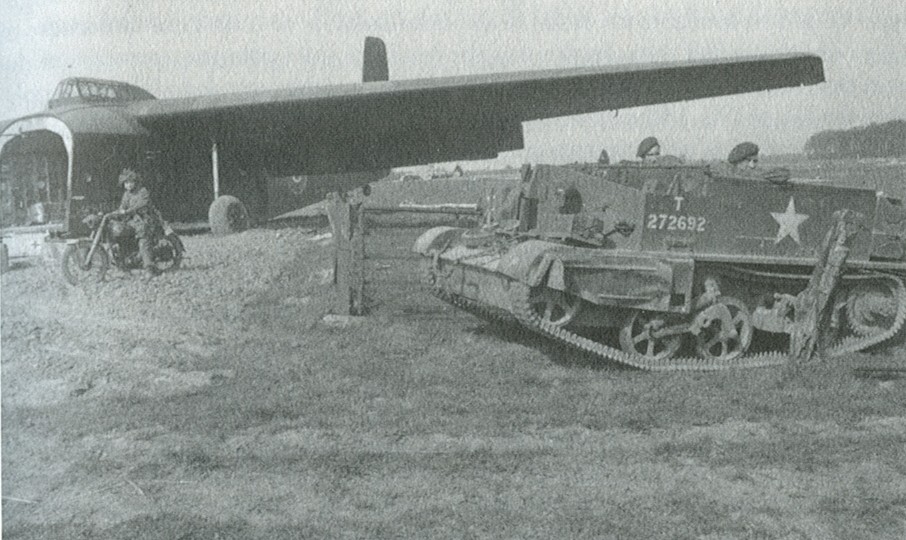
At WW2's end the British, Americans and even the Germans had realized a peculiar fact: that if a glider were towed into the air by a transport plane, but carried its own low powerplant propulsion means, it could fly itself all the way to the target and crash-land, eliminating the whole complexity and dangers associated with unpowered gliders having to be towed all-the-way-to-the-target. The CG-20 heavy payload glider morphed into various powered forms until it became the STOL C-123 owned and operated by the USAF reluctantly--and lost in the process was the land anywhere-with-payloads capabilities of gliders.
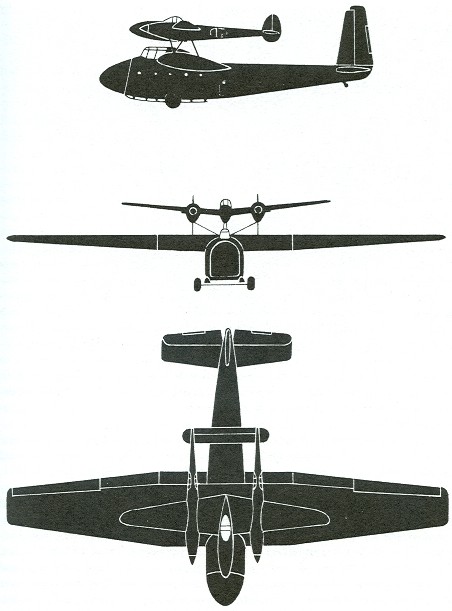
The British even came up with the glider being towed aloft and then powered by a P-38 fighter--once detached they'd then have a fighter to strafe the landing area and/or shoot down any enemy planes. Its still a great idea we could use today by employing the A-10 Warthog to power a flying wing holding an ISO shipping container "BATTLEBOX" that could have a Mini-Gavin inside.

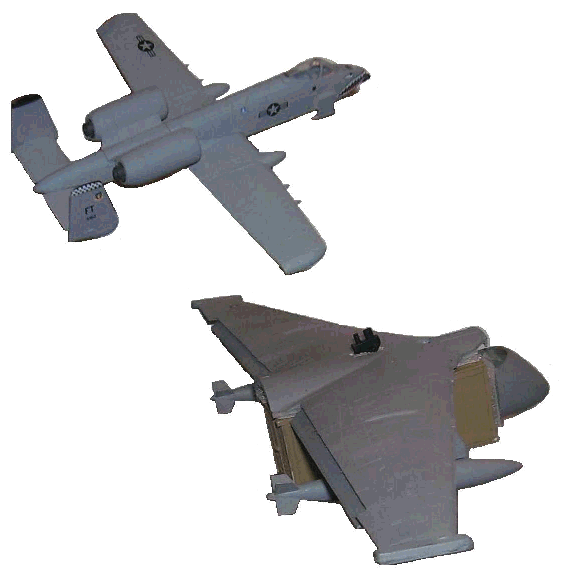
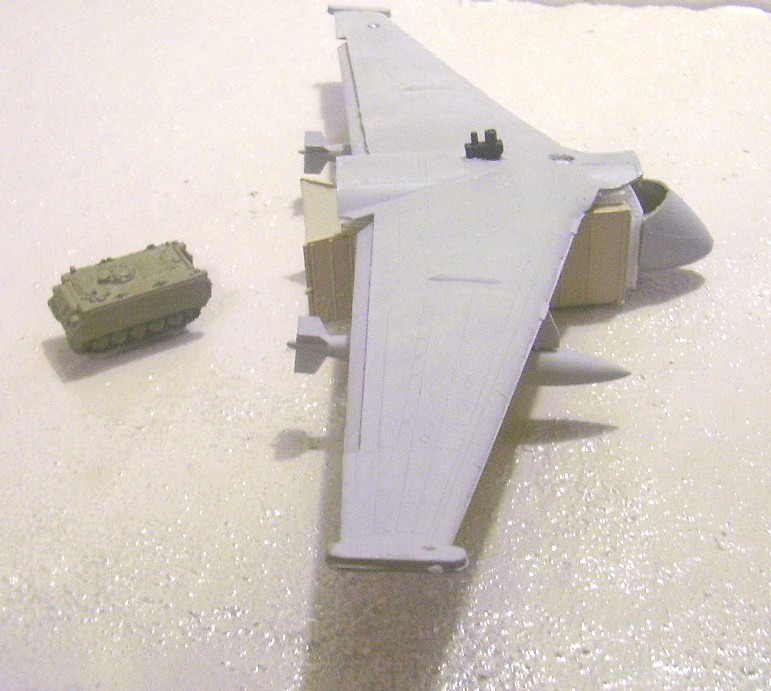
BATTLEBOXattackgliderTM
Why did the U.S. Army Airborne in 1949 give up on gliders just when they were about to be perfected?
Because the glider-riders and pilots were yet another "THEM" compared to the parachute delivered "US" and disliked and seen as a threat--instead of a valued help. In narcissistic snobbery, the paratroopers looked down on the glider Soldiers as "pussies" because they didn't jump with their bodies--but sat their asses on seats and rode gliders to land. So there was no powerful glider bureaucracy within the Army to fight for the capability--so it was lost. The paratrooper's self-serving argument was EVERYTHING would parachute drop---which is true its possible--but this made them even more dependant upon a separate Air Force bureaucracy to fly them and drop them. The result of this can be seen today in Iraq/Afghanistan where we should be dropping paratroopers and light tanks all over the place like the Rhodesian Fire Forces to subdue sub-national conflict rebels but don't because of the difficulties associated with getting the USAF to play and after the drop collecting parachutes. Don't get me wrong, we should already be doing this.
Army-Owned Transports
A step towards the right direction was made when the Army guaranteed its own powered transports via the its-different, rotary-wing helicopter initiative in the 1950s. The self-centered USAF bureaucracy tolerated the Army getting helicopters because they are expensive, fragile and even though they can land VTOL into and out of pin-pointed areas, they can't deliver much combat power (until of late) with them. My point of contention is you still have a fragile, powered aircraft airlanding slowly into a danger area that if it crashes and burns the enemy scores a powerful victory. With helicopters we have created an Army risk-averse bureaucracy that the air-mech unit still has to "mother may I?" to get them to fly you anywhere. Even when the Army gets its own C-27J Spartan fixed-wing STOL & airdrop transport planes, the bureaucratic obstacle of asking outsiders "for a lift" will remain to be overcome.
No Airfields = No Transport Planes
Now that we understand the self-inflicted reasons why we have insufficient air/ground 3D maneuver synergism we must face the most ominous problem: an enemy increasingly able to locate, hit and destroy our air bases and wipe-out our entire Air Force on the ground. A combination of pilot ego and laziness that wants comfortable facilities to live at and corporate greed have merged into a "death spiral" of overly complex, large, costly, sexy planes that we can only afford handfuls that will be vulnerably parked in the open on large, easily detected and attacked air bases. Now we can and should disperse our air forces into camouflaged and underground "BATTLEBOXes" using folding wing and quick-launch technologies to evade enemy precision strike destruction.
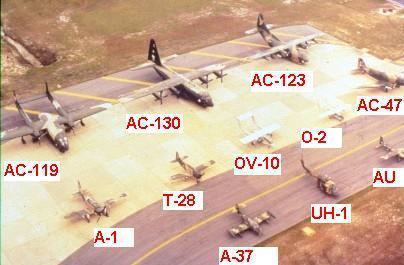
Notice how the large transport aircraft stand-out on a runway compared to smaller attack/observation aircraft...
However, hiding large transports like the C-5s, C-17s, C-130s and C-27Js will be difficult to impossible--which means they will not be available to fly the Army anywhere after the one-time strategic air delivery from CONUS to the theater of operations. And don't get too smug about the Army's large helicopters being much better at being protected from enemy air base destruction.
The Navy with its bloated supercarriers and amphibious surface ships (floating air bases) are also not likely to survive, either--with no ability to use the water for protection. At least the AF can burrow and hide easily under the ground if they made the effort to reform itself.
No airbases = No aircraft. No aircraft = No air cover. No air cover = No American military victory at best, at worst--Guadalcanal without a happy ending.
There has to be a better way.
There is.
Make tanks fly.
Walter Christie was Right All Along
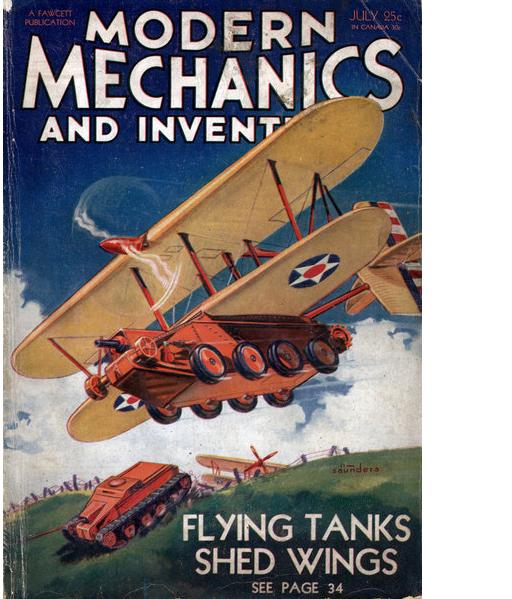
While Colonel Edward Swinton and Winston Churchill rightfully are credited with inventing, the tracked, armored "tank" in WW1, it was Walter Christie who created the modern tank with robust suspension capable of moving at will all over the battlefield for hundreds upon hundreds of miles. Rejected by Army ordnance and the cheapskate depression-era U.S. Congress, Christie took his technology to the Soviet communists who culminated it into the T34 medium tank--arguably the best tank of the war. This part of tank history even the "whoppertanktard mech pussies" will admit is true. The whole truth is that the U.S. Army could have had Christie flying tanks and heavier well-sloped turretless STUG or turreted T34-type Christie tanks in WW2; saving thousands of lives and winning the war sooner. The rest of this truth they will probably demur on because psychologically the men who gravitate to mechanized warfare are introverted and lack the raw courage to risk their bodies as the extroverted--but narcissistic and unwilling to combine arms--light infantry paratroops will do to 3D maneuver into war and battle-winning decisive situations. The basic idea of the mounted trooper is he wants to be in the armored box so he doesn't get killed or maimed by enemy fire. However, this common sense desire must not be allowed to be the whole mentality driving force structure and operations--lest there will be no fighting spirit to take-the-fight-to-the-enemy-and-win which requires taking risks. Sadly, today's Army heavy brigades are dominated by this cowardice that battle will not be joined unless in an invincible medium-to-heavy tank--which resultantly restricts HBCT usefulness to just open areas for 2D maneuvers. Find some closed terrain, and the LINNIEs walk in and claim they must foot-slog and illogically road truck hop all over the place as we see absurdly in Afghanistan. If you are a "tanker" and you insist you are not a pussy (coward), then STFU and stop resisting the use of lighter tanks for a cavalry--that are required even if not 3D air-maneuvered--just to traverse closed terrains where low ground pressures are required so we can even have effective 2D maneuver. Without a cavalry making first contact with the enemy ahead and developing situations on our terms, the main body slams into every problem and gets tangled up. Study the 3rd ID (M) "thunder run" into Baghdad and note their avoidable losses. Had they owned an actual light tank cavalry--and not BS Humvee truck units that are fatally unsound if sent to make any contact with the enemy these loses in vehicles and men would not have happened. The Light Infantry BCTs do not want to look like the HBCTs so they automatically rejected tracked tanks--even light ones--out of their snobbery and narcissism resulting in America not having a cavalry as LTG Gavin lamented back in 1954 upon the aftermath of the Korean war.
You can see the trend here; whenever you separate a function to a bureaucracy you lose that function when you need it.
Example: transport aircraft owned by the Air Force.
Conversely, if you keep a function within a large bureaucracy and have it compete for resources and use in plans it will be ignored in favor of whatever the main body groupthink finds sexier.
Example: Cavalry in the Army.
Christie saw this and figured out the solution as did the early Russian Airborne VDV pioneers: make tanks fly.
Then the owners and operators are united at the platform level. The challenge then is to not compromise the platform's function if tasked with its delivery task as seen in the overly large and complex high-water speed AAAV/EFV that is damning the USMC. By making the air delivery means for tanks detach--be it parachutes and platforms or wings and power units--doesn't degrade the former's function upon landing. More on this later. First a look at what being resourceful really means.
Airborne Warfare: Paratroopers Get the Equipment they Need to Win, Not Just Do With out
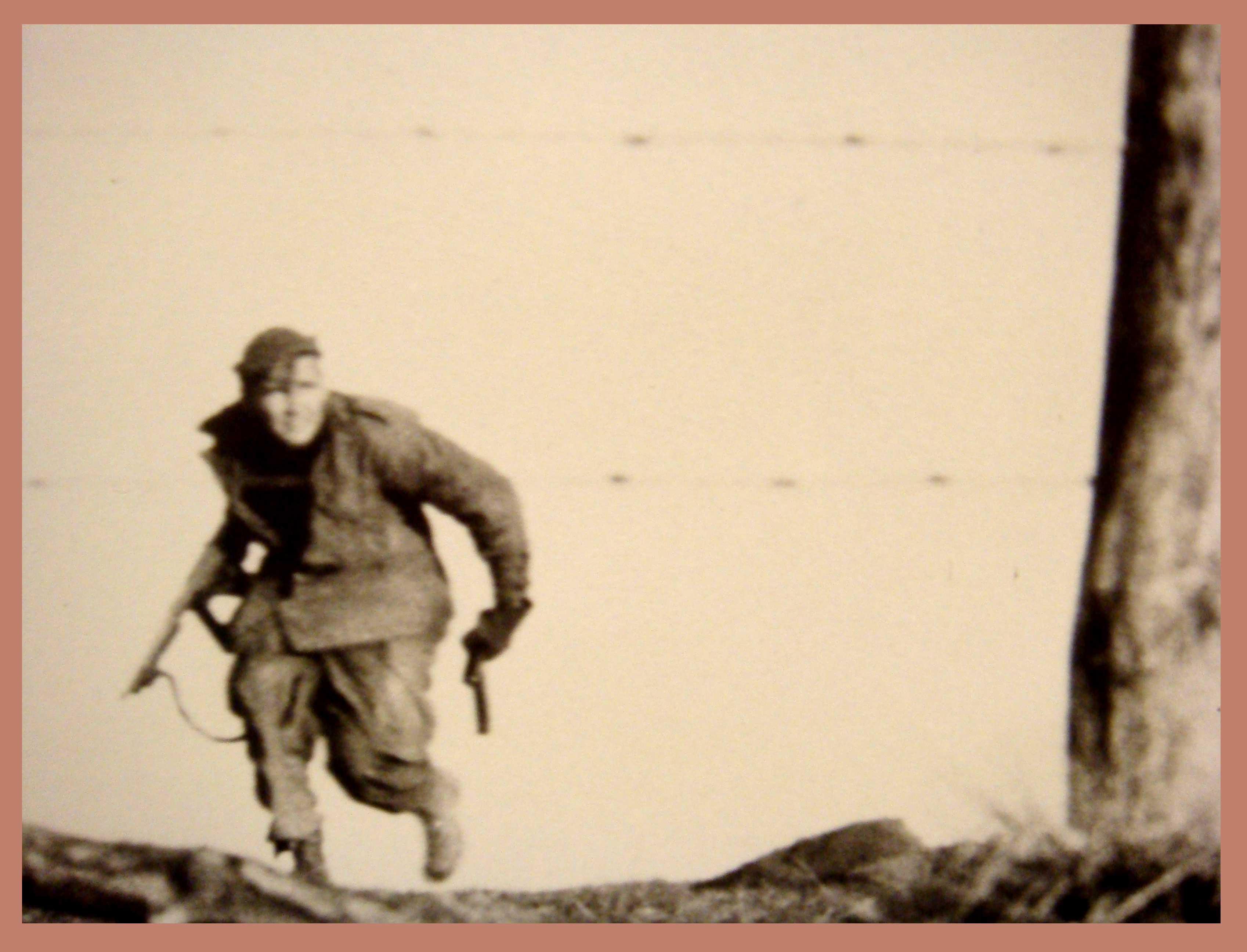
One of the BS narcissistic crap that comes from today's egomaniac Paratroopers living off the WW2 legacy of our pioneers like LTG James Gavin is their perversion of the former's teachings and life's works. One of them is this taking LTG Gavin out-of-context to try to foist off this BS that Paratroopers don't have to worry about equipment--all they need is their big egos and physical fitness. These LINNIEs will cite the picture above that LTG Gavin had posted in his office of a Paratrooper in combat during WW2.
If you take what the LINNIEs are saying at face value--which is what they want--why does the Paratrooper need ANY equipment? Why doesn't he just attack the Germans naked? After all, all that matters is mental attitude and physical fitness, right?
Oh, wait a minute!
Look what he's carrying. He's got a Thompson sub-machine gun (SMG). Looks like a .45 caliber automatic pistol (ACP), too. Where did they come from? Did the Paratrooper create these by doing push-ups?
No, THEY WERE MADE BEFOREHAND IN A FACTORY after much THOUGHT and experimentation by equipment designers and engineers. Not Paratrooper dumbass and push-ups. Someone with brains created them. And without them, the Paratroopers wouldn't have taken squat in WW2--or any other time--because the whole creation of a Paratrooper requires aircraft, parachutes--and tanks---which are built by GIDO--Get It and Drive On--Airborne leaders working with designers and engineers (industry). Paratrooper resourcefulness is more than just FIDO (Fuck It, Drive On) by making do with what you have got or can find on the battlefield as somewhat expressed in the famous picture above. It means GIDO BEFORE THE WAR TO GET THE BEST FORCE STRUCTURE AND EQUIPMENT. Kind of like EXACTLY what LTG Gavin said in his BOOKS Airborne Warfare (1947) and War and Peace in the Space Age (1958).
So this LINNIE FIDO BS that the bad WW2 re-enactors blab about today to try to excuse away their Luddite hand weapons-only laziness that stands in the way of Airborne warfare progress today is in violation of the true Airborne spirit as defined by Mr. Airborne himself, LTG James Gavin. In his books, he called for detachable KIWI pods that fight and air-deliverable light tanks THAT WOULD BE OWNED AND OPERATED BY THE PARATROOPER. Making the tank itself fly and not need to be in or be the KIWI pod that requires an USAF transport plane would be the epitome of the U.S. Airborne Spirit of "LOGOPs" because it would empower the little group of Paratroopers to have its own armored, air, amphibious and x-country mobility (XCM), firepower and vital supplies all in one package under their ownership and control. It'd be the first step towards Robert Heinlein's Starship Troopers mobile infantry that could fly.
What is a Tank? What is a Flying Tank?
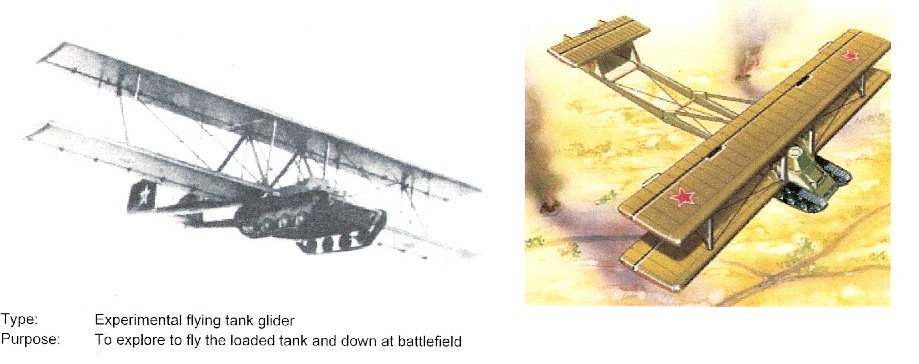
Essentially, what a tank does with its body is condenses itself into a very thick form or shell so it can withstand enemy attacks. Its tracks enable it to go cross-country and even over enemy obstacles of wire and trenches etc. This makes the tank's mass gravitate towards the earth--which makes it hard for airplanes to take them into the air by air pressure differential using wings. A wing cuts through the air and the curved shape on top makes the air on top move faster than the air on bottom so it lingers for a shorter time on top so its otherwise 14.7 PSI weight is reduced creating an imbalance so the wing lifts. This is induced lift. A fixed-wing plane needs thrust to move forward to get air flowing over its wings to make induced lift and then when it rotates its nose the wing gets dynamic lift from the air hitting the underside of the wing causing action-reaction. A rotary-wing eliminates a long run by rotating its wings to slice through the air to induce lift but so far is limited once in flight to no more than 300 mph due to retreating blade stall.
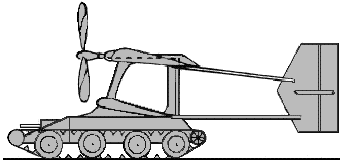
Therefore, making a tank fly is simply a matter of mathematics; provide enough lift either by fixed or rotary wings. Ever the clever minimalist, Christie realized in the 1930s that if you supplied his light tank with bi-plane wings (two sets of wings) you would only need to tap into the same power plant that powered the tank on the ground and route it to a propeller to move through the air. So far my research doesn't indicate exactly why he never (I ass u me) got his M1932 flying tank into the air when there is photographic evidence that he was building an actual prototype.
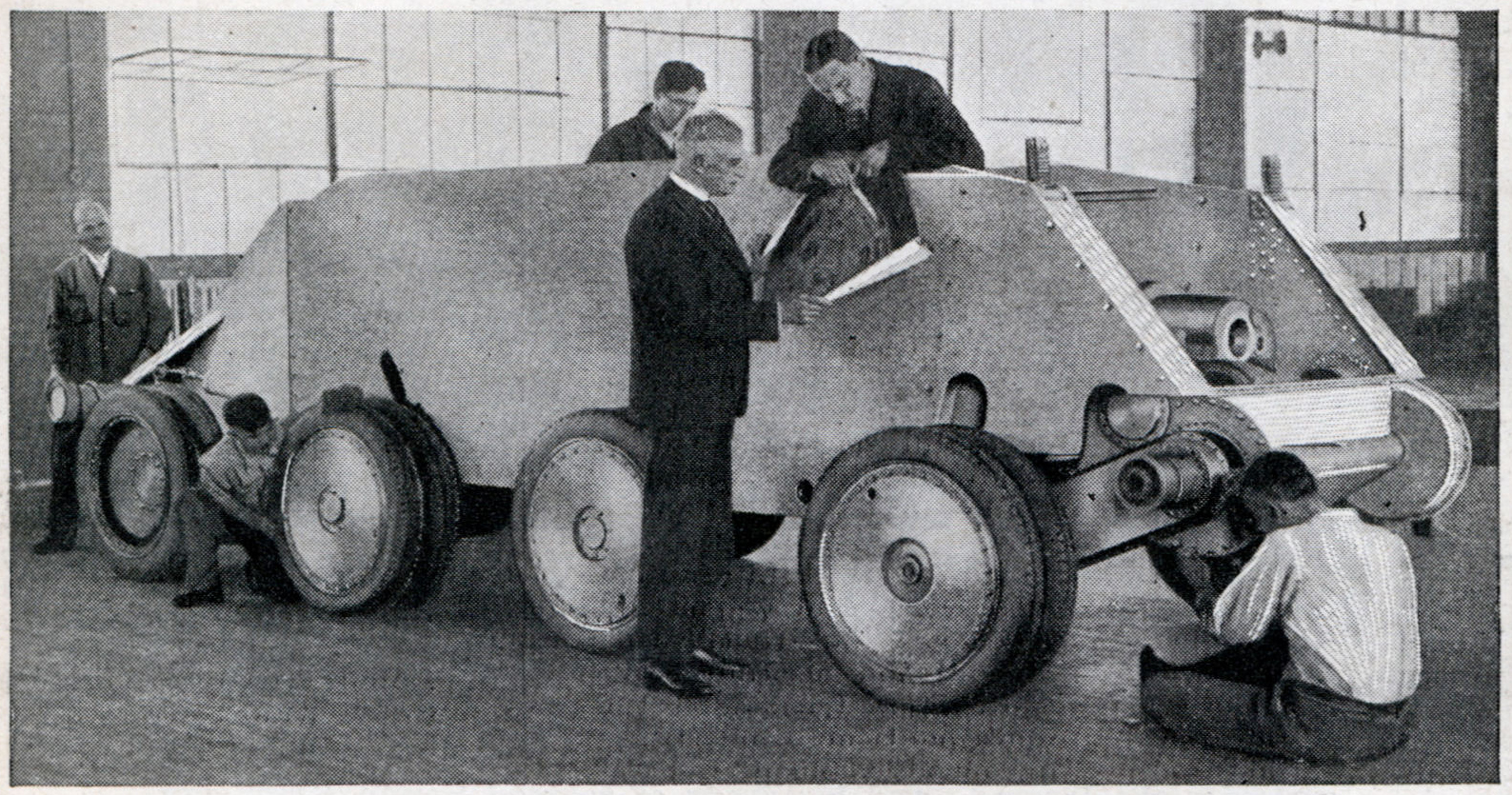

Now the first reaction from the mech pussies must be dispelled. They will bitch and whine that Christie's tank was "too light and didn't have enough protection" yadda yadda yadda. NO TANK is ever protected enough for a coward. Secondly, these cowards do not understand WARFARE--which is about winning battles and not personal survival concerns over tank dueling. The Christie M1932 tank was an OFFENSIVE cavalry weapon that would fly to get into positions of advantage to destroy the enemy's rear areas holding together their force cohesion or to take key terrain so the MAIN BODY in heavier tanks can pass. The mech pussies have no concept of a cavalry that has to be lighter than the main body in order to serve it by moving ahead of it to make first contact with the terrain and human enemies to develop the situation according to our initiative. Because the mech pussies have weak egos they want everyone to be mediocre like them in a main body borg someone superior to them in any way hurts their feelings. Hence, we have no cavalry in all-volunteer, adult-less, U.S. Army because it has no bureaucracy let alone professionals to fight for its equipment and mission.
Regardless, the Christie M1932 had a 75mm gun STUG-style in its front hull making for a very low silhouette would not have needed heavy armor plate and would have been devastatingly effective at blasting both ground pillboxes as well as enemy tanks. M1932s would have air-landed by SURPRISE (another concept the mech pussies that want to stampede hundreds and thousands of tanks at a time do not understand or accept) and shot up vulnerable enemy areas. Think Donald Sutherland's tanks shooting up the German rail station in Kelly's Heroes. The M1932 at 80 mph on tracks and up to 100 mph on its wheels on the ground would have had far superior mobility to anything the enemy would have.
The next BS criticism is against the Christie BT wheel-track tanks that preceded the tracked-only T34. The mech pussies with an anti-light tank, anti-cavalry agenda whine that when Germany invaded Russia in 1941 their light tanks over-whelmed the Russian's. Well no shit, Sherlock. What do you expect when you have to fight on the DEFENSIVE with OFFENSIVE tanks? The whole point was that Russia was getting ready to invade Germany and Hitler had no choice but to strike first, which caught the offensively-equipped Red Army at a disadvantage. There is your explanation contradicting the mech pussy agenda. Russian tanks had to get heavier because they were on the DEFENSIVE. However, to their credit they didn't go too heavy because they knew eventually they'd have to march on Berlin--so the T34 was kept under 40 tons. Christie partially vindicated.
The time has come for Christie to be fully vindicated. If you want to fly a medium tank, you can. Knock yourself out. Its simply a matter of mathematics. You can even make heavy tanks fly, but the following is about how to create an air-mech cavalry to support the main body--not make the main body fly. Once you get above 50 tons with a heavy tank, the wing area needed to fly becomes immense; over 100 feet--which makes for a big target and a costly to operate machine--but it is doable; the Mi-26 Halo heavy lift helicopter offers us undeniable daily proof just short of heavy tank lifting. Ralph Zumbro and Bill Schneck have long proposed we get a Very Heavy Lift Helicopter (VHLH) to carry M1 Abrams heavy tanks and end once-and-for-all the excuses the mech pussies have for not flying.
We don't have to wait 10 years and $10B later for a VHLH or Joint Heavy Lift Helicopter (JHL) to be developed...we already have the world's greatest light tank, ever--the M113 Gavin which stands on its own as the ideal cross-country mobile, amphibious tracked vehicle that can be fitted with all sorts of armors and armaments to make it scout ahead and infantry transport for 3D air-mech maneuvers. Once on the ground high-technology "Super Gavins" can prevail with 80 mph speeds, hybrid-electric drive, band-tracked stealth and land mine, RPG, ATGM and even tank main gun protection. For simplicity we will refer to M113s as "Gavins" in honor of LTG Gavin who created them while Chief of Army R &D. All we have to do is make Gavins fly as outlined to us by Walter Christie.
Meet the AeroGavin
Artist's conception by Dr. Paul Czysz
To make the Gavin fly, we will use bi-plane wings as outlined by legendary aerospace engineer Dr. Paul Czysz to get double-the-lift without having to have large wing spans.
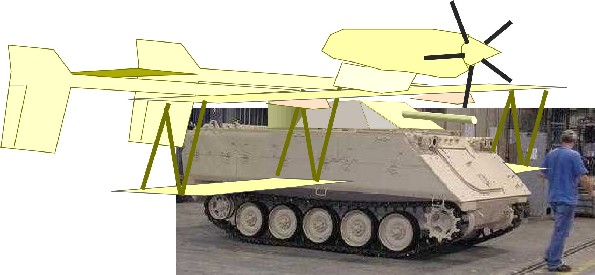
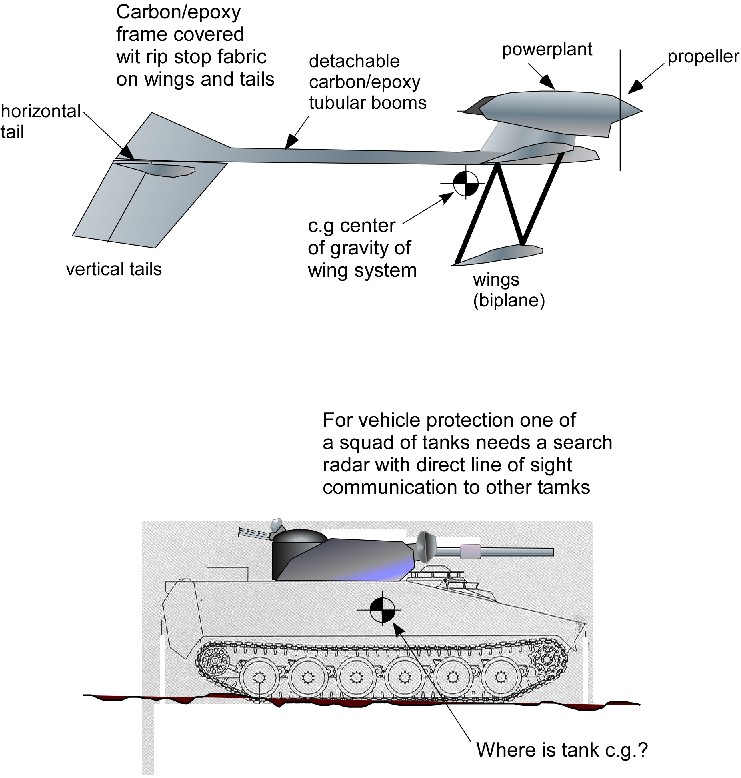
This brings up another attitude problem by the do-nothings that the AeroGavins "wouldn't fly fast enough". At 150+ mph they'd be much faster than ANY vehicle on the ground, call 1-800-OBVIOUS. An asshole even wrote a book mocking the Christie M1932 with the sophistry that German fighters would somehow shoot them down any more easily than C-47s flying at roughly the same speeds. He's an asshole with a prejudice against the doers with good ideas because he's a snotty do-nothing that thinks he can make himself look smart at his better's expense. The problem is he's completely wrong. Ever hear of fighter protection? The same fighter protection needed for C-47 transport planes to fly would be available for a flying tank unit to move. Today, it could even be provided in-house, by Army OH-58D Kiowa Warrior, AH-6 Little Bird, AH-60 Blackhawks, and AH-64 Apache attack helicopters who themselves move around the battlespace on their own because if the USAF DOES ITS JOB THEY SHOULDN'T HAVE TO CONTEND WITH MIGS and more than Christie M1932 flying tanks would have to worry about Mesherschmitts and Focke-Wolfes after 1944. And of course, the AeroGavins could be ARMED with air-to-air missiles so if any MIG bounces them he might end up a flaming wreck.
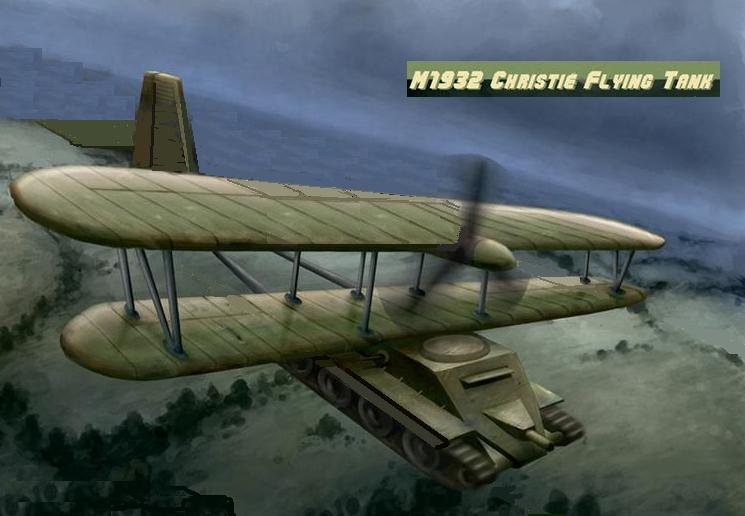
I'm not finished. A word about bi-planes.
During WW2 the British made good use of bi-plane fighters like the Gloster Gladiator and transports like the Valetta where their short take-off and landing (STOL) capabilities offered by the two wings offset the reduced speed in flight from the increased aerodynamic drag. A plane that can land and take-off and then fly slow beats one that can't land at all. This double-lift enabled long flight times such that British biplane fighters were able to "hover" over German Luftwaffe air bases and "goal tend" shooting down "superior" and "more modern" fighters as they tried to land or take-off. They were even British aces in WW2 that flew biplane fighters.
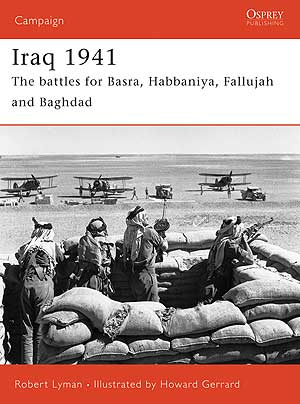
Page 68:
"...two Gladiators from [RAF] Habbaniya, loitering around Rashid Airfield at Baghdad, encountered two Bf.110Cs attempting to take-off, and destroyed them both, much to the joy of the two british sergeant pilots responsible. Thus within two days of arrival and despite the attack on Habbaniyah on 16 May, Junck's force had been whittled down to four He.111 bombers, eight Bf.110C fighters and two JU-52 transport aircraft, a loss of 30 percent. This rate of attrition did not augur well for the continuance of a strong Luftwaffe presence in Iraq. With few replacements available, no spares, poor quality fuel and aggressive attacks by the RAF out of Habbaniya, the mathematics of attrition went in only one direction, and the eventual withdrawal of the Luftwaffe in these circumstances became inevitable."
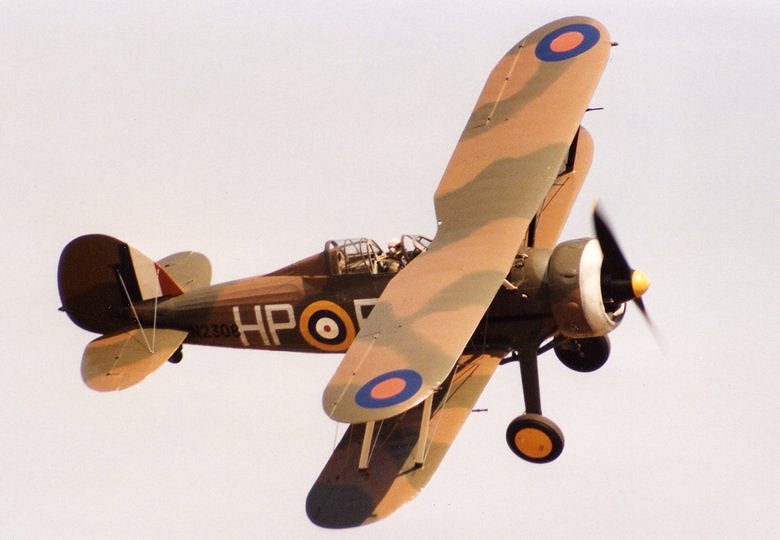
In fact, even the cash-strapped British realized bi-plane wings were good for take-offs and fuel carriage and considered a disposable set of wings on top of a Hawker Hurricane, which makes a lot more sense to carry extra fuel compared to drop tanks that only give you drag and produce no lift. Its still a great idea, the parasite wings/mother aircraft concept.
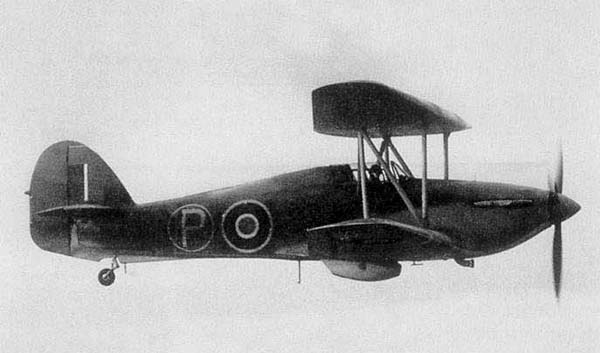
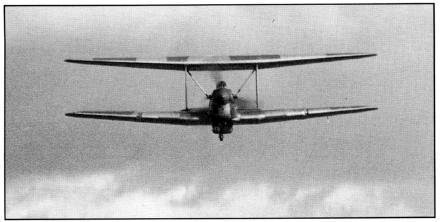
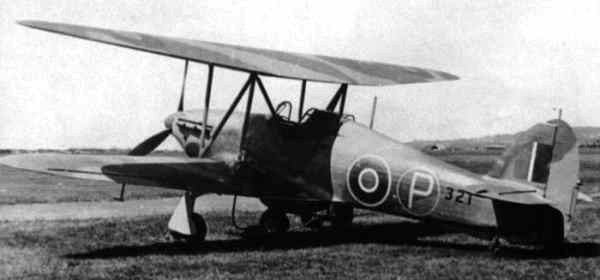
We are not suggesting shedding any of the AeroGavin's bi-plane wings in flight, just that this prejudice against the biplane that its somehow "old fashioned" when it is what it is--and nothing more--is unwarranted. The Russian AN-2 Colt biplane transport still serves successfully around the world and its fabric-covered structure makes it radar-invisible, at a fraction of the cost of our multiple billion-dollar efforts. Who is laughing now?
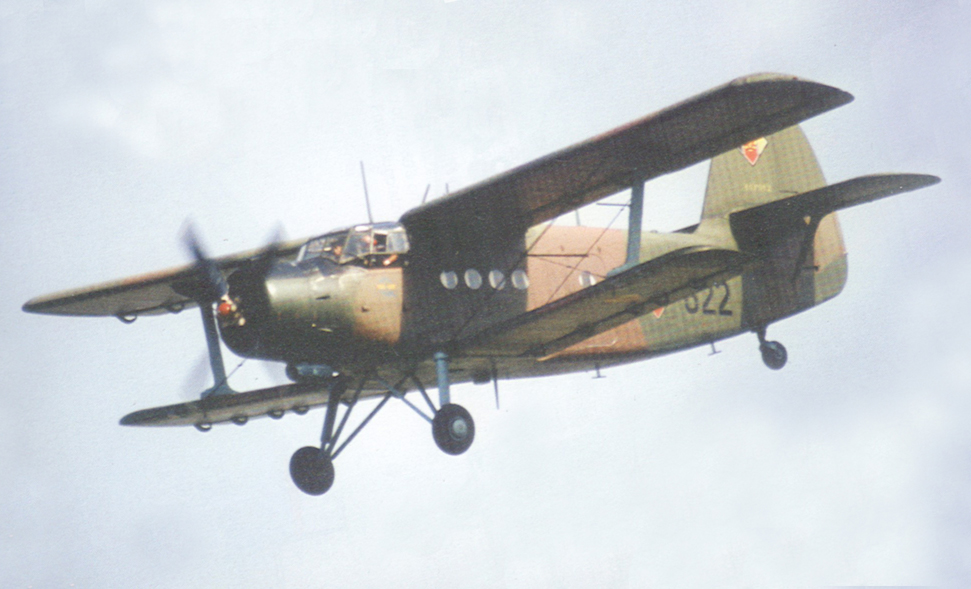
With lightweight turbine engines, we depart slightly from the elegant Christie efficiency to make the tank engines do double-duty and just use the Gavin's JP-8 fuel to power the Aero unit's propfans. By having the Gavin hybrid-electric drive, we shed the weight of a heavy diesel piston engine anyway, so adding a turbine engine with the Aero unit is still not a net gain in weight over current Gavins.
By having the AeroGavin tank crews fly themselves they will not have to "mother may I?" anyone else to do it and thus, commanders would have an operational-maneuver range AirMech Cavalry responsive instantly to battlefield needs and opportunities. We are not suggesting the AeroGavins fly themselves strategic distances from the continental U.S. to the Middle East. This would be done by air and/or sealift. Once in the area of operations however, AeroGavins would fly themselves into and possibly--out-of-battle.
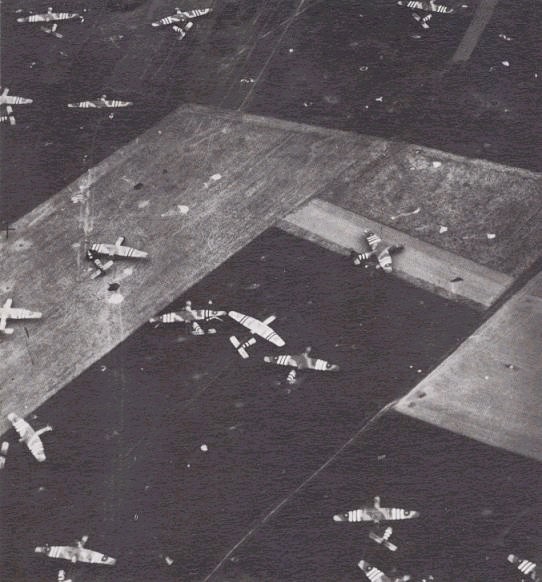
I said "possibly" because where they land will be cluttered and may not facilitate flying out, which like what WW2 gliders found themselves in which is AOK. The AeroGavins without their "Aero" flying gear are Gavins that can drive themselves back to base or keep on pressing the enemy overland. The Aero gear can be recovered back to a forward operating base (FOB) for re-use when desired. If you can't fly out, drive out--this opens all sorts of places where to land and fight--not available if the planes have to be able to take-off.
Another whine will be about the AeroGavin's "vulnerability to air defense weapons in flight". What do you think happens to transport planes that deliver ground forces? Moreover, they have to be exposed TWICE; once to insert the force and then on the way back to base. In contrast, the AeroGavin force only has to fly in ONCE, achieving surprise. In flight, what better to be protected against enemy fire than inside an actual tank? After insertion and shedding their Aero units, the Gavins fight on with infantry-tank action; there will be no transport planes flying back to base to pick off or worse follow to locate the entire air base for retaliatory destruction.
AeroGavin Tactics, Techniques and Procedures (TTP)
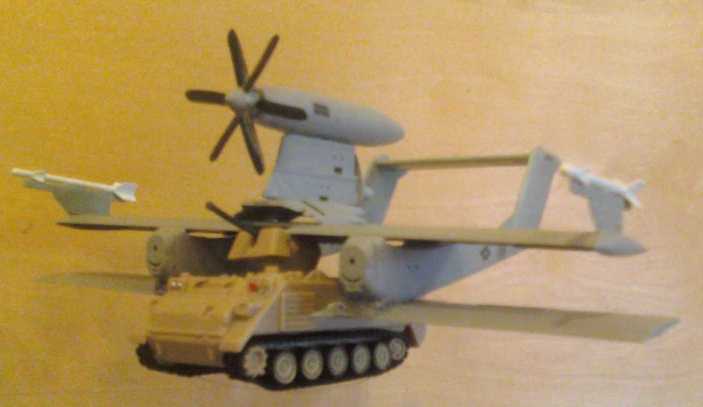
In a nation-state war, the opening move of the Army might be to land an AeroGavin Force deep behind enemy lines to block the escape of fleeing leaders or perhaps to knock-out enemy air defenses in advance of a major Airborne drop. An AeroGavin force might be enough to take-down the headquarters of an Army or the palace of a dictator. In sub-national conflict, AeroGavin forces could operate continuously in the field--not giving rebel groups a chance to rest and regroup while flying over and moving cross-country, negating their predictable road land mine tactics.
The AeroGavin force whatever its size would normally take off from a FOB with a smooth runway, then form up into formation for low-altitude terrain masking flight to the insertion point (IP). Depending upon the accuracy and certainty of our planning and guidance means, as the IP approaches, paratroopers inside the lead AeroGavins would open the rear ramp door (possibly the entire rear ramp) and prepare to jump out to parachute in and secure the assault landing zone (LZ). Thus, those in AeroGavin units would have to be exceedingly brave to fly inside and conduct daring missions and would take turns parachuting in ahead of landings. Every Delta Weapons company in an Airborne infantry battalion would have AeroGavins to fly on a case-by-case basis HHC, A, B or C company Paratroopers inside. When not transporting infantry, they function as Air and Ground cavalry.
The parachute-inserted advance force would mark and control the AeroGavins to land one-at-a-time. I suggest they be Pathfinder and JTAC school-qualified making them "Attack Pathfinders" who can mark and control not only DZs/LZs but direct close-air support (CAS) fires. Once on the ground, using their tracks to move around, the Aero units would be shed and collected together for recovery later if desired. If the mission were high-risk and extremely important, the Aero units could even be destroyed as the Gavin Force moved out. If the mission were to capture key personnel or rescue Americans the Aero units would be guarded so the Gavin Force can return to them, re-attach and fly off.
Dispersed Warfare to Avoid PGM Destruction Demands Tanks that Fly
The day of the comfortable base and large bloated surface ship are over--we just don't know it yet. We have yet to have our "Waterloo" (battlefield defeat that forces us to admit our approach to war is wrong). Air forces need to disperse their aircraft and deploy them from camouflaged, underground mobile boxes. Exactly what is done to mobile surface-to-surface ballistic missiles that take-off vertically and don't need runways needs to be applied to aircraft. Navies that want to have any chance at all of protecting surface cargo container and oil tanker ships will need to disperse seaplanes across many, many surface ships in order to smother all attacks or go under the sea with submarine aircraft carriers. Likewise, the Army must disperse it men into BATTLEBOXes that are underground and well-camouflaged and provide every small group its own tracked light tank--that can fly itself wherever we need ground maneuver force and not expect a huge USAF transport plane loaded with thousands of gallons of fuel to show up to fly us anywhere. Imagine if the Germans had accurized and produced thousands of V-2s and began lobbing them at our airfields and troop assembly ports in England on June 4-5, 1944. There might not have even been a D-Day. The day of accurate SSMs is here. We must anticipate this problem and take corrective action NOW before we have our strategic defeat.
We need tanks that fly.

Option B: GyroTANK
Another option would be using the autogyro format to fly the Mini-Gavin. Benefits would be the rotors could detach & fold so the Mini-Gavin can be reconfigured and carry its rotors and tail unit with it sort of like the duplex drive (DD) props used to swim tanks with floatation screens in WW2.
GyroTANK
Side view
========================
[ ]
Rear prop______[_]_____________|
/ ------------------------------|
| _________________|
\_O_O_O _ O_ O_O_/
Jeff Lewis' Conventional and Somewhat Defeatist History of Autogyros
EDITOR'S NOTE: below is the typical groupthink about how autogyros work but full of defeatist crap like why autogyros were "never" accepted and why they "cannot" fly fast. The last we checked, human beings are still alive today and have a FREE WILL to chose new paths and directions TO INCLUDE ADOPTING AND IMPROVING THE AUTOGYRO. Do not fall into this avant garde technohubris of declaring a technology will "never" do this or that without facts to back you up. ALL technologies are in play at all times in human life.
Autogyros are an aircraft that have been around for decades. In addition to the name autogyro, they have been known as gyrocopters, gyroplanes, and autogiros. They were the first rotary wing aircraft to fly successfully with sufficient control. The design had inherent safety, better low-speed flight than airplanes, as well as the capability of vertical take-off and landing. But despite their advantages, even before the introduction of the first successful helicopters which surpassed their performance, autogyros were never accepted. This paper will explain how autogyros work in order to give the reader a better understanding of the machine, go over the advantages and disadvantages autogyros have over airplanes and helicopters, go over a brief history of the development of the autogyro, and using all this information attempt to explain why autogyros were never accepted. The paper will then discuss where autogyros stand in the aviation world today.
How Autogyros Work
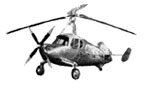
Pitcairn PA-36 Whirlwing Autogyro
An autogyro is a flying machine. Like a helicopter, it is a rotary wing aircraft- which means that it has a rotor to provide lift instead of wings like conventional airplanes. Unlike a helicopter, the rotor is not powered by the engine. It is made to spin by aerodynamic forces, through a phenomenon called autorotation. Since the rotor is not powered, an autogyro needs a separate source for propulsion, like an airplane. Conventionally, these have been propellers, but it's possible to use jet engines as well.
Now what causes the rotor to spin, or "autorotate?" The simple explanation is that the wind passing through it gives it its power. Think of those seed pods that spin as they fall. As they fall, the air makes them spin. (Because they're spinning, it's as if the mini wing was moving faster, so it creates more lift, and the seed pod doesn't fall as fast as it would if it didn't spin.) For a more technical explanation, take a look at the vector diagram below. It shows a rotor in autorotation. A detailed explanation is in the paragraph that follows.
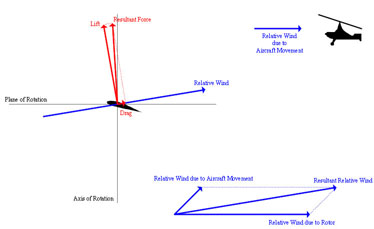
Vector Diagram of Autorotation
The vector diagram above illustrates autorotation. (The main diagram, and the diagram in the lower right have been rotated such that the plane of rotation forms the horizontal axis. The actual orientation of the rotor is illustrated in the small diagram in the top right.) The diagram in the lower right shows the winds relative to the rotor. Since the rotor is spinning, there will be relative wind due to this spin, which is labeled as Relative Wind due to Rotor. The Relative Wind due to Aircraft Movement is due to the fact that the aircraft is moving forward, and the rotor is mounted in such a way that the plane of rotation is at a slight angle to the direction the aircraft is moving in. The sum of these two vectors is the relative wind to the airfoil, and is labeled as Resultant Relative Wind. The main diagram shows a cross section of the rotor at a point in time where it is moving forward relative to the aircraft. The Resultant Relative Wind from the smaller diagram is shown on this as the Relative Wind. Any wind passing over an airfoil will create both lift and drag. The lift will be perpendicular to the airflow, and the drag will be parallel to the airflow. This is true for all airfoils, not just for the rotor in an autogyro. (For a description of how wings work, check out my page on how planes fly. When the lift and drag vectors are added together, they create a Resultant Force. In autorotation, this resultant force is in front of the Axis of Rotation, so in addition to providing lift, it also pulls the rotor forward. This is in sharp contrast to the rotor of a helicopter in forward flight. A helicopter gets its propulsion by tilting the rotor forward. This angles the lift forward, giving the helicopter forward propulsion.
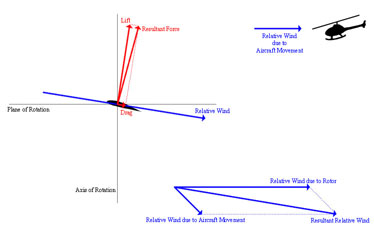
Vector Diagram of a Helicopter Rotor in Forward Flight
However, this makes the relative wind due to the aircraft movement move down over the rotor instead of up through it as in an autogyro. The vector diagram above, which is the exact format as the other and uses the same labels, shows the results of this different relative airflow. Instead of pulling the rotor forward, it actually holds the rotor back.
Differences Between Autogyros and Other Powered Aircraft
Now that it is known how an autogyro works, it will be easier to understand the advantages and disadvantages the autogyro has compared to airplanes and helicopters. When comparing an autogyro to an airplane, an autogyro has two distinct advantages, first the area it needs to take off and land, second is its low speed flight characteristics. Autogyros do not require as much area to take off and land as do airplanes. Early autogyros required only about 50 feet of runway to take off and could land in under twenty when airplanes were using hundreds of feet. Later autogyros reduced their need for a runway to less than fifteen feet, and eventually to vertical take off and landings. This allows autogyros to be flown from practically anywhere, needing almost no runway. In fact, in the 1930's and 40's, autogyros were used to carry mail from post office rooftops in Camden, NJ, Philadelphia, PA, Chicago, IL, New Orleans, LA, and Washington, D.C., as well as other cities in the north east.
The other main advantage autogyros have over airplanes is their ability to fly slow and not stall. The amount of lift generated by an airfoil is proportional to the relative speed at which it moves through the air, and to the angle at which it's moving through the air (angle of attack). However, once you try to go above a certain angle, there is a sharp decrease in the amount of lift the wing makes. This is known as stall, and is caused by the air not being able to change direction fast enough to stay attached to the wing. Since the wings are fixed in an airplane, creating more lift means either moving the whole aircraft faster, or increasing their angle of attack. In an autogyro, the wings are the rotor and are moving through the air at the speed at which the rotor is spinning, not the speed at which the aircraft is moving. The aircraft does have to be moving forward some to maintain the autorotation, but this is a much lower speed than the speed airplanes must maintain to produce lift. Autogyros can fly at speeds as low as 15 mph. Men can run faster than that speed. And unlike low speed airplanes which have huge wings creating enough lift for low speed flight which means a huge increase in drag, autogyros do it with the faster spinning rotor, so autogyros have a larger speed envelope, or they are capable of flying in a greater range of speeds than airplanes.
The other part of an autogyro's advantage flying at low speed is its inability to stall. As an airplane flies slower, it must increase the angle at which it is flying to create more lift. At a certain point, this angle becomes too great, the air stops flowing over the wings smoothly, and the wing stalls. When this happens, the airplane falls, just like dropping a baseball out a window. When an autogyro slows to a speed less than that needed to maintain autorotation, lift is not instantly lost. Instead, the rotor just starts slowing down. Since it's still spinning, it's still creating lift. The result of slowing an autogyro down too much is just that the aircraft will descend gently. It will not fall like an airplane does. But these advantages aren't without drawbacks. Even though the rotors create less drag than the large wings of low speed airplanes, they create more drag than the smaller wings of higher speed airplanes. So, autogyros create more drag than airplanes of comparable size that fly at the same speeds. Also because of this drag, autogyros are not suitable for high speed flight or long distance flight. (Read more about rotorcraft limitations in Rotorcraft Limitations.)
There are also several advantages that autogyros have over helicopters, namely simplicity, speed, and weight. A helicopter rotor must be complex to a certain degree. It provides the lift, thrust, and control for the aircraft. It needs a method for cyclic and pitch control. An autogyro also uses the rotor for control, but it does not need collective control. Some of the more complex autogyros have collective control, but it is not a necessity for the smaller autogyros. This reduces the complexity of the system, and by eliminating controls reduces weight. The weight in an autogyro is also reduced because it does not power the rotor in flight. To power the rotor in flight typically requires that it be connected to the engine through drive shafts and gearboxes. These must be strong enough to handle the torque driving the rotor, and add up to a significant weight. An autogyro does not need these systems, so it can be made lighter. Even if the autogyro has these systems for prerotating the rotor for a jump takeoff, they do not need to be as robust as those in a helicopter because they will not need to handle the same amount of torque, and also because they are not flight critical, they don't need to be over-designed.
An autogyro can also fly faster than a helicopter. This is due to the fact that the rotor is providing only lift, whereas the rotor in a helicopter is providing both lift and thrust. For a rotorcraft to stay balanced, it must produce the same lift on both the advancing and retreating blades. A more detailed explanation of this is in the history section below. The advancing blade, the one moving with the aircraft, sees a higher velocity than the retreating blade. So, to produce the same amount of lift, the retreating blade must be at a higher angle of attack. Remember from the discussion above that at a certain angle of attack, the blade will stall, and will quit providing lift. This is a limiting factor in both autogyros and helicopters (and is explained in more detail in Rotorcraft Limitations. But because the helicopter must generate more force with its rotor, it will encounter this problem at a lower speed than the autogyro, allowing the autogyro to fly faster.
The helicopter has one major advantage over the autogyro- the ability to hover. By studying the vector diagrams, one can see that the forward movement of the autogyro is necessary for its autorotation, and therefore for sustained lift. As stated before, when the autogyro stops moving forward, it begins to descend. With a skilled pilot, a helicopter can stay in one spot until it runs out of gas. Hovering is an essential ability for many of the roles that helicopters perform, especially rescues. The helicopter needs to hover in one spot to pick up a victim, something which autogyros are incapable of.
There is one other major advantage that autogyros have over airplanes and helicopters- safety in event of an engine failure. If an engine fails in an autogyro, the same thing would happen as if the pilot tried to fly too slow. The aircraft would slowly descend until landing. In fact, the procedure for landing an autogyro after engine failure is the same for landing an autogyro under ordinary circumstances. In an airplane, when the engine fails, the pilot must try to glide the airplane in to a landing. Pilots do train for this, but dead stick landings require more skill, and an airplane still needs a runway to land. The pilot must search for an area large and smooth enough to land the airplane, close enough to get to before the plane crashes. Helicopters are also difficult to land in case of an engine failure. When looking at the vector diagram of a helicopter in forward flight, one sees that the aerodynamic forces are working to slow down the rotor. As soon as the engine fails and quits providing power to the rotor, the forces will work to slow the rotor down much more rapidly than in an autogyro. Pilots correct this by putting the helicopter into autorotation, but this also requires skill. Since helicopters are not designed to normally handle autorotative landings, there is a risk of making a mistake and striking the tail during the landing flair. Even worse, there is a flight regime known as the dead man's area, where if a helicopter is too low and slow, it won't have enough time to establish autorotation and flair for the landing, so if there is an engine failure, it will crash.
History of the Autogyro
Now that it is known how autogyros work, some of their characteristics of flight, and how those characteristics differ from airplanes and helicopters, it would be nice to know how all this developed. The early history of the autogyro is basically a history of one man, don Juan de la Cierva.

Juan de la Cierva
Photo courtesy Dr. Bruce Charnov
 youtube.com/watch?v=PbalOh4smnM
youtube.com/watch?v=PbalOh4smnM
Cierva was born in Murcia, Spain, September 21, 1895. He was only eight years old when the Wright brothers first flew on Dec. 17, 1903. He was a young man on his way to becoming a civil engineer when they first demonstrated their machine to the rest of the world in France in 1908. Cierva was intrigued by this new technology and decided to build his own airplane. His first attempt was to rebuild a Sommer biplane. He fitted it with a new engine and made several modifications to the original airplane. When he completed the project in 1912, he named the airplane the BCD-1 El Cangrejo, Spanish for the BCD-1 Crab.

BCD-1 Cangrejo
Photo courtesy Dr. Bruce Charnov
The plane flew well and was considered to be the first Spanish built airplane. Cierva's second attempt was the BCD-2, a small monoplane, which he built in 1913. It did not fly as well as the BCD-1 and crashed. It was rebuilt, but crashed again. The design was abandoned. Cierva's third and final airplane design was the C-3. It was for a Spanish military competition announced in September of 1918. The C-3 was entered into the bomber division of the contest. The plane was a large tri-motor biplane, and was completed in May of 1919. It flew well, but in one of the preliminary tests the pilot flew the plane too slow and it stalled. The plane was wrecked, but the pilot escaped without serious injury. This crash disappointed Cierva, and inspired him to think of a better way to fly at low speeds. After tossing a toy helicopter from his parents balcony and studying the flight, Cierva came up with the idea of an autogyro, which he called the autogiro (Notice the spelling with an "i" instead of a "y").
Cierva's first attempt at building an autogyro was the C.1. The C.1 had two counter-rotating rotors to provide lift and by counter-rotating to eliminate torque. A vertical control surface above the rotors was meant to provide lateral control, while a conventional tail rudder and elevators would provide control about the other axes. Unfortunately, this design never flew. Because of the interactions between the two rotors, the top spun faster than the bottom. This upset the balance in lift and torque, causing the machine to tilt to one side. However, when it was tested, in October of 1920, it did demonstrate successfully the principles of autorotation while taxiing on the ground.
After the C.1, Cierva started work on his next design, the C.2. The C.2, was to have only one rotor, consisting of five blades, with duralumin spars. Because of difficulty in obtaining the duralumin, and because of a shortage of funds, work on the C.2 was postponed and Cierva began work on the C.3.
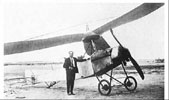
Cierva C.3 Autogyro
Photo courtesy Dr. Bruce Charnov
The C.3 was completed in June of 1921. The C.3 had one rotor with three blades. He still had a rudder and elevator for yaw and pitch control, but for lateral control he tried collective pitch variation. This refers to changing the angle of all the different blades at the same time. However this design proved to be impractical, and the C.3 only achieved brief hops of a few inches off the ground.
Once done with the C.3, Cierva went back to the C.2. The C.2 was finally completed early in 1922. It had similar controls to the C.3. It achieved slightly better lateral control, and short hops of a few feet above the ground, but still couldn't maintain sustained flight.
One of the problems with Cierva's three designs up to this point was that the rotor was rigid. This created two problems. First was that it created a gyroscopic effect. As soon as the aircraft tried to move, this effect would cause the aircraft to tilt. The other problem came from unbalanced lift. As the rotor was spinning, one side would be moving the same way the aircraft was moving, increasing the relative wind speed, while the other side would be moving opposite the direction the aircraft was moving, decreasing the relative wind speed. The side with the higher relative wind speed would have a higher lift than the side with lower relative wind speed, causing the aircraft to tilt. Cierva came up with a solution to this problem while watching an opera. One of the props for the opera was a windmill with hinged blades. Cierva decided to use hinges in his rotor designs. This allowed the blades to rise and fall depending on what direction they were moving in. The blades moving with the aircraft rose because of the higher lift, but this also served to decrease their angle of attack. The blades traveling in the opposite direction of they autogyro would fall because of the lower lift, serving to increase their angle of attack. The combination of the rising and falling action, which came to be known as flapping, and the increase and decease this had on the angle of attack served to balance the lifts created on each side of the aircraft. The hinged blades also eliminated the gyroscopic effect caused by the rigid blades.
Cierva's next design, the C.4, incorporated these hinged rotors. For lateral control, ailerons were mounted on outriggers to the side of the aircraft. Yaw and pitch control still came from a rudder and elevators. On January 17, 1923, the C.4 flew, marking the first controlled flight of an autogyro. The C.4 also demonstrated the autogyro's safety in low speed flight. On January 20, three days after its first flight, the autogiro went into a steep nose-up attitudeafter an engine failure at about 25-35 ft. In an airplane, this would have almost certainly resulted in an almost unrecoverable stall. But the autogyro just descended gently to the ground without damage to the machine or injury to the pilot. This low speed safety was demonstrated even more dramatically on January 16, 1925, when another design, the C.6, lost power after take-off at about 150-200 ft. The pilot was still able to turn the autogyro around and bring it in for a safe landing, with only slight damage to the machine. This maneuver would have been much more difficult in an airplane, and quite possibly could have led to a worse accident.
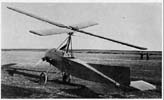
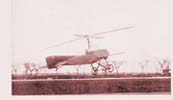
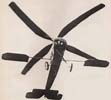

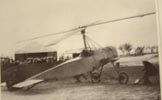
Cierva C.4 Autogyro
Photos courtesy Dr. Bruce Charnov
Another problem with early autogyros was rotor spin-up. To achieve autorotation, the rotor had to be spun to a minimum speed before the aircraft began moving. In early autogyros, this was achieved mainly in four ways, spinning the rotor by hand if the rotor was small enough, or if it was bigger, with a team of horses, a team of people, or by connecting it to a car engine through a drive shaft. This need for an external source to spin the rotor kept the autogyro from being a self sufficient machine capable of working anywhere. Cierva's solution for this problem was to design the tail in such a way that it would deflect the slipstream from the propeller up into the rotor. This deflected wind would cause the rotor to spin up. It was achieved simply by adding flaps to the tail that angled upwards. This design was known as a scorpion tail. He tested this idea on a C.19 in 1929. The problem was that the tail did not deflect enough wind. The rotor did spun some, but not to the minimum speed needed for takeoff. A short takeoff run was still needed to spin the rotor the rest of the way. Another method used to solve the problem of rotor spin-up was, instead of connecting a drive shaft to a car, just connect it right to the autogyro's engine. The first attempt to do this was in a modified C.11 early in 1930. A drive shaft was connected to the engine through a clutch. Unfortunately, this mechanism weighed about 165 lb. and was too heavy for the autogyro to fly. An improved clutch and drive shaft system was introduced late in 1930. It was first used in April 1931 on the PCA-2, an autogyro developed by Harold Pitcairn, who had the licensing rights for Cierva's invention in the United States. The drive shaft and clutch system wasn't used on a Cierva design until almost a year later in March of 1932 on the C.19. This new design worked well on both the PCA-2 and the C.19, and became the dominant style of spin-up in all later models of autogyros where the rotor was too large to be spun by hand.
The next major advance in autogyros came on August 5, 1931. This was the first flight of the Wilford WRK. This new autogyro replaced the hinged rotors with a rigid rotor with cyclic pitch variation. Cyclic pitch variation is a method where the pitch of the blades is changed as they spin. The pitch is lowered when they are moving in the direction of the aircraft, and raised when they are moving in the opposite direction. This does the same thing as flapping to balance the lift created by the blades. The WRK was the first autogyro to successfully fly with a rigid rotor.
Earlier in this paper, it was stated that autogyros have the potential for vertical take off and landing. Although all the autogyros discussed so far have been capable of vertical landings at least in an emergency, they have also all needed some minimum takeoff run. But, if the rotor was powered before take off to make it spin at the minimum speed for autorotation, why not just continue to power it to a higher speed and take off from the lift created that way. That is exactly what happened. In August of 1933, experiments were begun on a C.30 in this new method of takeoff, which came to be known as a jump takeoff. These first experiments were promising, but not satisfactory. Spinning the rotor on the ground caused too much vibration, and the aircraft was only capable of making low jumps. By October 28, 1934, after over a year of experimenting and refining, the C.30 finally made a successful jump takeoff. Many later autogyros were also designed for jump takeoffs, most using the same method as the C.30. A few later autogyros had tip driven motors where either a jet or a rocket was put at the end of each rotor blade to spin the rotor that way.
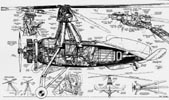
Cierva C.30 Autogyro
Photo courtesy Dr. Bruce Charnov
The C.30, besides being the first autogyro to make a successful jump takeoff, was notable for another aspect as well. It was the first autogyro to use direct control. Direct control was a method where the pilot tilted the rotor instead of a rudder and ailerons. This greatly simplified the control of the aircraft, as well as the design. A pilot now had one control for yaw, pitch, and roll, and designers only needed to design that one control. In the C.30 and later autogyros of comparable size, this consisted of a bar connected directly to the rotor hub that extended into the cockpit. For larger machines, the controls of the pilot were mechanically linked to the rotor hub. The C.30 also proved to be the most popular production autogyro ever designed, with more than 180 of them being built.
On June 26, 1935, the Breguet-Dorand 314 was the first successful helicopter to fly. It incorporated many of the features developed for autogyros, such as collective and cyclic pitch control. On December 8, 1941, Igor Sikorsky's V.S.300 flew, another of the first successful helicopters. The V.S.300 was only a test aircraft, but led to the VS-316, a more refined helicopter using the same principles. The U.S. Army ordered the VS-316, and 400 of these aircraft were produced along with the R-5 and R-6, two other Sikorsky helicopters of similar design.
Why Autogyros Weren't Accepted
At this point we can ask the question of why autogyros were never widely accepted. Early autogyros, although they had a higher speed envelope than airplanes, had a higher drag and so were not as efficient at higher speeds, and absolutely cound not attain the maximum speeds of the faster airplanes. Also, the early autogyros did not have the vertical takeoff and landing capabilities that would have made them more attractive to potential buyers. When the C.30 finally demonstrated a successful jump takeoff in 1934, it was less than a year until the first successful helicopter flew, and only a few more years until the very successful Sikorsky V.S.300 and VS-316. Although helicopters had a smaller speed envelope than autogyros, they were capable of hovering, and their envelope could fill the role that airplanes couldn't. In other words, anything an autogyro could do could be done by another aircraft. Also, Cierva, who was doing most of the development of autogyros, was funding much of the development on his own. When the army ordered the VS-316, that money went in to Sikorsky's company. This gave Sikorsky the funding for development that Cierva was running out of. Without the money, Cierva just couldn't fund the research. And then, on December 9, 1936, Cierva was killed in normal KLM crash. He was only 41 years old. There were other people developing autogyros, but Cierva had been one of the main driving forces behind the movement. Much was lost when he was killed.
Another factor that kept the autogyro from being accepted was purely psychological. Even though helicopters weren't successful until 1935, they had been under development for as long as airplanes. The general public knew about helicopters, and understood the principle of a powered rotor. Autogyros had an unpowered rotor that spun due to aerodynamic forces. Most people did not understand how it worked and so did not trust it. Although it is actually safer than either helicopters or airplanes, people did not realize this. They wanted something powered.
Autogyros After Helicopters
After helicopters flew successfully and the companies that designed them got military grants for further research, the autogyro was pretty much abandoned. Except for a few concepts and only a handful of attempts at civil designs, autogyros were kept alive only as home built aircraft, and that mostly as ultralights. Recently, there have been two companies to resurrect the idea of the autogyro, Groen Brothers and CarterCopter.
The Groen Brothers design is the more conventional of the two. The unique innovation of the Groen Brothers machine is that it is using ram jets at the tips of its rotor blades to power them for spin up. Ram jets are not very efficient engines, but they will only need to be run for ten to fifteen seconds, so efficiency is not much of an issue. The ram jets will spin the rotor fast enough to enable the machine to take off vertically. Their autogyro will also use a collective pitch control to help reduce drag. It is being marketed to corporations that currently use helicopters, or can't quite afford helicopters, to travel from rooftops in cities. These corporations really have no need for hover, they just need to be able to take off and land vertically. The autogyro can do this faster and for less money than a helicopter. They are also trying to market it to organizations that only need low speed flight and not complete hover. In fact, most observation of stationary objects done by a helicopter is done by flying above it in slow circles, not just hovering.
The CarterCopter is more of a hybrid between an airplane and an autogyro. The rotor will be spun up with a conventional drive shaft and clutch system, but the rotors will have 60 pound weights at their tips. This will cause the rotor to function as a flywheel for the jump takeoff. It also allows the rotor to be slowed down in cruise and still maintain enough rigidity from centrifugal force to be stable. Once flying, the pitch on the rotor blades will be lowered as much as possible to reduce the drag created by them to as little as possible. The lift will come from conventional airplane wings mounted on the sides of the aircraft. The company is predicting that the CarterCopter could surpass the performance of all aircraft except jet propelled airplanes and spacecraft. This includes helicopters, all previous autogyros, piston powered prop planes, and turboprop airplanes. With a turboprop engine, the craft should be able to fly 400 mph at 45,000 feet. A modified propeller version could be able to fly at 70,000 ft., while a jet powered version could fly 500 mph or more. A specially modified version of the aircraft should be able to fly 25,500 miles on one tank of gas, which would allow it to equal the Voyager's round-the-world flight of 1986, but with a vertical takeoff and landing. With its performance, the CarterCopter would not only be able to fill the roles the Groen Brothers would like to fill, but also those currently belonging to propeller driven aircraft.
Concluding Remarks
Autogyros were the first successful rotary-wing aircraft to fly. They marked a departure from conventional fixed-wing aircraft and an attempt to fill a role that airplanes couldn't. They can fly slowly due to a phenomenon known as autorotation, where the rotor is unpowered and is made to spin by aerodynamic forces. Autorotation allowed the wings to move faster than the aircraft. Although autogyros were never widely accepted by the public, the military, nor aircraft companies, they were very important in the development of the helicopter. Many technologies essential for practical helicopters were first developed for the autogyro. If Cierva had not pursued the autogyro, it almost certainly would have delayed the development of the helicopter, maybe even for decades. After the introduction of the first successful helicopters, autogyros were largely forgotten except as kit aircraft and ultralights. Recently, two companies, Groen Brothers and CarterCopter, have brought back the autogyro using modern technologies. Neither plans to replace the helicopter entirely, only in places where low speed flight or vertical take off and landing are all that are needed. Perhaps, if these companies have their way, the future will be more kind to the autogyro than has the past.
Additional Information
As was stated at the top of this page, this paper was originally intended mainly as a description of how autogyros works, as well as an account of the history of autogyros. It only covers this history up through the 1930's. However, now that I have put it on the Internet, it is being read by far more people than I had ever imagined would read it. I have received many positive comments on the paper from these people, and I have also received comments on some of the shortcomings of the paper, specifically in the area of the state of current autogyros. Although autogyros never enjoyed the success of airplanes and helicopters as practical commercial machines, they have enjoyed much success as homebuilt and kit aircraft. There are several companies that make autogyros now, and have been doing so for many years. The best sites to learn about current homebuilt autogyros are rotorcraft.com or the Popular Rotorcraft Association (PRA) Homepage
I didn't fully explain why autogyros can't fly fast in this essay. So, I've added another essay explaining it. It can be found at Rotorcraft Limitations
Another area where my essay could use a little more information is in explaining why autogyros never caught on. Paul Bergen Abbott, previous Editor/Publisher of Rotorcraft magazine sent me the following in an e-mail:
"Your explanation of the demise of autogyros is excellent. This is a subject I've been interested in for some time, since, from the vantage point of 1996, it looks like the world made a hasty decision in abandoning the gyro. I think there were two other factors involved, besides the ones you mentioned: One is that as the world began moving toward World War II, the rivalry between the United States and Germany grew to a fierce level ... In 1938 Germany demonstrated the Focke-Achgelis F.61 helicopter, a side-by-side-rotor model, by flying it publicly inside a building and making headlines all over the world. This infuriated the powers-that-be in the United States, and soon thereafter the government attention and development funds were shifted entirely to helicopter development. The second other contributing factor was the death of the two motive forces behind gyros: Juan de la Cierva in a plane crash in 1936, and Harold Pitcairn in a handgun accident (some believe it was a suicide).
"There's also the fly-off competition that was held between one of the late-model autogyros and a biplane, with the winner to get military funding. The contest was rigged so the gyro couldn't win even though gyros could outperform airplanes at that time (I don't have the details on the top of my mind as to when and what models were involved.)"
References
About Gyroplanes. Internet Resource: saskia.com/~zlinak/about-copters.htm (No Longer Available)
Brie, Reginald. The Autogiro and How to Fly It. Bath: Pitman Press, 1934
Brooks, Peter W. Cierva Autogiros. Washington: Smithsonian Institution Press, 1988
CarterCopters, Inc. Internet Resource: cartercopters.com/
Garvey, William. "Gyrocopters Grow Up." Popular Mechanics, June 1996
The Groen Brothers Aviation Home Page. Internet Resource: groenbros.com/
Rotorcraft Page. Internet Resource: rotorcraft.com
Related Links
Hofstra University Autogiro Conference- Has many autogyro photos in the Galleries section
Air Command Gyros
CarterCopters, Inc.
The Groen Brothers Aviation Home Page
Popular Rotorcraft Association Home Page
Rotorcraft Page
Autogyro.comA site for model autogyros
de Amigos de la Aeronautica- Has a reconstruction of Cierva's C.30
Other Aviation Links
Would fixed-wing "Killer Bees" be better?
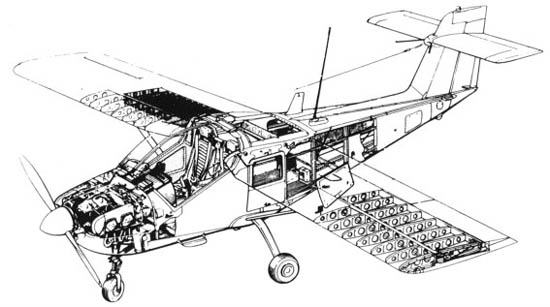
NEW!
Air Force Times magazine, January 4, 2007
Killer beesLight aircraft have long played a role in counterinsurgency.
Net-centric technology could make them key assets as indigenous forces join the fight against radical Islam
By Paul Richfield
Ongoing operations in Iraq and Afghanistan indicate that counterinsurgency (COIN) is likely to occupy the U.S. military for the foreseeable future. As ground forces tend to dominate this type of warfare, the air-power focus is expected to be on ISR, transportation, light strike, psychological operations and drug eradication, as well as the support and training of host nation air forces. Though no surprise to military analysts, the return of counterinsurgency-based "special air warfare" has yet to have an impact at the policy level. The Pentagon remains focused on large-scale conventional wars and the procurement of big-budget platforms with which to fight them. Of the four U.S. service branches, the Air Force is probably the least enthusiastic when it comes to counterinsurgency, purging virtually all mention of it from its doctrine after the Vietnam War defeat and doing little to acknowledge it since.
"It's a case of preparing to fight the wars we prefer and not preparing for the wars we are most likely to fight," Air Force Maj. Kenneth Beebe wrote to students at the Air Command and Staff College at Maxwell Air Force Base, Ala. "The primary role of air and space forces in COIN is to support ground forces or other governments and agencies. It appears that the Air Force tends to neglect situations where it serves primarily in the supporting role." It could go even deeper than that. The root of the problem, some believe, is the Air Force's longing for technological supremacy above all else.
"The dark side of this commitment is that it becomes transformed into an end in itself when aircraft and systems, rather than missions, become the primary focus," wrote RAND Corp. analyst Carl Builder in his book, "The Icarus Syndrome." "Because of its focus on systems and commands rather than missions and strategies, the Air Force views innovation more as a threat than an opportunity." One consequence is that Third World nations friendly to the U.S. typically build air forces along the same lines as the U.S. Air Force, which could be a poor fit for low-intensity conflicts inside their own borders. To Wray Johnson, an air power specialist who teaches at marine corps university, Thailand provides a perfect illustration of this trend. Pressed into taking Northrop F-5 jet fighters it didn't want or need, this nation ultimately acquired Rockwell OV-10 Broncos -turboprop airplanes better able to face a growing insurgency. "Perceptions of prestige make it easy for small countries to buy into the fast-jet concept, but it makes infinitely more sense for them to acquire airplanes that they can practically use and support," Johnson told C4ISR Journal.
COIN BECOMES FID
If the counterinsurgency concept survives at all in Air Force thinking, it is under the general heading of foreign internal defense (FID), a mission the service appears to have embraced reluctantly. The 6th Special Operations Squadron (SOS) - activated in 1994 in response to the 1986 Goldwater-Nichols Act, which, among other actions, brought America's special operations forces back into vogue - is the only Air Force organization dedicated to assisting foreign forces involved in low-intensity conflict.
Staffed with around 100 personnel and equipped with a handful of aging U.S.-and Soviet-built transports and helicopters, the 6th SOS bears a solitary and growing burden. Since 2001, the Hurlburt Field, Fla.-based unit has sent advisers on 49 missions to 26 nations, with a typical mission requiring 10 people for 25 days, according to a September RAND study of the Air Force role in fighting insurgencies. This is a marked increase from the previous five years, which saw 37 missions to 19 countries, with an average of seven advisers deployed for 19 days.
According to a former 6th SOS commander, manpower shortages obligated the squadron to decline more than half of all tasking requests received during his tenure. Demand for 6th SOS-type services may be as much as 400 percent of capacity, the RAND study concluded, based on its estimate that 82 of the 191 United Nations member states face active or latent insurgencies and nearly 80 percent of them have security assistance relationships with the U.S.
Despite this apparent need, the larger Air Force special operations community has kept its distance from the counterinsurgency/foreign internal defense world. Since its inception, this three-star command has focused on the more glamorous, direct action aspects of special operations, missions Armed Forces Journal once categorized as "raids, rescues and Rambo." Its high-end fleet is a reflection of this, comprising no fewer than six varieties of the four-engine C-130 Hercules transport; MH-53 and MH-60 helicopters; and up to 50 CV-22 Osprey tilt rotors on long-term order.
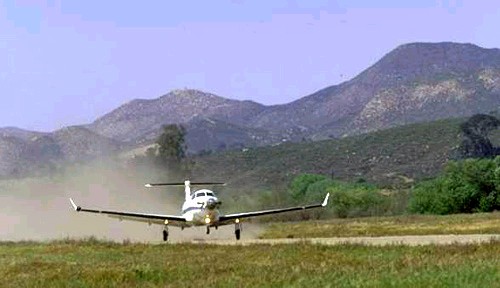
For intratheater support of special operations forces, Air Force Special Operations Command in August 2005 very quietly deployed a fleet of six Pilatus PC-12s, pressurized single-engine turboprops able to operate from unpaved strips. Designated U-28As, these 10-seat aircraft offer near-jet performance as well as a low profile, while reinforcing the idea that modern civil aircraft are often well-suited to niche military roles.
AN EMERGING REQUIREMENT
Advocates for an increased Air Force counterinsurgency role argue that the 6th SOS needs its own mission-specific aircraft as well. These would be tactical platforms best suited to "low-and-slow" operations from forward airstrips, perhaps with host- nation pilots flying alongside U.S. advisers. Such aircraft would serve as a force multiplier when the U.S. is actively engaged, advocates say, while enabling the unit to inter-operate with indigenous forces flying the same equipment.
The Air Force has resisted such an acquisition - opting instead to place all its budgetary eggs in the F-22A Raptor basket - but there are growing murmurs in the Pentagon regarding a concept known as "force-mix," in which lighter aircraft would take over some day-to-day aspects of the counterinsurgency mission. A recent request for information from the new Iraqi defense ministry adds weight to this view, expressing interest in an inexpensive counterinsurgency platform to take over the fight when U.S. forces, ostensibly, leave. Light aircraft proposed for the Iraqi bid include, but may not be limited to, the Embraer Super Tucano and Raytheon AT-6 - single-engine turboprop-powered aircraft derived from widely produced training planes. Though both can carry a significant warload, they are also being configured with sensor packages and software suites with the potential to recast them as nodes within a larger network of air and ground forces.
"The perfect solution is a trainer that also does light attack," said Jim Smith, Raytheon's vice president of government business. "With an embedded data link that allows connection to your other ISR assets and other weapons platforms, you've got the capability without draining the national treasury. This kind of aircraft is perfect for indigenous pilots and ground crews, because you can take them from no experience, through training and on to actual missions with the same basic aircraft. And for U.S. forces, it provides the 90-second on-call close-air support they don't have today."
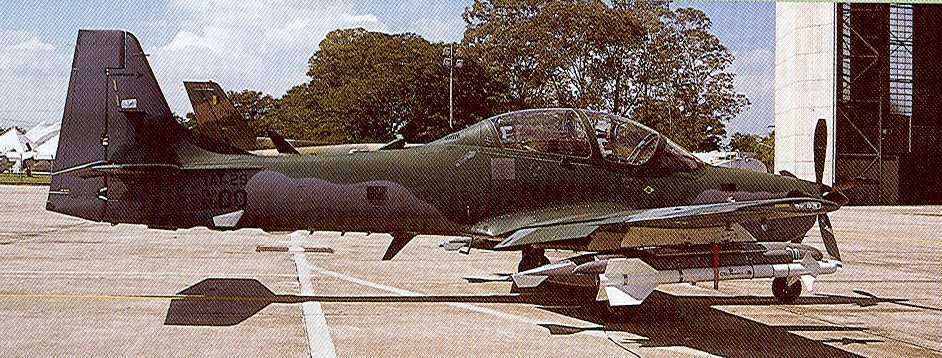
Super Tucano, a dedicated ground attack aircraft, has enjoyed sales success in Colombia as well as its native Brazil.
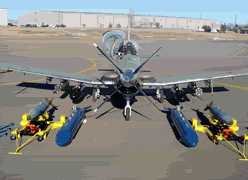
The T-6 dominates the military primary training market but a weaponized variant debuted only recently. Greece is the first nation to arm the T-6; some of its 45 aircraft provided air cover during the 2004 Olympic Games in Athens. Production AT-6s will have what Smith described as the minimum network node treatment: "a FLIR [forward looking infrared] to see, a laser designator to identify targets, a means to ship weapons-grade coordinates to other armed platforms, and organic weapons to take care of things yourself if you have to."
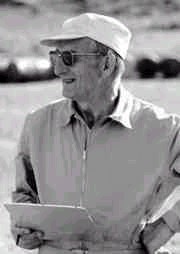
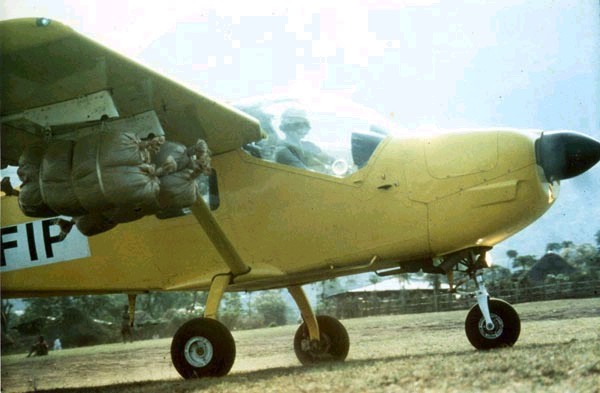
Von Rosen after Biafra took his Minicoin to east Africa to drop food to starving peoplesvenskakyrkan.se/.../lh50eng/lh50eng8.htm
Air droppingMost spectacular of the projects supported by Lutherhjälpen was the experiment with air dropping. The legendary pilot, Carl Gustaf von Rosen, who had flown solo in a small plane to Ethiopia in 1947 and who had been in the service of Lutherhjälpen in Biafra, where he led the emergency flights into starving Biafra in 1968. Already in the beginning of the seventies Lutherhjälpen investigated different means of transport for speedy and efficient emergency deliveries. Lutherhjälpen was in touch with Saab-Scania who marketed the small aircraft Saab MFI-17. A co-operation was initiated to fit the aircraft for air droppings. A package had to be developed, that could be tied to the wings and be dropped without too much damage. Car tyres in plastic bags showed the best durability. The plane could carry up to 250 kilograms of wheat at a time. The packages were dropped from the height of five meters. In comparison with helicopter, trucks and jeeps the aircraft was superior in reaching roadless villages in mountain areas. Those living in distant villages in the mountains were the hardest hit in the starvation in 1973. The emergency caused the first real tests. They were done in Wollo and chief pilot was Captain Carl Gustaf von Rosen. The name of the consortium was Swedish Air Relief. If it was successful and efficient, one of the aims was to inspire the UN and governments to set up a standing air fleet for emergencies.
The air dropping went on for two years in Wollo and Kambata. Both the Relief and Rehabilitation Committee (RRC) of the Ethiopian Government and the Mekane Yesus Church wished to continue. One of those involved was Dawit Wolde Giorgis of RRC. He and others saw that air dropping could be developed in a much larger scale. He was one of the organizers of the much larger air operations in 1985, when real starvation hit Ethiopia.
On the 13th of July 1977 the sixty-seven year old Carl Gustaf von Rosen was killed in a grenade attack against the house in Ogaden where he was during the war between Somalia and Ethiopia. He rests in the Gulale graveyard in Addis Ababa. Many Africans had been saved from the death of starvation thanks to his courageous flights. Even his son Eric was close to death when his plane crashed in the Ethiopian desert. Two other Swedish pilots had died during the flights. In a book by the British journalist Molly O'Loughlin White describing these types of air drops as "the angels of small wings".
Small civil aircraft with piston engines may also figure prominently in counterinsurgency operations to come, as they have in the past. How small? There does not appear to be any lower limit. The incredible tale of Count Carl Gustav von Rosen, a Swedish aviation pioneer who became embroiled in African proxy wars of the 1960s and '70s, could be instructive in this regard.In 1968, von Rosen sided with the breakaway province of Biafra in its war to gain independence from Nigeria. For an investment of around $50,000, he equipped the resistance with five tiny 100-horsepower Saab/Malmo MFI-9B civil airplanes. They were flown to Paris, where French armorers equipped each with a pair of under-wing pods housing six 76mm rockets apiece. Von Rosen then recruited Swedish and Biafran pilots and mechanics, crated the airplanes and shipped the operation to Libreville, Gabon.
At noon on May 22, 1969, von Rosen and his "Minicoins," as he called them, struck the Nigerian Air Force "MiG nest" at Port Harcourt, approaching at extremely low level. The rockets worked as advertised. Two parked MiG-17s were destroyed and several other aircraft, including a pair of Ilyushin IL-28 bombers, were damaged. Subsequent Minicoin raids wreaked additional havoc, but within six months, the Nigerian Army had crushed the rebellion and the war was over. As a concept, Von Rosen's approach was by no means unique in Third World conflict zones, where warfare is often conducted on the cheap. Builders of civil aircraft seldom advertise the fact, but their products are often extensively modified for military or paramilitary operations in these areas. The Douglas DC-3/C-47 transport first flown in the 1930s, for instance, still soldiers on in various rustic locales as a low-cost but effective ISR platform, side-firing gunship and tactical bomber.
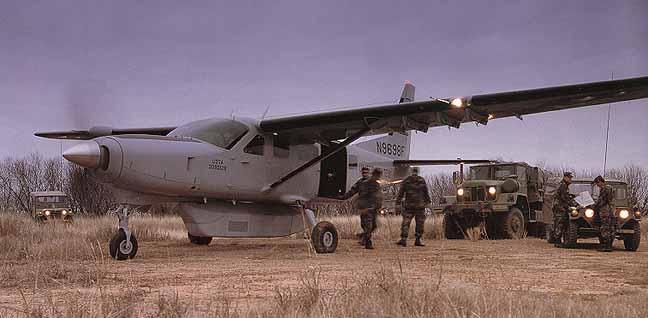
Other general aviation aircraft have received similar treatment, with weight and balance dictating the size and scope of sensors and weapons carried. One contemporary workhorse is Cessna's CE-208 Caravan utility aircraft, ubiquitous as a carrier of overnight freight in the developed world. These single-engine turboprops have been spotted in remote areas sporting FLIR balls, low-light television and elaborate signals-intelligence packages, as well as various "kinetic" options.
COMBAT CROP-DUSTERS
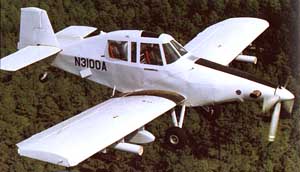
youtube.com/watch?v=cbanSkIk-xM
A low-key appearance does provide certain advantages. The U.S. State Department operates a fleet of Ayres Vigilantes, armed and armored derivatives of the T-65 Turbo Thrush crop-duster modified for the drug eradication mission at the national level, where it overlaps with counterinsurgency and foreign internal defense. Painted black and flown by two-man crews seated in tandem, these aircraft are able to operate with relative impunity in areas where an overt military presence is considered obtrusive and might even compromise political objectives.
Since 1988, a non-descript hangar at Patrick Air Force Base in Melbourne, Fla., has served as the U.S. headquarters for these International Narcotics and Law Enforcement (INL) aircraft and their crews - civilian contractors recruited for their crop-dusting experience and Spanish language fluency. Deployments are typically to the cocaine-, marijuana- and opium poppy-producing states of Colombia, Bolivia, Peru, Guatemala, Mexico, Belize, Thailand, Burma and now, Afghanistan.
In Colombia, for example, Vigilantes typically work in pairs, staging from unpaved agricultural airstrips close to the high mountain valleys where coca plants are grown. A Cessna Caravan furnished with a multi-spectral digital imaging system identifies and maps the drug-producing fields, passing target coordinates on to the Vigilantes, which navigate with commercial Global Positioning System receivers.
Upon reaching the target zone - which could be as small as a tennis court - one aircraft sprays while the other provides surveillance and cover. Should drug cartel or insurgent forces (who often receive financial support from the drug trade) shoot at them, the Vigilantes are equipped for immediate fire suppression with guns, rockets and other ordinance carried on various under-wing hard-points. It can be risky work. Last year, INL aircraft in Colombia sustained 332 hits from ground fire and several were shot down, according to State Department documents. Others faced significant downtime for repairs. Still, a record 138,500 hectares of drug-producing real estate were sprayed in 2005, leading the federal government to assert that the price of cocaine and heroin on U.S. streets is on the rise, while quality is down. And the cartels, by extension, have less money to invest in terrorist groups.
NEW CONCEPTS, OLD WOUNDS
The U.S. government's Vigilante experience, coupled with the potential of new platforms with net-centric components, could present a compelling case for light counterinsurgency/foreign internal defense aircraft as the Bush administration's war on terrorism evolves into a classic counterinsurgency. But it may also trigger a recurrent battle within the Pentagon over tactical fixed wing aircraft and who should own and operate them.
Briefly, the Air Force won the argument and the airplanes early in the Vietnam conflict, but the Army has nonetheless persisted in its desire for a fixed-wing alternative to attack helicopters built not for the unique requirements of counterinsurgency or close-air support, but for tank-busting in Europe. The Fairchild Republic A-10 - the Air Force's fearsome close-air support aircraft - was also designed primarily for the anti-armor mission.
While both types of platforms plainly have application for counterinsurgency, high costs and prodigious support and training requirements make them unlikely choices for foreign internal defense. Given this context, it remains to be seen if the Pentagon will be able to shelve preconceived notions about service responsibility and aircraft attributes, as well as the fundamental nature of counterinsurgency. If and when it does, aviation's killer bees will be ready to buzz - and sting."
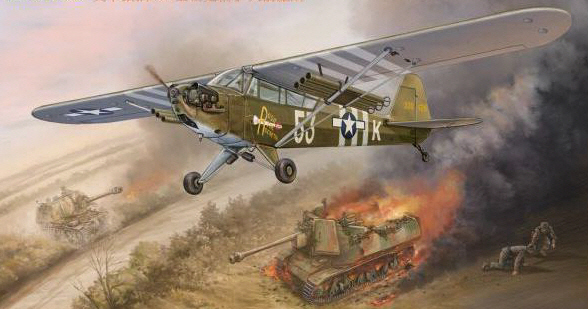
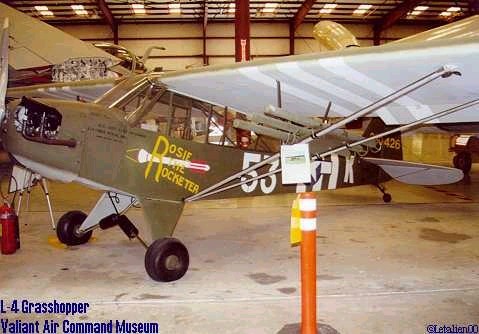
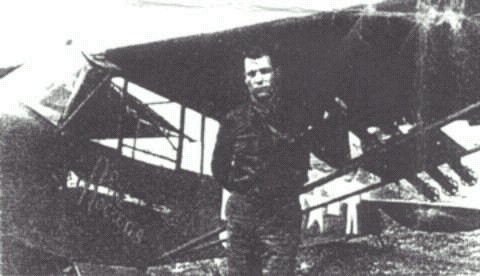
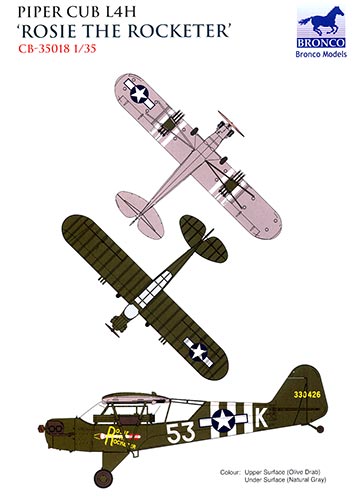
Major Charles "Bazooka Charlie" Carpenter, 4th Armored Division and His Bazooka-Equipped L-4H "Rosie The Rocketeer"
aeroweb.brooklyn.cuny.edu/specs/piper/l-4j.htm
Leland F. Carpenter, LeeBear35@yahoo.com, Johnsburg, IL
Here is some information about the "Rosie the Rocketeer" aircraft, and "Bazooka Charlie", the pilot.
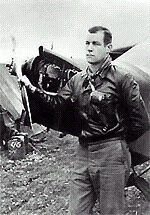
During WWII, a Moline man placed several Bazookas under the wings of His Piper Cub Scout plane. He then used the plane to attack German tanks. I believe his name was Carpentier or Carpenter. Can you give me any more information?
A: Charles "Bazooka Charlie" Carpenter, a native of Edgington in southern Rock Island County, graduated from Rock Island High School and Centre College in Danville, Ky. He was teaching history at Moline High School when he joined the Army in 1942. File Photo Major Charles Carpenter with his plane, "Rosie the Rocketeer," somewhere in France. His battlefield exploits in the tiny plane won him a variety of nicknames: "Bazooka Charlie", "The Mad Major" and "Lucky Carpenter."
In 1944, by then a major, he arrived in France, where his assignment was flying a Piper Cub on reconnaissance missions in front of the 4th Armored Division of General George Patton's Third Army. Ignoring regulations against arming the tiny recon planes, Major Carpenter attached 6 x [2.36"] Bazooka [recoilless rocket]launchers to the wings of "Rosie the Rocketeer" and began attacking German armour. Threatened with court-martial, he was saved that fate by Gen. Patton himself, who not only stopped the disciplinary proceedings but awarded the major a medal for bravery. Major Carpenter was soon known the world over. The Army newspaper, Stars and Stripes, featured him and his exploits several times, as did papers as far-flung as the New York Sun and the London Times. The Associated Press reporter Wes Gallagher, in a 1945 article in Liberty Magazine, said Major Carpenter was "a legend in an outfit where reckless bravery is commonplace." He told Gallagher that his idea of fighting a war was "to attack, attack and then attack again." By war's end, Major Carpenter had destroyed six German tanks, participated in several ground fights (he'd land on the battlefield and lend a hand), won a Silver Star and an Air Medal and been promoted to lieutenant colonel. Discharged from the Army after it was discovered he had Hodgkins Disease, he was given just two years to live. He made if for 20 years; he died in 1966 in Urbana, where he had taught school since the war's end. He is buried at Edgington Cemetery.
A model-maker who knew LTC Carpenter writes:
reocities.com/qcsms/news/2006/2006_01.html
In my youth in the late '30's early 40's I was lucky enough to spend a couple of summers at the local Moline "Y" in a learner's swimming class. I was even more fortunate to have a Moline High School teacher as our coach. His name was Charles Carpenter and if anyone had a boyhood hero, Charles was, and still is, mine. A year or two after these summer swimming classes, World War II broke out and Charles went off to war. He took light plane and glider training and before he could be assigned to gliders he become an L-4 pilot/ spotter/ and official pilot assigned to Major General John S. Wood of Patton's 3rd Army, 4th Armored Division. Charles went into France just a day or two after "D" Day and was Gen. John Wood's personnel pilot. This duty assignment allowed for some spare time so Charles had a project in mind and an Axis - German score to settle. (Part of this story is that before Charles went into the service, sometime after Dec. 7th, he had gotten word that his older brother had died at the hands of the Japs during the Bataan death march. So he signed up to go into the service with a mission to get even.) It seems that the story goes that on one of the earliest hunts, Charles got a bit overzealous in chasing down Germans and General Patton had to come and bail him out of trouble with some of the French authorities. So here was Charles, with an L-4, nice little airplane and time on his hands and being a crafty scrounger as most guys are in the Army...he found some old Bazookas lying around not doing anything. With a little assist from some mechanics in one of the English airparks, a couple those 2.36" Bazookas soon found a new home under the wings of the L-4. Now any good old airplane with some heavy ordnance hanging on it sure needed a name and so it was soon labeled "Rosie the Rocketeer." Probably Charles had heard the then new wartime song "Rosie the Riveteer." So Rosie came to be. According to several small articles from contemporary issues of the European Theater "Army Times," Rosie and Charles went out and nailed some German heavy armor. At the point in the article that the Army Times reporter caught up to Charles he had increased the weapon compliment to a total of 6 Bazookas and had already accounted for at least 5 heavy tanks and some German light skinned vehicles. I would tend to think that as word got around the German armored columns, those gents began to get a little nervous anytime an American Grasshopper spotter plane showed up overhead. "Bazooka Charlie" came back to the central Illinois area at the wars end and resumed teaching at the old Roosevelt Military academy in Aledo. He soon learned that the illness that he contracted and cut short his army active service was a terminal illness and he passed away as a relatively young man. I regret that I lost track of him as I grew up and not being aware of him until too late. What a story he could have told. There is no doubt that somewhere "up there" his brother met up with him and patted him on the back for a job well done. The first time I built the model of the L-4, I did some research and located Charles' widow and thru her was able to secure some of the material that she had accumulated relating to Charles' mission to go anywhere, after anything Axis related. The Heller kit goes together quite well. To make the specific modifications for this model took very little work Add a scale piece of sheet plastic representing a mounting plate on the right and left pair of wing support struts, and then 3 small pieces of tubing on each side to represent the Bazookas. I was able to secure some reasonably good pictures of Rosie on the ground with Charles next to her. The standard invasion markings were very easy to duplicate, and the tail number was very easy to read. In the pictures it seems that there is the appearance that the upper wing surface invasions stripes had been painted over rather crudely. The biggest issue was to hand-paint a small decal representing the "Rosie the Rocketeer" logo. I was also able to find a small number set that represented the aircraft tail number and a larger letter set to represent the European theater aircraft I.D. lettering on the fuselage sides. At this point I am part way thru doing Rosie again.
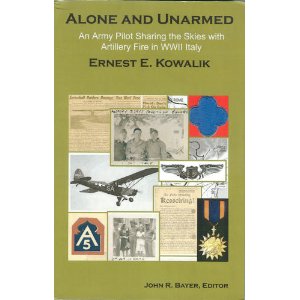
In his book, Alone and Unarmed, pages 267-268, Kowalik states that there were more than just Carpenter killing tanks with L-4s. He says there was a "Piper Cub Tank Busters of France" and that the founder knocked out 38 tanks. The grasshopper pilot telling him this after the war, killed 18.
Alone and Unarmed is the story of a lone pilot, Staff Sergeant Ernest Kowalik, flying the military's version of the 65-hp Piper "Cub", during the Italian Campaign in WWII most of the time without benefit of a rear seat observer.
Flying without an Observer, because he was the "spare" pilot for the 88th Division Artillery HQ Battalion, Kowalik actually flew more than twice the average number of sorties and hours than the typical division Liaison Pilot, often at dangerously low altitiudes.
Artillery spotting and scouting for the 88th Infantry "Blue Devil" Division, he saw a wide variety of action, from taking out large enemy guns and rescuing supply caravans from ambush, to making possible several significant breakthroughs of enemy lines.
Join Staff Sergeant (later Lieutenant) Kowalik as he relives significant episodes of the world's struggle for freedom in that time.
"Directing artillery fire from an unarmed, unarmored light aircraft was surely one of the most dangerous tasks performed on a daily basis during World War II. Flying from rough, unimproved airstrips, often within range of enemy shellfire, added to the perils faced by Field Artillery pilots, as did the ever present threat of bad weather. Such operations are covered in graphic detail by Ernest Kowalik, whose "Alone and Unarmed" is a welcome addition to the small number of books on a little known aspect of WWII."
- KEN WAKEFIELD, author of Lightplanes at War, The Flying Grasshoppers, and Luftwaffe Encore.
Pre-publication offer, only $19.95 plus $2.00 Media Mail shipping. Priority Mail extra.
Pay via Paypal to jrbayer3@yahoo.com, or send check or money order to:
The Glenn Curtiss Press
c/o Bayer
8501 E. Alameda Ave. #1031
Denver, CO 80230-6891
thetroubleshooters.com/br/br136.html
The 1st Battalion, 319th Infantry Division Ambush, April 11th, 1945
By Maurice "Bill" Costley
EXCERPT:
On the 8th of April, 1945, after taking the industrial city of Kassel the 80th began it's attack to the southeast. April 11th, mid-morning, the 319th Regiment's 1st Battalion, while being trucked on the autobahn near the town of Possendorff, was ambushed by the Germans. This ambush subjected the entire convoy's serial to intense machine gun fire from well-prepared positions in a line of woods, paralleling the left roadway.Charlie Company was leading, with some personnel and vehicles from Headquarters Company; "A" Company brought up the rear. The entire battalion, which included accompanying tanks, received fire at the same time. The firing began as "C" Company came upon a blown-up bridge, and was in the process of turning.
Organized resistance was formed nearly instantaneously, which was amazing due to the intense surprise fire. The GI's began marching fire, and with the assistance of the tanks, proceeded to methodically clean out the woods. Men from all companies participated in this, since all were fired upon at the same time.
This ambush so angered the GI's, that the Germans who survived the return fire were treated very harshly. It was also discovered that the enemy consisted of SS and Luftwaffe personnel being utilized as infantry. Some popped out from camouflage-covered holes, attempting to shoot the passing GI's in the back. The fight lasted less than 40 minutes. It was thought that the SS units were from Buchenwald, as many of the SS guards left the camp to engage the approaching Third Army.
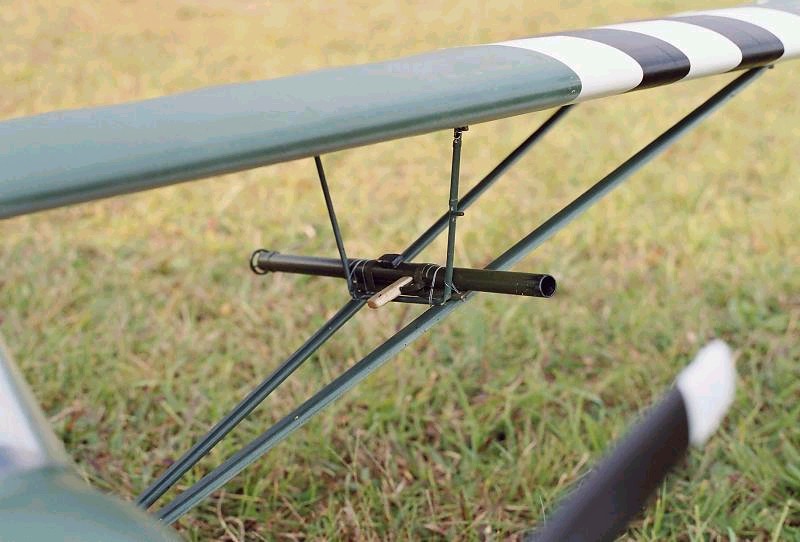
A notable happening here was the appearance of an L-4 Liaison plane with three infantry Bazookas attached to each side of its wing struts. In a rather steep dive, it fired its Bazookas into targeted German positions. This was done during the chaos of the battle, and not too many ground troops took notice. Three of the Soldiers who saw this event are living today, Maurice Bill Costley-San Diego, California, Elton Webb, of Houston; Texas, and Rudy Tomasik of Woodstock, Connecticut. For his action here, Rudy was awarded the Silver Star. The commendation was given for firing his jeep-mounted 50-caliber machine gun into the woods, allowing the GI's time to reorganize.
The Bazooka-firing L-4 was from the 4th Armored Division, whose line of march was to the battalion's right, not only on the autobahn, but also moving cross-country. The L-4 was "riding shotgun", thus observing what had happened.
Legendary USMC innovator and reformer K.P. Rice writes:
volanteaircraft.com/ov-10-8.htm
"It is interesting to note here that Army doctrine in the late '60s viewed the helicopter as a means of transport. As such, it was not a fighting vehicle and, for a time, the Army forbade any armament on helicopters. This policy was overtaken by events in Vietnam when tactical necessity forced field expedient armed helicopters. The marines soon followed suit (for a while marine helicopters only flew, if Army 'gun ships' were available for escort.) Since the Army, although barred by the Air Force from fixed-wing support, did have helicopters, the armed helicopter was the inevitable solution. Thus the development of the armed helicopter, not only for the Army and marines who followed their lead, but for practically every Army of consequence in the world. In spite of the fact that practically everything an attack helicopter could do, could be done cheaper and better with a fixed-wing aircraft of proper design, Air Force politics overruled it."
Carlton has proposed an important transformation for the 1st Cavalry Division that would enable it to deploy almost dozen aircraft at a time inside a C-130 and get itself to world hot spots instead of sitting in a hot motor pool in CONUS with 33-ton BFV and 70-ton M1 tanks awaiting a replay of Desert Storm in some middle eastern desert. The final argument against the micro-helicoper Cavalry idea will be directed at the helicopter itself--essentially helicopters are about 100 mph, low-altitude aircraft that can hover and take-off/land vertically. Critics will attack the 100 mph speed and say its not fast enough while the helicopter proponents will cite terrain masking possible by low speed flight and hovering under the treetops will equal protection. Small helicopters could also be made quiet with rotor design and NOTAR hot engine exhausts for counter-torque control instead of tail rotors. If done right, Carlton's micro-helicopter Pegasus Air Cavalry would be a great success like the armed OH-13s were in Korea/Vietnam since the exposed tail struts blended in with the trees. Ground Cavalry with light tracked AFVs with band-tracks and hybrid-electric drives would complete a "stealth" Air/Ground Cavalry combined-arms team capable of general purpose, mobile combat missions.
The current FCS concept using a micro-UAV helicopter
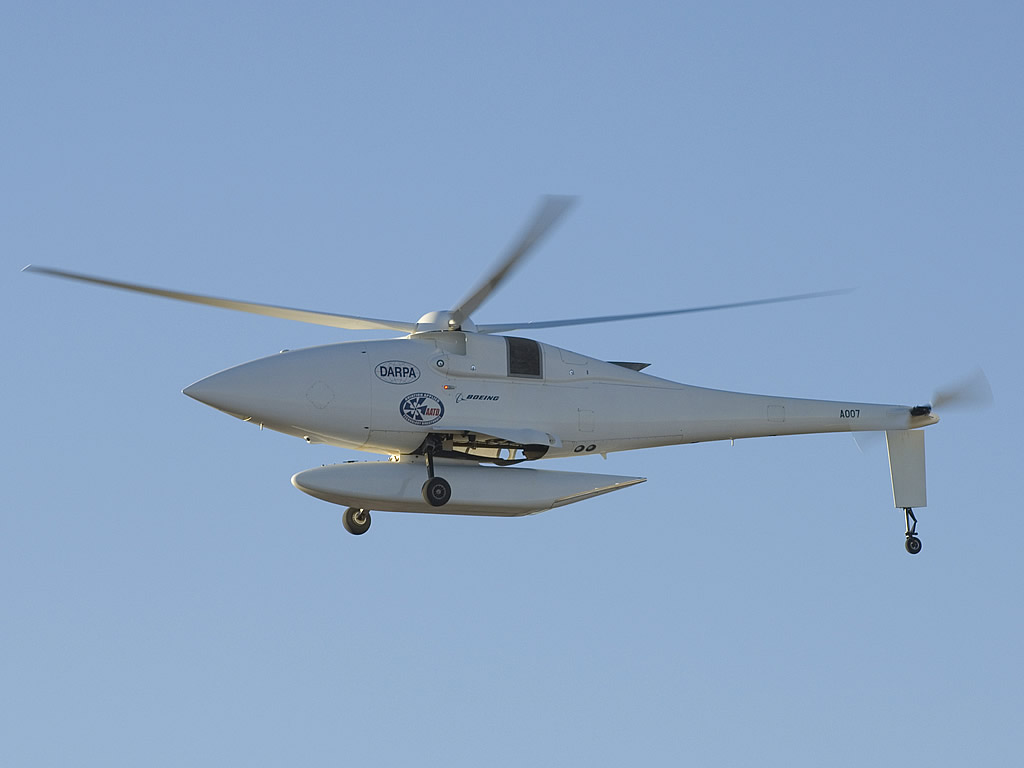
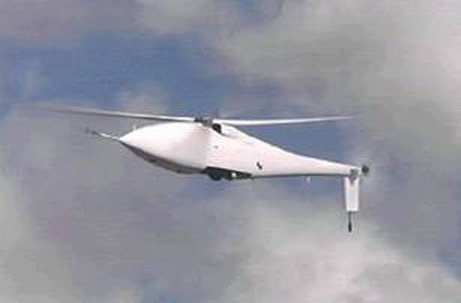
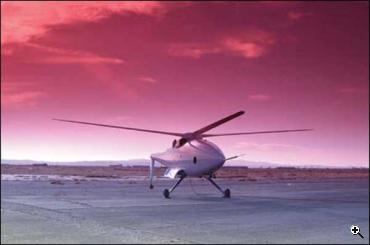
The U.S. Army right now is trying to launch a micro-helicopter from the Future Combat System (FCS) network of wheeled armored cars to provide overhead surveillance and possibly an attack capability akin to Speed Racer's mechanical bird. However, the A160 Hummingbird helicopter UAV while an advanced technology design is nowhere near large enough to carry a significant ordnance payload to attack/destroy targets and would be at best a nuisance. The "soda straw" narrowness of view of UAVs in general works against the A160 Unmanned Combat Armed Rotorcraft or "UCAR" being effective at CAS. CAS is often a "cat and mouse" game where it takes the active involvement of a man in the aircraft to exploit the opportunity of the enemy revealing his presence or our ground troops directing him to strike at a fleeting target. We need a man in the cockpit to have this kind of agility.
While we agree with Carlton's armed manned micro-helicopter Air Cavalry concept we conjecture that a light fixed-wing manned attack aircraft that can take-off from extremely short dirt runways may be even better for a number of reasons. Consider a prop or even jet-driven fixed-wing UCAV like the Predator UAV armed with Hellfire ATGMs except it would have as an option the ability to have the on-scene observation and guile of a human pilot, an "Unmanned/Manned Combat Air Vehicle" (U/MCAV). A concept wcreated with our RoboCobra idea long ago now being taken up by Boeing in a Little Bird helicopter and SAIC with a Cessna Caravan fixed-wing aircraft.
The dirty secret of why helicopters are not in every American's garage along with the family ground car is that after a certain amount of hours EVERY HELICOPTER'S ENGINES, TRANSMISSIONS AND ROTOR SYSTEM HAS TO BE TAKEN APART AND PUT BACK TOGETHER OR ELSE ONE DAY YOU WILL BE FLYING AND IT WILL FALL APART AND KILL YOU. The helicopter must have organized depot level maintenance and even small size cannot prevent this. Robinson Helicopter masks this by building into purchase agreements that after the set number of hours, your R-22 will be turned back to them and rebuilt. For helicopters to fly they have to be constantly rebuilt. This is the dirty secret of the helicopter. Only 30% of a third world country's helicopters are in flying condition at any given time! While the U.S. Army has deep pockets there are not bottomless.
If on the other hand, we used an automobile piston engine to propel a fixed-wing attack U/MCAV we could fly them for years at a time with operator PMCS without having to constantly rebuild them, saving millions of dollars. We would gain twice the forward air speed (150-200 mph) possible high-altitude flight profiles but would lose hovering and V/TOL. But we dare say that extreme SHORT take-off and landing (ESTOL) from a dirt strip (500 feet or less) that could be cleared out by a M113A3 Gavin with a dozer blade is "good enough" for Army Air Cavalry operations because the fuel and armaments will need to come by wheeled trucks and this means some kind of roads, and roads can = airstrips for ESTOL aircraft.
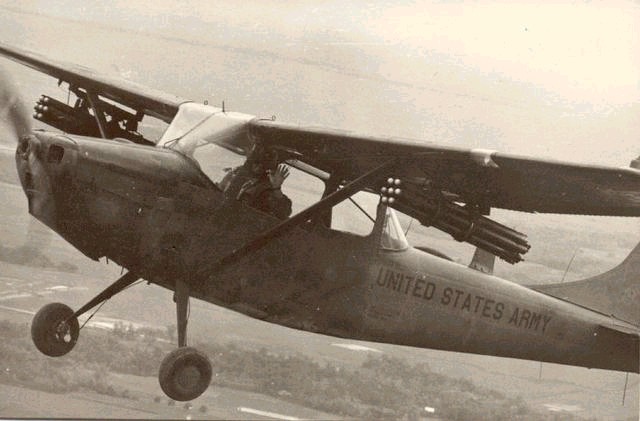
Another way to view this is that the U/MCAV would be a smaller, lighter version of what the OV-1 "Mohawk" CAS/recon aircraft was, flying out of O-1 "Bird Dog" artillery spotter plane short fields. Another way of looking at this is if the USAF O-2 and OV-10 Forward Air Controllers (FACs) had modern lightweight armaments--they could be attack aircraft in themselves in addition to directing fires from others. Since the retirement of FAC aircraft in the U.S. military, U.S. ground forces have not had good CAS as they once had, and the UAV has failed to live up to expectations and be as good as---let alone better---than human eyes with binoculars and sensors looking for targets actively and directly from aircraft. If done right, U/MCAVs could carry multiple rocket pods to create a modern ARA capability that we have not had since Vietnam.
Phil West of England has an excellent web page describing U/MCAV options where countermeasures to enemy Air Defense Artillery weapons are fitted to affordable STOL CAS aircraft:
In the Airpower Journal - Spring 1991 edition, "The Role of TACTICAL AIR POWER IN LOW-INTENSITY CONFLICT", Captain Vance C. Bateman, USAF outlines how affordable fixed-wing CAS aircraft could and should be a part of the USAF force structure and proposes several aircraft to include the Piper PA-48 Enforcer (photos here), the Sadler Piranha, A-22 and an armed crop duster. The Piranha uses a 30mm linked-feed version of the M230 autocannon used on the AH-64A Apache, AH-64 DAP and A/MH-6 Little Bird helicopters. We like how the Piranha can be TOWED by ground vehicle trucks until its time to be flown. The expressed need for a Continued Overhead Presence (CO-OP) to support future light forces destined to execute three dimensional maneuver (3D) warfare concepts, compels the DoD to explore possibilities to include fielding a dedicated aircraft such as an ASP (agile-survivable-potent). In general terms, an ASP might be described as a small, very agile and survivable cross between a Bronco and a Warthog (an "OAX") that could fly either from a maneuver element dirt strip forward arming and refueling point (FAARP) to avoid fixed-site air base targeting or an aircraft carrier without using catapults or arresting gear (as did the Bronco). However, CPT Bateman downplays the enemy ADA threat by saying these aircraft would not be used if these threats are present. This is naive to think we can pick and chose where and when we will fight, so we disagree and insist that countermeasures are included on the U/MCAV and that it be viewed as a full-spectrum of war CAS asset in conjunction with U.S. Army CAVALRY ground maneuver. These aircraft should belong to the Army not the AF.
It will be significantly easier to train enlisted pilots to fly fixed-wing U/MCAVs as years of civilian flight training using Cessna 150-type aircraft proves. Flying a helicopter with each hand on a control lever is more difficult and requires more hand/eye coordination than a fixed-wing aircraft. In fact, Soldiers who earn their private pilot's license would be recognized and encouraged to transition to the U/MCAV and earn their U.S. Army flight wings.

Basic Flight Details for the SAAB Supporter CAS Aircraft
 How to Fly a Single-Engined, Fixed-Wing Airplane
How to Fly a Single-Engined, Fixed-Wing Airplane
Certainly, we could have U.S. Army Soldiers--even enlisted ones fly "Killer Bees".
How to Fly an Airplane: Understanding VFR and IFR flying
How to Fly an Airplane: What is the Pitch Movement in an Airplane?
How to Fly an Airplane: What is the Roll Movement in an Airplane?
How to Fly an Airplane: What is the Yaw Movement in an Airplane?
How to Fly an Airplane: What is a Preflight Briefing?
How to Fly an Airplane: How to Use Radio Communications when Flying an Airplane
How to Fly an Airplane: How to Use a Dispatcher when Flying a Plane
How to Fly an Airplane: Preflight Checklist: Outside the Plane
How to Fly an Airplane: How to Check the Surfaces of the Plane
How to Fly an Airplane : How to Check Fluids in an Airplane
How to Fly an Airplane: Preflight Checklist: Inside the Plane
How to Fly an Airplane: How to Start an Airplane's Engine
How to Fly an Airplane: How to Run-Up an Airplane
How to Fly an Airplane: How to Taxi an Airplane
How to Fly an Airplane: How to Take-Off an Airplane
How to Fly an Airplane: How to Do a Power On Stall in an Airplane
How to Fly an Airplane: How to Make a Right Turn in an Airplane
How to Fly an Airplane: Tips for Making Turns in an Airplane
How to Fly an Airplane: How to Make a Steep Turn in an Airplane
How to Fly an Airplane: How to Fly a Plane at Slow Speed
How to Fly an Airplane: How to Turn About a Point in an Airplane
How to Fly an Airplane: How to Do a Power Off Stall in an Airplane
How to Fly an Airplane: Descending a Plane: Touch & Go
How to Fly an Airplane: How to Land an Airplane
How to Fly an Airplane: Tips for First Solo Airplane Flight
The next benefit of a fixed-wing attack U/MCAV is that they can fly with greater weapon loads for longer periods of time since they require less power to remain aloft and thus burn less fuel because their props only need to keep the aircraft moving forward for air flowing over fixed wings while helicopters with rotary wings must keep their entire wing area spinning to create their own lift. The Saab Supporter with an extra fuel tank in the back can fly for 800 kilometers (600 miles)! This is 4 times the range and endurance of current helicopters! The prop-driving engine of an U/MCAV could be easily silenced so it wouldn't announce its presence to the enemy to react and fire at as current as-is helicopters do. An U/MCAV could loiter overhead and nearby Army Ground M113A3 ACAV troops providing the Maneuver Air Support (MAS) concept that Charles "Chuck" Myers has documented is needed to insure air recon and immediate strikes are available for ground troops even beneath overcast cloud conditions.
I propose that we create a test Air/Ground Cavalry Squadron of the 1st Cavalry Division or the 2nd ACR using upgraded M113A3 Gavin ACAVs and a troop of armed micro-helicopters and U/MCAV micro-fixed wing attack aircraft "ASPs" and see what works best; the optimal solution will probably be a combination of both aircraft types; a force of "Killer Bees".
While the ideal U/MCAV would be the Burt Rutan's ARES "Mudfighter" turbofan or ducted-fan jet with 25mm Gatling cannon shooting the same shells as the M113A3 Gavin ACAVs and BFVs shoot, we might get faster progress by using in-production and available in wide numbers, combat-proven SAAB Supporter CAS aircraft with auto engines that can burn common JP-8 fuel. The Argentine Pucara turboprop COIN/CAS aircraft was greatly feared by the British in the 1982 Falklands War and they went to great lengths to destroy them on the ground with raids like the Pebble island attack. Pucaras are fighting Tamil Tiger terrorists in Sri Lanka and available for purchase by the U.S. Army to form a more effective Air Cavalry for MAS. The smaller, less expensive Saab Supporter CAS aircraft also has a good combat history.
Killer Bee Success Stories
Rhodesian
Rhodesian Fire Forces (RFFs) used an ingenious system of small Killer Bee Alouette III scout helicopters and fixed-wing Cessna Model 337 Lynxes [USAF O-2 SkyMasters] to locate and then kill/capture enemy communist rebels by firepower and C-47 dropping Paratrooper Quick Reaction Forces (QRFs).
DETAILS:
combatreform.org/RLIfireforce.htm
 youtube.com/watch?v=oRd_vgjGIWE
youtube.com/watch?v=oRd_vgjGIWE
Biafra
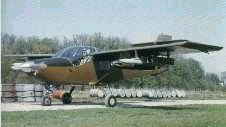
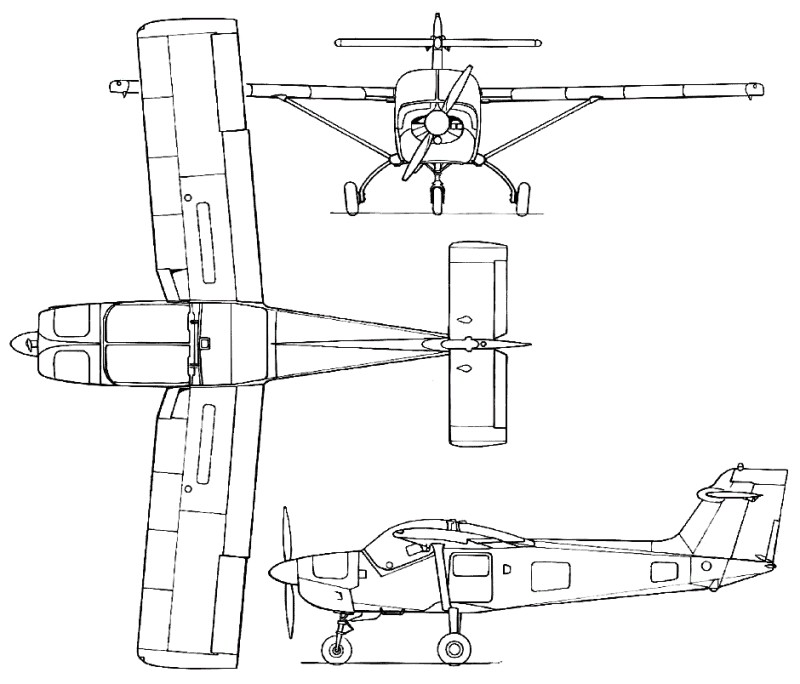
This trainer originated with Malmö Flygindustri as MFI-15, the militarized version being designated MFI-9 and 17 and Saab "Supporter" when the project was taken over by Saab. The prototype first flew in 1969 called the MFI-9. The production variant, of which 150 were built, was powered by a 200 hp Lycoming engine. Military operators include Sierra Leone, Pakistan (as "Mashshaq"), Denmark, Norway and Zambia.
 youtube.com/watch?v=xgrRWQdWsMc
youtube.com/watch?v=xgrRWQdWsMc
Its most famous civilian use has been the relief work initiated by Count Carl Gustav von Rosen who airdropped sacks of grain using the wing ordnance hardpoints. Denmark and Zambia each took 20 aircraft, the former for training and liaison roles, and the latter for the training and counter-insurgency roles. Before using Saab Supporters to drop relief supplies, von Rosen flew relief supplies into Biafra using large cargo aircraft despite enemy opposition. Sterling Seagrave's Time-Life Epic of Flight book, Soldiers of Fortune, 1981, details how Count von Rosen created a "Minicoin" air squadron of MFI-9 Saab Supporters flown by western and native pilots that destroyed enemy MIG fighter-bombers on the ground allowing relief supply aircraft to land and saved the day for Biafra freedom fighters in Africa. He later used these type aircraft to drop food to starving people in war-torn Ethiopia.
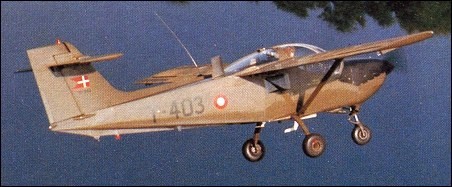
"Von Rosen had broken the Nigerian blockade, but he quickly realized that this was only a temporary solution to Biafra's agony. A fantastic scheme -- a plan that went far beyond the transportation of foodstuffs and medical supplies -- was beginning to take shape in his mind. It was the fate of the starving Biafran children that clinched it. 'I soon realized,' the idealistic Swede would later observe, 'that every priest, every doctor, every black and white man in Biafra was praying for arms and ammunition before food, because the idea of feeding children only to have them massacred later by cannon fire from Saladin armored cars or MIGs doesn't make sense.' His plan, von Rosen explained, 'was not to add fuel to the war but to keep the sophisticated war machine that the Nigerians have at their command away from the little children.'"Pages 132 - 136
"After a whirlwind tour of the world in a fruitless attempt to mobilize humanitarian aid for Biafra on a massive scale, Carl Gustav von Rosen returned to that battered would-be nation just before Christmas of 1968. There he learned that the besieging Nigerians were getting ready to further constrict the flow of weapons to Biafra and destroy the vital airstrip at Uli. If anything was to be done for Biafra, von Rosen decided, he would have to do it himself. And he believed so strongly in Biafra's cause that he would offer his services without pay. He told Biafran officials of a daring plan that was taking shape in his mind and then returned to Sweden to start getting it under way.Other Details:In Malmo, where von Rosen maintained an apartment, his son Eric was working at the Malmo Flygindustri, and aircraft-manufacturing concern that was part of the Swedish industrial combine, Saab. The son had once asked his father to teach him how to fly in a small, two-seater propeller sport plane produced by the company and designated the MFI-9B. Von Rosen had been impressed by the little plane's hot performance and nimble handling. He had also been impressed by a sketch of the military version, which had been designed as a light attack plane. The unusually strong wing structure enabled the aircraft to carry rocket pods, and the plane could not easily be hit by anti-aircraft fire or detected by radar because it could perform so adroitly at low altitudes. It was just what von Rosen needed.
Early in 1969, officials at the Tanzanian Embassy in Stockholm placed an order for five MFI-9Bs for a new flying school in their country. Tanzania was one of a few African states that recognized Biafra, but the significance of this fact seems to have escaped notice in Sweden at the time. An obscure Paris firm -- actually a front for the Biafran government -- paid $51,600 for the five aircraft. The planes were then flown by Swedish MFI pilots to an airfield outside Paris, where the pilots were surprised to find themselves in a military high-security zone. There, French air force armament experts measured the wings of the little craft for rocket pods, each capable of loading six French 76-millmeter rockets. Then the five planes were dismantled, crated and loaded aboard two Super Constellations. All the Swedes returned home except Per Hazelius, and engineer who was to reassemble the five planes in Tanzania. He boarded one of the Constellations, expecting to disembark in Dar-es-Salaam. But when his plane finally landed, it was on the opposite side of Africa, in Libreville, Gabon. Waiting to greet Hazelius was Count von Rosen.
Two other Swedish pilots and two ground crewman were the von Rosen. The pilots were Martin Lang, a 31-year-old flying instructor, and Gunnar Haglund, a 27-year-old pilot for a Swedish steel company. The ground technicians were Torsten Nilsson, 58, a retired Swedish air force pilot, and Bengt Weithz, a young engineer familiar with the MFI-9B. Like von Rosen, they acted out of idealism; their pay did not exceed their normal salaries. With them were two Biafrans -- pilot Willie Bruce and Augustus Opke, who at only 27 years of age was chief of the Biafran air force.
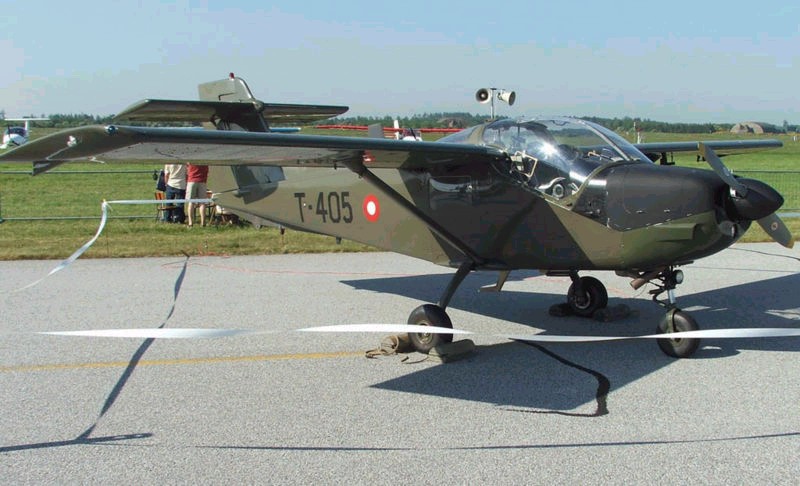
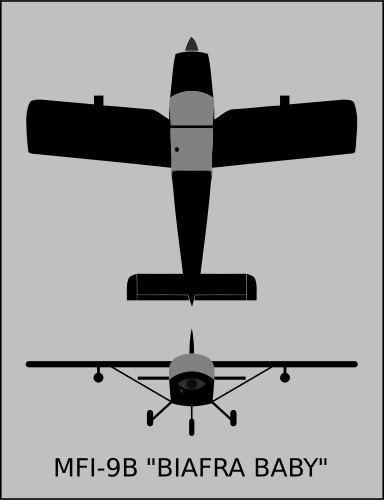
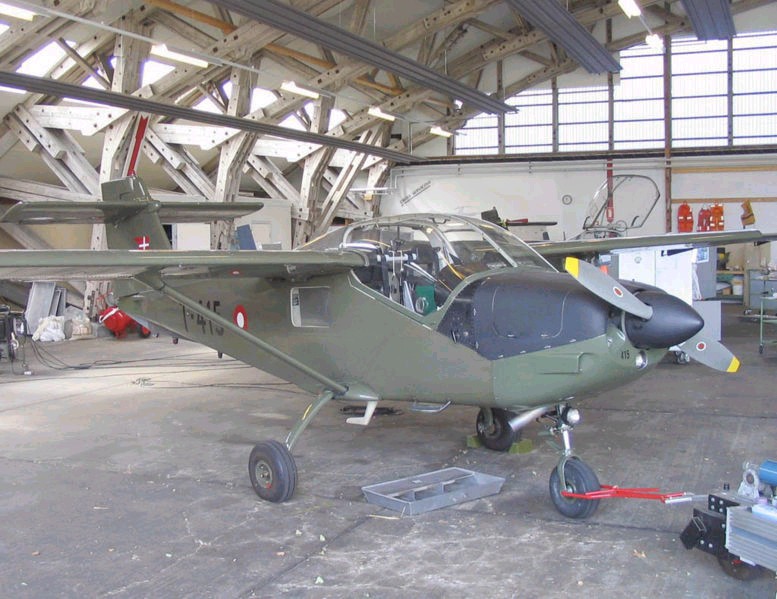
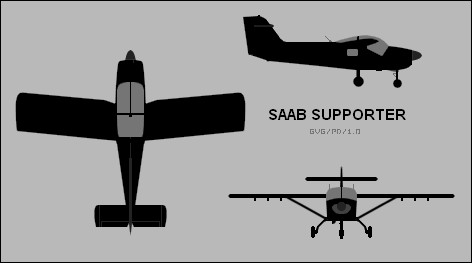
With everyone pitching in, Per Hazelius soon had the five aircraft out of their crates and assembled. Then the pilots flew the planes into the bush to a secret airfield outside Libreville, where the prefitted rocket pods were mounted on the MFI-9Bs and armed. Von Rosen dubbed the planes "Minicoins", a play on words referring both to their low price and to their suitability for min-counterinsurgency operations. Later, the name was frequently corrupted to "Minicon". Per Hazelius was amazed at the transformation of the harmless MFI sport planes into lethal attack aircraft, each bristling with 12 deadly rockets. Then the ground crews painted out the Swedish markings and daubed on camouflage splashes. Von Rosen invited Hazelius to remain with the group, but the engineer chose to return to Sweden.
The first raid on Nigeria was launched at high noon on May 22, 1969.
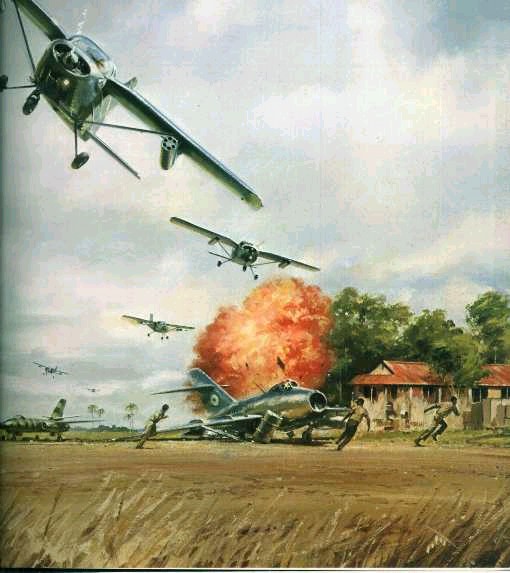
'We wanted to get them when they were sleepy after their lunch,' von Rosen explained. Their target was Port Harcourt, where the Nigerians had a radar base for guiding their fighters. There were also several MIGs and Ilyushin bombers based there.
It was a blistering hot day. Von Rosen wore yellow baseball cap over his thinning gray hair to ward off the sun. He was 59 years old.
As the squadron of Minicoins approached the coast, one of the pilots sighted some large oil tankers offshore. He became excited at the prospect of sinking them and broke radio silence. Now the Nigerians knew they were coming.
They flew into Port Harcourt low over the trees and spotted a regiment of Nigerian Soldiers hastily trying to cover the airport's runway with leaves. All the antiaircraft guns were pointed in the direction of the approaching Minicoins and they started firing as soon as the aircraft came into sight; von Rosen's plane was nearly flipped over by the explosion of a shell from a Swedish Bofors [40mm] antiaircraft gun. The pilots loosed their first rockets and the Bofors guns were immediately silenced. Then the rockets hit two parked MiGs, and the wings of one of the Russian fighters snapped off and cartwheeled through the air. Next the attackers struck at the Ilyushins, heavily damaging two of them before returning to their secret jungle strip.
The raiders took off again as soon as possible and struck Benin, wiping out the Ilyushin belonging to the notorious pilot nicknamed Genocide, and another Ilyushin, known as "the Intruder," that had harassed the airstrip at Uli.
Three days later they struck Enugu.
"They knew we were coming and had moved every available gun to the airport," von Rosen reported afterward. But the small raiding force evaded the Nigerian ground fire and hit two bombers. "A MiG taxied out to take off after us," von Rosen recalled, "but was shot up as he tried to lift off."
Martin Land had a bad moment when his Minicoin lost altitude and was forced to touch down along the runway before regaining flying speed. But while his plane was on the ground Lang fired rockets into two parked planes, one of them a MiG.
In three sharp, sudden thrusts, von Rosen and his little squadron of heavily armed light planes had created pandemonium in the Nigerian Air Force -- and given a badly needed lift to beleaguered Biafra.
World reaction was mixed. Nigeria protested to Stockhom as soon as Von Rosen's identity was established. The Swedish government launched an investigation; Malmo Flygindustri expressed surprise; Transair knew only that von Rosen was vacationing. Stories on the daring raids filled newspapers around the world. While von Rosen returned to Sweden to face a government inquiry, his squadron continued its attacks. At home, von Rosen satisfied the Swedish government that he had not been involved in the actual purchase and shipment of the aircraft and had not violated any specific law. Transair agreed to scold him, but only for flying for somebody else while on vacation. According to von Rosen, half the population of Sweden would have volunteered to go to Biafra if asked.
His mission ended, von Rosen settle back in Malmo to resume what he could of his own life. Over the next few months, he was rumored to be back in Biafra, flying on Minicoin raids, like a latter-day knight-errant battling for the downtrodden. In the squalid world of the gunrunners who influenced the outcome of so many events in Africa, he had shown that it was possible to be motivated by instincts other than greed. But he had done all he could for Biafra".
canit.se/~griffon/aviation/text/biafra.htm
Operation Biafra Babies
On May 30th 1967, the densely populated, oil-rich, province Biafra with 14 million citizens proclaimed its independence from Nigeria. A blockade was already in force and on July 6th the military attack started by Nigerian troops, who then numbered 100, 000.
 youtube.com/watch?v=J3ReFoFp0Gs
youtube.com/watch?v=J3ReFoFp0Gs
Throughout the war, Nigeria got support from abroad in the form of armour, artillery, aircraft and ammunition. Biafra got no official support from other nations, and had to manufacture about half the weapons used locally. They had only 3,000 troops when the war broke out, but still managed several successful counterattacks. When the collapse came early in 1970, they numbered 30 000.
Nigeria had, and got, MiG-17s, Il-28s, L-29 Delfins as well as DC-3s and helicopters. On the other hand, they had few pilots, and it's likely only one Nigerian pilot took part in combat operations. During the war, Nigerian air attacks were directed only against civilian targets and had no military significance.
The Biafrans had pilots, but very few aircraft. They had two B-25 Mitchells and one B-26 Marauder, which was captured on the ground as it was unservicable. Later on they got another B-26, which during Oct - Dec were used for night raids together with the B-25s and a converted DC-3. The B-26 and DC-3 crashed, the B-25s were captured on the ground.
The Nigerians also used DC-3s converted for bombing, for example of the airfield used at nights for relief flights from abroad. 5513 relief flights brought in 61,000 tons of foodstuffs, but Nigerian AAA never brought down any of the aircraft, and the only one shot down by a fighter was a Red Cross flight which had its flight plan approved by Nigeria. Still, 11 aircraft were destroyed and 21 pilots killed by attacks on the airfield.
One of the relief pilots in 1968 was the Swede Carl Gustaf von Rosen. He saw that Biafra was unable to acquire jet fighters, and brought up the idea of Minicoin with General Ojukwu.
In the spring of 1969 five MFI-9Bs were assembled in Gabon, painted in two green colours (Volkswagen car paint) in three large fields, given simple sights and two pods for six 68mm anti-armor rockets, and given an extra fuel tank in the fuselage. They were named "Biafra Babies". At first, the squadron had three Swedish pilots and three Biafran.
The first attack started on the morning of May 22nd with a transit over the sea, followed by an attack on the airport at Port Harcourt. Two days later, the second attack was a dawn attack against the airport at Benin. The third attack, also two days later, was a dusk attack against the Enugu airport via a very roundabout course.
This kept the Nigerian air force on the ground, making it easy for awhile for the relief flights. But after a while they started again, now attacking military targets like they hadn't before, because they were protected by AAA.
The fourth attack was against the important powerplant in Ugheli, which was out of commission for six months after.
On May 30th, the fifth attack had a troop concentration at a village outside Owerri. They never saw any target, in spite of the flight leader climbing to 100 m to try to locate it. Upon returning, they learnt from this that they had been under fire, which they never noticed, and that it was a correct decision not to fire at uncertain targets, as there were lots of Biafrans in the area.
After this, the Swedish pilots had to return to Sweden, leaving only one trained Biafran pilot in the air force. During July another Swedish made him company during 21 attacks.
In August pilot training was started in Biafra under von Rosen's leadership and with one Swedish teacher. Later, in September, Biafran pilots training abroad, for aircraft it was realized would never arrive, were recalled to Biafra to fly the Biafra Babies. 12 T-6s had been purchased, but they were all in bad condition, so only four could be made to fly. During the transit to Biafra, two were lost. The remaining two were used together with the MFI-9s, of which a total of nine were in service.
During the latter parts of the war, two MFI-9s were lost.
Span: 7.43 m
Empty weight: 340 kg
Length: 5.85 m
Max t/o weight: 575 kg
Height: 2.00 m
Payload: 235 kg
Wing area: 8.7 m^2
Fuel: 56 kg
Max altitude: 4500 m
Max speed: 240 km/h
T/O run: 150 m
Vne: 305 km/h
Landing run: 130 m
Cruising speed: 236 km/h
Range: 800 km!
Economy cruise: 210 km/h
Endurance: 4 hours
Stall speed: 80 km/h
Load factor: +4.4Gs/-1.76Gs
Armament: 12 x 68mm Matra anti-armor rockets
TACTICS
Normal tactic was to begin with to attack with 4 - 5 aircraft at a time. The unit was kept together approaching the target, with a separation of 50m or less, as a larger separation would lead to loss of visual contact between the aircraft. The very low flying altitude was necessary to avoid being fired upon, both over enemy and own territory, it was found. Radio silence was ordered except during the actual attack, when target information had to be passed on.
The tactic to ensure that a chosen target was destroyed before any remaining rockets were used on other targets was adopted. The rockets were only fired two at a time. Anti-armour rockets were chosen because it was decided that all attacks would primarily be anti-materiel, and only military targets attacked.
During the first attacks, pop-ups to 100m followed by shallow dives were made, but as this was when AAA was most effective and the rockets had very flat trajectories, it was found that it was enough to climb to 2 - 5m and fire the rockets during level flight. Firing range was usually 800 - 500m, but when firing at closer ranges, in no case were any aircraft damaged by its own fire. Dawn and dusk attacks were most effective, as AAA fire wasn't as good then.
For qualified targets, the day before was used for careful briefing and planning, that's why only one attack every second day. Later on, attacks with 1 - 2 aircraft were made with less planning against smaller targets. For close support work, metal sheets were placed on the ground close to own troops, and signal flares from the ground used to mark when the enemy was in sight. More than 5 minutes was never spent over the target.
Many aircraft were hit by small caliber fire, but managed to return with as many as 12 hits. Servicability was close to 100% in spite of this. At most three attacks per day were performed.
Statistics from the first 29 attacks (5 abandoned for different reasons) May-Aug:
432 rockets fired, more than 50% hitting targets. No aircraft or pilots lost.
................Destroyed/Damaged
MiG-17 3/2
Il-28 1/0
Canberra 1/1
"Intruder" 1/0
2 engine transport 1/0
Helicopters 2/1
Trucks 7/1
Radar 1/0
ATC tower 1/1
Terminal bldgs 2/0
Power plant 1/0
Ammo storage 1/0
Headquarters 3/0
AAA 2/0
Oil pump station 1/0
Enemy losses: 300 men at airports, 200 men at the front
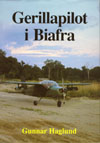
All this from the book "Gerillapilot i Biafra" (guess I don't have to translate that) by Gunnar Haglund, 1988. It's got pictures and an English summary.
Text last updated 1993 OCT 27
The Swedish military aviation page
Last modified 1996 Jan 10 by Urban Fredriksson
griffon@canit.se
The largest operator is Pakistan, whose air force and army have more than 80 and 105 aircraft in the training and observation roles respectively, with counter insurgency a probability in time of conflict. From 1986 the aircraft have been re-engined with 210-hp Continental TSIO-360-MB for improved performance under hot and high conditions.
TECHNICAL DATA
Type: Multi-role aircraft.
Crew: Two or three seat.
Engine: 200-hp Lycoming IO-360-A1B6 flat flour piston engine.
Performance:
Range: 5 hours 10 minutes endurance.
Speed: 146 mph. at sea level.
Ceiling: 13,450 ft.
Rate Of Climb: 807 feet-per-minute.
Weight
Empty: 1,424 lbs.
Maximum take Off: 2,646 lbs.
Dimensions
Span: 29 ft. 0.4 in.
Length: 22 ft. 11.6 in.
Height: 8 ft. 6.4 in.
Wing Area: 128.09 sq. ft.
Armament: up to 661 lbs. of disposable stores.
Principal Versions
Supporter basic model
Mushshak Pakistani model
USERS
Denmark: Supporter
Iran: 25 x Mushshak
Norway: Safari
Oman: 3 x Mushak
Pakistan: license production
Sierra Leone: Safari
Syria: 6 x Mushshak
Zambia: Supporter
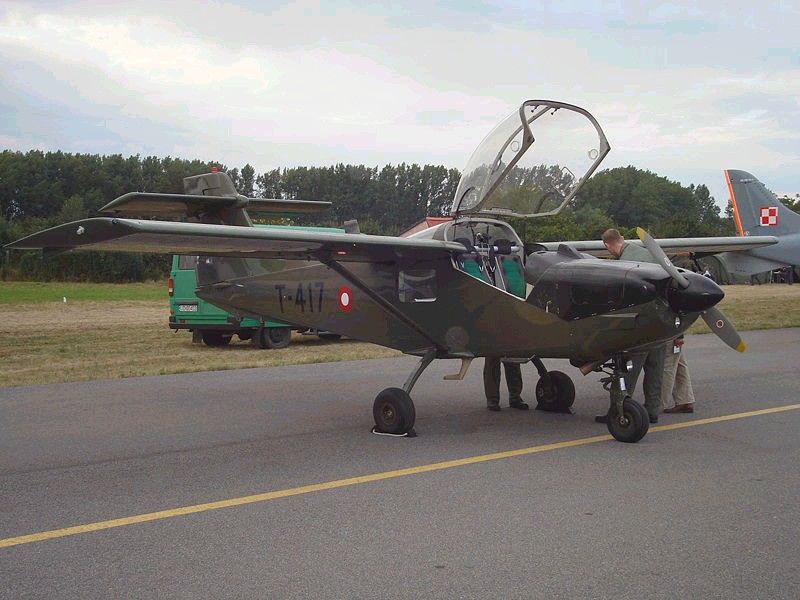
In the Airpower Journal - Spring 1991, "THE OTHER SIDE OF THE COIN: LOW-TECHNOLOGY AIRCRAFT AND LITTLE WARS", CAPT GEORGE C. MORRIS, USAF proposes armed Cessna turboprop Caravans (U-27s) be used for STOL airland/airdrop transport as well as close air support. Quick-Reaction Force Paratroopers could jump from U-27s to secure tactical terrain objectives and maneuver on the enemy. The idea has merit for a 1st Cavalry Division since U-27s or UV-18A Twin Otters could be used to resupply its units with Copterboxes. Both aircraft and the Saab Supporter can be fitted with floats to land on water and skis to land on snow/ice.
These type aircraft might be able to fire the ASP-30mm autocannon, shooting the same lethal 30mm DEFA NATO High-Explosive Incendiary ammo that the AH-64 Apache, A/MH-6 Little Bird and AH-60 Direct Action Penetrator shoot.
Part of the current UAV/UCAV mentality is that these aircraft will be hit by enemy fire and lost. Realizing this, the U/MCAV would have the latest countermeasures, flares, decoys and a ballistic-deployed recovery parachute (RP) to bring the entire aircraft down intact to save the pilot (and salvage at least parts of the aircraft) if disabled. With the U/MCAV there should never have to be a crash landing, use the RP if you can get to the friendly air base. Pilots of both the micro-helicopter and U/MCAV fixed-wing attack aircraft must realize their "mounts" might be shot out from under them and be wearing body armor, ballistic flight helmets, parachutes and Escape and Recovery gear to include a M4 5.56mm carbine and ammo to effectively fight off enemies beyond 300 meters not a mere 9mm pistol good for only short-range firing (less than 50 meters). A simple ejection seat for both craft should be standard, and least air bags for crash-landings. Costs for a fully-equipped U/MCAV would be around $200,000, a tiny expense compared to $3,000,000 bloated LAV-III/Stryker truck as IAV deathtraps.
Examples of Fixed and Rotary-Wing "Almost Killer Bees": VMO-6 in Korea
Imagine if these rotary and fixed-wing worker "Bees" had been equipped with guns, rockets and missiles....and BATTLEBOXesTM to live in...
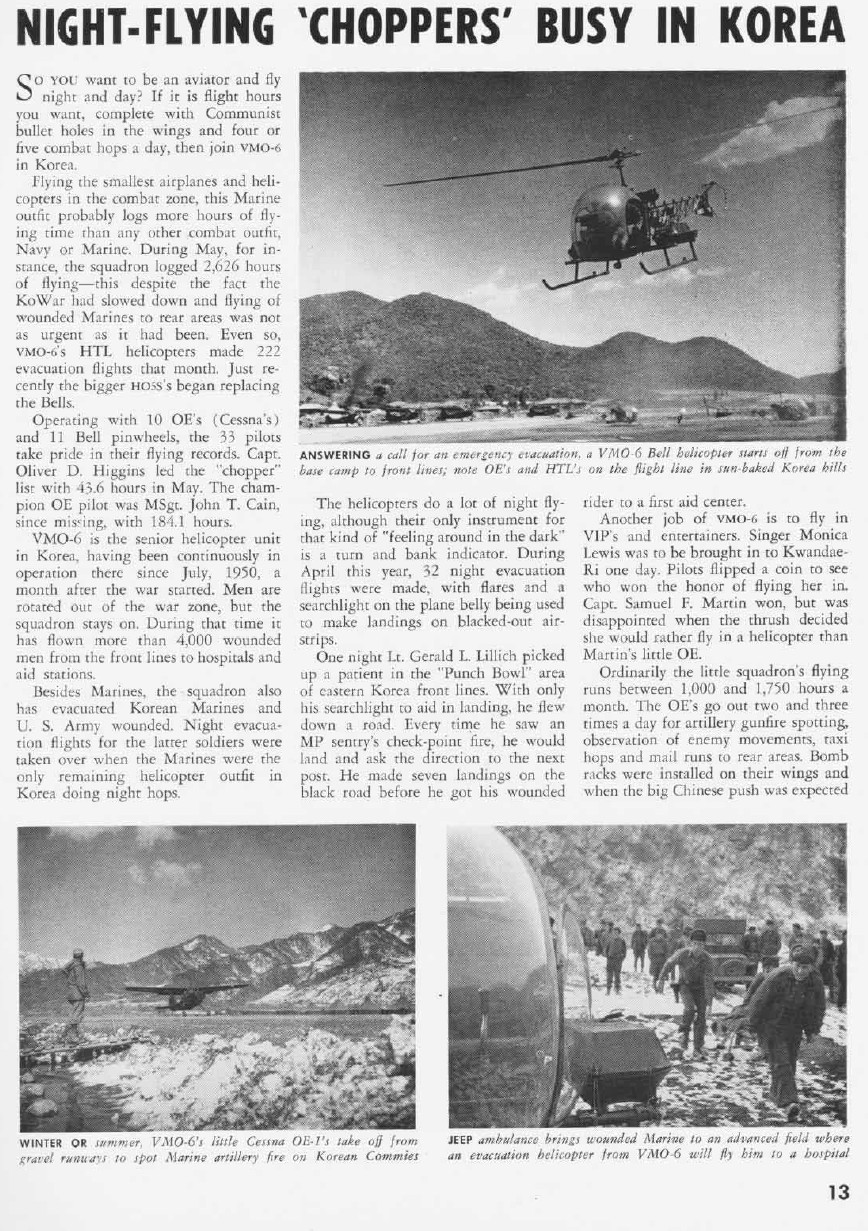
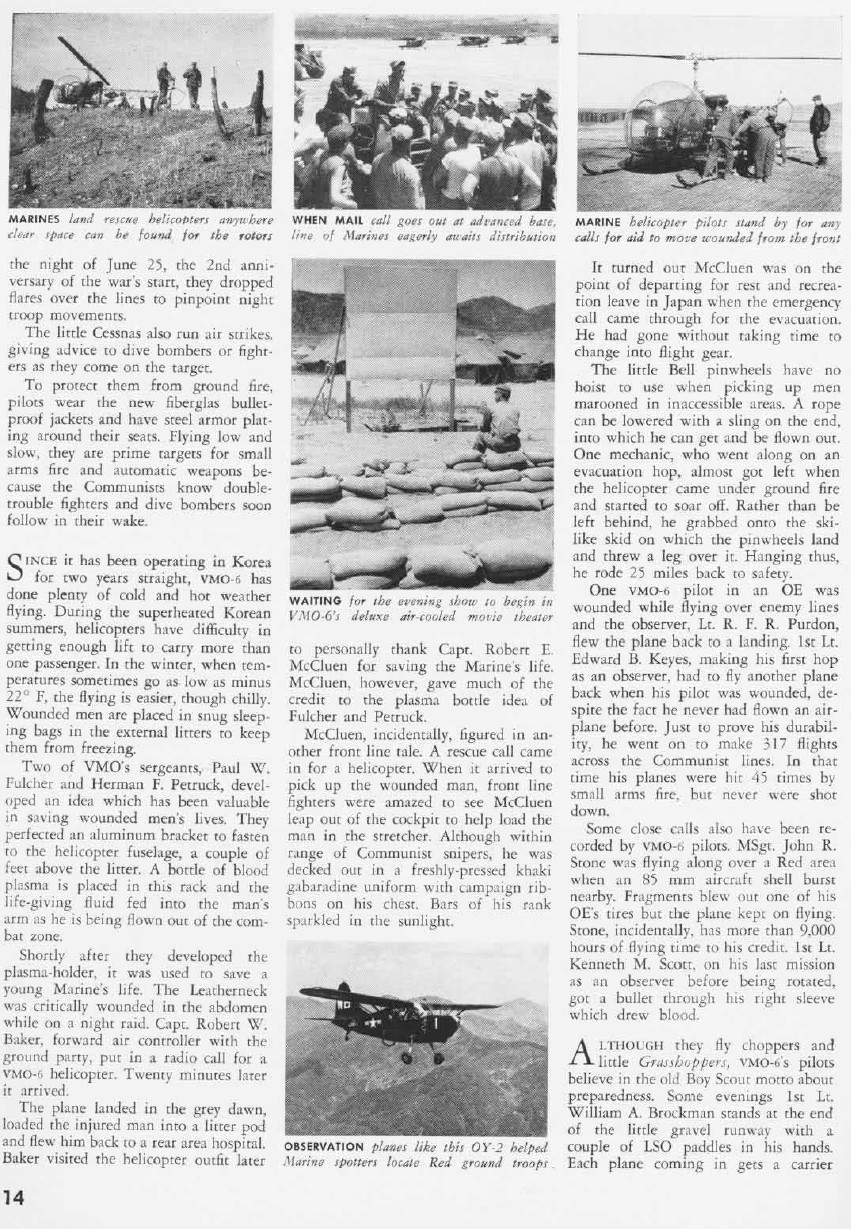
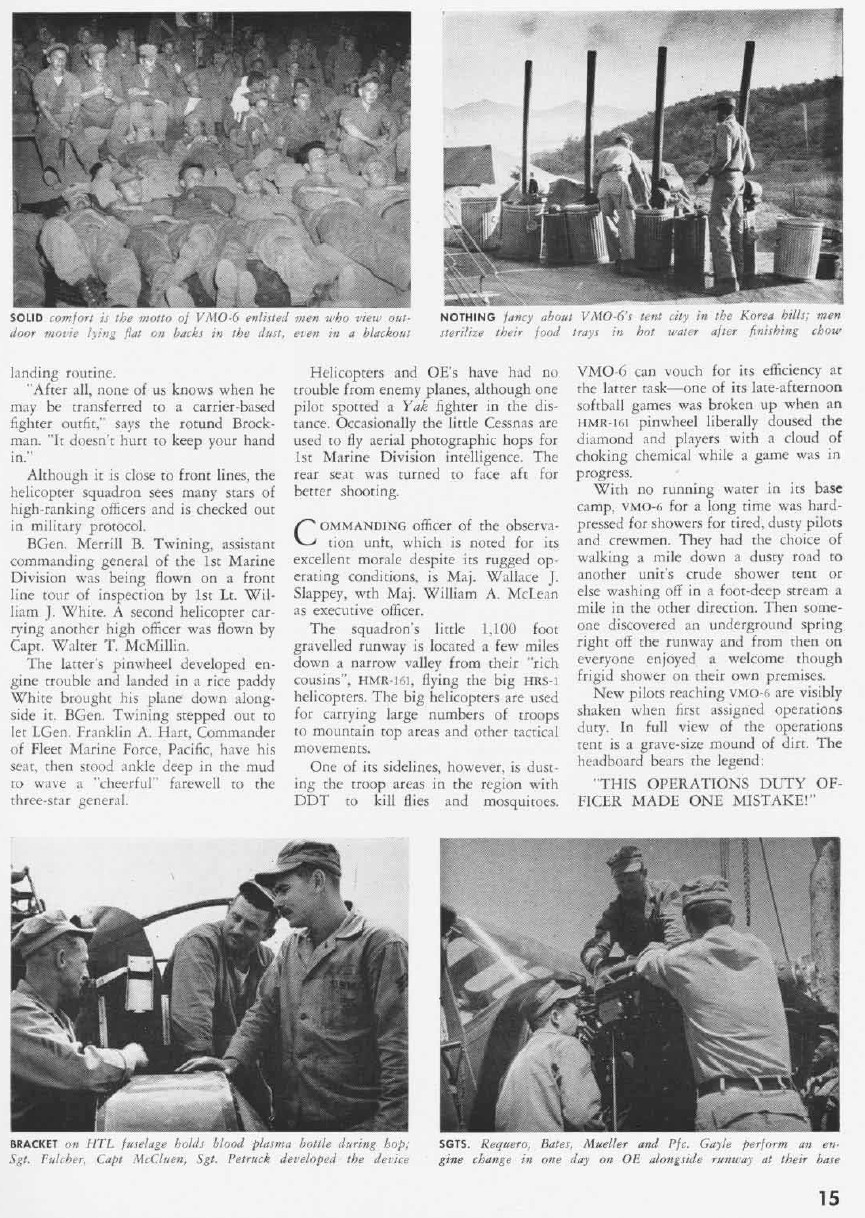
The Future: Sadler Aircraft's MilVamp U/MCAV
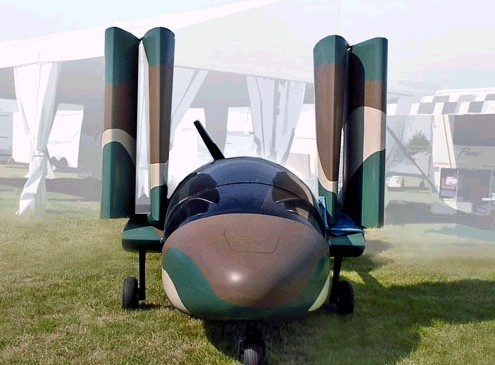
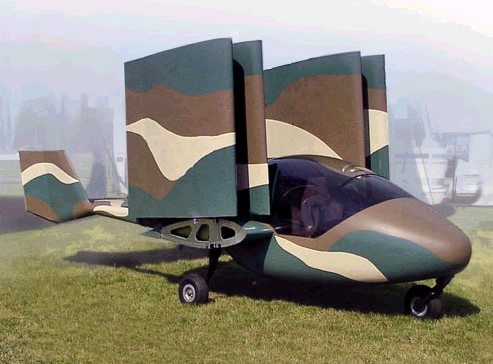
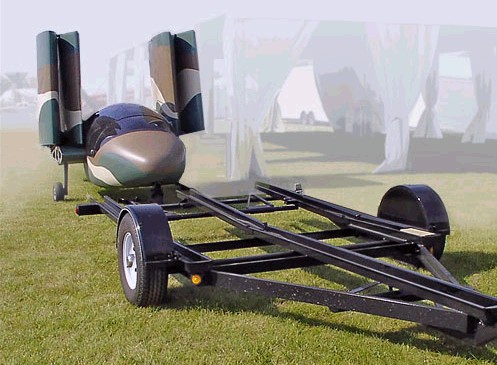
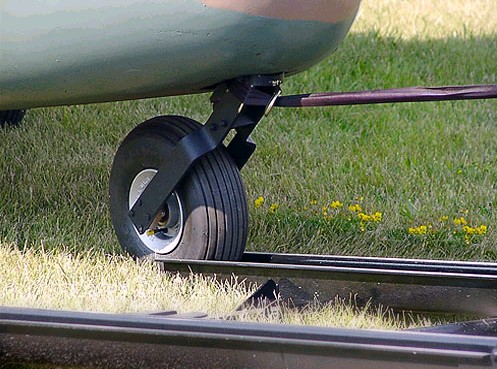
Sadler Aircraft now has a two-seat version of their folding-wing, Piranha called the Vampire that could be made into a "MilVamp" U/MCAV version with 30mm autocannon (same ammo that AH-64 Apaches and M113 Gavins can shoot) that enables it to attack targets outside of infared (can use DeltaHawk diesel piston engine with low heat signature), sound and visual detection and MANPADS ranges as well as shoot unguided and guided 2.75" Hydra 70mm rockets like its single-seat predecessor, but can now easily have experienced pilots train new ones, carry an enlisted JTAC/ETAC/AFAC airborne forward air controller-observer, a co-pilot or MEDEVAC an ambulatory wounded Soldier so he doesn't bleed to death.
 youtube.com/watch?v=Ns6tp-bgLos
youtube.com/watch?v=Ns6tp-bgLos
The video above shows the tragic story of a British Soldier who died in Afghanistan because a CH-47 helicopter had to fly from a forward operating base to the scene of the firefight and THEN fly back to the FOB shows that maneuver elements should have Killer Bee aircraft WITH THEM so wounded Soldiers can be flown back to superior medical care as fast as humanly possibly.
Hip-Pocket Artillery For Maneuver Elements: 120mm Heavy Mortars in Gavins
 youtube.com/watch?v=-Y-j4KCNqKM
youtube.com/watch?v=-Y-j4KCNqKM
The MilVamp would be towed by the ground maneuver element's M113 Gavins in a BATTLEBOXaircraftTM with mobilizer wheels as a support-by-fire section which should also have 120mm heavy mortars mounted in a ready-to-fire mode in M1064A3 Gavins for unguided and guided 7 km+ firepower in addition to the MilVamp's cannon and rocket firepower.
White Paper on Piranha Capabilities
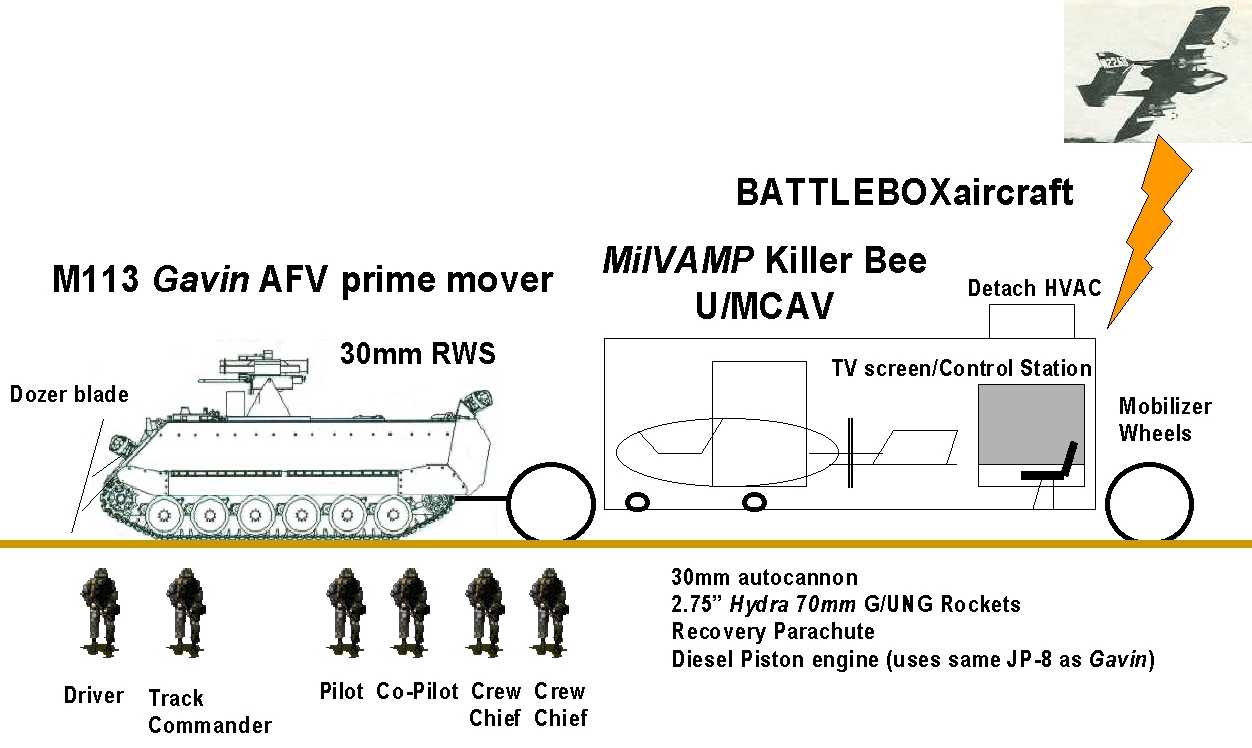
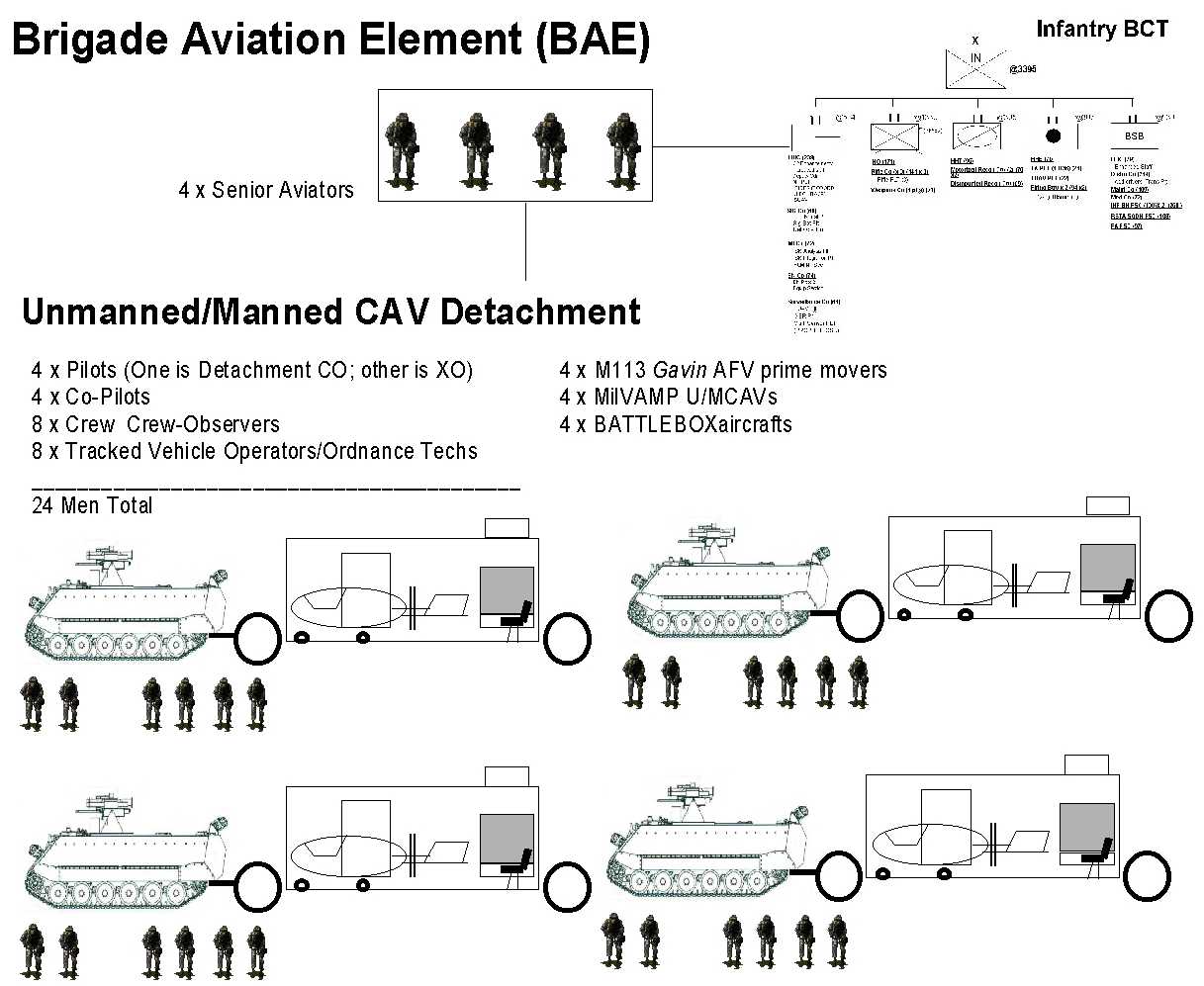
EXCLUSIVE! Sadler Piranha Video!
 youtube.com/watch?v=GyO14gRRzU4
youtube.com/watch?v=GyO14gRRzU4
Deployment Options
a. Operate Piranha or Military Vampire (MILVAMP) from the FOB
b. Tow P/Vs with ground vehicles on patrol, stop & operate from temporary landing strips (FOLs)
c. Tow P/Vs with ground vehicles on patrol, launch-on-warning or in response to combat actions by catapult or JATO (ZEL); Options B and C are far more responsive than Option A which is what we have in effect now--with different aircraft that are long distances away and increasingly unable to contribute to the fight....
FINAB: Sadler MILVAMP & M113 Gavin Complete Maneuver Air Support (MAS) System
THE MISSION
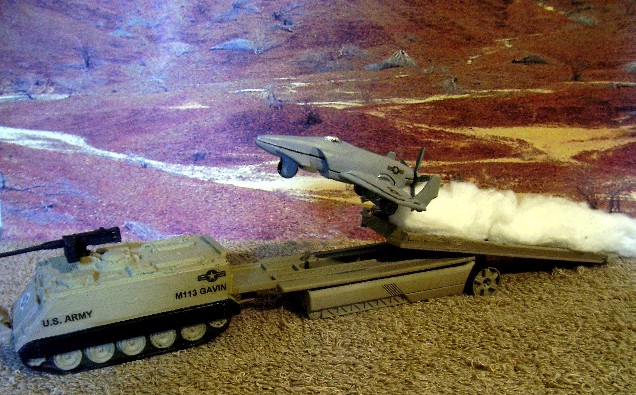
 slideshare.net/1st_TSG_Airborne/milvampkillerbeev50
slideshare.net/1st_TSG_Airborne/milvampkillerbeev50
 youtube.com/watch?v=3CUOXHxWaUU
youtube.com/watch?v=3CUOXHxWaUU
THE SYSTEM
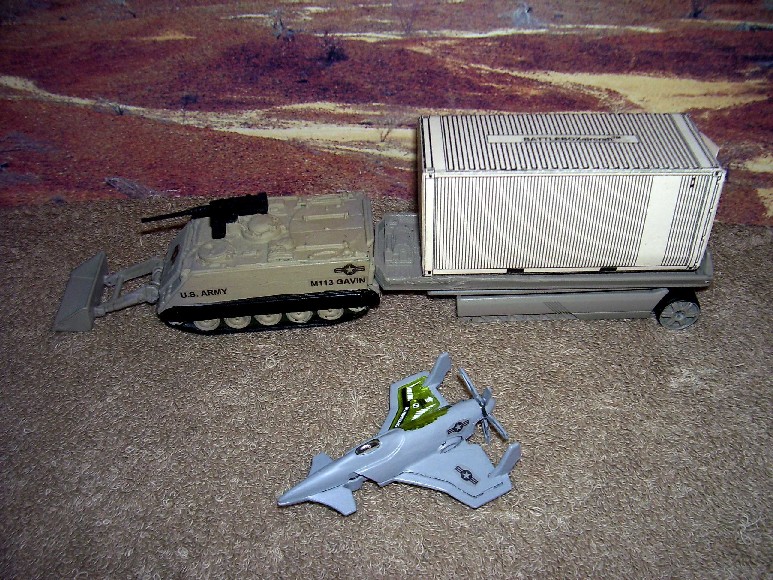
An entire "mini-Army Air Force" instead of sitting back at a Forward Operating Base (FOB) that is itself extremely vulnerable to all kinds of enemy attacks, and having aircraft support get farther and farther away as maneuver elements do their job, the MILVAMP/Gavin/BATTLEBOXaircraftTM Fighter-IN-A-Box (FINAB) System is contained in each ground maneuver system capable of unpredictable, cross-country movement away from roads/trails where land mines await. The FINAB is in the "hip-pocket" of the ground maneuver commander and certain to be available immediately to needs without delays, red tape and 1943 North Africa paranoia-obsessed, centralized USAF-runs-everything-badly bureaucracy. Russian SU-25 Frogfoot CAS attack planes were devastingly effective in the recent Georgia war because they are owned/operated by the ground maneuver army. Its high-time we return to the STOL "grasshoppers" that were co-located with U.S. Army maneuver elements.
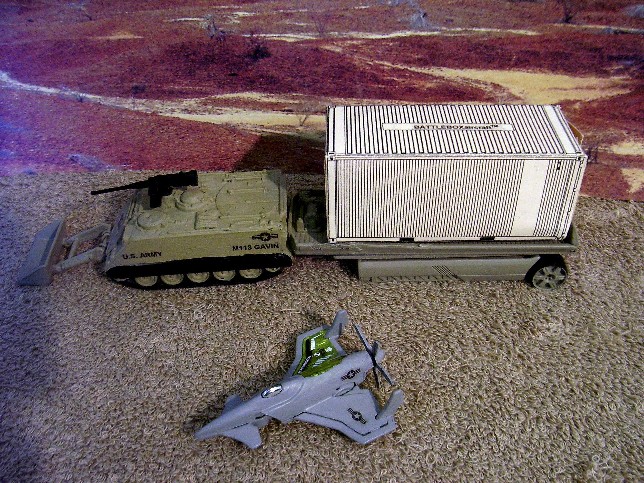
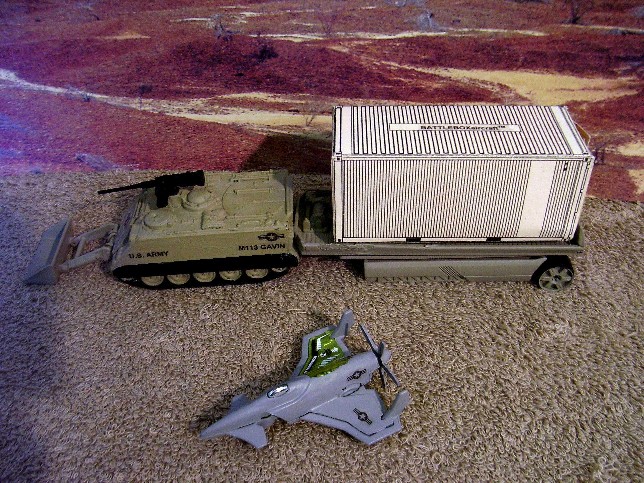
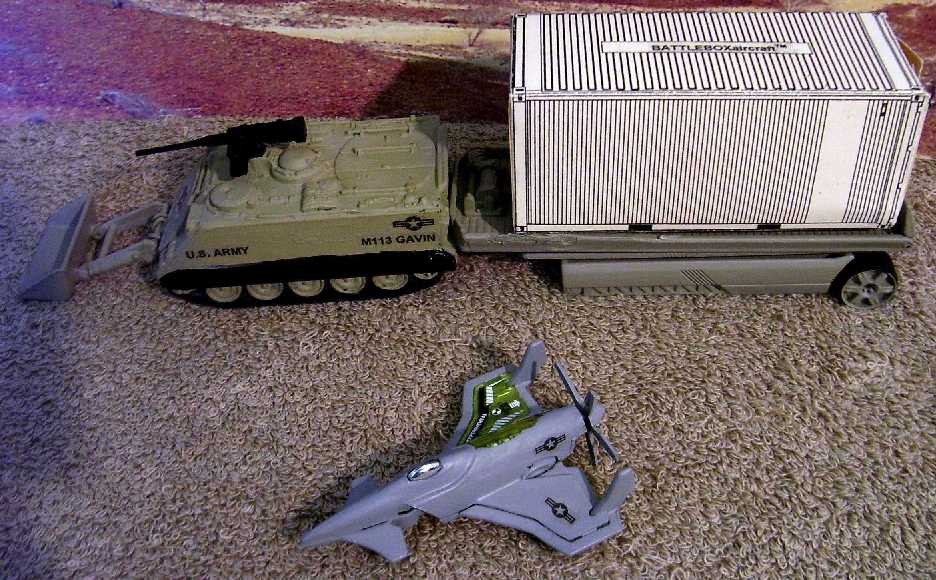
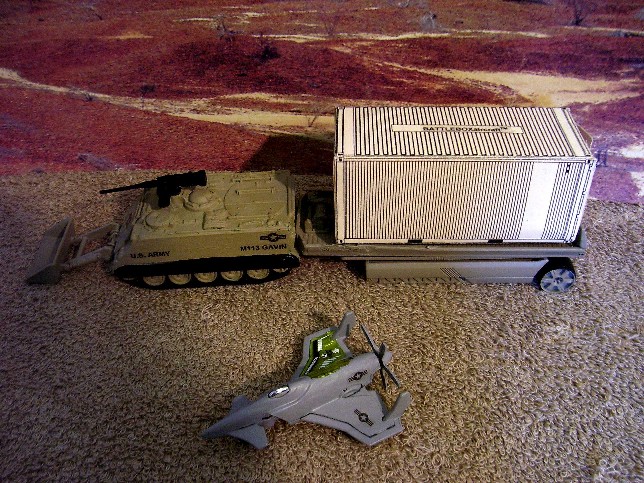
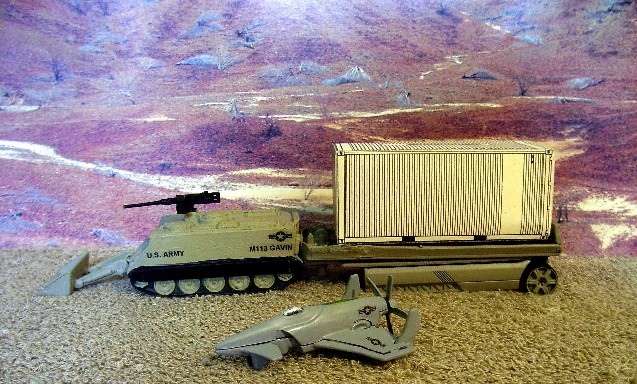
PRIME MOVER
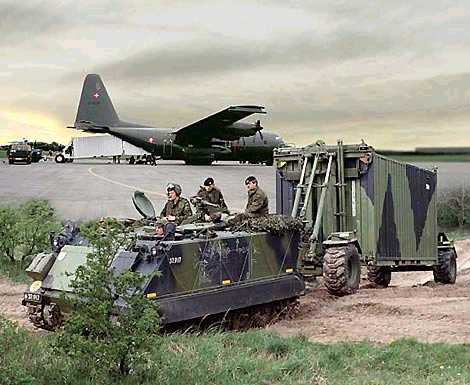
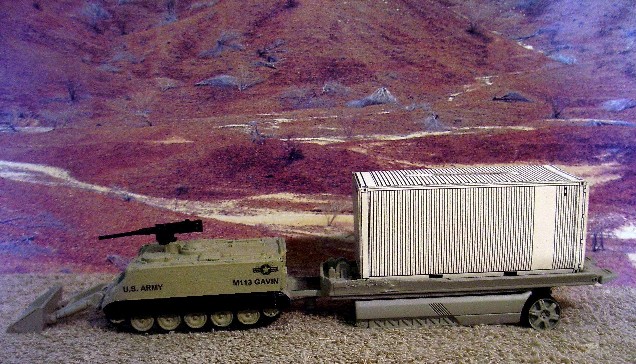
M113 Gavin offers all-terrain, cross-country, armor protected mobility and firepower for the FINAB Team, towing the Sadler MILVAMP Unmanned/Manned Combat Air Vehicle (U/MCAV) in an ISO shipping container BATTLEBOXaircraftTM on depicted here a combination roll-back/tilt-bed trailer launching ramp.
 youtube.com/watch?v=9SPHgpLWPws
youtube.com/watch?v=9SPHgpLWPws
Other mobility options include non-tilting trailers and mobilizer wheel sets.
Eventually mobilizers will be tracked, too!
 youtube.com/watch?v=ziWmoEBI8mU
youtube.com/watch?v=ziWmoEBI8mU
youtube.com/watch?v=RNuEYrJST6k
Gavin has a bulldozer blade to smooth out a 300 foot (football field-sized) landing strip and seal it with Envirotac aka "Rhino Snot" sealant. The dozer blade can also berm-up around the BATTLEBOXTM or fill-in HESCO Concertainer barrels to fortify it from enemy observation and fire effects.
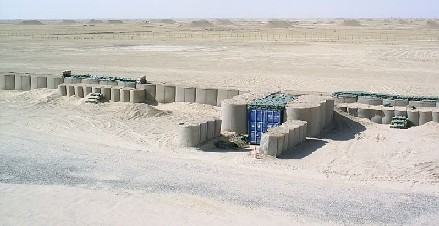
THE AIRCRAFT
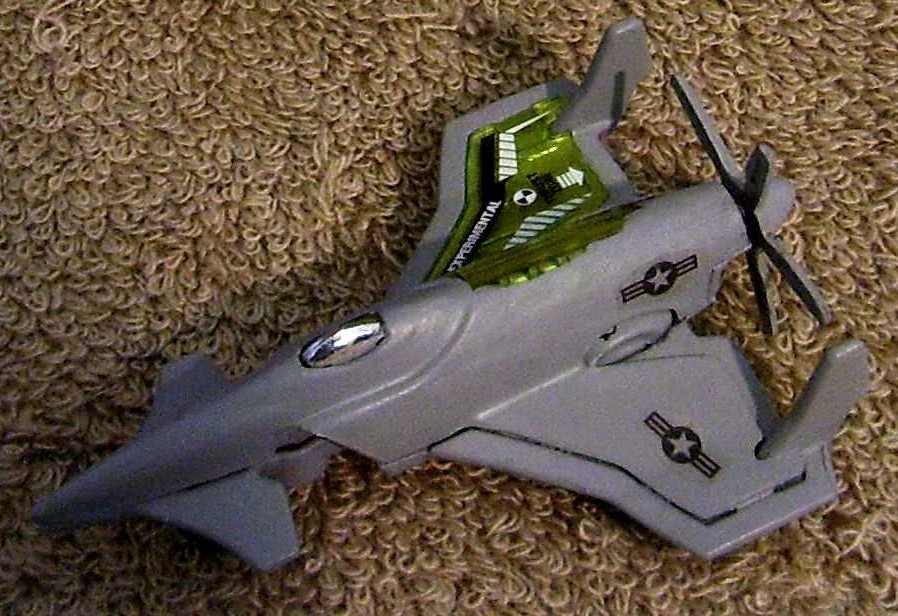
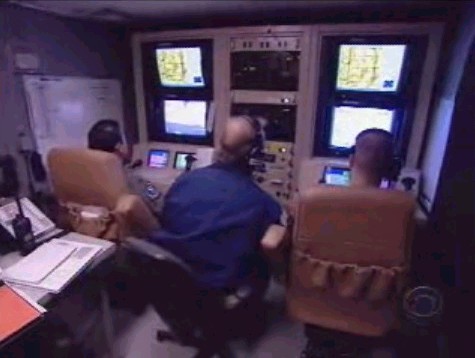
Sadler MILVAMP unmanned/manned combat air vehicle (U/MCAV) is capable of being manned or unmanned from the remote control station inside the BATTLEBOXaircraftTM.

Manned offers the most powerful combination of human and electronic sensors piping back real-time video and GPS targeting into to the ground maneuver commander below in either the BATTLEBOXaircraftTM, the M113 Gavin or even small TVs on infantry Soldier's wrists like the Dick Tracy comics.
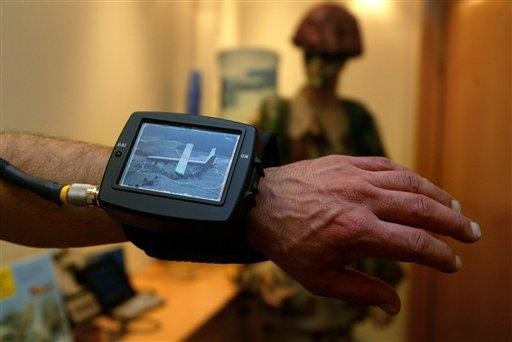
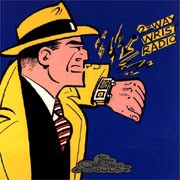
Affordable high-explosive (HE) weaponry for the MILVAMP would be exactly the same as used by the ground maneuver forces like 30mm HEIT shells shot through the M230 chain gun or ASP on top of the M113 Gavin and 60mm, 81mm and 120mm mortars dropped as bombs as legendary military futurist K.P. Rice proposed in 1960 for his L2VMA which became the LARA but the DoD bureaucracy-flawed OV-10 Bronco observation/attack aircraft. 2.75" Hyrdra 70mm rockets should be used by Gavin Force to smokescreen blind enemies and could also be pod-mounted on the MILVAMP like the AH-6 Little Bird and AH-60 Blackhawks and AH-64 Apaches.
In addition to observation/attack, the MILVAMP can casualty evac (CASEVAC) an ambulatory wounded Soldier who if his injuries will permit, can sit up in the observer's right seat.
 youtube.com/watch?v=7nJu3rDeomk
youtube.com/watch?v=7nJu3rDeomk
youtube.com/watch?v=z_jq9g5oBVo
Aircraft ordnance like the beyond-visual range (BVR) AMRAAM and visual range Sidewinder would be carried to ward off enemy aircraft so Army maneuver elements have guaranteed low-altitude air space control.
The MILVAMP uses the same JP-8/diesel fuel as its M113 Gavin prime mover so when one resupply delivery feeds both systems.
THE CONTAINER: BATTLEBOXaircraftTM
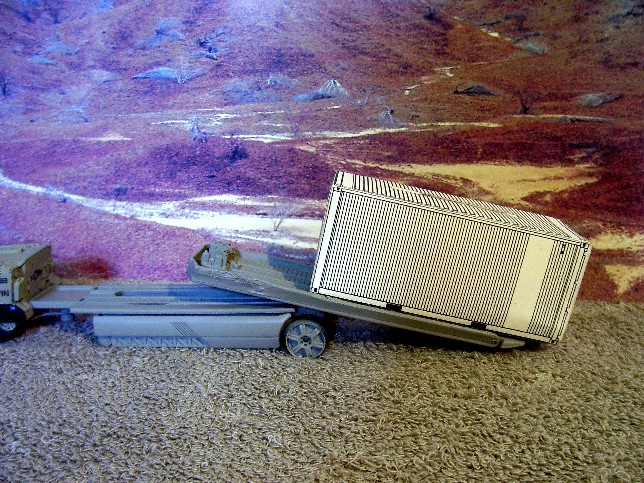
13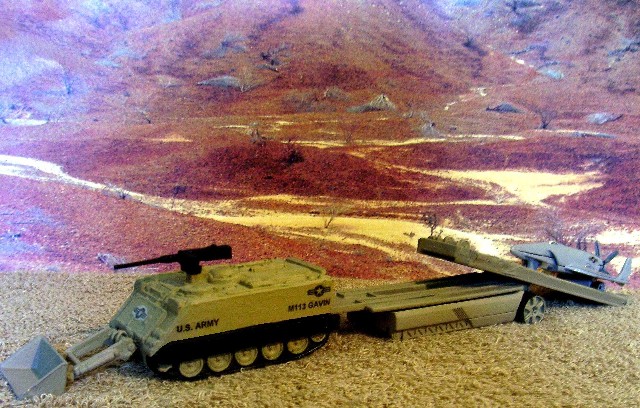
The ISO shipping container BATTLEBOXaircraftTM enables the entire FINAB system to be covertly shipped by land tracks, trucks, railroads, sea container ships and aircraft to any place in the world, ready-to-fight. Once on-the-scene, solar panels can be erected to fully and constantly charge the BATTLEBOXaircraftTM's Lithium-Ion (Li-on) batteries to power its electronics without requiring constant resupply of JP-8/diesel for its back-up generator.
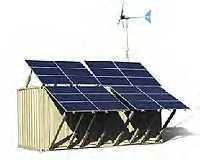
IMMEDIATE LAUNCH OPTION
Aircraft's own power and/or catapult
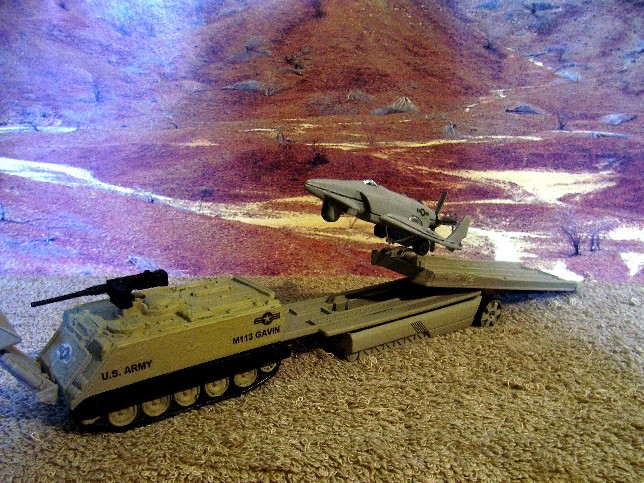
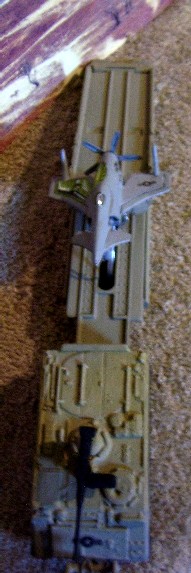
The U.S. Navy for 50 years used to steam and gunpowder catapult-launch seaplane fighters from its cruisers and battleships to scout ahead for the enemy fleet and observe for naval gunfire. Details:
 youtube.com/watch?v=lGpSmisT8Kw
youtube.com/watch?v=lGpSmisT8Kw
The same need exists on land to be an "AeroScout" that catapult launches from ground vehicles--instantly. Its a little known fact but a catapult seaplane could launch faster than a plane from an aircraft carrier.
Aircraft power + JATO (ZEro Length Launch or "ZEL")
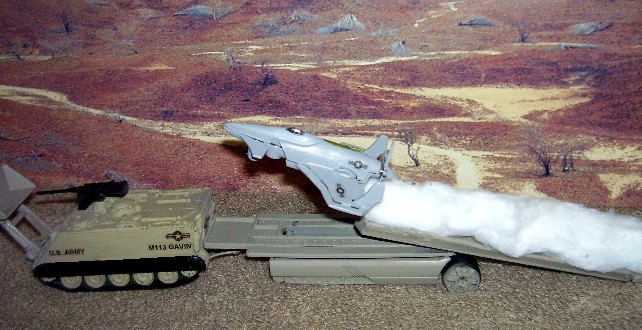
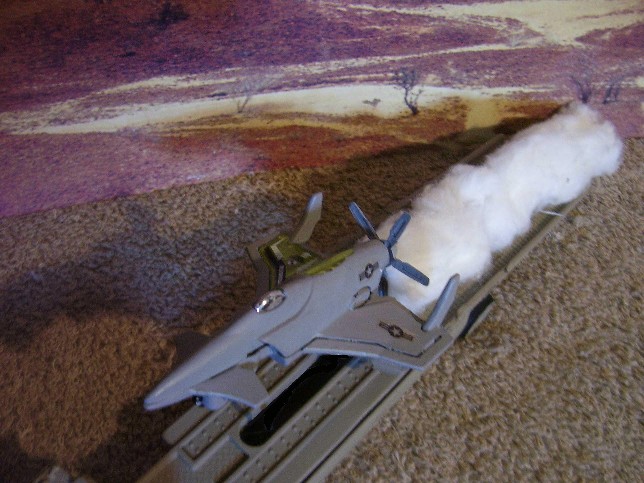
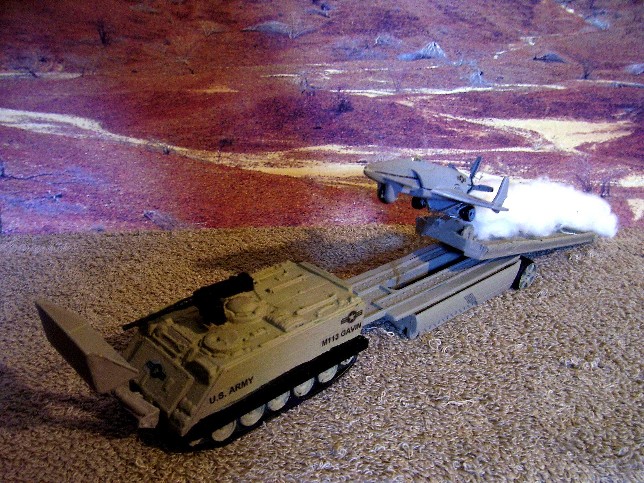
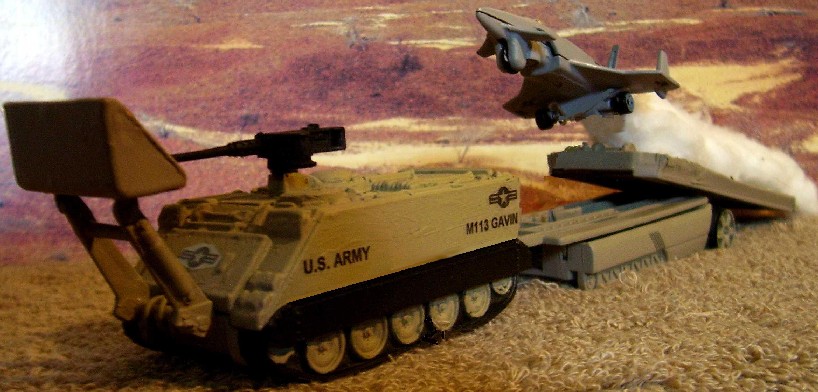
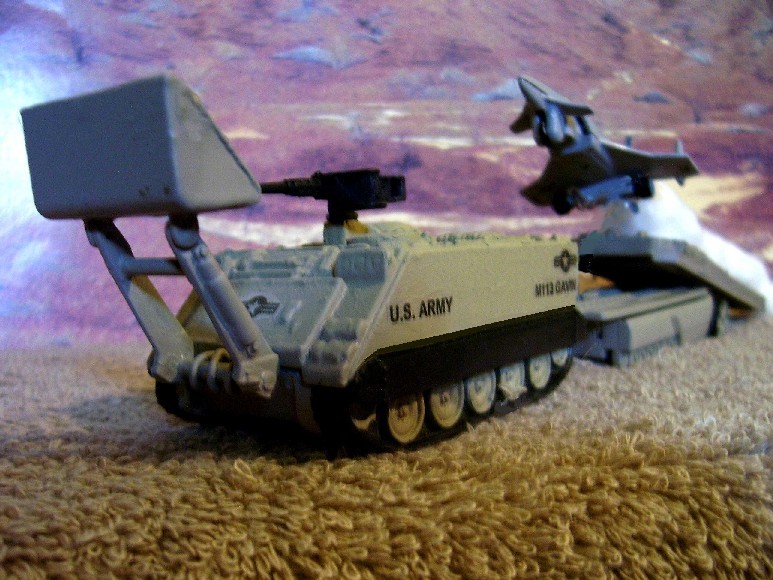
 VIDEOS!
VIDEOS!
youtube.com/watch?v=oImq1glnOds
youtube.com/watch?v=wDstVGAmI74
youtube.com/watch?v=cRg4FKFBpBI
DELIBERATE LAUNCH OPTION
When setting up a Forward Operating Location (FOL), the Gavin can be detached and begin smoothing out a take-off as well as landing strip for the MILVAMP. The BATTLEBOXaircraftTM acts as a maintenance bay and remote control station if remotely piloted and the rollback/tilt bed trailer launcher can still be used to launch the MILVAMP instantly if required before the 300 foot strip is ready.
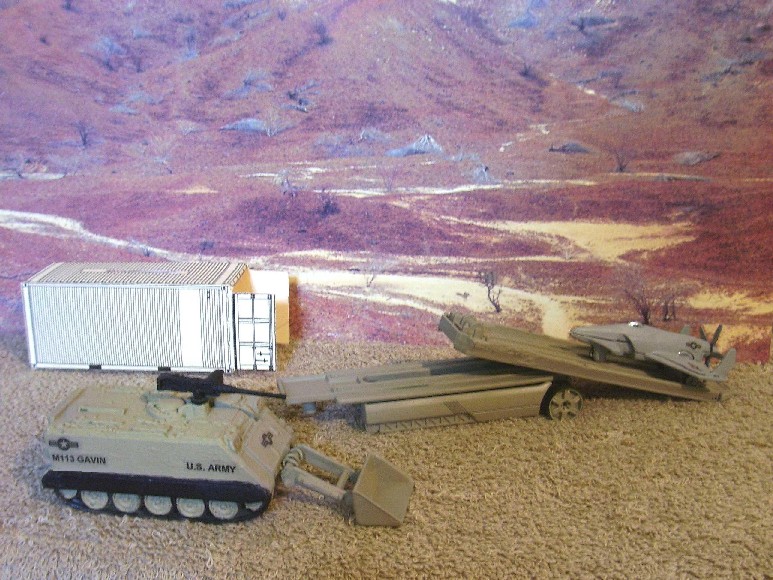
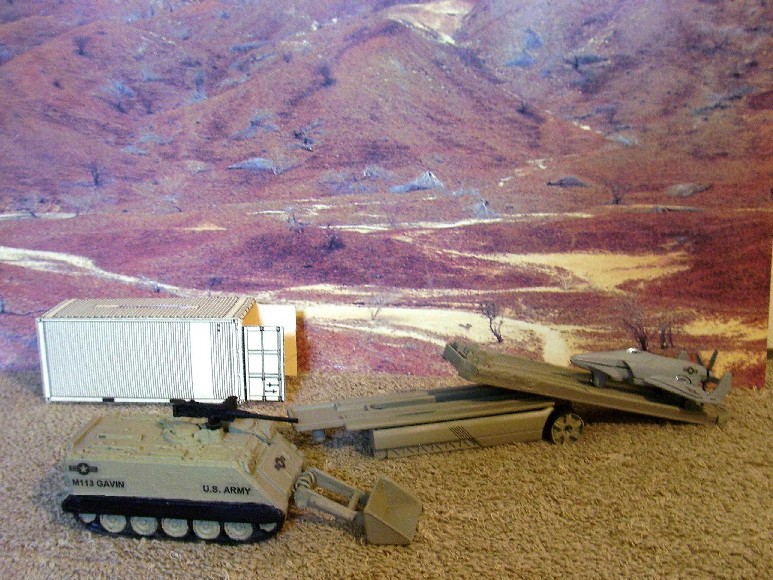
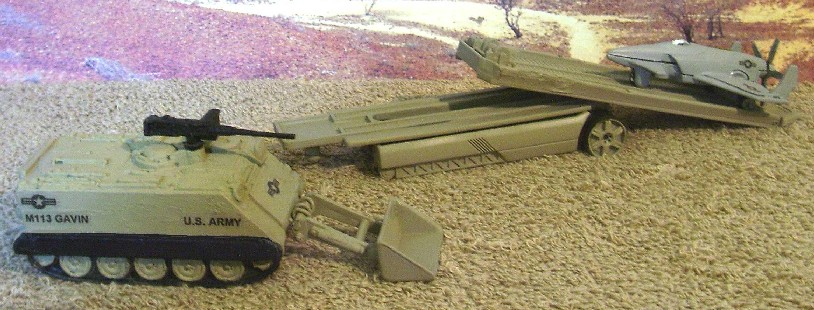
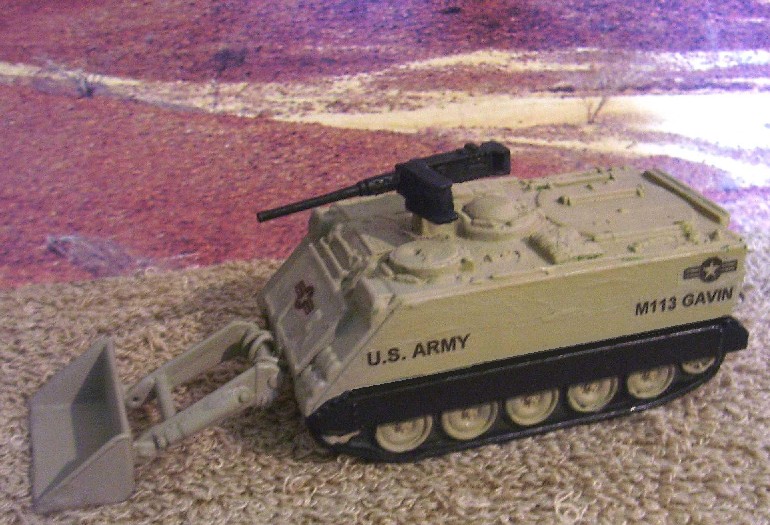
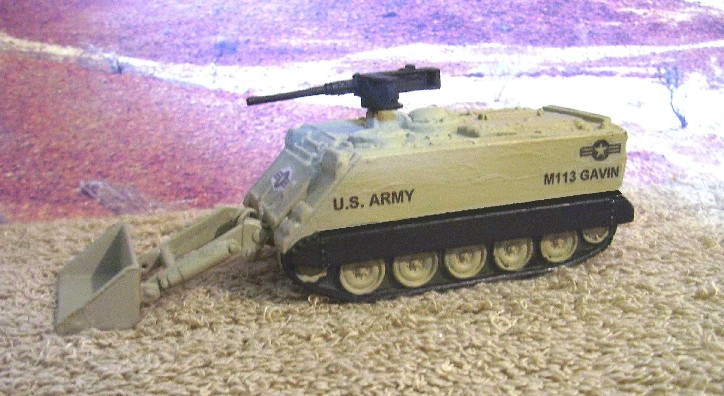
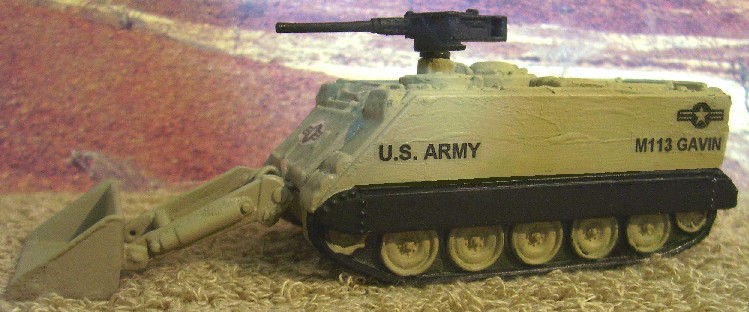
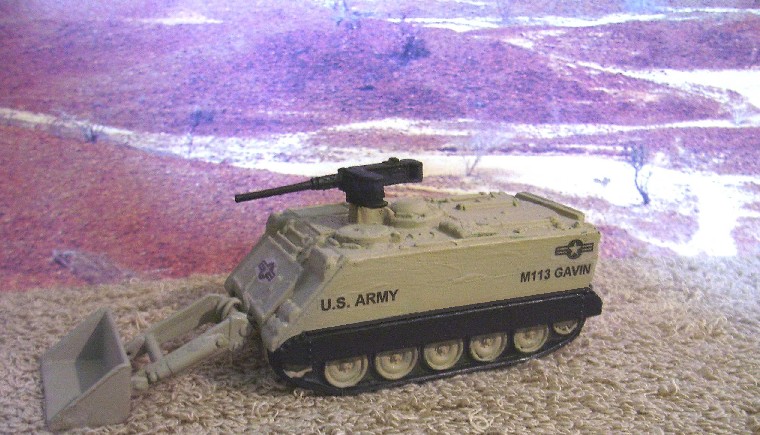
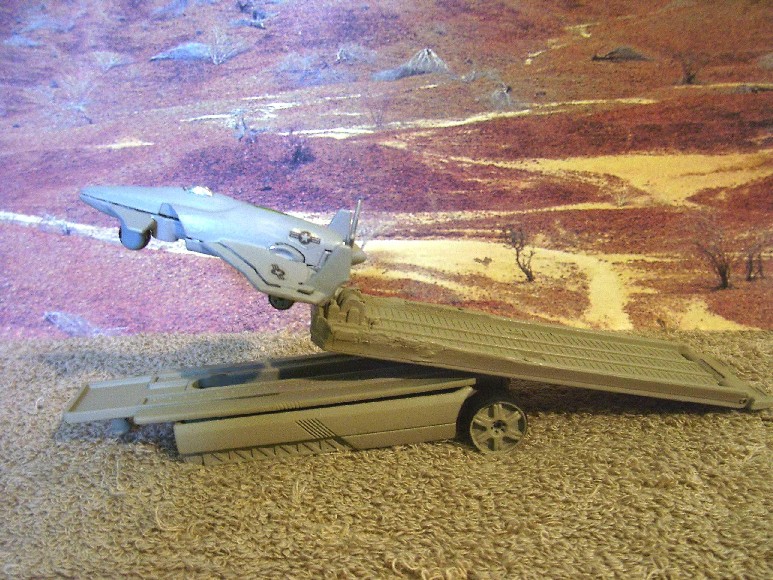
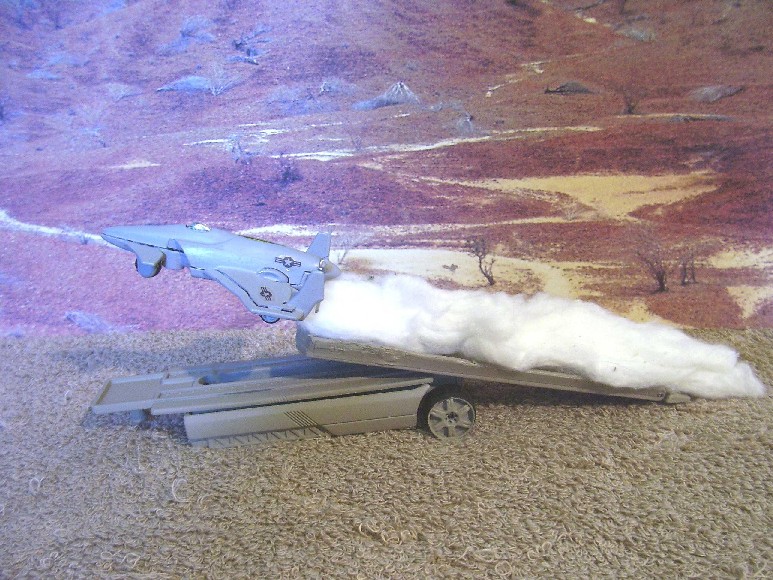
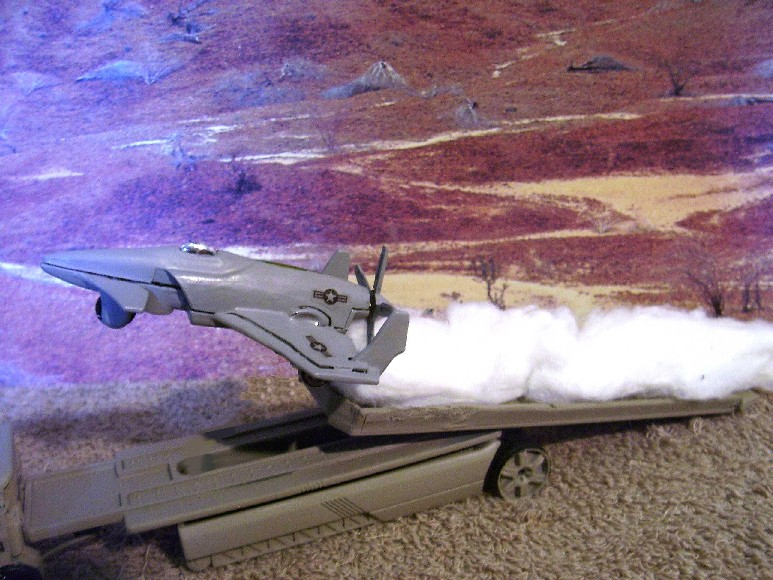
THE SUSTAINMENT
 youtube.com/watch?v=dYUZfd1GjvE
youtube.com/watch?v=dYUZfd1GjvE
THE MEN
 slideshare.net/1st_TSG_Airborne/joint-attack-pathfinder-teams-v10
slideshare.net/1st_TSG_Airborne/joint-attack-pathfinder-teams-v10
To resupply the Gavin Force, affordable Cessna model 208B Caravan turboprop planes would flyout from the FOB and airdrop by parachute or CopterBoxTM 5-gallon plastic jugs of JP-8/diesel fuel and/or water cans/bags and food to the men below to keep maneuvering indefinitely to keep up pressure on sub-national conflict (SNC) rebels or nation-state war (NSW) foes as a light mechanized cavalry.
 youtube.com/watch?v=HKMgPbq79m4
youtube.com/watch?v=HKMgPbq79m4
Killer Bees in the News: Are Light Killer Bees Lethal & Protected Enough?
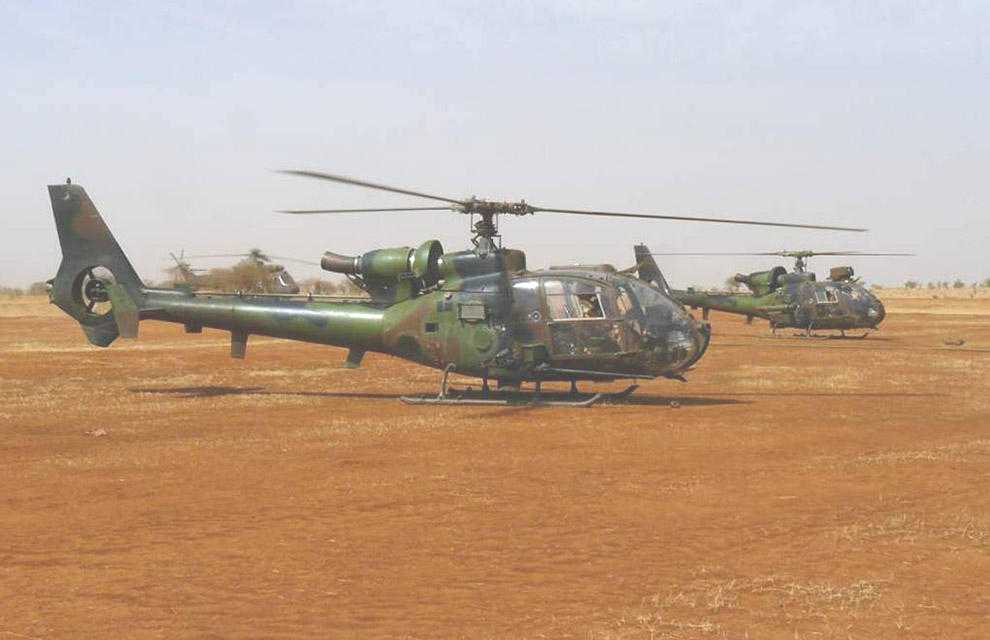
DEFENSE NEWS
January 21, 2013
WorldNewsEarly Lessons From France's Mali Action Emerge
By PIERRE TRAN
PARIS - A single round of small-arms fire hit French Army Lt. Damien Boiteux as he flew a Gazelle attack helicopter over Mali on the afternoon of Jan. 11. The bullet severed an artery in his leg, and although he and his co- pilot brought the helicopter back to base, the French Army Air Corps officer died from his wound. 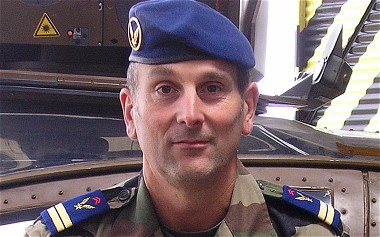
Small-arms fire in the same action forced the pilot of a second Gazelle to land the heavily-damaged aircraft, a defense official said. A third back-up helicopter flying nearby with a rescue team picked up the crew and destroyed the downed helicopter. French forces were able to respond quicidy to Islamist and Tuareg insurgents as they headed toward Bamako in strife-torn Mali because equipment such as Gazelle helicopters were prepositioned in the region. Such light, simple and inexpensive equipment allows rapid intervention, but as the death of Boiteux and the loss of the second helicopter shows, there is a price to pay.
That's just one of the immediate lessons to emerge in the days after French President Franeois Hollande gave the order that unleashed French Air Force Mirages, Rafales and light attack helicopters against two motorized columns of 200 vehicles and 1,200 rebel fighters headed toward the capital.
Besides the pros and cons of light, simple kit, the past few days of fighting have shown that budget-wracked France is still willing to project power, while prepositioned bases and reliable intelligence, surveillance and reconnaissance (ISR) remain crucial, analysts said.
Those themes are emerging as France draws up a white paper on defense and security, prepares for the new multi- year military budget and seeks to relaunch a European defense initiative as a counter to spending cuts.
The Gazelle is an "old chopper" that lacks protection, but France was able to launch into action so quickly because the forces have such light "rustic" equipment said Etianne de Durand, director of security studies at think tank Institut Francais des Relations Internationales.
This shows the advantage of keeping these types of platforms rather than relying totally on modern, sophisticated equipment, which are expensive, heavier and difficult to deploy, he said.
France and other nations must maintain a range of equipment to face not just symmetrical but asymmetrical threats, such as rebel fighters in pick-up trucks, experts said. That simplicity of equipment is linked to quantity.
"You need numbers - troops, planes and equipment," de Durand said. A large number [Killer Bees] of troops is required [to effect control over the Earth and the Enemy], as units need to be rotated, while aircraft and equipment, in numbers are also needed, not just a few high-tech units.
To boost striking power, France is rushing to Mali the Tiger [medium-weight] attack helicopter, which carries armor on the sides and cockpit floor, and a 30mm cannon in a turret, a source familiar with the situation said.
"The Tiger is engaged," Army Col. Thierry Burkhard told journalists Jan. 18. An air mobility unit of around 15 helicopters for manoever, support and logistics will be formed in Mali, he said.
The [light] Gazelle has a 20mm fixed cannon, requiring the helicopter to be lined up directly with the threat to fire, whereas the [medium] Tiger can fly in parallel, with its crew protected by the armored side, and fire from the rotating turret under the cockpit.
The longer range of the Tiger's gun cuts the risk from AK-47s and light machine guns.
The Army is expected to send more than the 5 Tigers deployed in Afghanistan and as quickly as possible.
Power Projection
The Mali campaign, dubbed Operation SERVAL, also shows the need for prepositioned bases in Africa, de Durand said. They cost a few hundreds of millions of dollars and require a small number of troops, but they are cheaper and faster than huge fleets of C-17s and A400M transports, or securing an airport from-scratch.
Following the British military withdrawal "east of Suez" in 1968, France is the only European country with a network of bases in Africa, in its former colonies, and there is talk of drawing down these facilities.
The Mali action shows France is ready and willing to project military power in a post-Afghanistan environment in which people are averse to overseas operations.
"The truth is there will be more and more of them," said Luc Viellard, a director at consultancy Cie Euroeene Intelligence Strategique. But they will be--and must be--short-term rather than long, drawn-out engagements.
In Mali, France could not "lead from behind," limiting its role to providing logistics, intelligence, mentoring and training support for African troops, he said. French troops are fighting in the front line, while European and American allies are restricting help to logistics and intelligence gathering.
Paris' reliance on partners comes as NATO and the EU are looking to pool defense capabilities as a way of coping with the financial crises besetting western economies.
The gaps is capabilities--aerial refueling, transport, intelligence gathering--were highlighted in the Libya air campaign, led by Britain and France.
There's a real question whether there will be guaranteed access to assets such as air-to-air refueling and transport aircraft under the pooling and sharing policy proposed by the European Defence Agency, said Camille Grand, director of think tank Fondation pour la Recherche Strategique. His question: Can countries have confidence their European partners will step forward in times of crisis?
France has drawn on a series of ad hoc arrangements with America and European allies, rather than the European Air Transport Command at Eindhoven, the Netherlands, Grand said.
Countries including Britain, Belgium, Canada and Denmark have pledged transport planes to help France. Germany is not helping France directly--but said it would send 2 C-160s to airlift African troops from a planned 3,000 strong military mission to support the Malian government.
De Durand said the lesson from Mali is: Do not rush into multilateral arrangements, but avoid pooling and sharing whenever it restricts a capability to act quickly. In a crisis, there is little time.
"The aim should be to leverage European cooperation to increase defense capabilities - in other words, more Europe for more capabilities, not the other way round," de Durand said.
The defense white paper, currently being written, was looking at recommending big cuts in defense spending. Mali is a warning to limit those reductions, de Durand said.
ISR Needs
The Mali action also shows the importance of intelligence-gathering capabilities.
"They are a real force multiplier," Viellard said. "They allow planners to decide the where, how, what volume of intervention."
Over the Sahara, France operates an optical military satellite system for imagery, Air Force jets with reconnaissance pods and the French Navy's Atlantique 2 (ATL-2), a twin-engine aircraft designed for maritime patrol but used as an ISR system, Harfang medium-altitude, long-endurance UAV systems are also to be deployed soon, Viellard said.
But this is not enough, and planners need a sustained presence over the area. Because of budgetary pressure, low- cost solutions have to be considered.
"The ATL-2 used as an ISR platform in Mali is a stop-gap solution. They are good aircraft and some of them are now equipped with a new surveillance turret, but new-generation equipment is needed," Viellard said.
One possibility is a system of roll-on, roll-off pallets of sensor equipment for transport aircraft such as C-130, C-160 Transall or A400M.
The 2008 white paper on defense and security pointed up the significance of anticipation andue intelligeuce gathering. "We need to continue. Mali shows an effort needs to be made" Viellard said.
ptran@defensenews.com
The recent death of a French pilot in an unarmored but rapidly-deployed Gazelle observation/attack helicopter by a mere 7.62mm AKM bullet during Operation SERVAL now underway in Mali to steal the gold there to cover-up for the ingenious theft of Germany's gold while in U.S./French banks by switching out the real gold with phony gold-plated tungsten bars:
 youtube.com/watch?v=OlR9OEQzfU0
youtube.com/watch?v=OlR9OEQzfU0
...begs the question of our Killer Bees concept presented here on this web page:
combatreform.org/killerbees.htm
Are Killer Bees armed and protected enough?
Get There Fustest with the Mostest, or is it Leastest?
The Killer Bee concept can be traced back to WW2 with the British mass-producing uber excellent Mosquito fighter-bombers made of easily available wood, watch the full 1969 movie below:
Mosquito Squadron: RAF Wooden Fighter-Bombers vs. V-1 "Buzz Bomb" Cruise Missiles (UAVs)
 youtube.com/watch?v=pYOihw-6m-U
youtube.com/watch?v=pYOihw-6m-U
007 connections galore in this movie; Charles Gray plays Air Commodore Hufford ordering the secret strike against the new German missiles was in "You Only Live Twice" and "Diamonds are Forever", Vladek Sheybal of "From Russia with Love" plays a LT and of course David McCallum was in the Man from U.N.C.L.E. which was an Ian Fleming-inspired TV show!
The Killer Bee concept can also be seen in their Bren light machine gun tracked carriers delivered by wooden Hamilcar gliders. When the incompetently-led 1st Airborne Division landed 6 miles away from Arnhem bridge, they neglected to bring Tetrarch light tanks and enough Brens though they were available to punch-through light German resistance to consolidate on the bridge and hold it long enough for XXX Mechanized Corps to link-up; causing WW2 to drag on for another bloody year and resulting in Stalin's Communism to dominate most of Eastern Europe for 40+ horrible years. Details:
combatreform.org/airbornetanksnoexcuse.htm
After WW2, the U.S. Army considered making every Soldier a Killer Bee by making him fly with a back-pack aero unit or a small helicopter to swarm like Paratroopers do; but when technology was on the verge of making this practical, as a corrupt bureaucracy, it chose instead to fly men a squad-at-a-time in a larger aircraft that would suck up the maximum tax $$$ dollars from the American sheeple and their bought-off-by-corporations Congress. Though LTG Gavin did not want the aviators flying these aircraft to go off into their little corner and play the snob, this eventually happened in 1983 when Army Aviation Branch was born--and now we can't get squat for air support. America's Soldiers are ground-bound again, begging the question that maybe we would be better off Doing-It-Yourself (DIY) rather than relying on a separate selfish bureaucracy as was proposed in the first place!. Carlton Meyer when he asked this question several years ago was spot-on that maybe 1, 000 Killer Bees would be better and have a greater SYNERGISTIC EFFECT than 100 bloated, fuel-laden targets packed with 10 men each asking to be exploded in flames?
Medium-to-Heavy: Will They Fight--or Just Sit and Drain Resources?
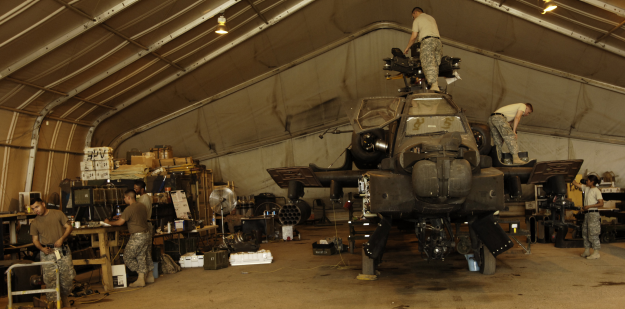
Bitter critics of such a Killer Bee concept will whine about the platform-vs-threat match-up and ignore the numbers effect. Fine, we will overlook the swarm effect for the sake of argument and examine the worst-case scenario where its one Killer Bee platform versus the enemy. The critics will contend to get overmatch at the platform level it can't be a light Killer Bee, it has to be a medium-to-heavyweight monstrosity so all kinds of gadgets and weaponry can be packed inside--which conveniently drives the costs up to where we can't even afford them--which should make the issue moot--but since military men are not getting rich (at least not while on active duty) from these expensive cash cows, they get the Sitzkrieg hanger and motor pool queen dependent upon the bureaucracy to mother may I? to allow them to play with them or not. A built-in excuse of costliness conveniently results in these too-heavy and complex machines sitting in pretty rows and the military co-dependent then gets to waste his day mowing lawns, playing on desktop computers making perfect paperwork; a digital version of the 1940s "From Here to Eternity" stab-your-buddy-in-the-back garritrooper BS. Read Larteguy's "The Army in which I would like to fight" for a description of how mechanical advantage means can be used to sit on one's ass:
So what we get is the first time we actually employ our too-costly-to-practice-with, medium-to-heavy war toys is a first-time learning curve; TOW missiles sitting in storage for years go splat or fly off in crazy directions, helicopter pilots can't do diving attacks but have to hover to shoot, others settle under power and crash like the MH-60 StealthHawk did during the raid into Pakistan to kill a Bin Laden relative in 2011. So let's go back to our LIGHT Killer Bee as a platform and examine why it can or can't be made to overmatch at the platform level; realizing we might actually be able to operate them before the war and get highly skilled using them.
Light: Is it Protected Enough?

Critics of LIGHT anything will always use the worst strawman example they can find to disparage the whole idea. If its a light tank, they will say what happens when that M551 Sheridan with 152mm beehive shell in its stubby short gun tube runs into that fully-equipped T72 with a 125mm main gun? They will demand 3 things in overmatch--mobility, firepower and protection. They want that Sheridan to be more mobile than the T72 (it is), having greater firepower (maybe if it uses the Shillelagh missile) but the thing they really lust for--since they are Type B personality cowards--is overmatching protection--they want to in the worst case be able to withstand a direct hit of the enemy's 125mm main gun--which means only a 40-ton M1 Abrams chassis (turret is 30 tons) composed of Chobham and depleted uranium armor will satisy them. Such sheeple don't really need to be in anyone's army but if we have them, then stick them in some main body where they can hide in a heavy tank amongst hundreds and thousands of others who they hope will get hit by enemy fire--and not them. A Killer Bee force is a CAVALRY--Type A personality men who can handle making first contact with the enemy in a platform more mobile than the main body so as to ascertain what the enemy is doing and then relay this information to commanders so they can steer their entire force packages to decisive effects. A CAVALRY platform is not going to likely be able to withstand an enemy main gun hit; this is the trade-off for greater mobility. Notice I said MIGHT, the truth is that even a Killer Bee can be made impervious to an enemy main gun direct hit in some cases. The real question is does a LIGHT Killer Bee platform have to be fatally wounded by mere small arms fire as the Gazelle scout copter is? Or must we go up in weight to medium and hard-to-deploy to not have a glass jaw?
No. A thousand times no!
Even a scout helicopter can and should be at the very least small-arms fire resistant using lightweight composite armor panels available today--can we do this and still have a payload using Carlton's easy-to-maintain piston engines in a helicopter? I think so. Read the DoD publication below to see how lightweight armors are available for even LIGHT Killer Bees to be small-arms fire protected.
 scribd.com/doc/123665379/Aircraft-Survivability-Spring-2007
scribd.com/doc/123665379/Aircraft-Survivability-Spring-2007
Imagine a liquid-cooled DeltaHawk or better yet an air-cooled, diesel piston engine powering a Bell 47G (OH-13) with a Lockheed-Martin rigid rotor system from the AH-56 Cheyenne and a pusher ducted fan and wings for speed. Since Bell are closed-minded pricks and not likely to do anything that makes combat sense or saves taxpayers money, then certainly turbine-engined AH/MH-6 Little Birds with either NOTAR or ducted fans/wings--with rigid rotors could be made into bullet-resistant, 300 mph, hard-to-hit Killer Bees. Some folks in Florida realize this with their "HueyWasp" 1-man observation/attack helicopter:
generalequipment.info/HUEY%20WASP.htm
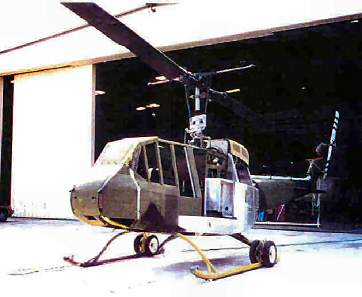
"IT WILL BE HIGHLY DESIRABLE TO ARMORPLATE CERTAIN VULNERABLE PORTIONS OF THE ROTORCRAFT. RECENT EXPERIENCES OF HOSTILITY HAS INDICATED THE NEED FOR ARMOR AROUND THE ENGINE, PILOT AND CERTAIN OTHER COMPONENTS. IT IS CALCULATED THAT ABOUT 1,000 LBS. OF THE OPERATING WEIGHT CAN BE DEVOTED TO ARMOR PLATING OF AMPLE THICKNESS TO TURN A 7.62 MM RIFLE BULLET AT CLOSE RANGE."
There is also absolutely no question that fixed-wing STOL grasshopper O/A planes like a Pilatus PC-6 or the 300+ mph PC-12 could be fitted with lightweight armors resistant to even larger bullets than 7.62mm shorts shot by AKMs--full-sized .30 caliber slug protection is possible without having to hang heavy 1/2" sheets of steel over the underside like the fabulous Russian IL-2 Stormovik did with low technology.
On the ground, a Killer Bee light tank already comes machine gun resistant and can easily be autocannon resistant by applique' armors and a RPG pre-det screen which automatically helps thwart heavy machine gun bullets. GUIDED munitions--a missile can be defeated by an active protection system (APS) like the Israeli Trophy or IronFist and should be fitted to both tanks and helicopters/fixed-wing aircraft to defeat SAMs. These systems are feasible for light, Killer Bees without eating up all their payload. A light tank can even be fitted with Chobham panels so they can indeed--withstand even a main gun direct hit as the British learned with their Warrior MICVs in Gulf War 1. Unlike an aircraft, a light tank can carry the same armor weight/quality as a larger tank can have--it just needs less of it to cover its smaller size. If more power is needed, a bigger engine and suspension can be retrofitted. Granted, aircraft cannot be so easily upgraded by just adding more power since they must fly--not just be propelled forward on the ground. The aircraft is going to have to evade an enemy main gun direct hit by avoiding DETECTION, if that fails, AVOIDING BEING HIT whereas the light tank still has the possibility of AVOIDING PENETRATION to not be killed if it does get hit. A light tank can economize in its design to put every ounce of payload to work in its armor by first being tracked--28% more space/weight efficient than wheels--and not have a turret--46% efficiency saved. The amazing success of the German turretless STUG light tanks in WW2 proves this--even if we don't want to admit it.
combatreform.org/infantrytanks.htm
Light: is it Lethal Enough?
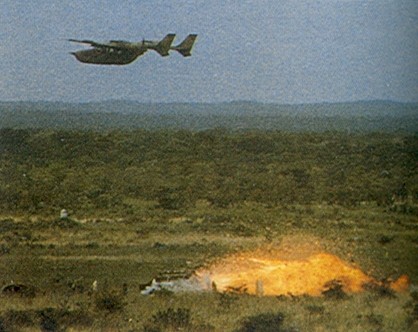
scribd.com/doc/123205838/75th-Rangers-Need-Light-TANKS
"My conclusion is that in some very possible scenarios, our lightest, most trained and deployable units cannot generate enough combat power to do what is expected of them. Rangers in all scenarios studied have NOT over- matched their opponent by virtue of deployed weapon systems with the ground force. In every case, each side had comparable small arms. Each had rifles, machine guns,and rocket launchers and most had mortars. Clearly, there was no weapon system with the Ranger force that ensured overwhelming combat power after reaching their target. Mass, while not an element of combat power, may have produced overwhelming firepower but only in two cases (Grenada and Panama). Clearly, the mass that would have facilitated a firepower advantage was not a luxury in the planning of Operation EAGLE CLAW or in Somalia.There is no question that armored vehicles would give a decisive advantage to Rangers in urban terrain. From a firepower analysis of Somalia it is clear that the Ranger force was counting on surprise to enhance its firepower and decrease that capability of the enemy. It is also clear that after the limited advantage that surprise gives had been negated the Ranger force never achieved fire superiority. Rangers were armed with small arms just as the Somali's and had no particular advantage in this area. Additionally protection and maneuver favored the Somalis. They used the protection of urban terrain to negate the effects of helicopter-mounted small arms. An armored vehicle system, whether a fighting vehicle or a tank could provide the necessary combat power this study recognizes as a Ranger shortcoming. In a constraint-fiee environment a vehicle package consisting of both types of vehicles might be optimal. My recommendation is that armored vehicles accompany Rangers during forced-entry operations. These vehicles should accompany the Ranger force and should not be employed as a follow-on force. The introduction of armored vehicles nearly simultaneous with Rangers during forced-entry would significantly increase the firepower capability of the Ranger force, provide a greater maneuver capability, increase the timeliness and accuracy of critical information to leaders and protect the force. Mission success is also enhanced by giving planners one more capability to work with and the enemy one more capability to worry about."
--Major Scott Hume in "Armored Rangers: Does the 75th Ranger Regiment Need Armored Vehicles to Enhance its Forced-Entry Capability?" 1999 CGSC Master's Thesis. Red entire Report below:
scribd.com/doc/123205838/75th-Rangers-Need-Light-TANKS
The Ranger officer's quote above eloquently describes the mess our foot-mobile commandos are in when they lack a light tank Killer Bee to lead them in the face of enemy fires (obvious WW1 lesson that should not have to be relearned again). The light tank Killer Bee can rapidly deploy with them by fixed-wing and rotary-wing aircraft. However, note his observation about the helicopter's lack of enemy suppressing firepower using current puny 2.75" rockets and 7.62mm medium machine guns. The 30mm autocannon on the AH-64 Apache medium-weight attack helicopter has broken the back of many enemy's will to resist re: Battle of Wanat--but its not a Killer Bee and you can't get it there easily with your first-to-fight. In Vietnam, even after reining-in helicopter-delivered light infantry to just wherever short-range 105mm howitzers could prep fire Landing Zones, smokescreening the edges of these areas and having helicopter gunships try to suppress with their weak armaments, often USAF fighter-bombers would have to be called-in--usually by an Airborne Forward Air Controller (AFAC) in a grasshopper STOL fixed-wing aircraft--to actually suppress the enemies enough so troops could safely airland. What are the USAF fighter-bombers doing that our helicopters are not doing?--notice I didn't say can't...
Fighter-Bombers drop BOMBS.
Either large amounts of high explosives or really nasty jellied gasoline fire bombs aka "napalm". But you don't need a jet fighter-bomber to drop bombs or napalm. The picture at the sub-heading of this passage is a Rhodesian Cessna 337 (USAF O-2) dropping napalm and a very small Fletcher Defender FD-25 with a napalm cannister ready for a flight test is below:
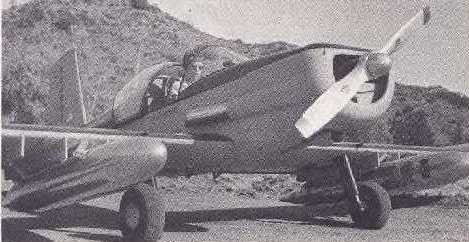
Moreover, we even dropped napalm cannisters from UH-1 Huey helicopters during Vietnam as the picture here proves.
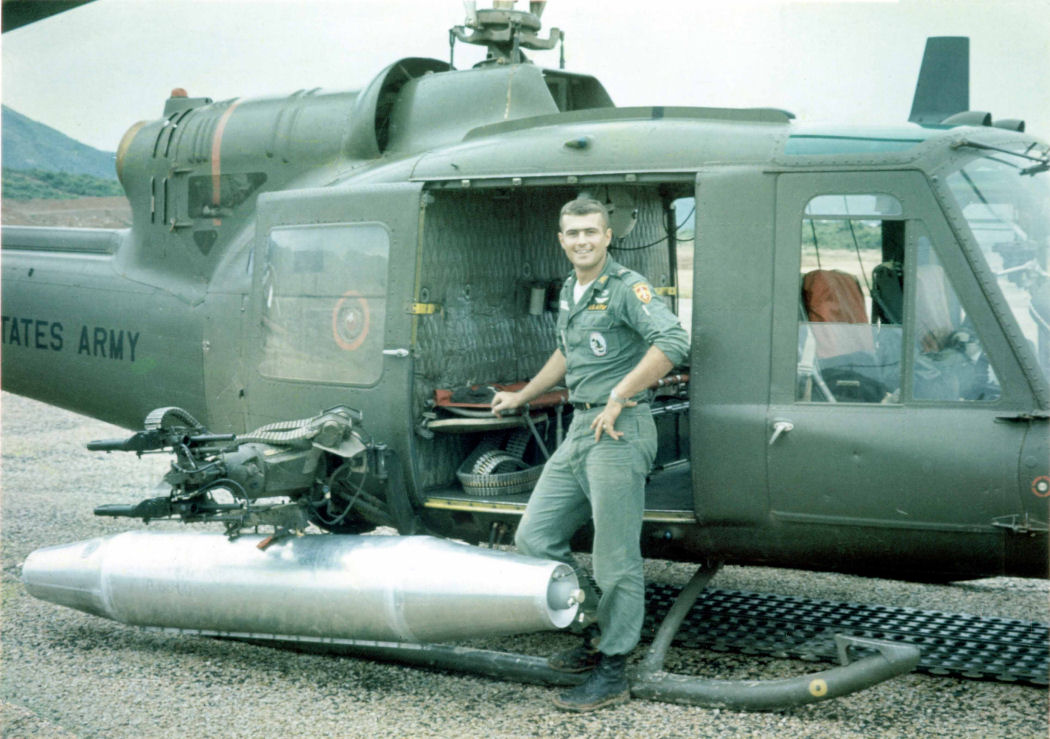
The Lebanese Army's helicopters dive-bomb. So even if napalm is too nasty and no longer allowed, from a physical perspective if your Killer Bee is robust enough--even if its a helicopter it can drop bombs.
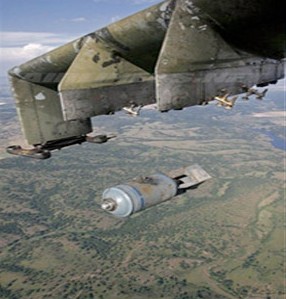
The Russian Mi-24 Hind helicopter can drop bombs from its stub wings and so could our AH-64s/AH-1s if we tried--which we are not--and its no surprise then that our M/CH-47 Chinook helicopters are getting creamed by RPG gunners landing in Afghanistan into LZs where no or inadequate prep fires are rendered. The result was to make Chinooks into their own gunships during the Vietnam war and to even strap 105mm howitzers to them in order to DIY your own LZ prep fires.
combatreform.org/superchinook.htm
Therefore, Little Birds with ducted fans and wings should have underwing hard points for at least 250 pound bombs to be dropped in diving attacks followed by pulling away so as to not overfly the enemy's guns--but if they are hit their lightweight armors should protect them.
combatreform.org/piaseckivtdp.htm
The same bomb-dropping capabilities are a given from armored fixed-wing aircraft like PC-6/12s and the Thrush Vigilante 2 or AirTractor Model 802U.
Another vital addition to the aerial Killer Bees would be a belly-mounted 30mm recoilless autocannon so they could blast targets without having to dive onto them at all--the OV-10D NOGS had a 20mm cannon and the AH-56 Cheyenne's 30mm belly cannon demonstrate this best for both types of platforms. Could the French Gazelle replace its fixed 20mm cannon with a 30mm under its belly? It seems all it would need would be longer skid landing gear for clearance. Same applies to our Little Birds and OH-58D Kiowa Warriors. Certainly fixed-wing Killer Bees like the PC-6, PC-12, armored crop-dusters or the Army's EMARRS Beech KingAir 350s could have 30mm belly cannon--just like we proposed years ago as the "OV-12".
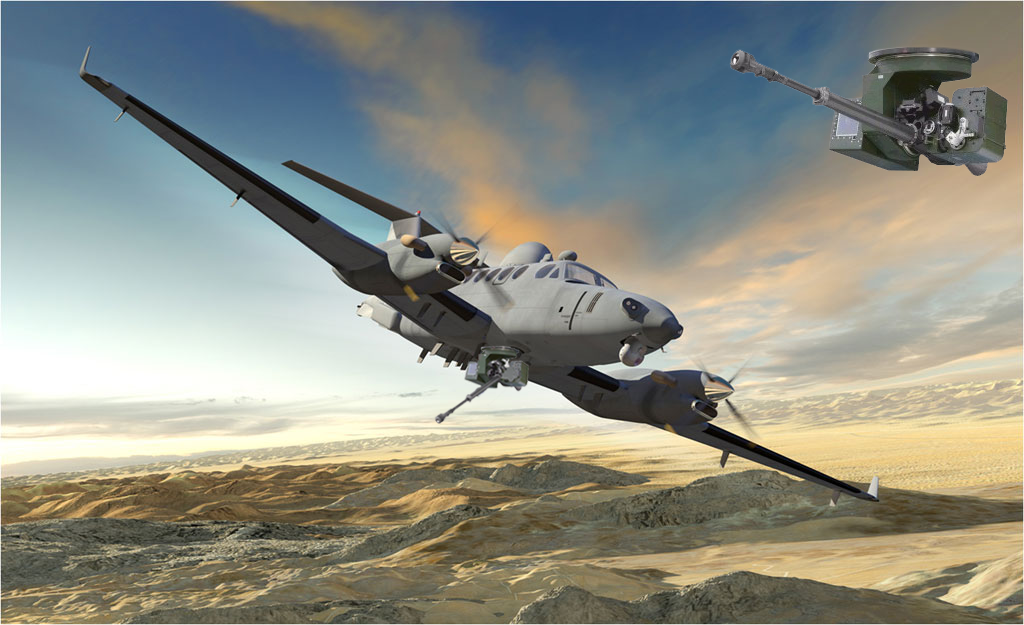
The C-27J is being turned into a MC-27J mini-gunship but first, the Army has to evade USAF bureaucratic back-stabbing to get such aircraft in service since the latter neither wants to fly them nor let the Army DIY.
scribd.com/doc/124882911/MC-27J-Spartan-Mini-GunShip-Testing
GO TO PAGE 2 OF THE KILLER BEES!: Clean-Sheet Designs
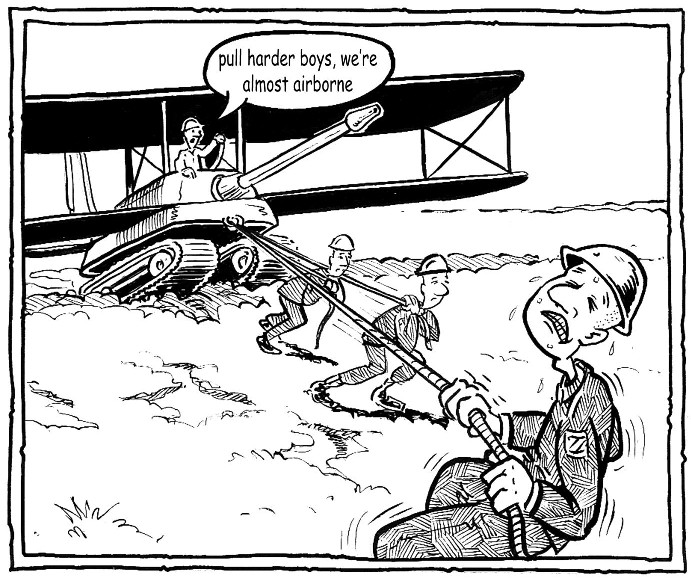
FEEDBACK!An Afghan Army vet writes on the Sadler Piranha/Vampire aircraft:
"This would be a great concept in Afghanistan just to have something a little more reliable in thinner atmosphere than rotary wing at the local level..."
CAS expert Chuck Myers writes an important conclusion to why this concept must be an integrated Air/Ground Cavalry:
"Its important to recall that my concept (Maneuver Air Support) evolved from scores of interviews with ground combat veterans and pilots who had significant air support experience and led to my definition of air support for small forces engaged, or who want engagement or are trying to avoid it. Solution is the Continuous Overhead Presence (COOP) of a Joint Air Attack Team composed of a Spectre and a number of fixed-wing ASPs (Agile/Survivable/Potent) flown by trained/experienced pilots who have had extensive practice WITH the ground combat element they are supporting (unit cohesion).
The path to this includes insistence of Army (especially light armor and infantry) folks who understand and will demand it".
An USAF MSGT writes:
"The laminated wood construction actually makes the Mosquito the first major "composite" airframe, though ancestors can be found like the fuselage of the WWI Albatross. The fuselage mould construction and heating the glue with 'radio waves' (the first microwave curing??) are interesting too.
It is a myth that composites require highly skilled people to work them. Thousands of fiberglass boat hulls prove otherwise, not to mention the Experimental Aircraft Association homebuilders. Wood is an interesting option, but composites are more controllable and easier to customize. Of course with either wood or synthetic composite the adhesives used for field repair ought to be curable under a broad range of temp and humidity.
Nice Albatross interior pic:
nasm.si.edu/research/aero/aircraft/images/albatross1.jpg
Updated ARES link:
scaled.com/projects/ares.html
Still need fixee:
'If on the other hand, we used an automobile piston engine to propel a fixed-wing attack U/MCAV we could fly them for years at a time with operator PMCS without having to constantly rebuild them, saving millions of dollars.'
Operator PMCS usually means 'dead vehicle', unless the operator is also a mechanic.
We could fly them for reasonably long lifetimes with economical field maintenance, but G.I.s ride equipment hard and put it away wet. The GOOD news is that the still-frequent rebuilds will be much easier! If the engine had replaceable cylinders or cylinder liners a 'master rebuild kit' (crank kit, heads, etc) in a box would get you a fresh engine with little fuss. I could fit enough gear to overhaul piston engines (and spare engines) in a 20ft ISO, though a 40ft (which I actually have as a personal shop) is much nicer.
newaymfg.com/frame.htm
These have been out for many years and work great. The hand-crank version requires no power and is easy to use with Neway cutters, valve guide reamers, and guide installation drifts (call it a briefcase-worth of stuff) you can refresh cylinder heads easily if you are out of spares.
Again, once you have simple aircraft, what was OM can be done in the field or at least closer to it."
An USAF AC-130 gunship pilot writes:
Military Aviation
Naval Aviator:
On a carrier, the Naval Aviator looks over at the Catapult Officer ("Shooter") who gives the run up engines signal by rotating his finger above his head..
The pilot pushes the throttle forward, verifies all flight controls are operational, checks all gauges, and gives the Cat officer a brisk salute, continuing the Navy/marine tradition of asking permission to leave the ship.
The Cat officer drops to one knee while swooping his arm forward and pointing down deck, granting that permission since he's sober enough to at least hold his hand up to his face without harming himself, he must be coordinated enough to fly. The pilot is immediately catapulted and becomes airborne.
Air Force:
We've all seen Air Force pilots at the Air Force base look up just before taxiing for takeoff and the ground crew waits until the pilot's thumb is sticking straight up. The crew chief then confirms that he sees the thumb, salutes, and the Air Force pilot then takes off. This time-tested tradition is the last link in the Air Force safety net to confirm that the pilot does not have his thumb up his ass.
Army:
If you've ever seen an Army helicopter pilot preparing for takeoff, you will note that the pilot gives the ground guy a thumbs up before he is given hover and takeoff signals. There are two theories about the origin of this gesture. One is that it is to show that the pilot has identified which of his fingers is the thumb so that he will be able to properly operate his controls. The most compelling theory says that this is to show the ground crewman that the pilot indeed knows which direction is up.
Jack E. Hammond
To: itsg@hotmail.com
Subject: Your Fighters-in-box webpage
Date: Sat, 18 Mar 2006 03:14:07 -0800 (PST)Ref: Your "Fighter-in-Box" webpage
"Dear Sir,
First I would like to state you have did a great job with that webpage bring to the public a concept the U.S. should seriously consider -- ie we are fast buying new combat aircraft that cost more than their weight in gold. A few comments you might find useful:
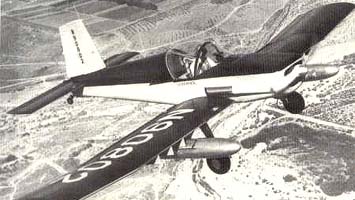
The original concept was pushed starting in 1944 till 1956 by a Lockheed engineer by the name of John Thorp. He even developed and built an aircraft based on the concept, the Fletcher FD-25. It was a small single engine dirt cheap ($25,000 dollars each in 1950 dollars with a lot production of 200).
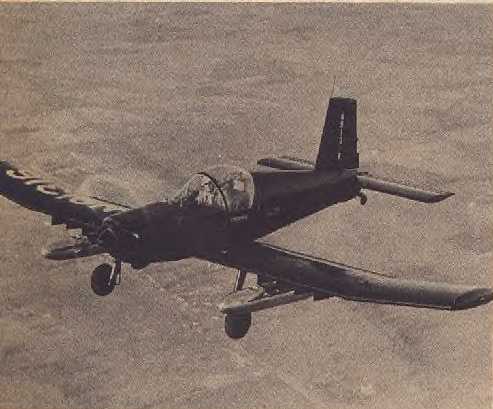
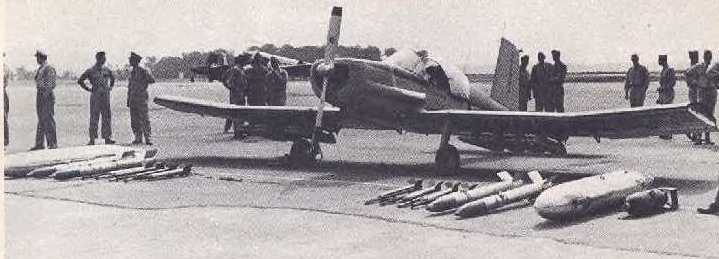
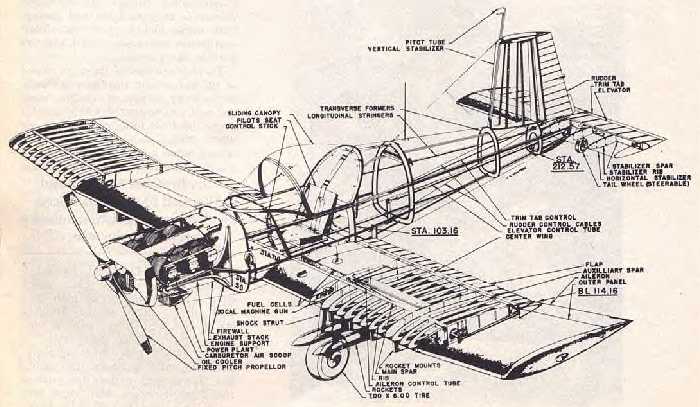
It mounted two .30 caliber [medium] machine guns and could carry two 250lb bombs or napalm tanks or four 5 inch rockets.

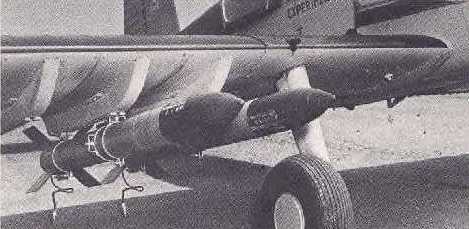
The opinion was that any good back yard mechanic could keep it flying and as for pilots any Tijuana Teenager could fly it -- ie Thorp deliberately designed it to be easy to fly from short, unpaved airstrips near the front line.
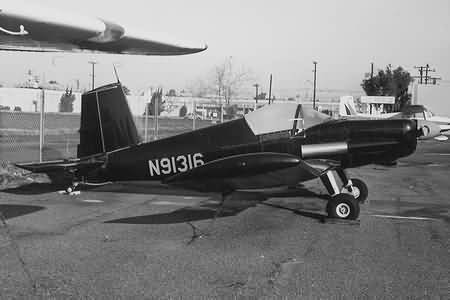
He also designed it to hide its exhaust and in later development to have a lower noise level prop (ie something the USAF to its surprise found out that low noise level was important when forced to test the PA-25 Enforcer against the A-10A Warthog in the early 1980s). I am going to scan a great article about John Thorp and the FD-25 Defender (ie; the concept was proven by the North Koreans using PO-2 Russian trainers in the Korean War and the Iranians have equipped their Revolutionary Guards Air Force for the same kind of air guerrilla warfare).
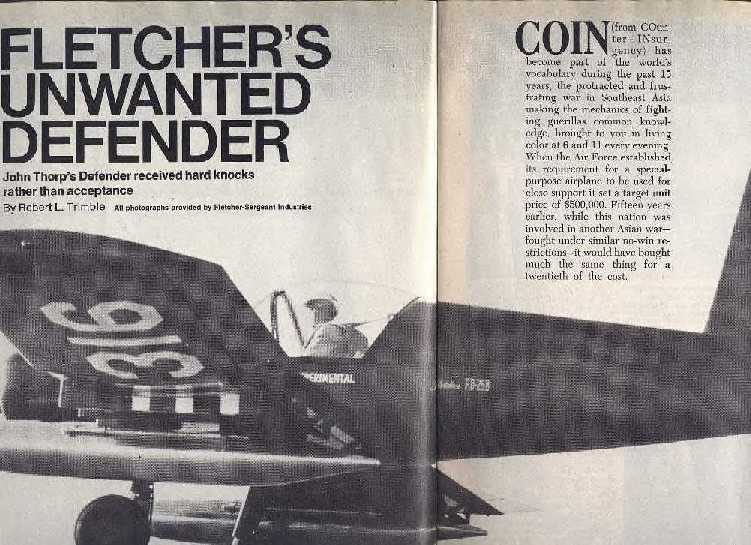
Pilots for the U.S. Army and marines who saw demonstration of the FL-25 wrote glowing reports on it (ie both services stated that the USAF was risk adverse with their expensive aircraft being used against small OP bunkers, etc) and wanted to set up evaluation squadrons of the FL-25. The USAF killed any thoughts on the subject using the Key West Accords and so both service switched to expensive and complex armed helicopters.
Later Thorp designed a larger tri-gear version of the FL-25 called the FL-24 that was designed for aggiework like the Thrush.
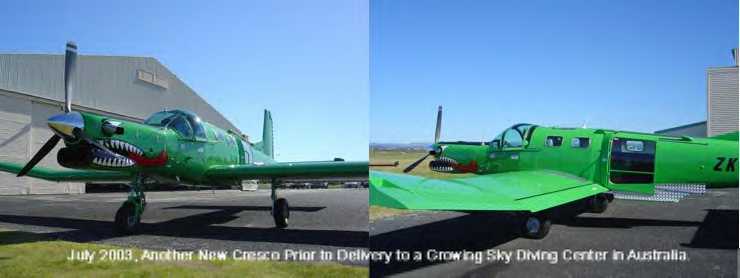
Production was done in New Zealand and a turboprop version was developed and offered. NZ Aerospace also offered a military version which is very attractive because it can operate from short primitive airstrips, is cheap in comparison to others and has a respectable payload/range. I have about the only documentation on the FL-24 turbo military concept. It shows it with rockets, machine guns and one version with six 250 lb bombs and a type of FLIR designator turret. Today the USAF/USN/USMC have to use expensive nation-state war (NSW) F-16, F-18 and even F-15s to loiter over sub-national conflict (SNC) battlefields with JDAM and laser bombs. The FL-24 could easily do this at a cut rate price.
The FU-24 lives on! the turbine-engined PAC 750XL in production todayutilityaircraft.com/heritage.html
Yugoslavia also operates an aircraft similar to the FD-25:
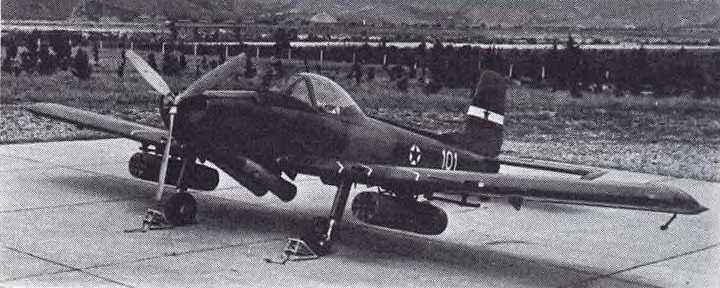
Britten-Norman BN-2B Islander/Defender
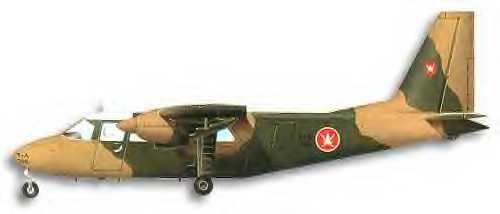
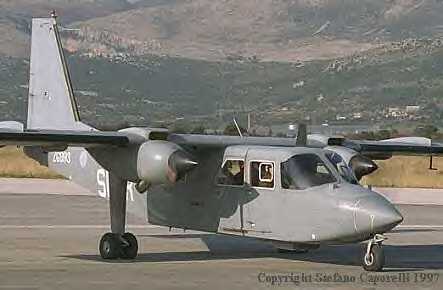
Origin: UK
Type: multi-role military aircraft
Max Speed: 144 kt / 166 mph
Max Range: 2,773 km / 1,723 miles
Dimensions: span 16.15 m / 53 ft 0 in
length 10.86 m / 35 ft 7.75 in
height 4.18 m / 13 ft 8.75 in
Weight: empty 1,823 kg / 4,020 lb
maximum take-off 2,994 kg / 6,600 lb
Powerplant: two 224-kW (300-hp) Avco Lycoming IO-5400K1 B5 flat-six piston engines
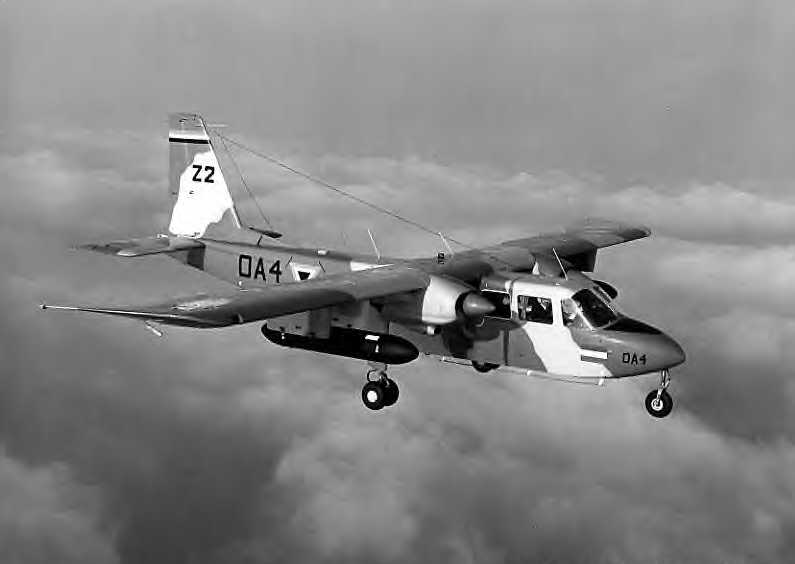
Armament: provision for 907 kg (2,000 Ib) of disposable stores, including 7.62-mm (0.3-in) machine gun pods, 113- and 227-kg (250- and 150-lbs.) bombs, anti-personnel grenades, flares, rocket-launcher pods, wire-guided missiles and drop tanks, carried on four external hardpoints
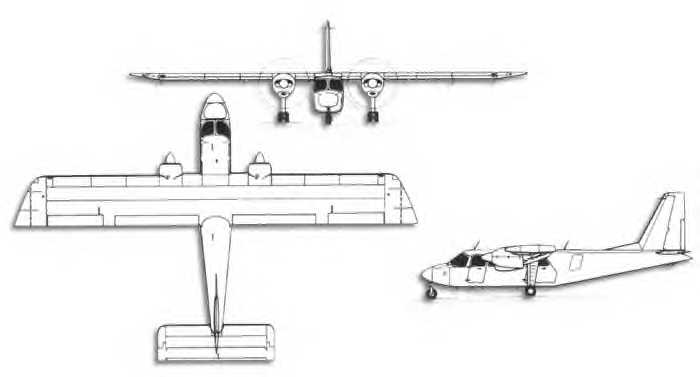
Operators: Belgium, Belize, Botswana, Congo, Democratic Republic of the, Cyprus, Egypt, Ghana, Guyana, Haiti, Hong Kong, India, Iraq, Israel, Jamaica, Lesotho, Liberia, Malawi, Malta, Mauritania, Mauritius, Mexico, Oman, Panama, Philippines, Qatar, Rwanda, Seychelles, Somalia, Sudan, Suriname, United Arab Emirates, Venezuela, Zambia, Zimbabwe
In fact, the RAF reactivated a Britten-Norman Defender for what many believe is a night time armed reconn role to save the expense of the Jaguars they are using. It is most likely fitted with a FLIR designator turret and Hellfire missiles. It was seen at an air base near Basra. (I will also scan the material on the FL-24 and the Defender and give links for you)
Also in this discussion have you brought up the Italian Fiat G.91 which was designed and built to a USAF requirement based on the Korean War? And in the mid 1980s the Italian firm Caproni offered an aircraft based on a powered glider called the C22J Vizzola. Ithad two small micro-jets and with its construction and engines the firm claimed it had extremely low IR and radar signatures. They tested launching it with boost rockets from the back of a truck (ie with its glider heritage runway requirements was less than 300 feet). It can loiter for long periods of time by just blipping its jet engine and gliding. Its only weakness is its payload. Maybe 4 x Hellfires or 12 x 2.75 inch rockets but no bombs.
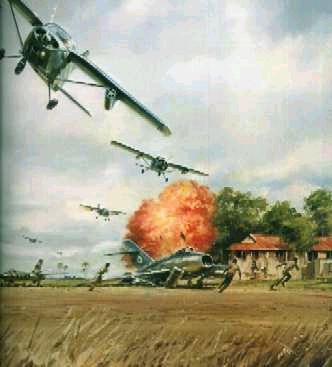
Finally, the whole concept was shown in combat in Nigeria during its civil war over the Ibos in Biafra.
A Swedish count bought some civilian MFI-9B Minicons and fitted them with two 68mm rocket pods. These 12 some aircraft were probably the cheapest air strike aircraft in history destroying Mig-17s and even IL-28 Beagle bombers in surprise raids and basically shutting down the oil pumping operations. For less than a 100,000 dollars the Biafrians inflicted damage in the millions!!!!
Today, the Iranians have bought the vastly superior MFI-17 from Pakistan with the same guerrilla ideas in mind. If you want for your webpage I can scan a great article with photos and provide links on the MFI-9s in Biafra."
Private Murphy's View
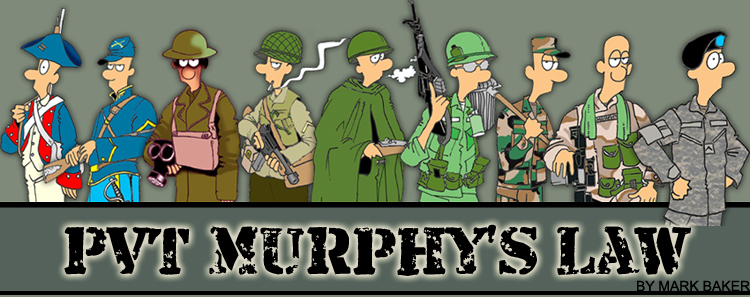
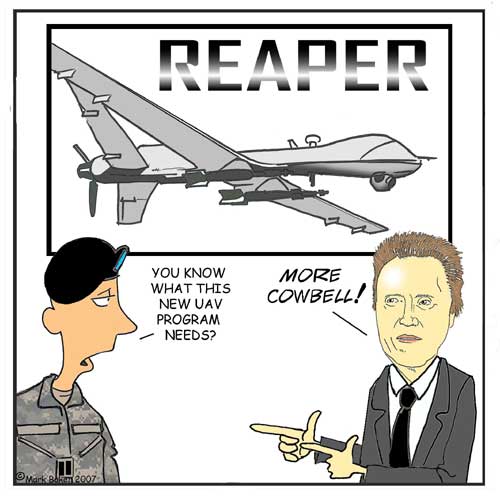
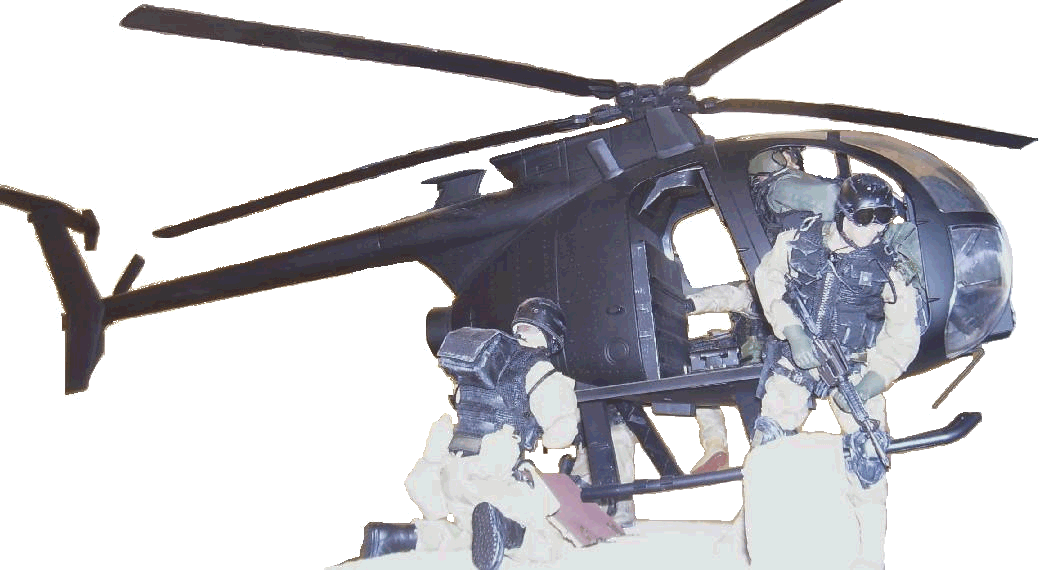
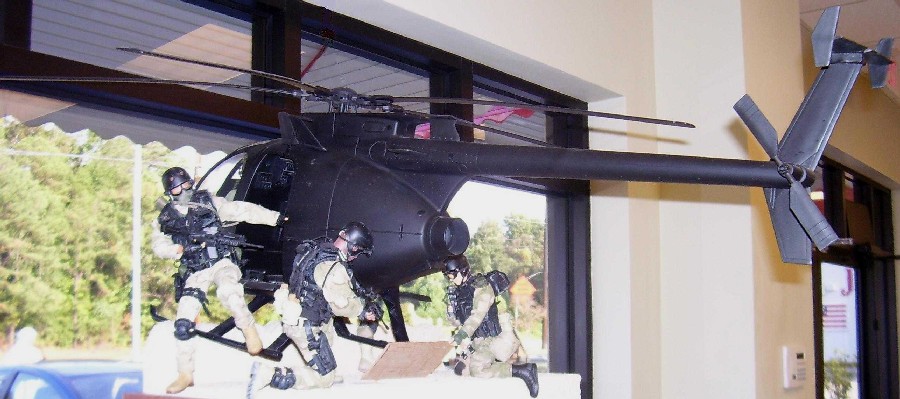
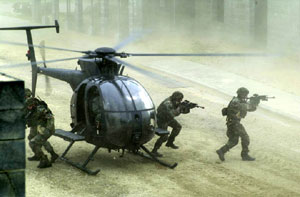

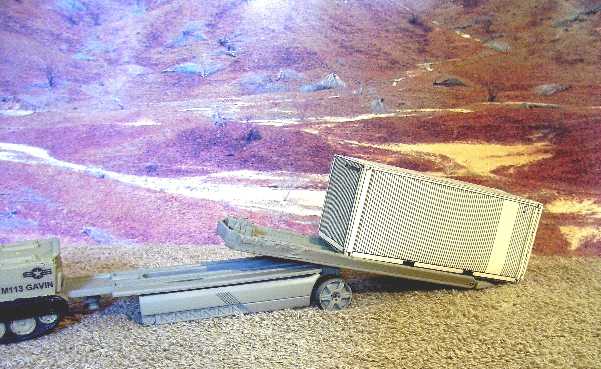
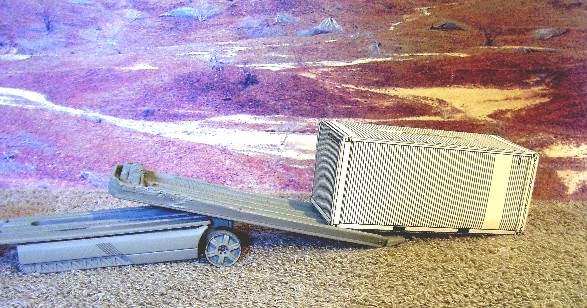
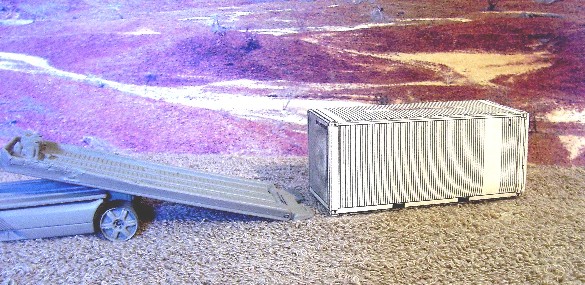
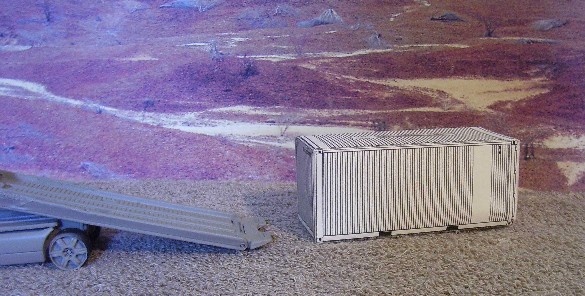
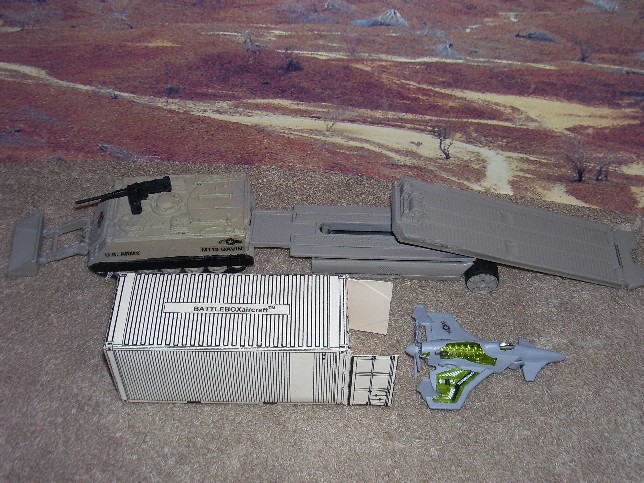
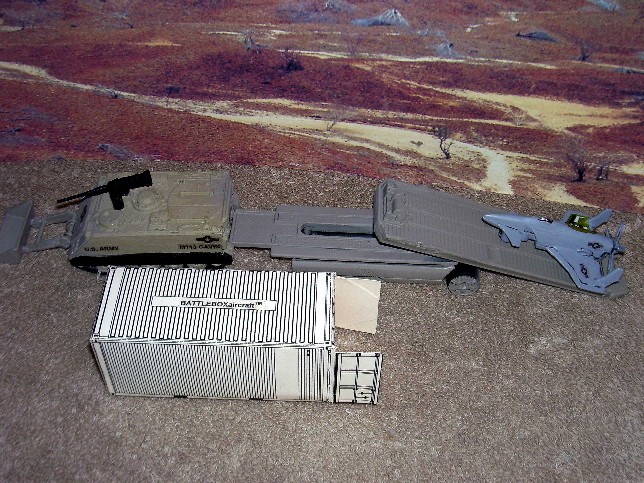
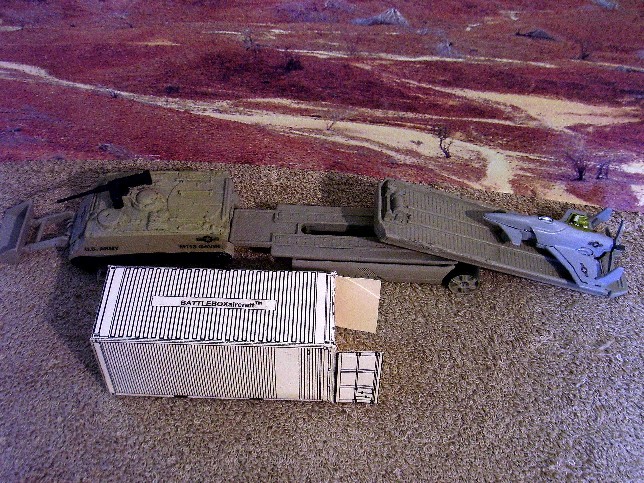
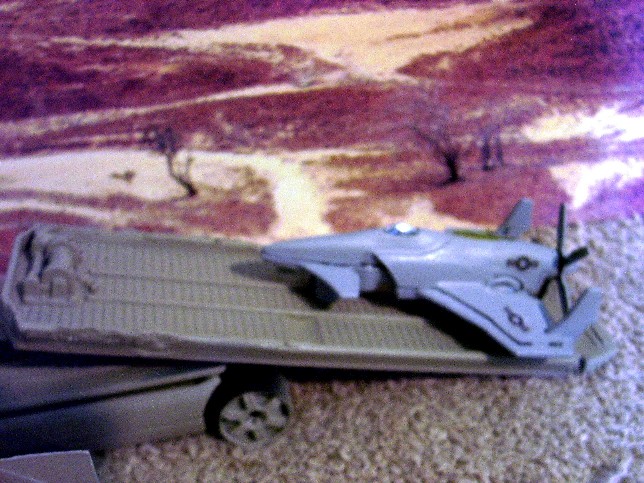
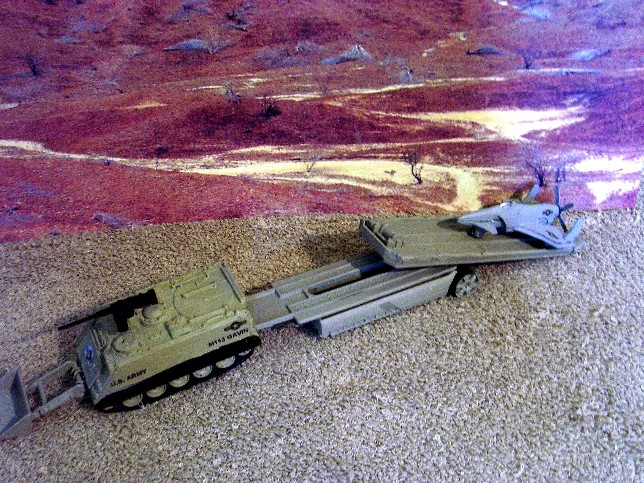
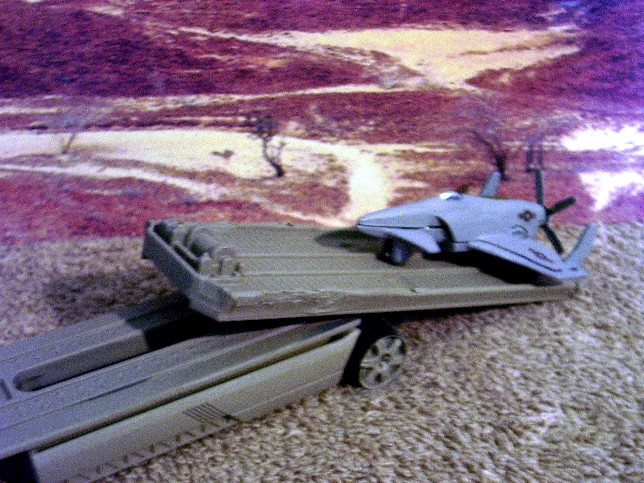
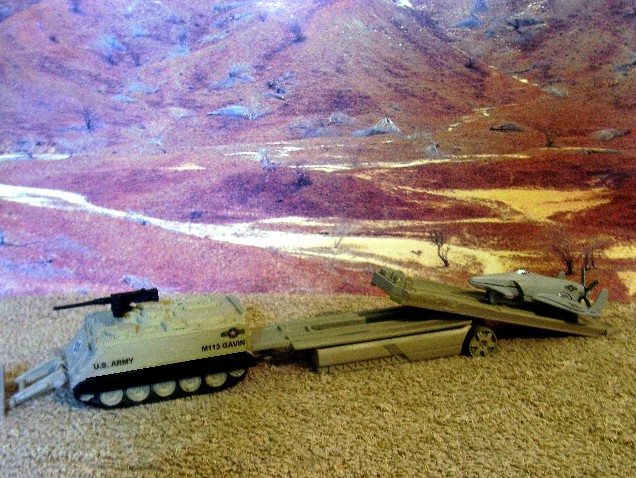
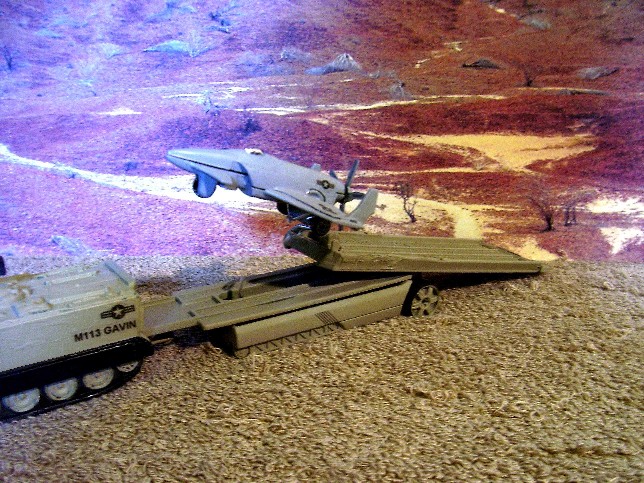
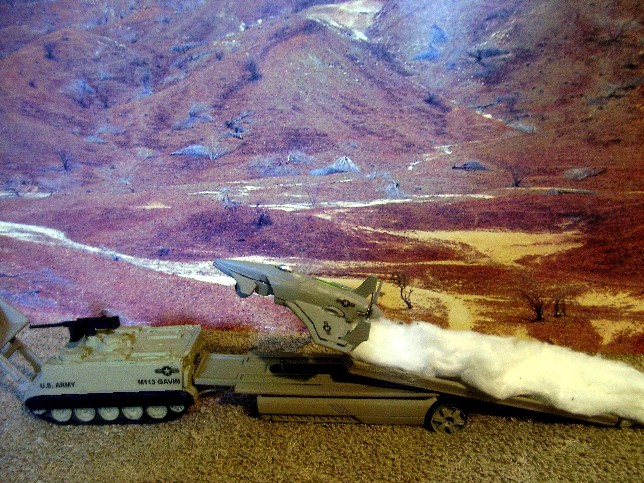
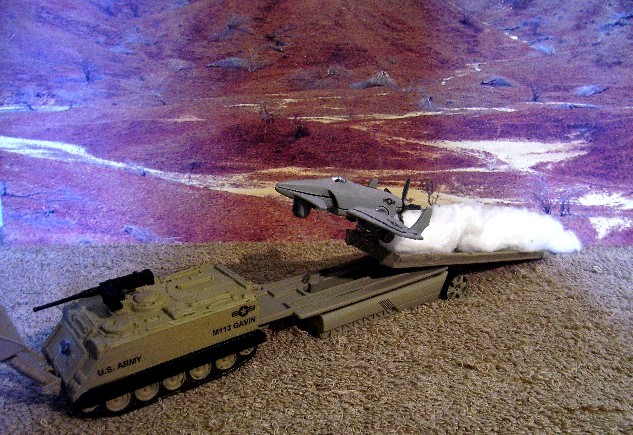

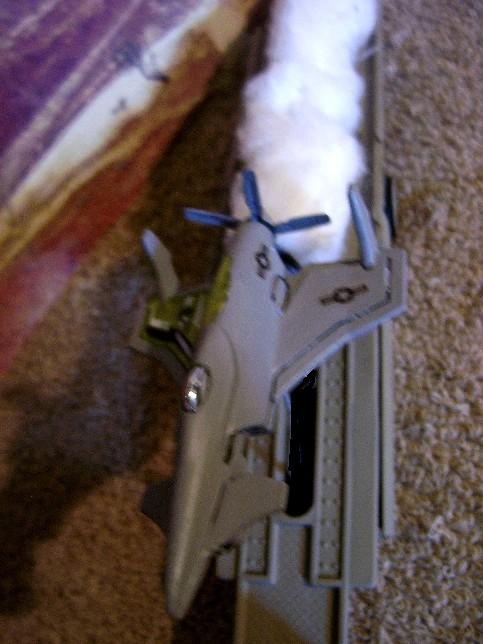
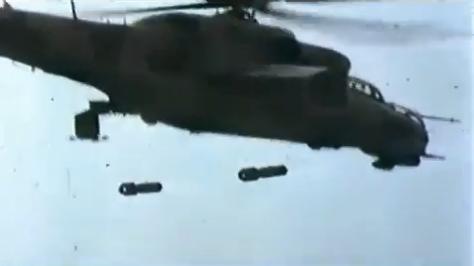
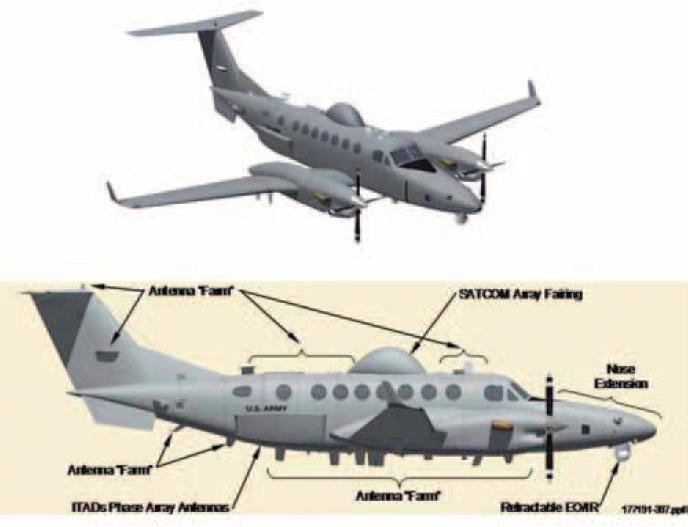
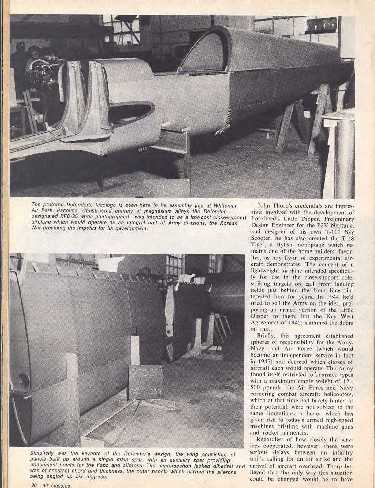
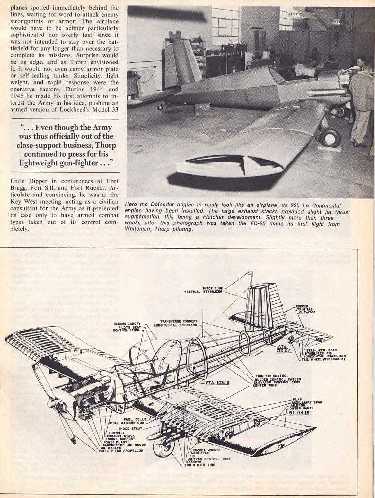
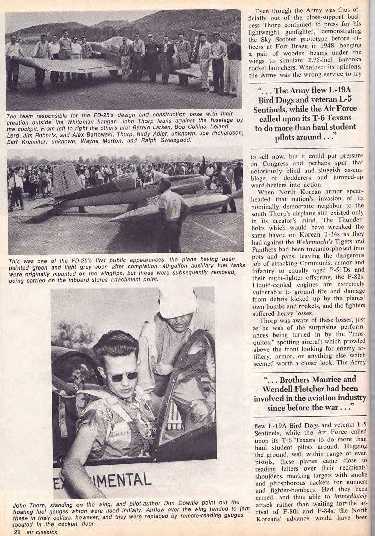
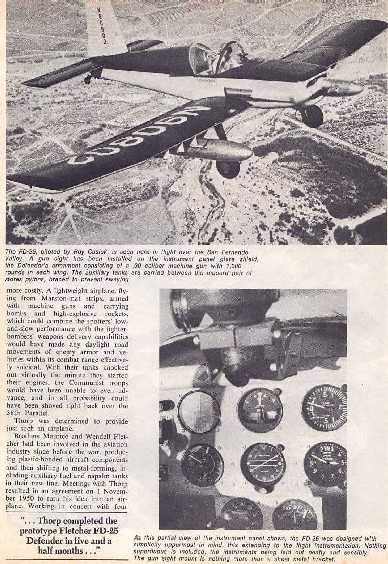
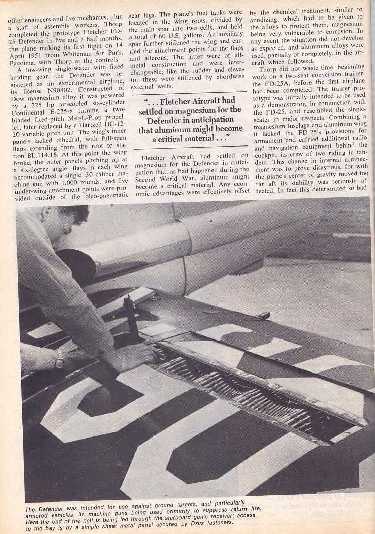
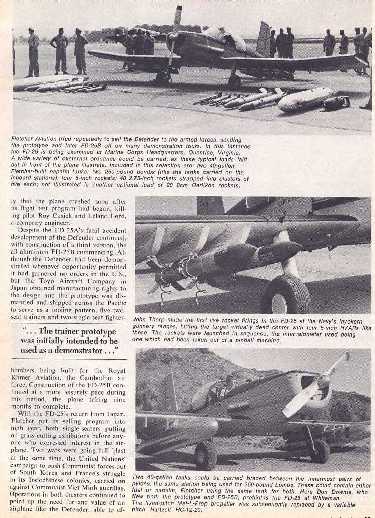
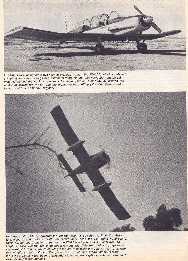
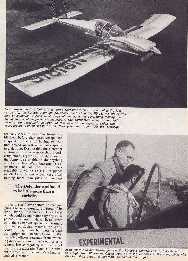
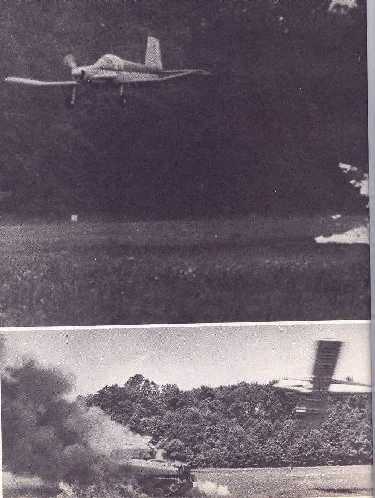
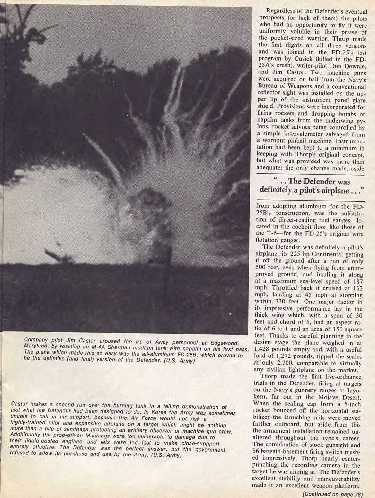
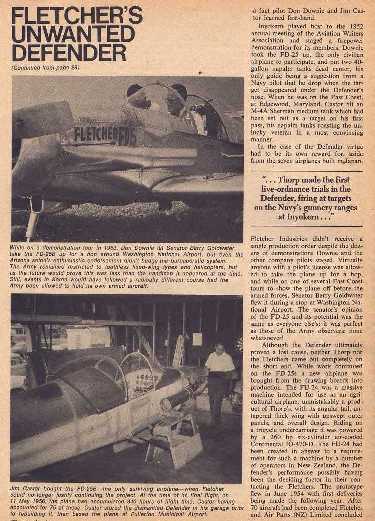
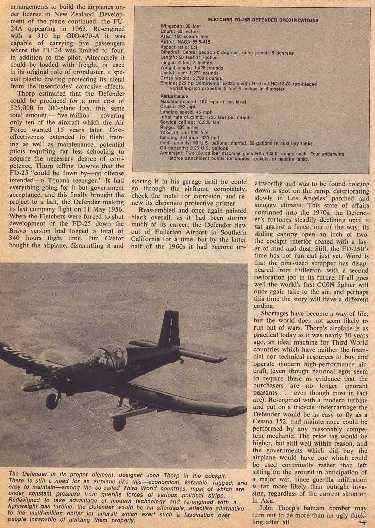
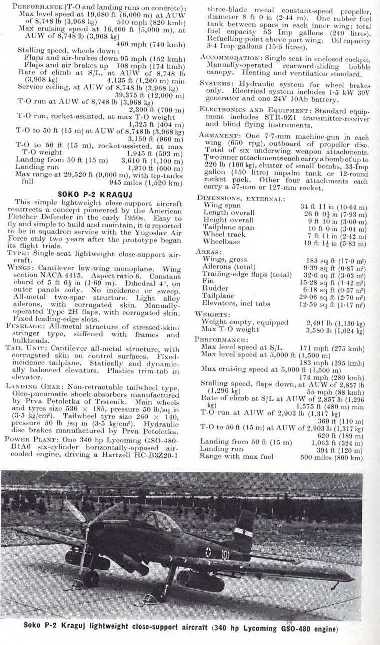
 Return to AES
Return to AES